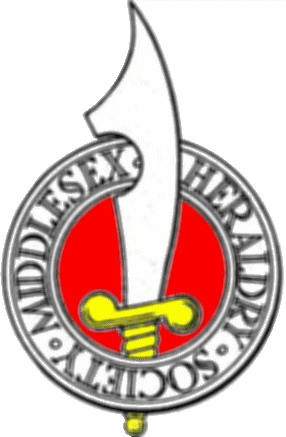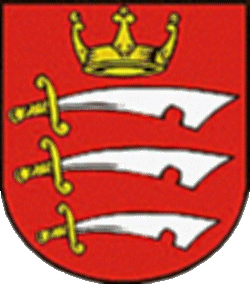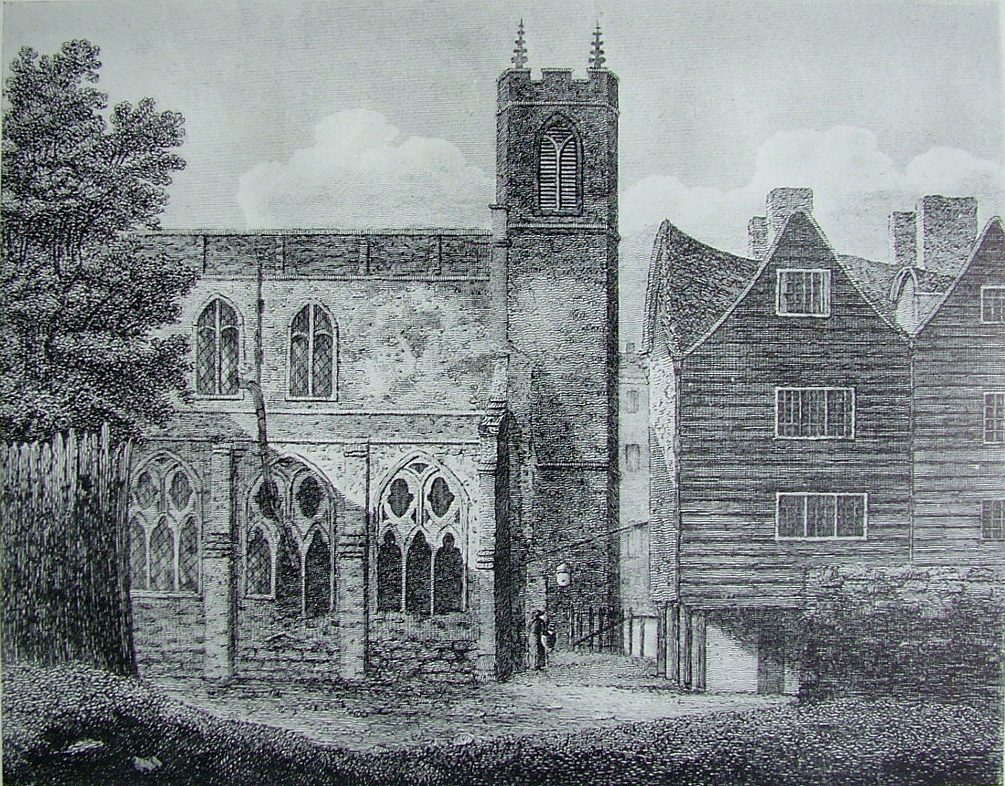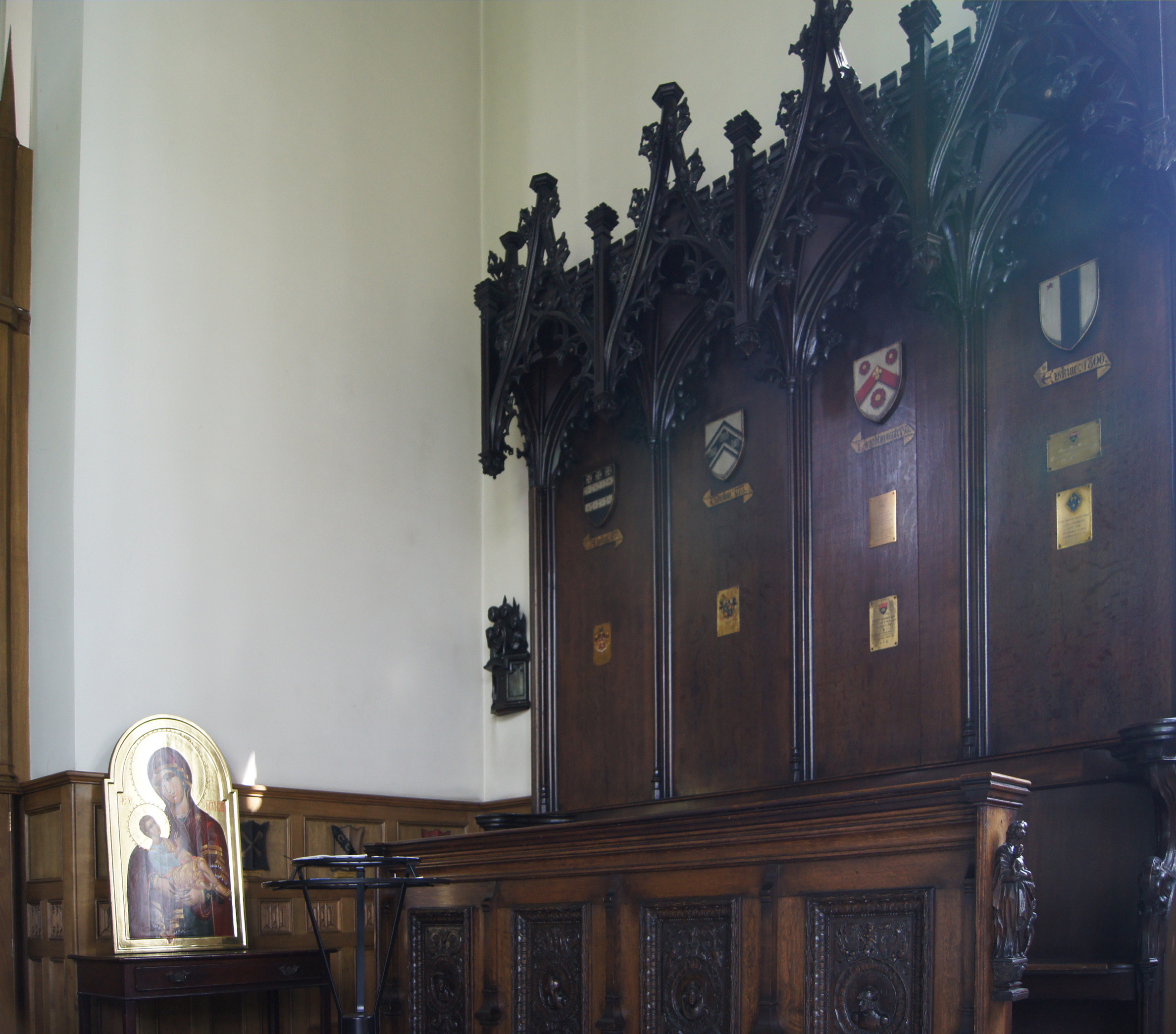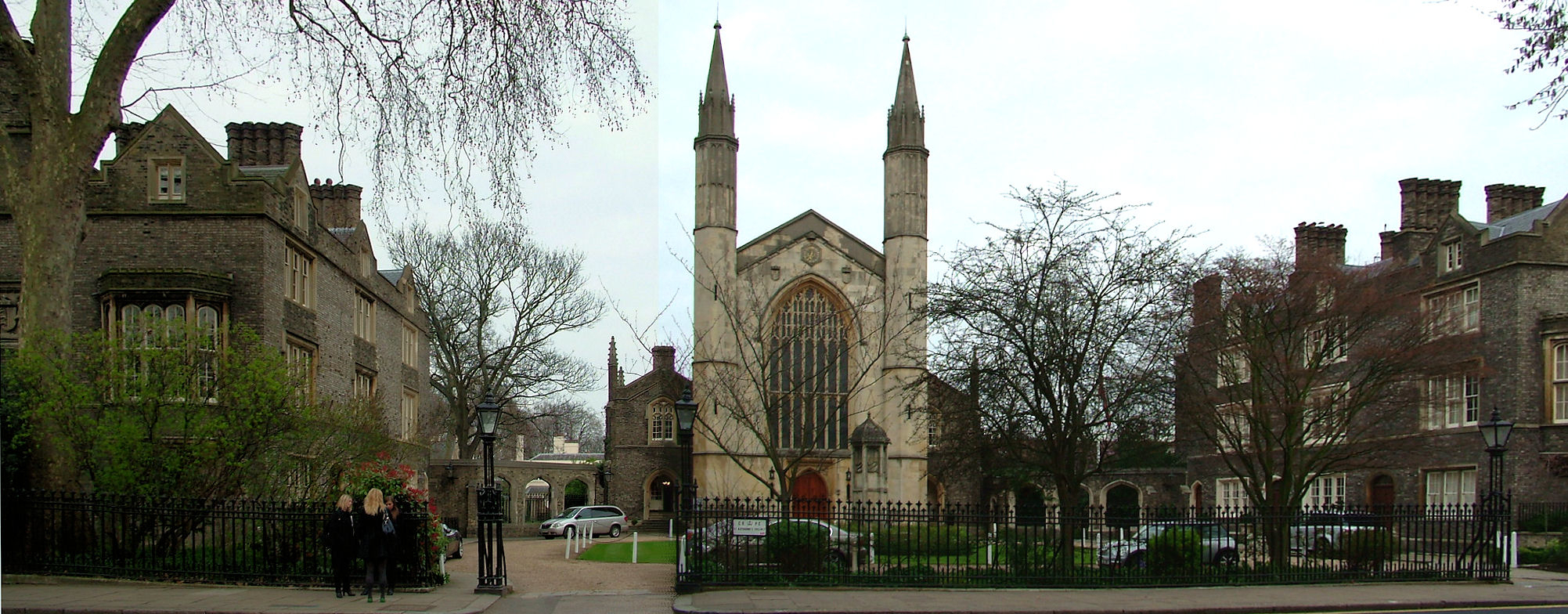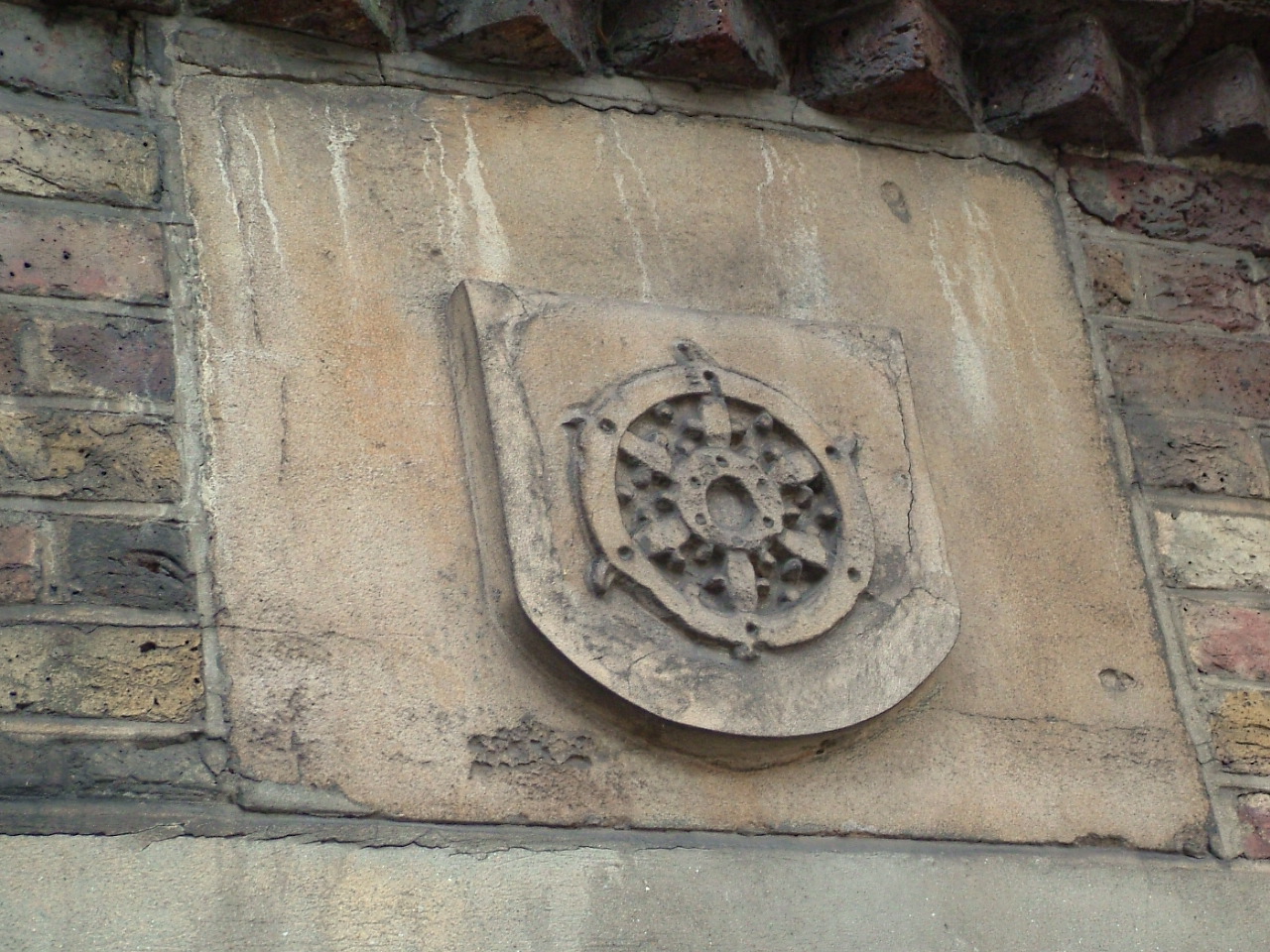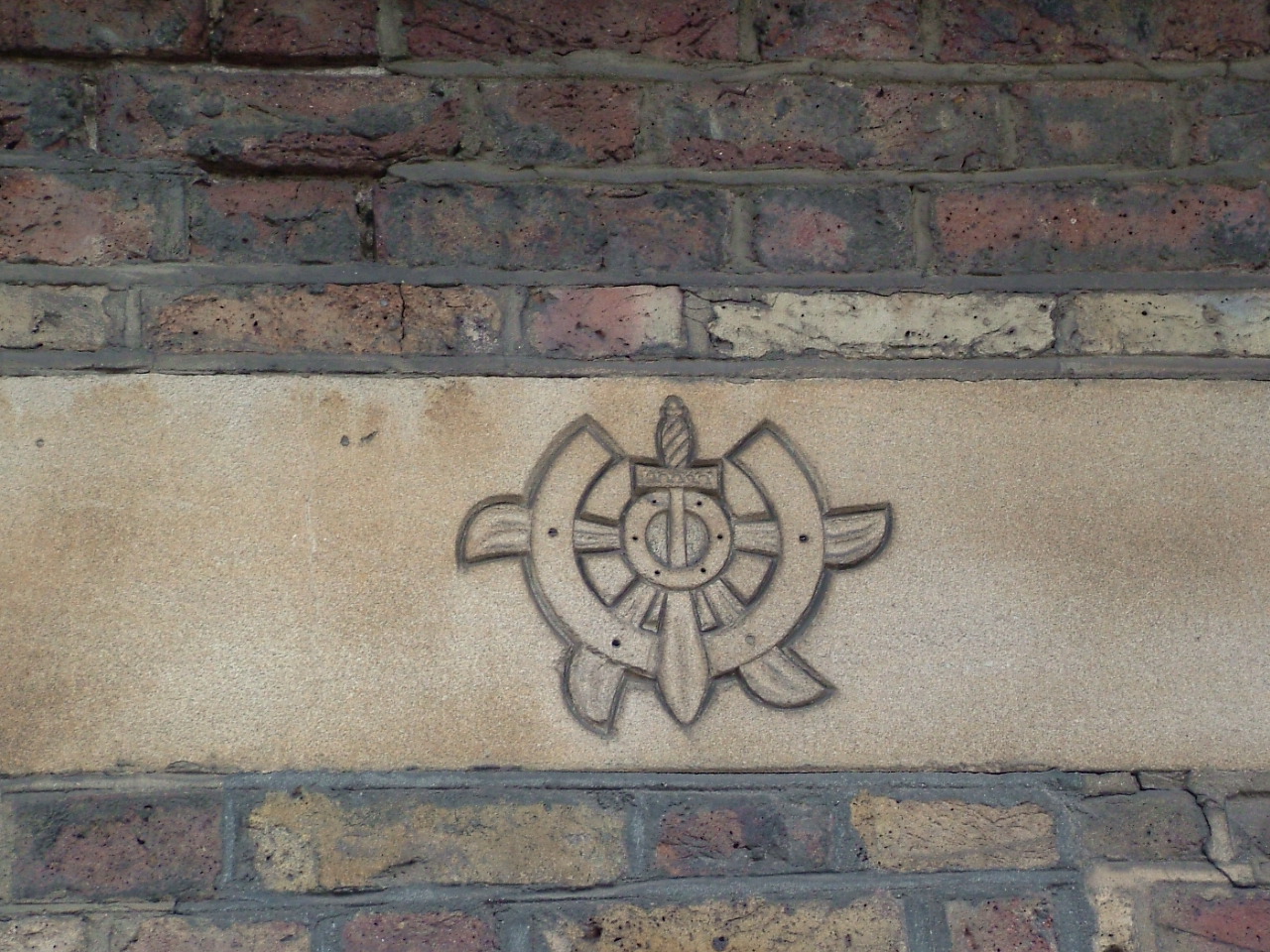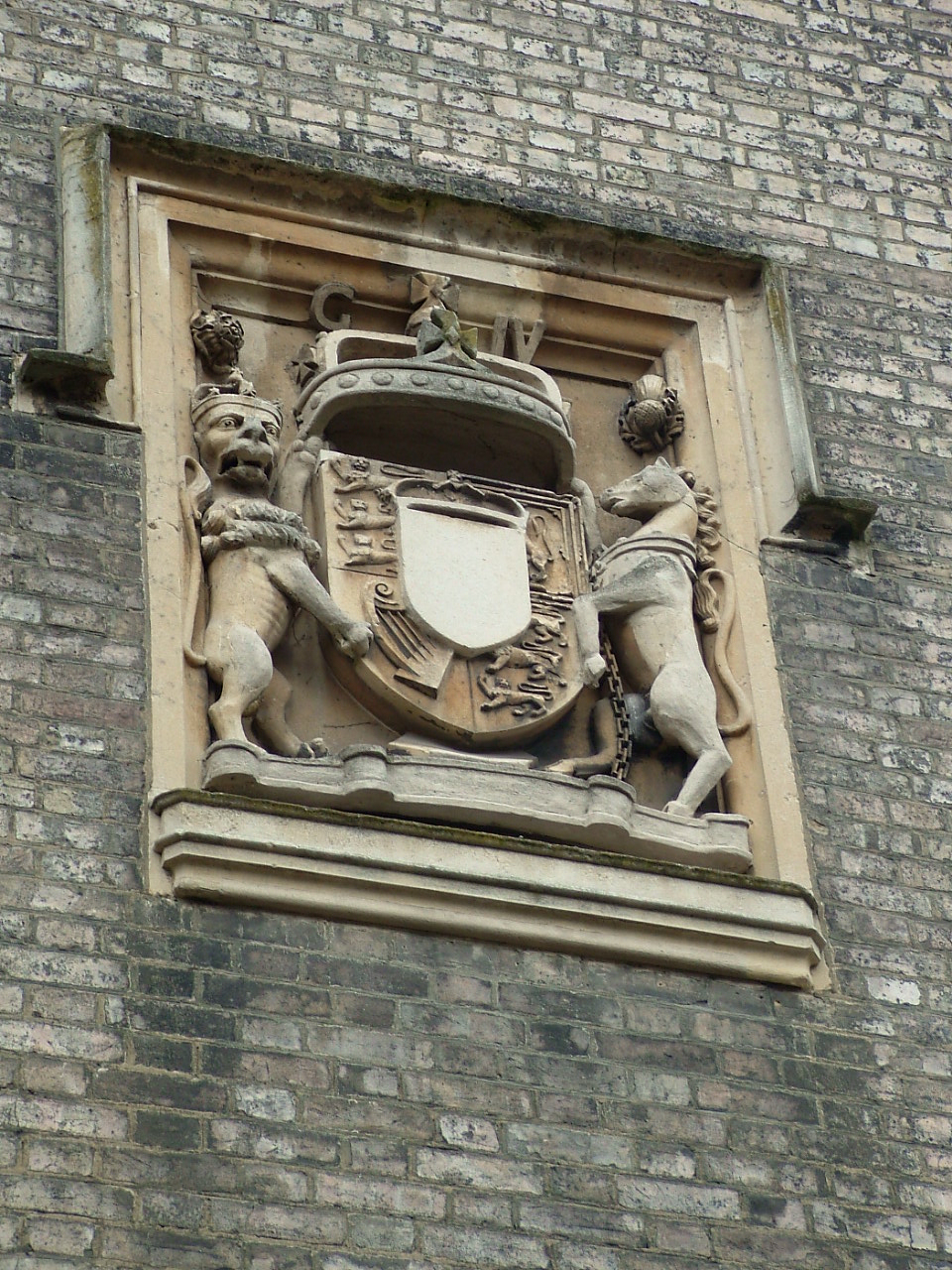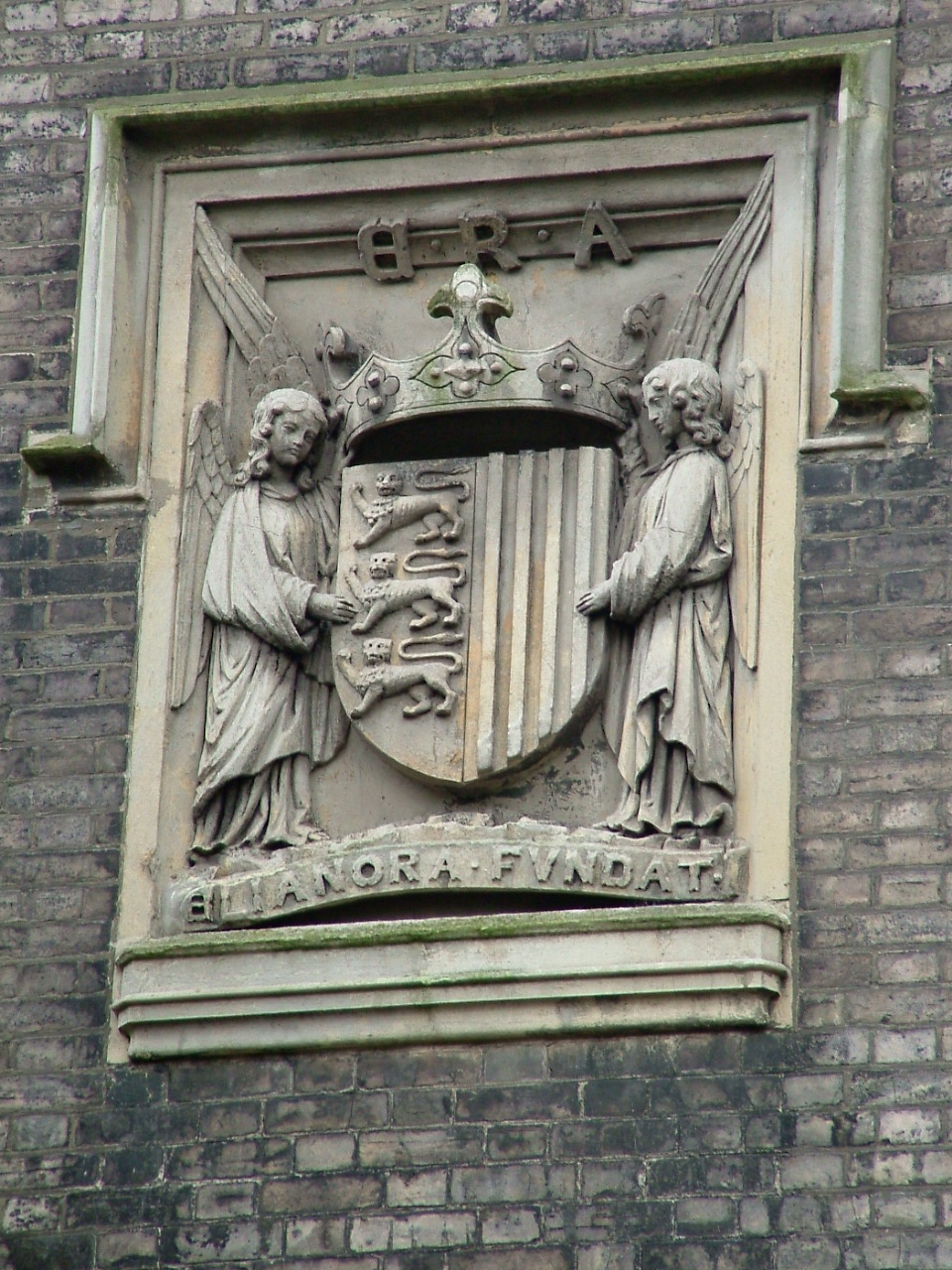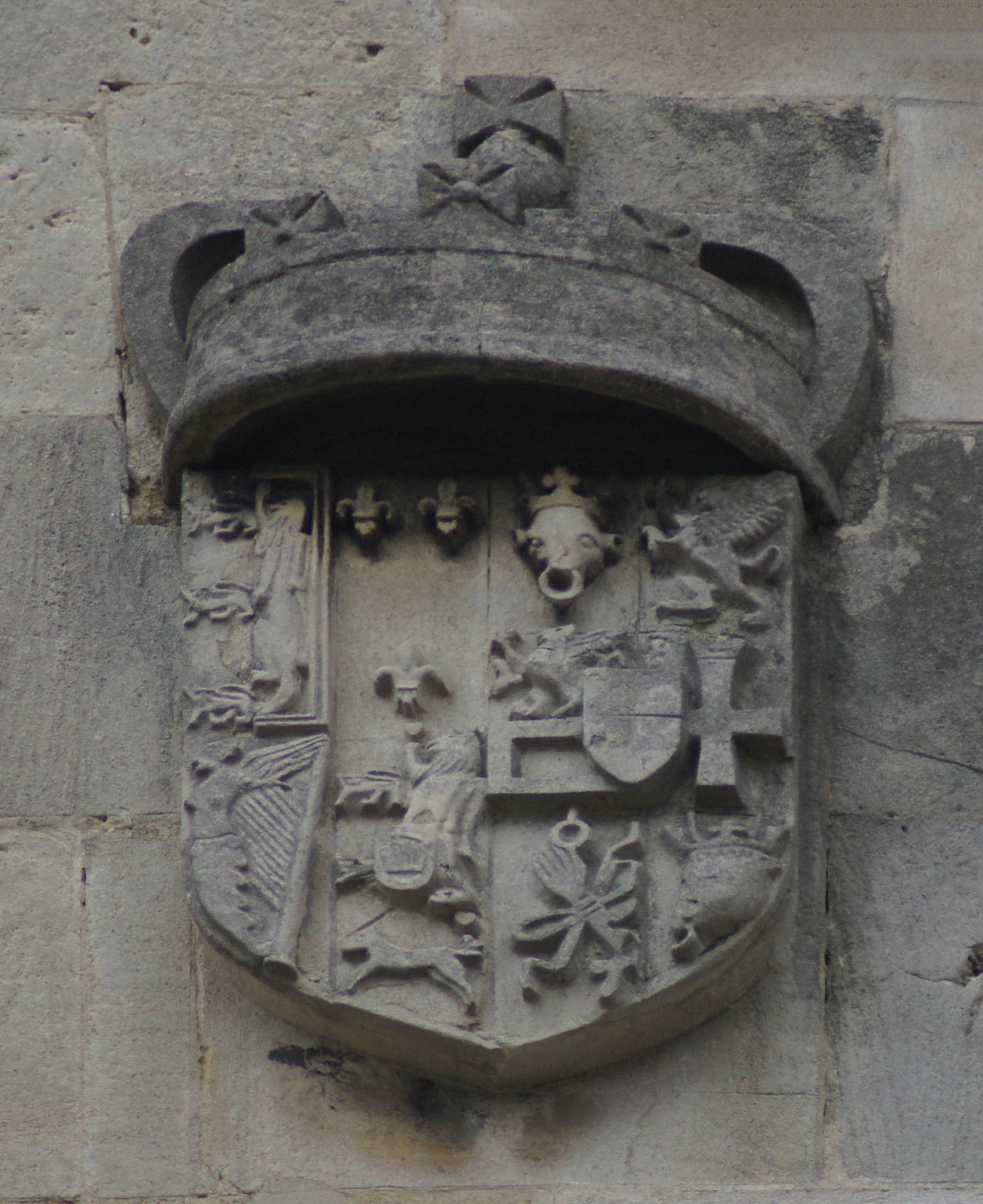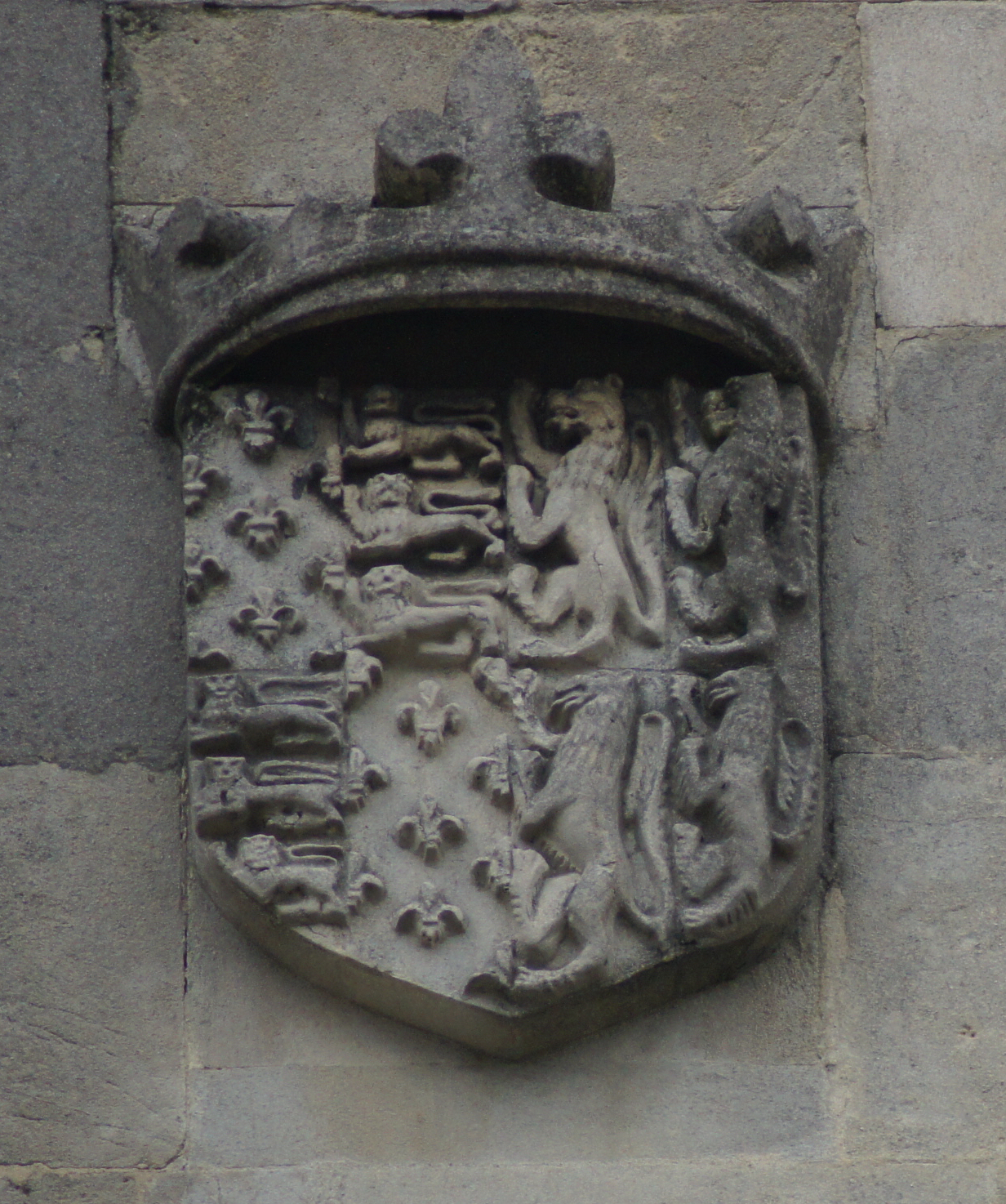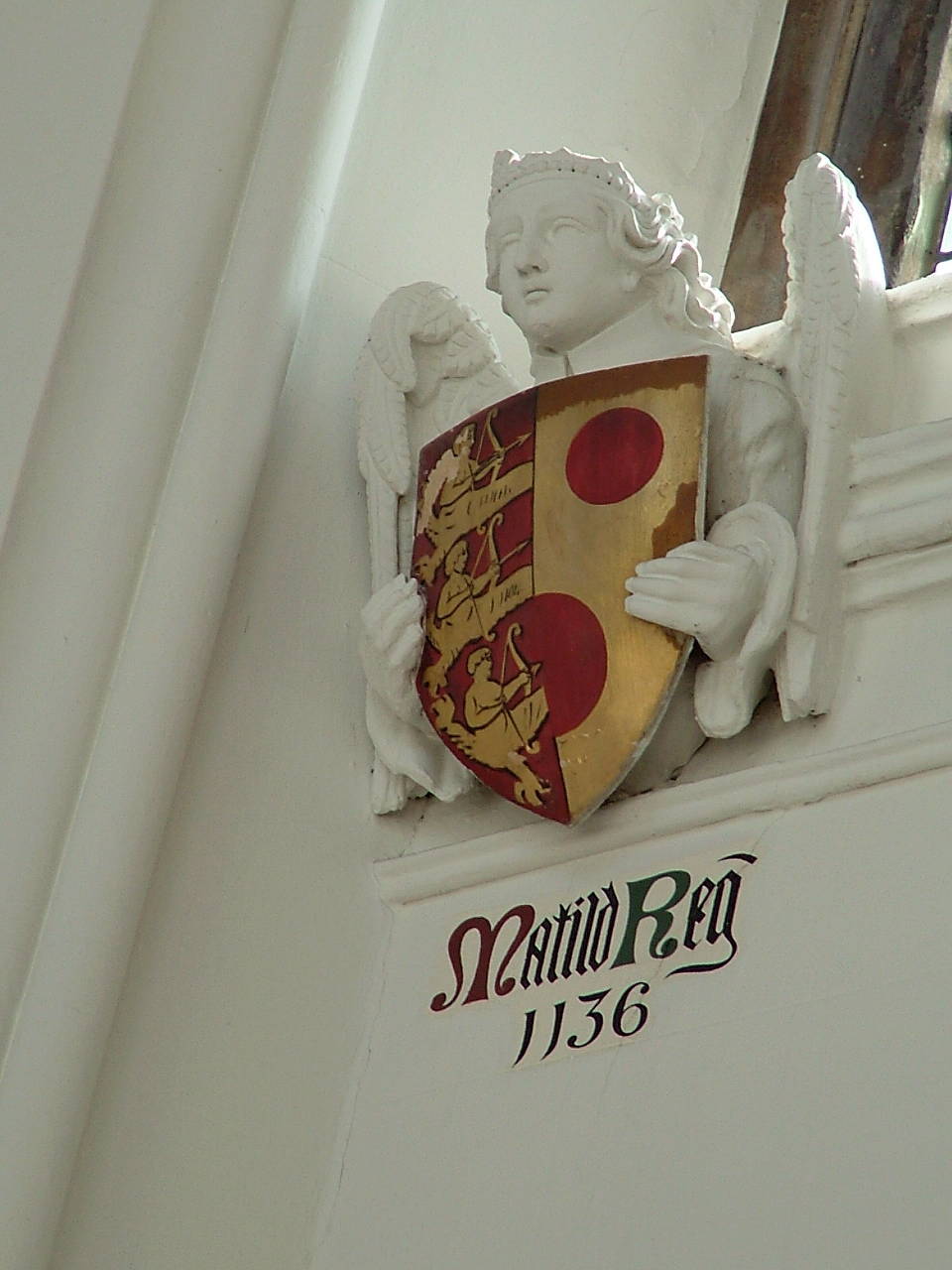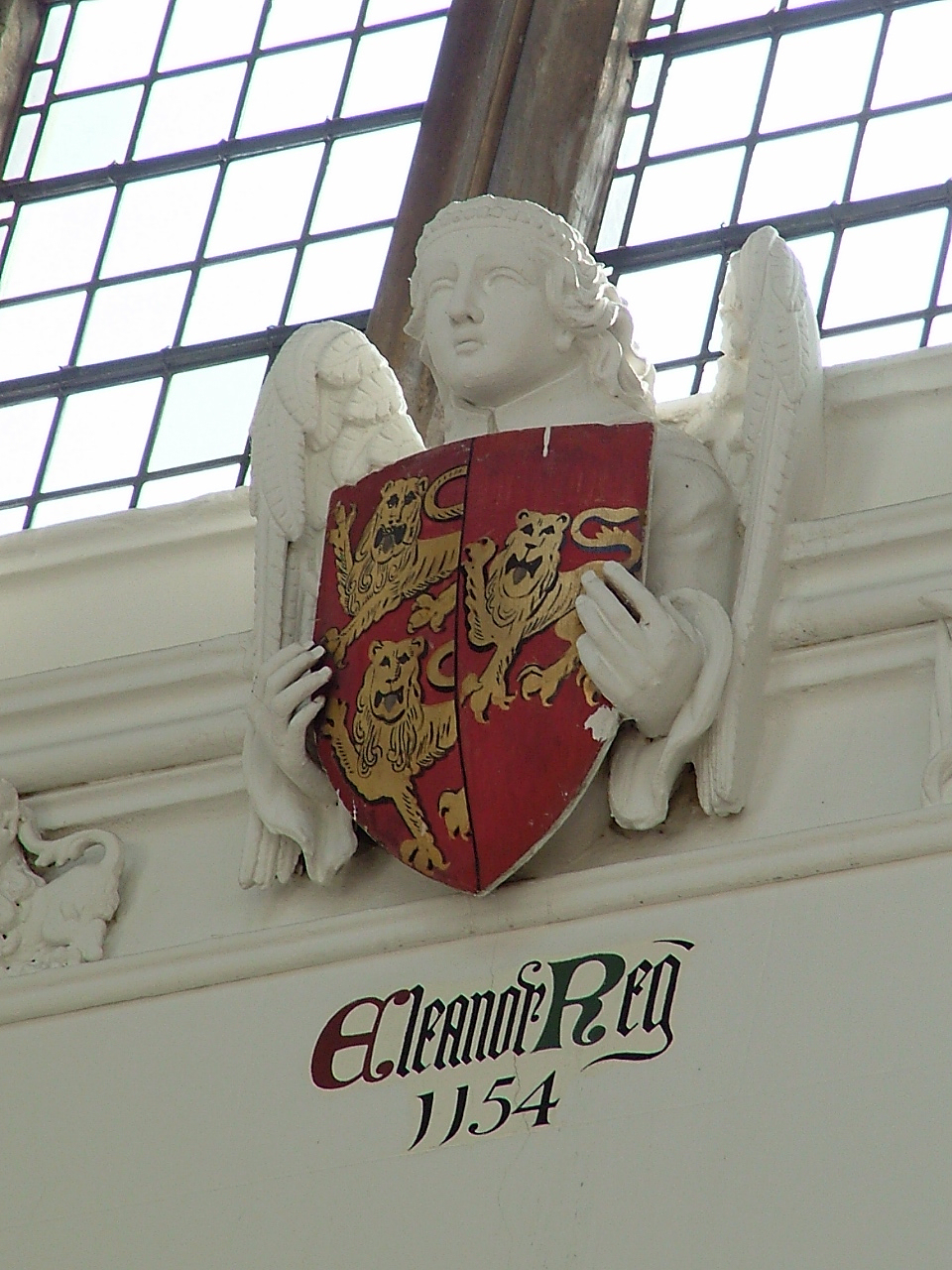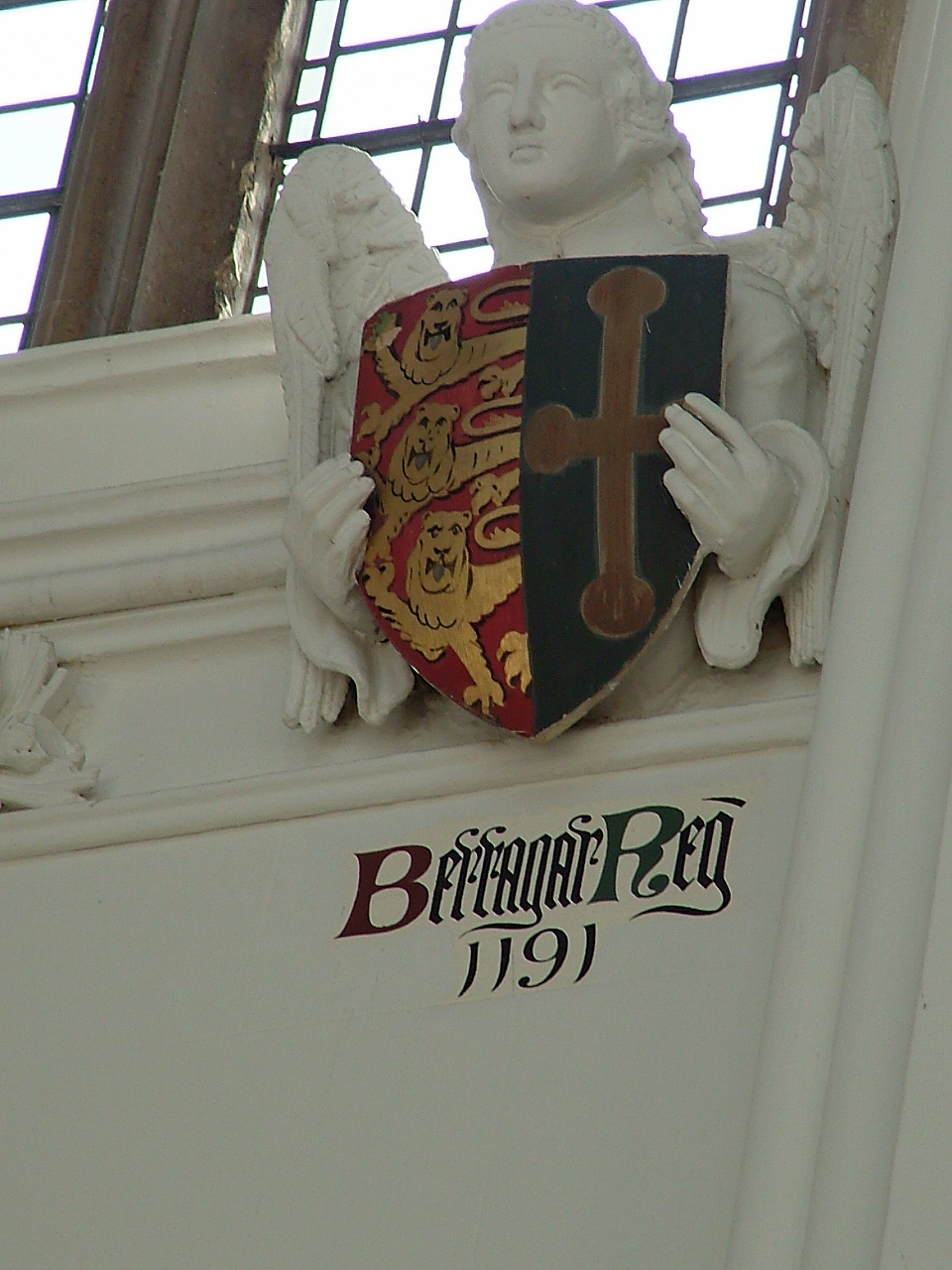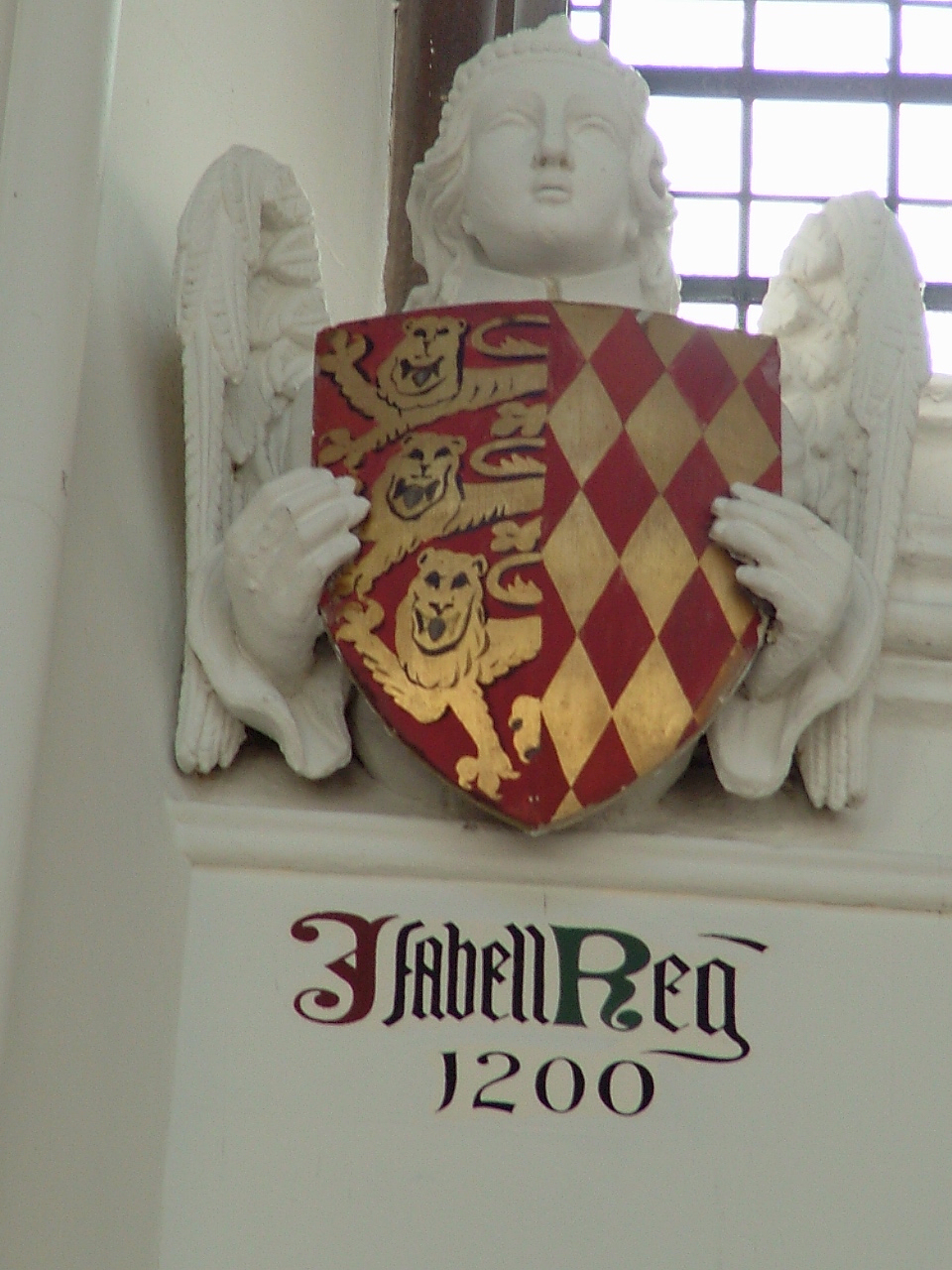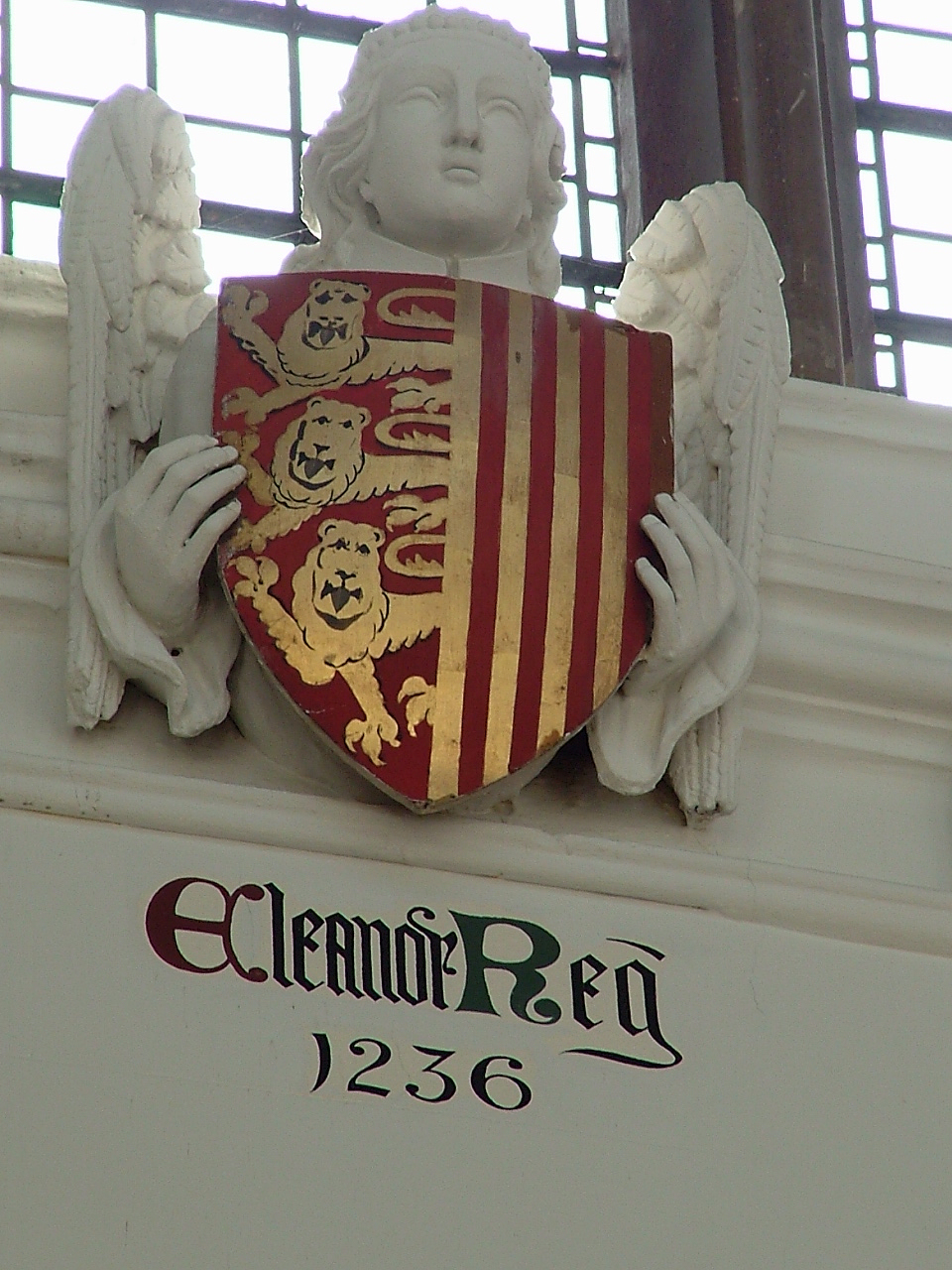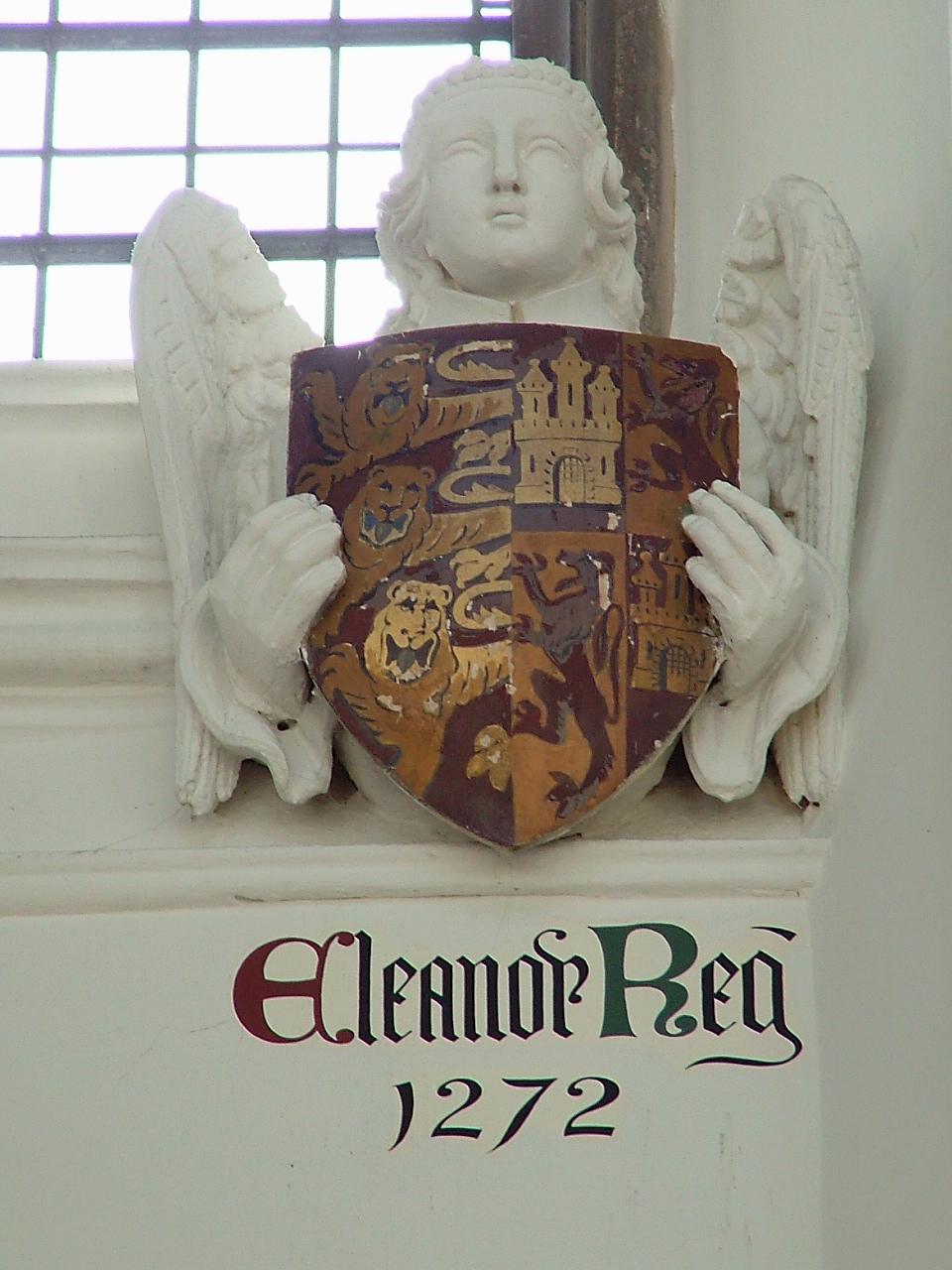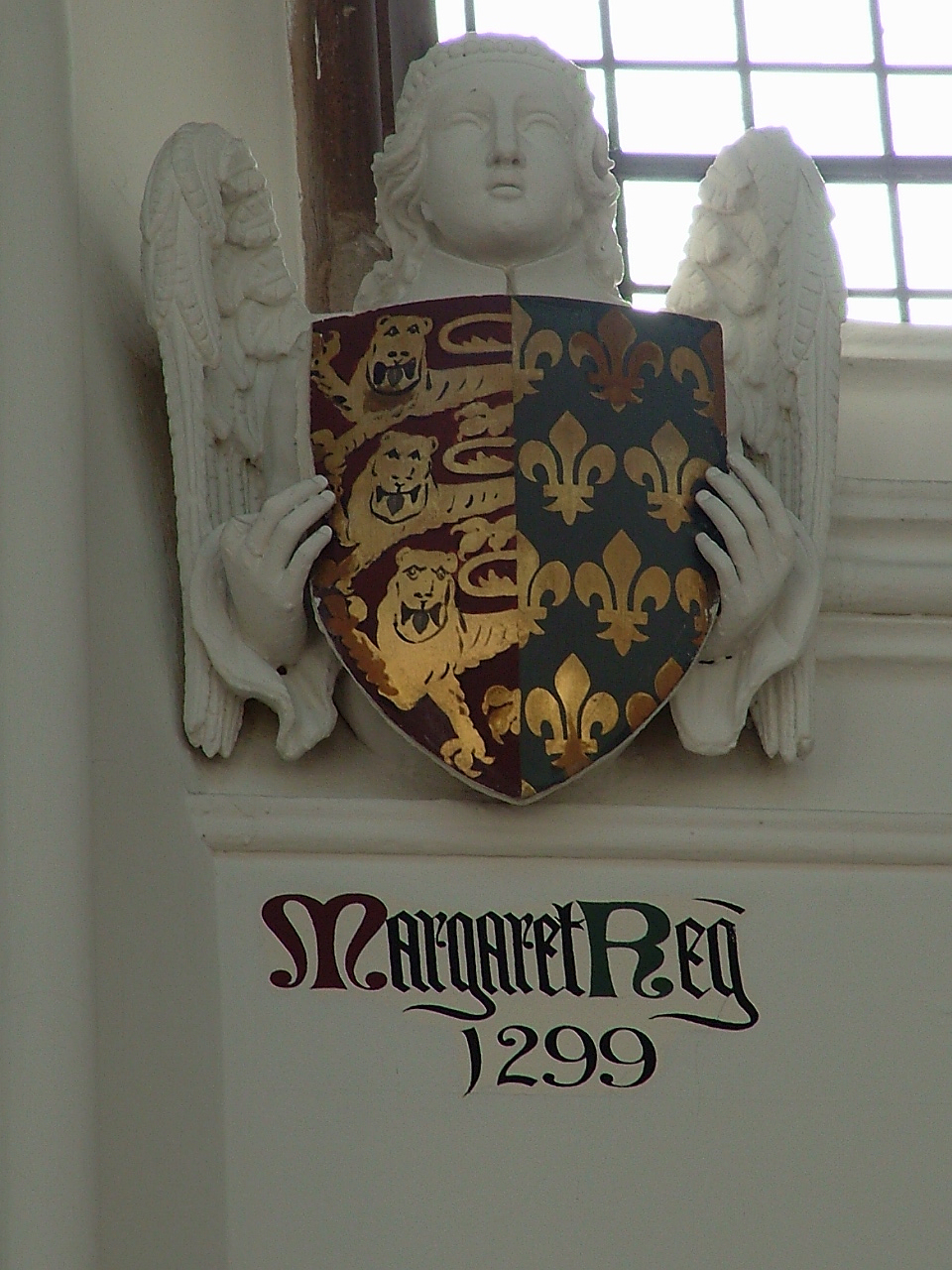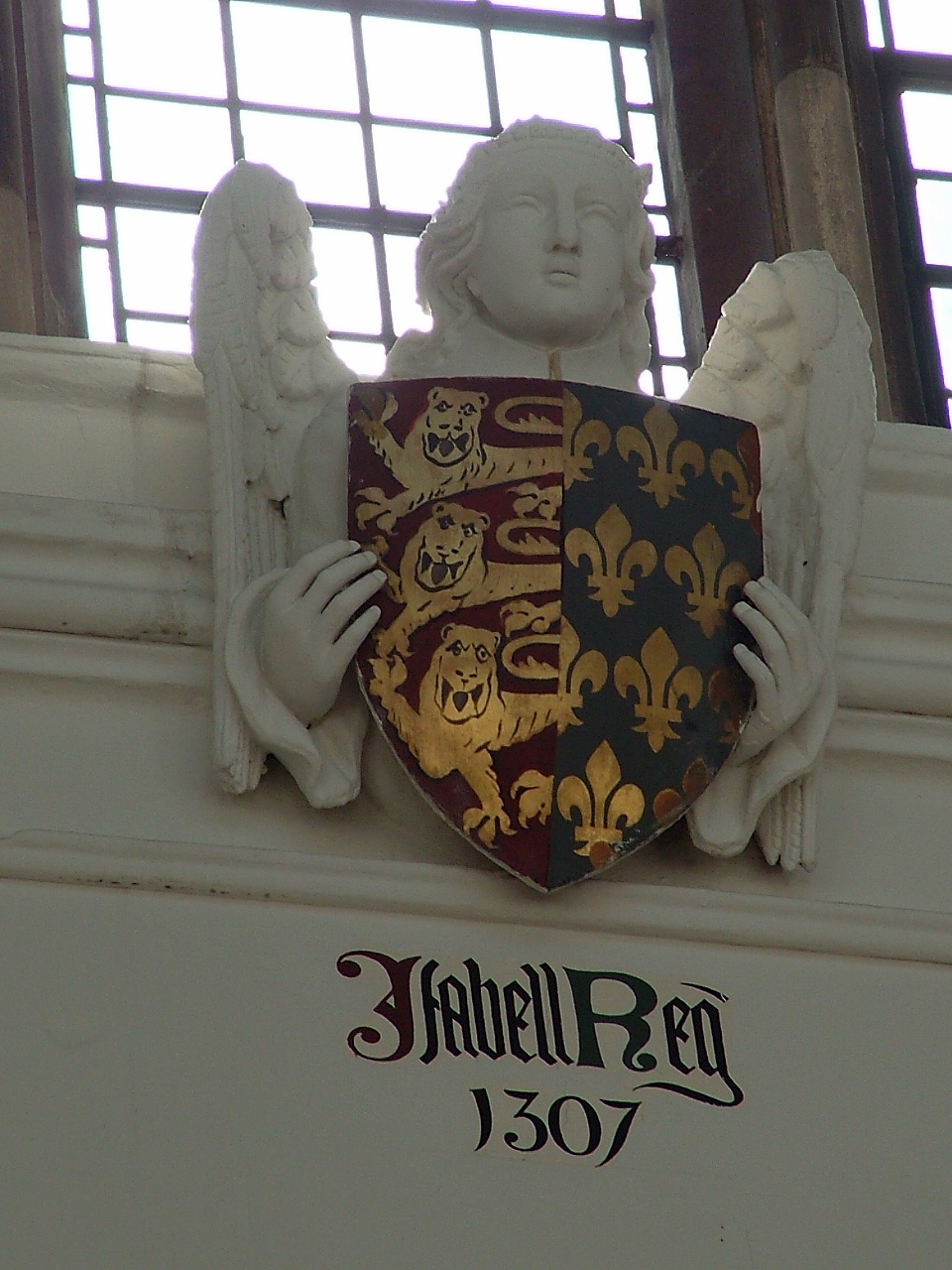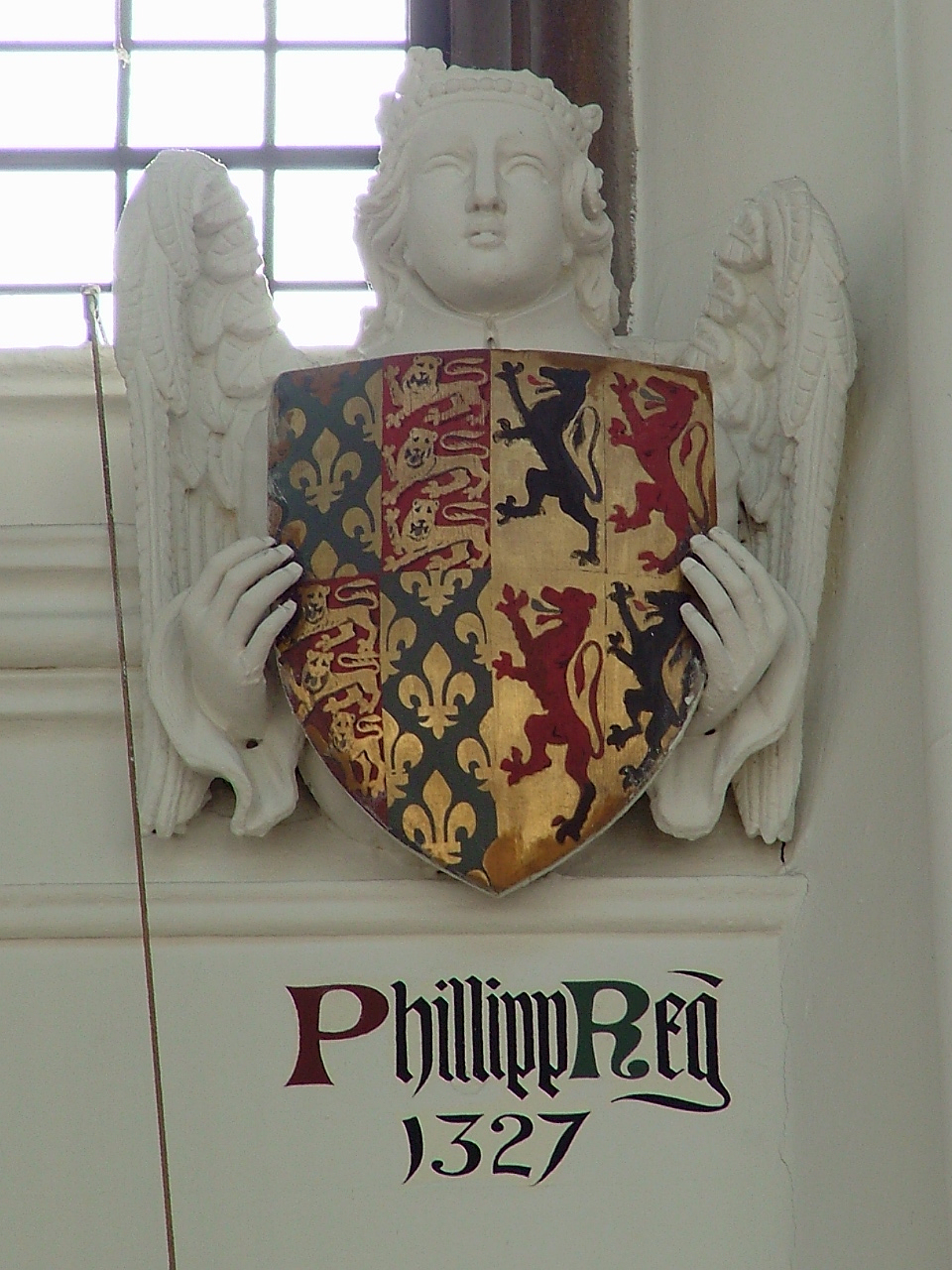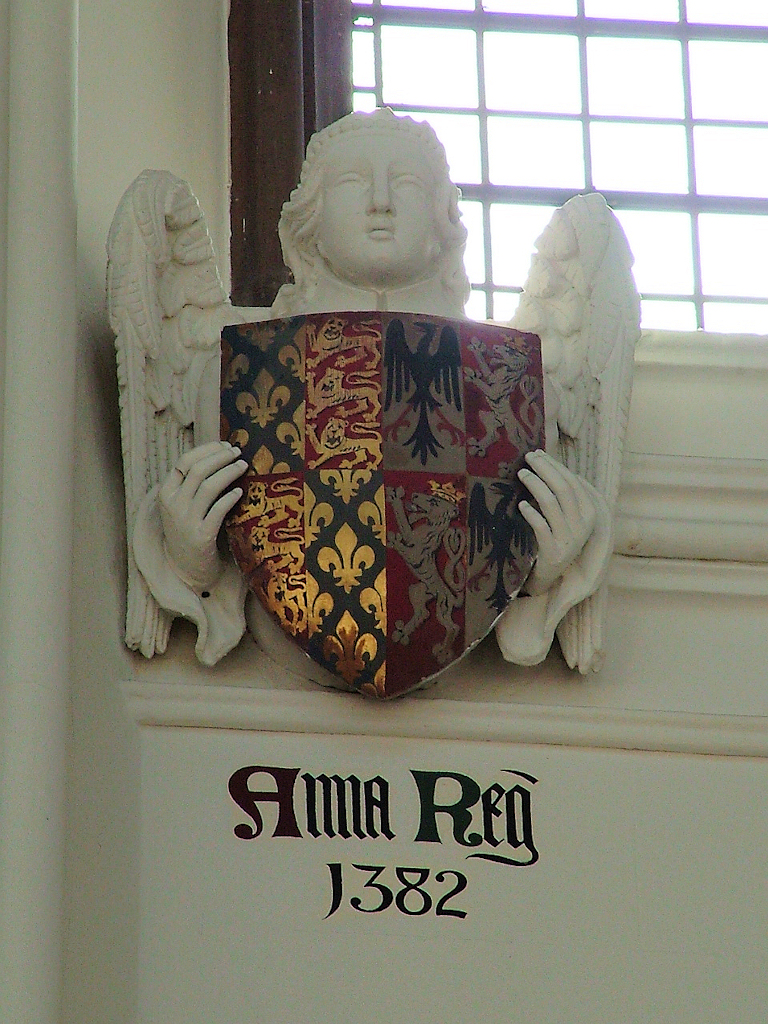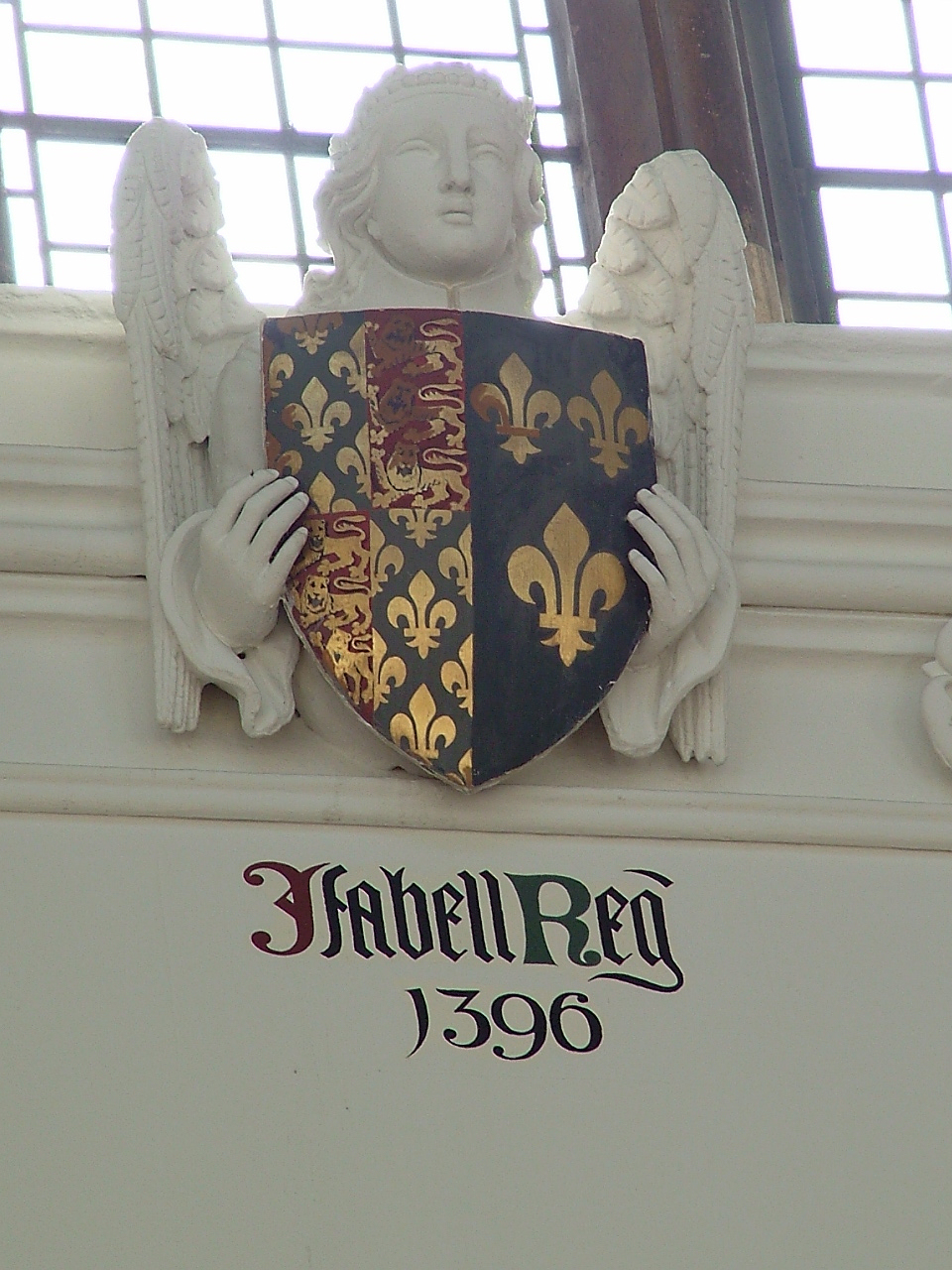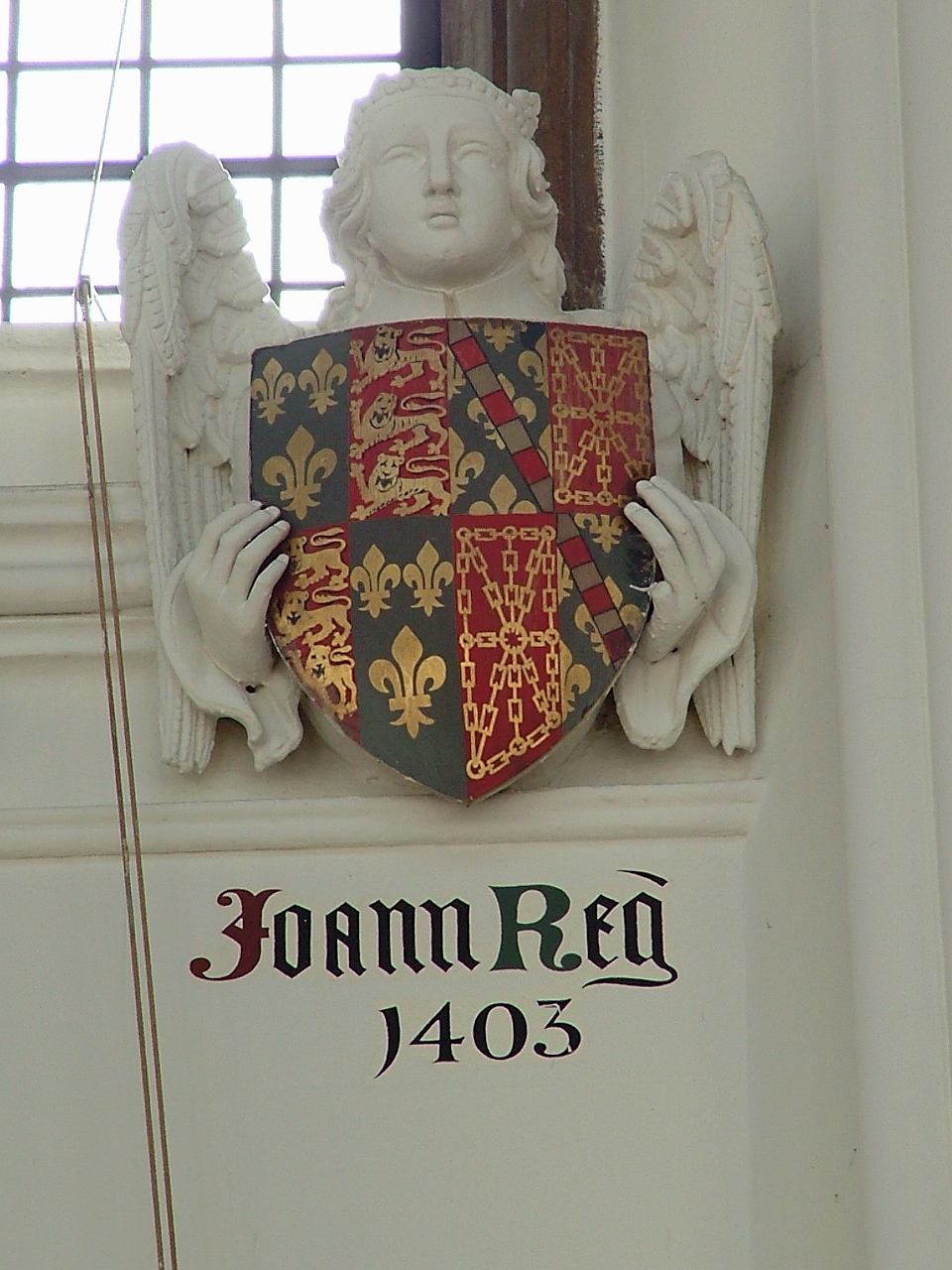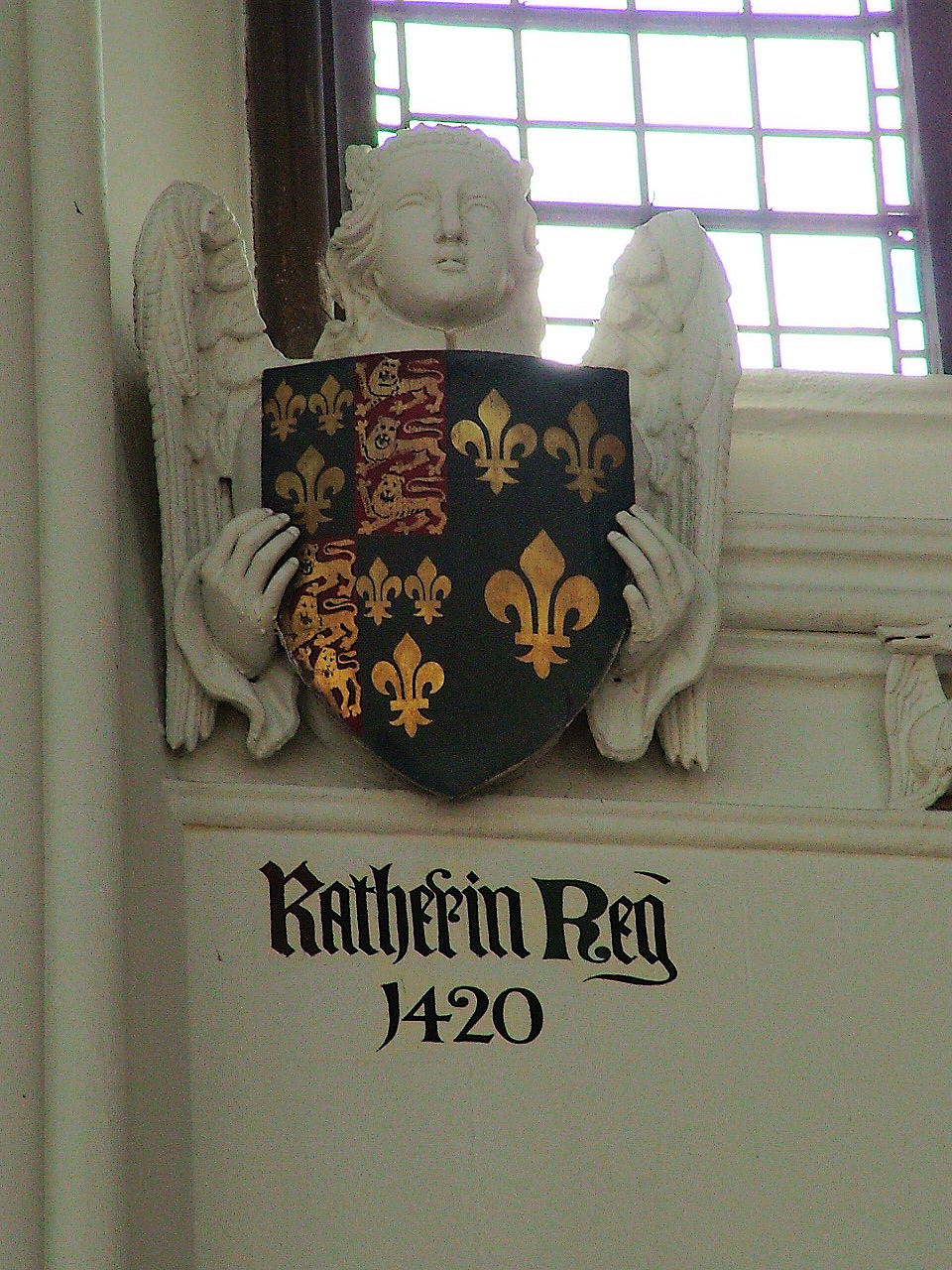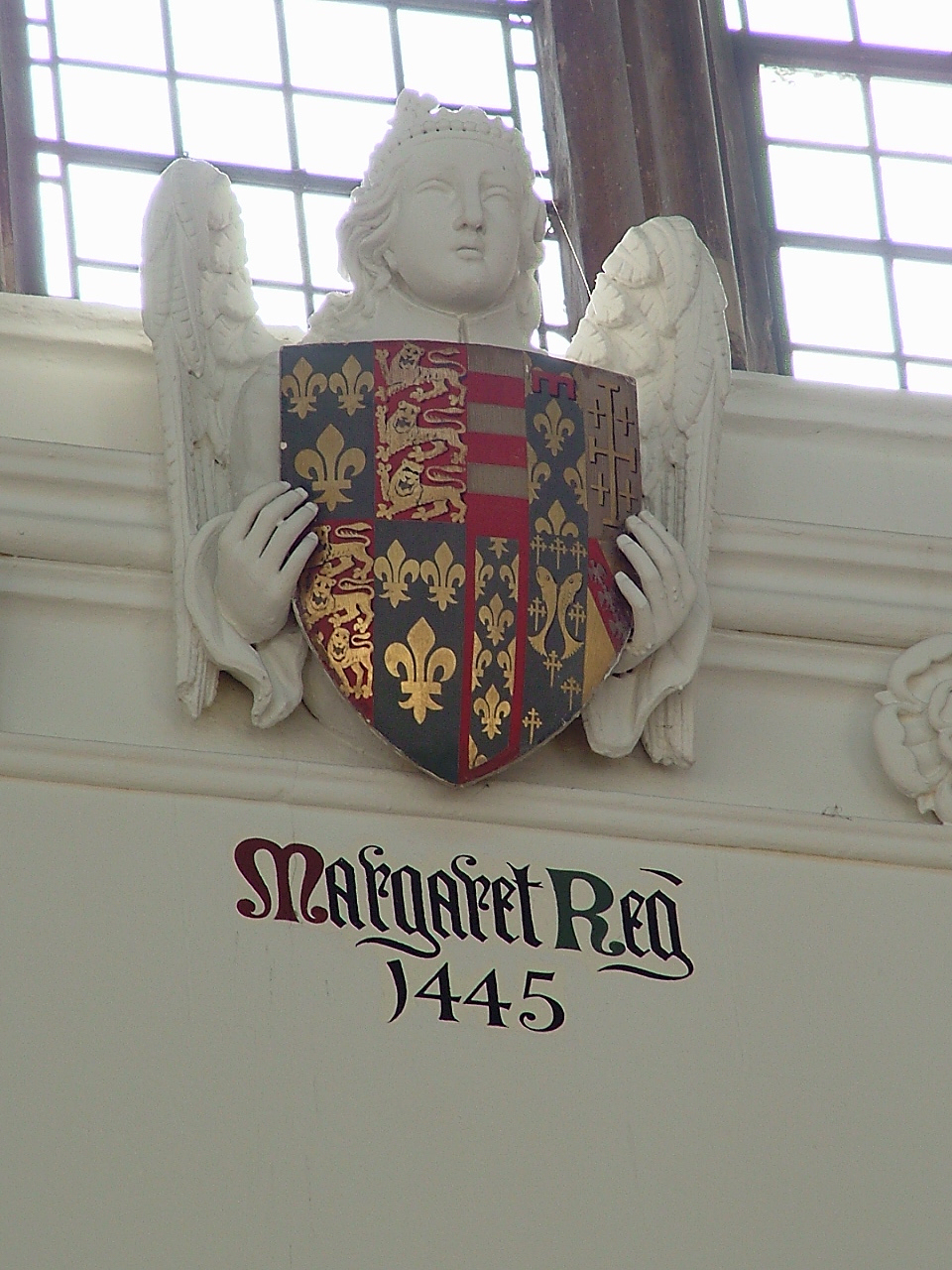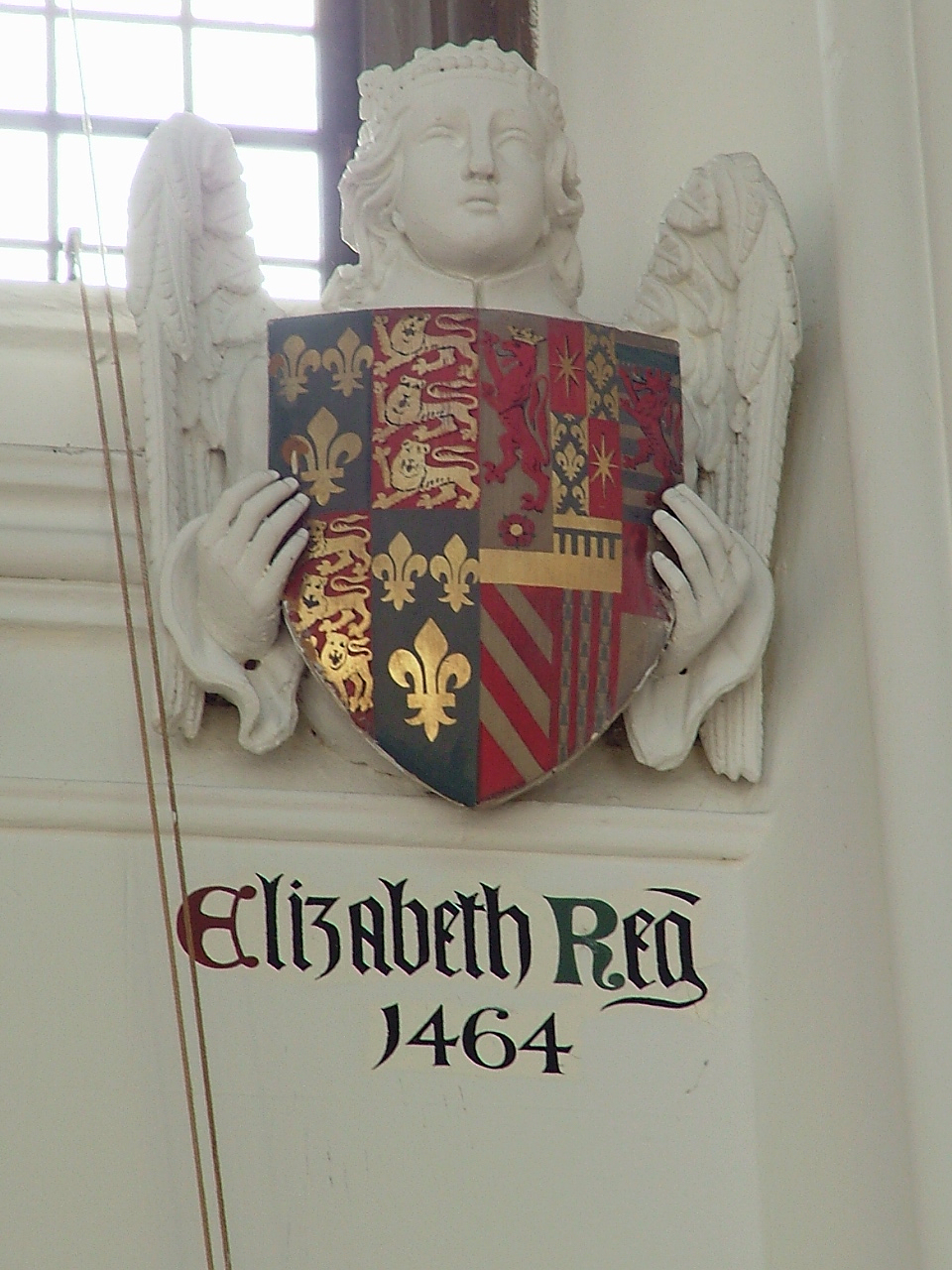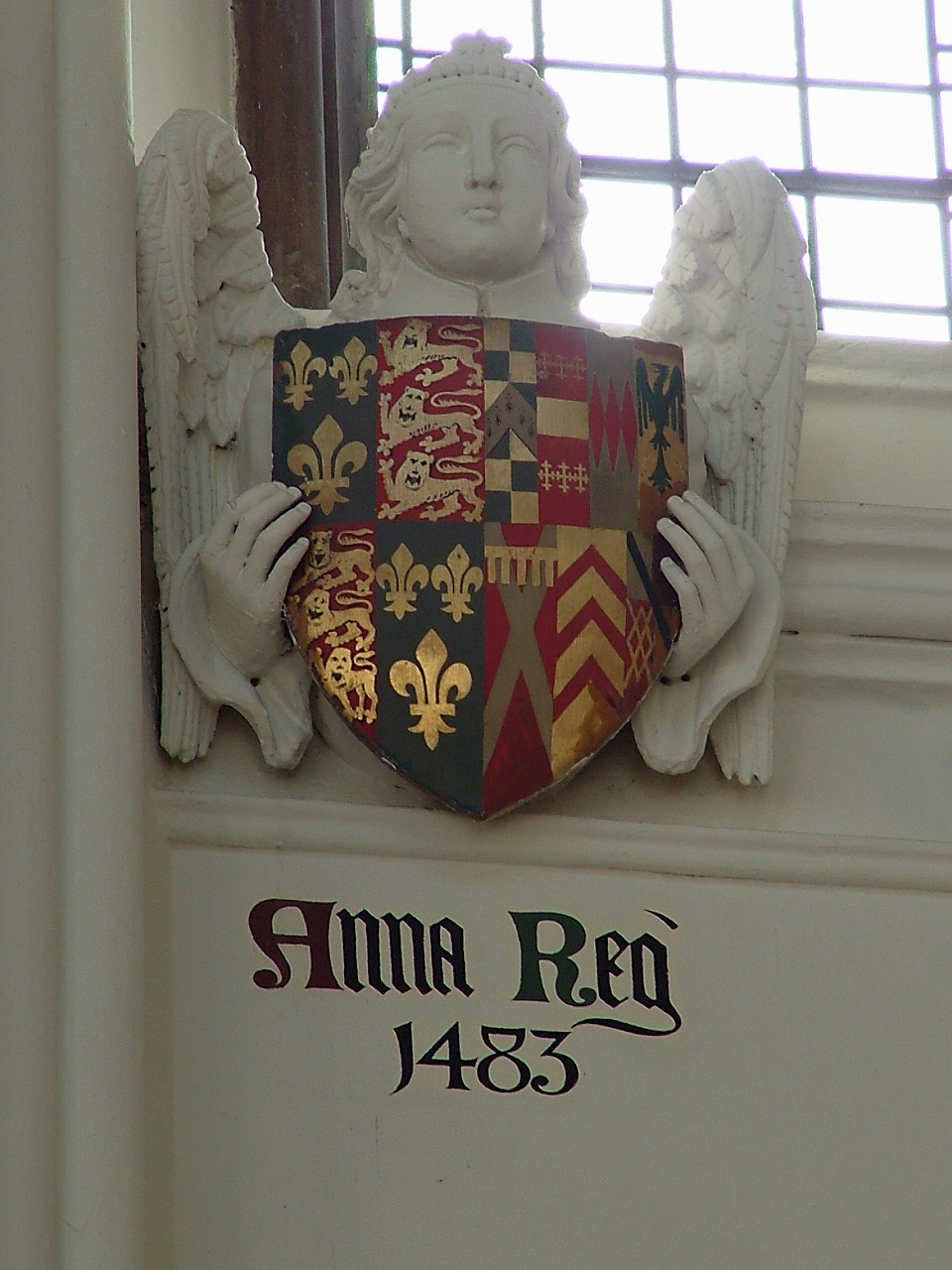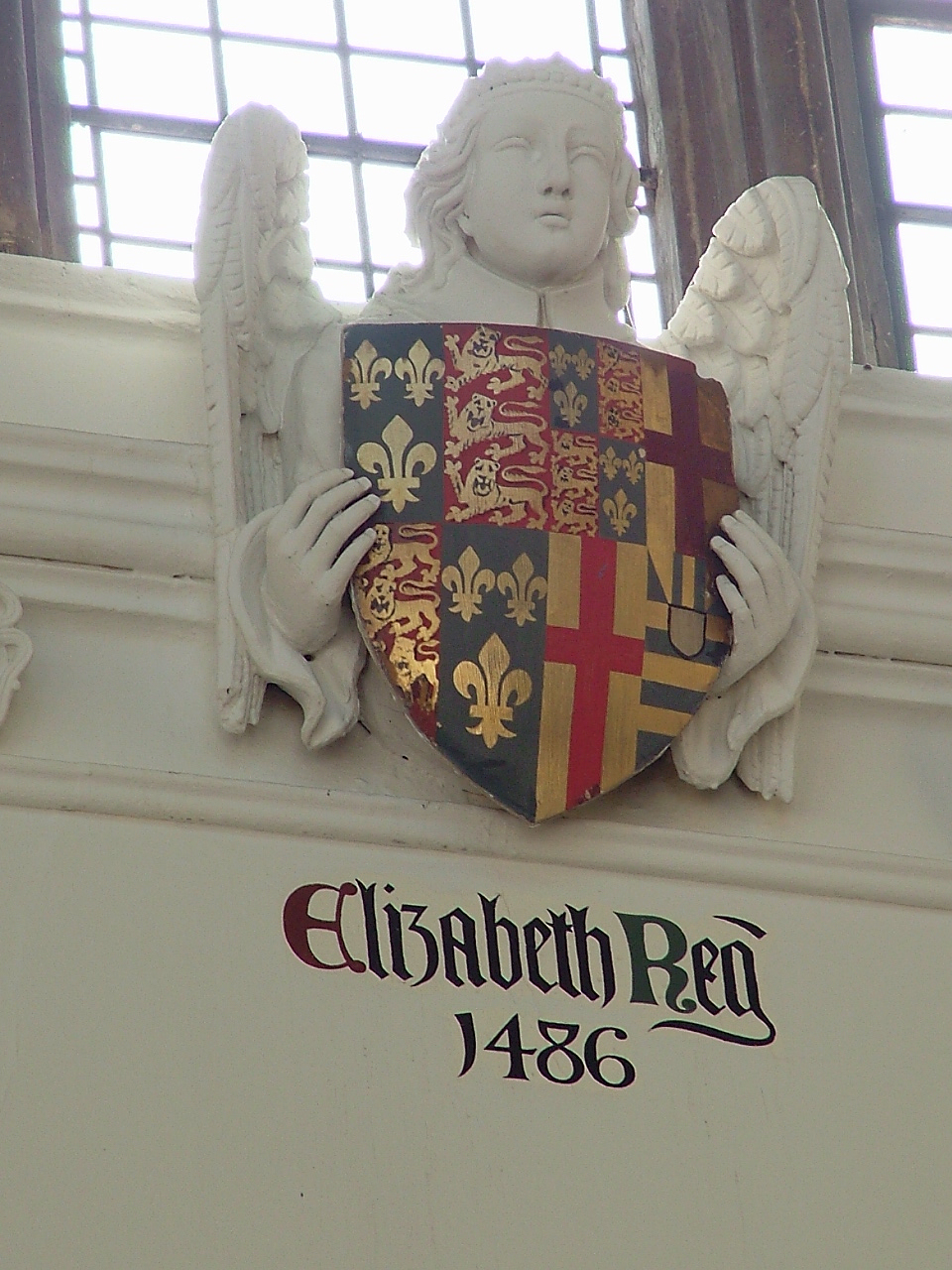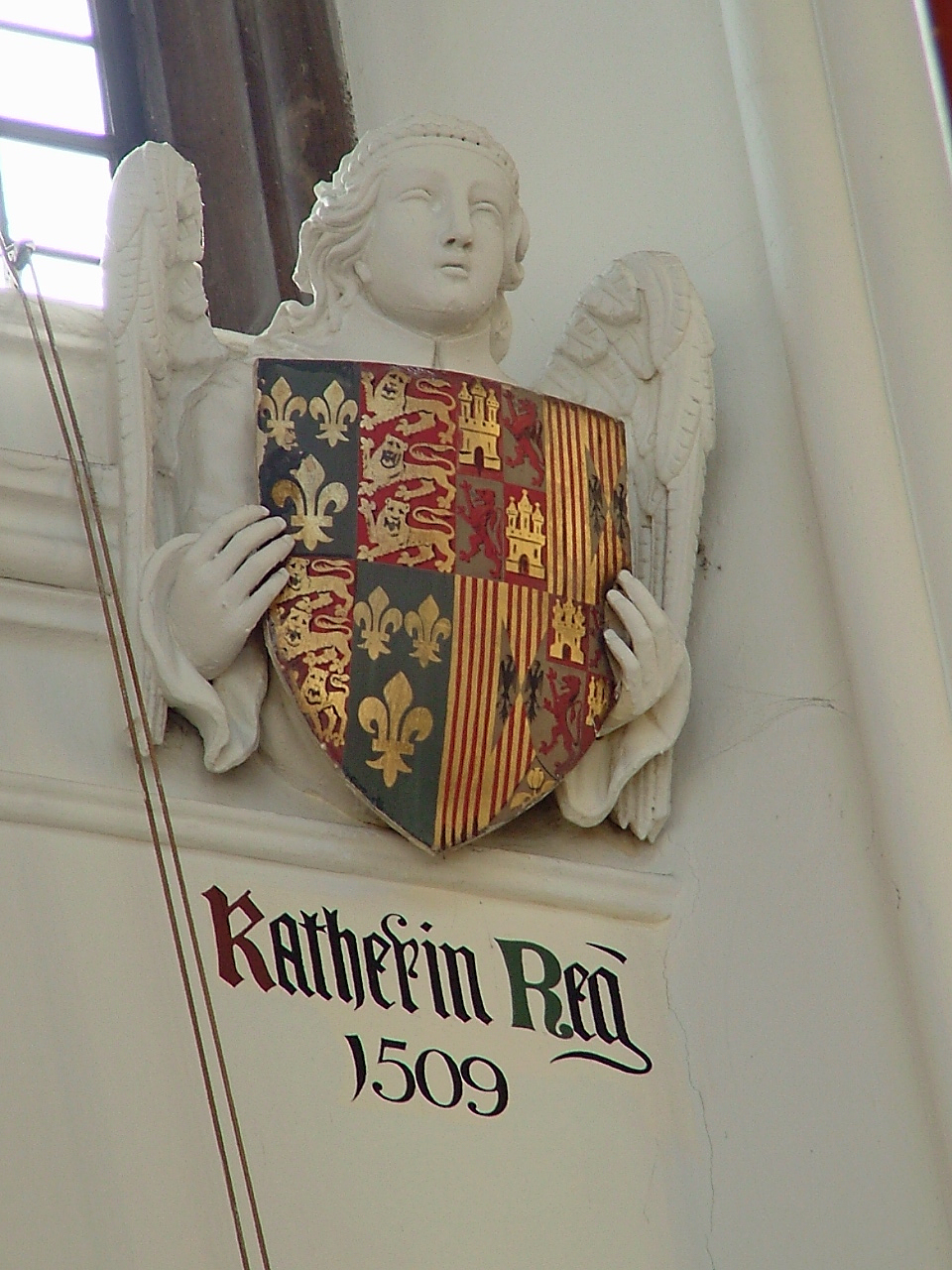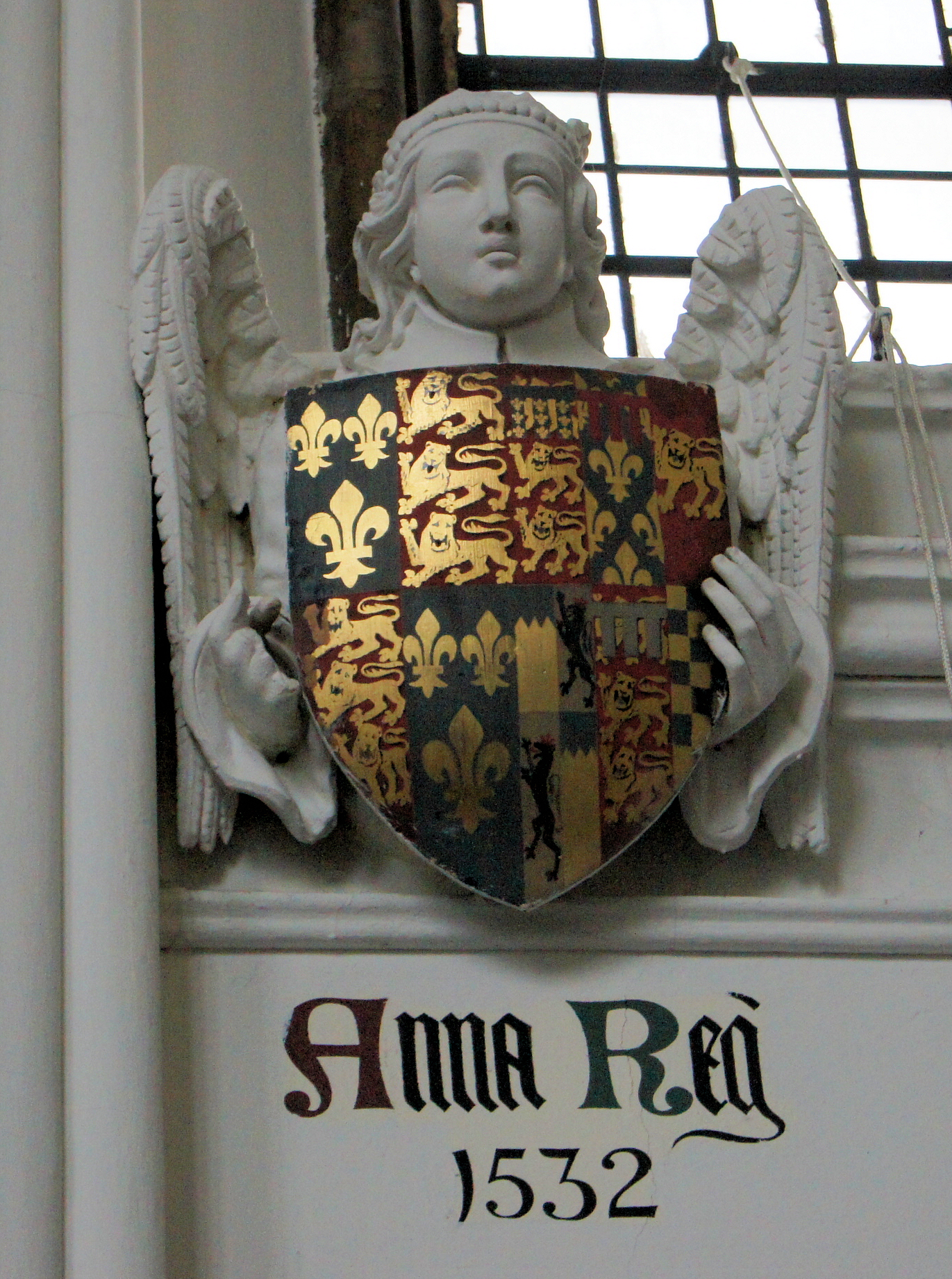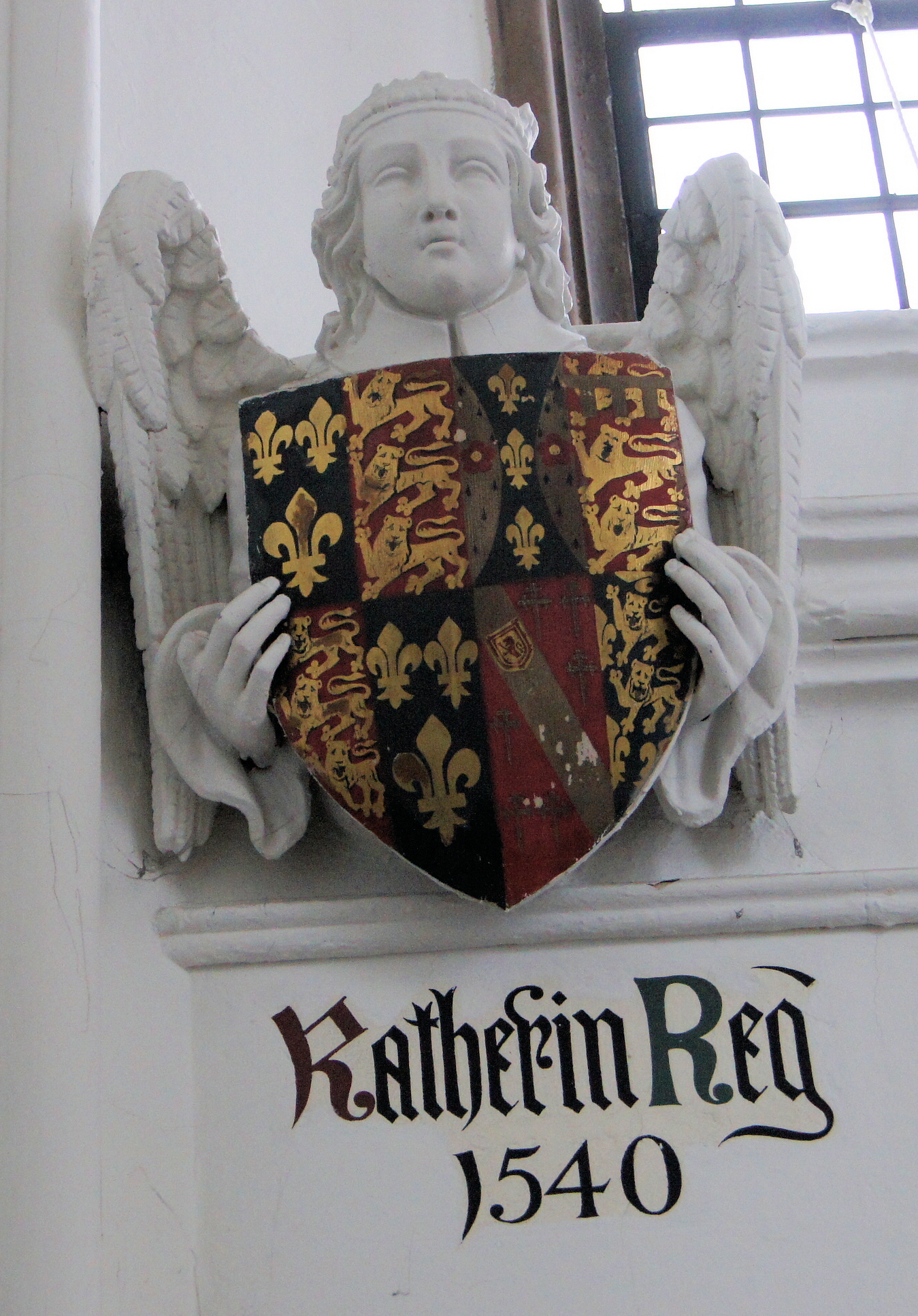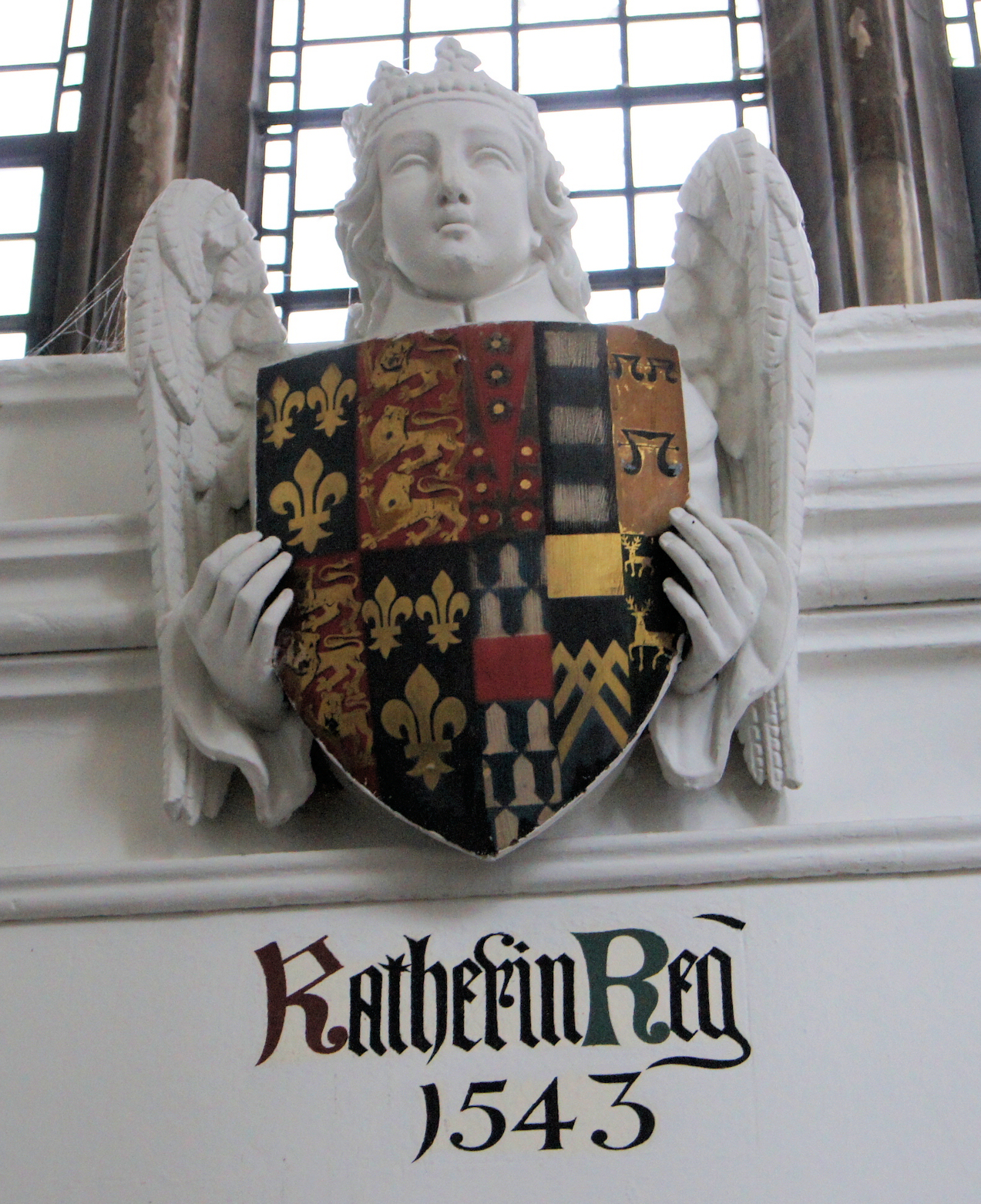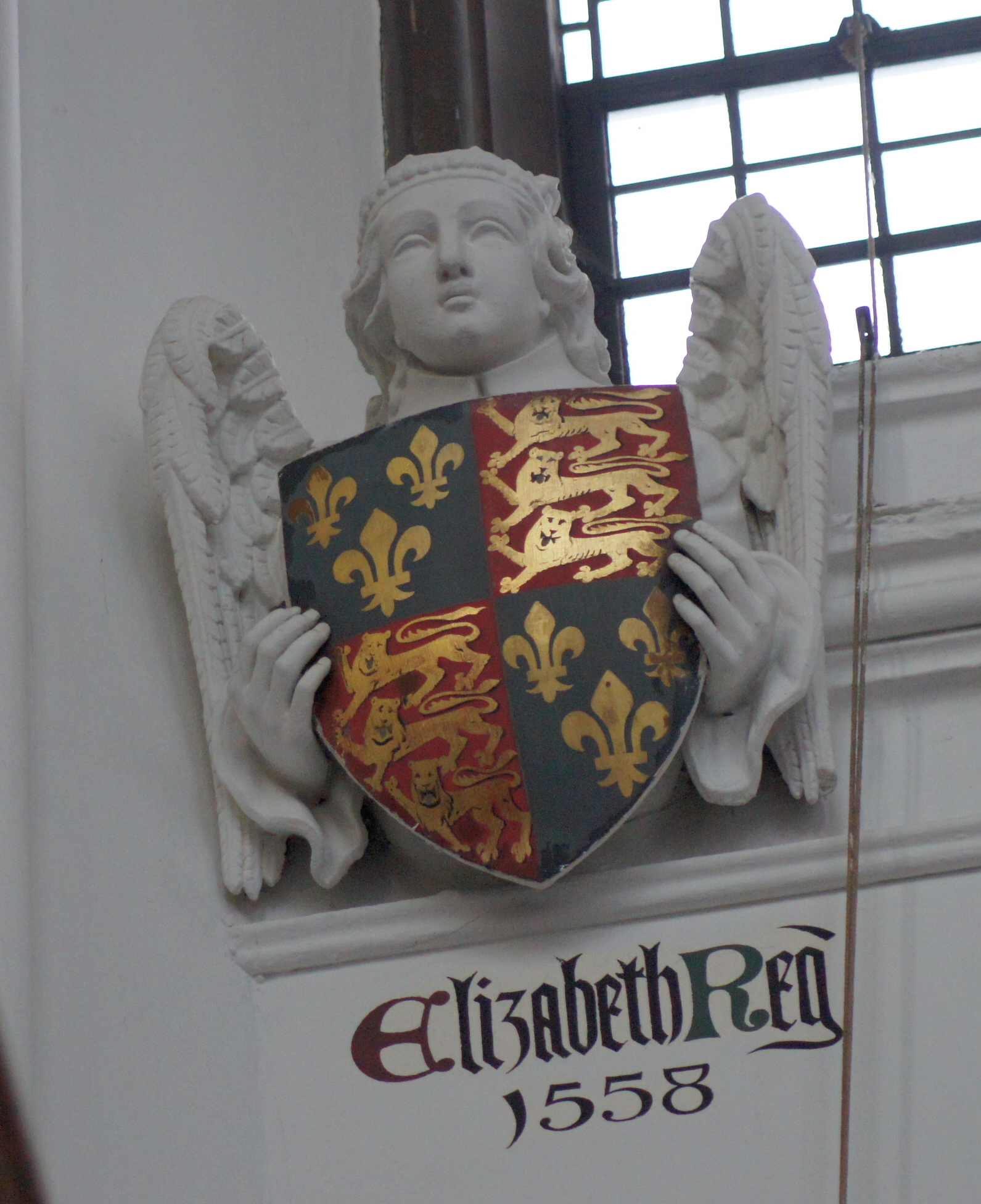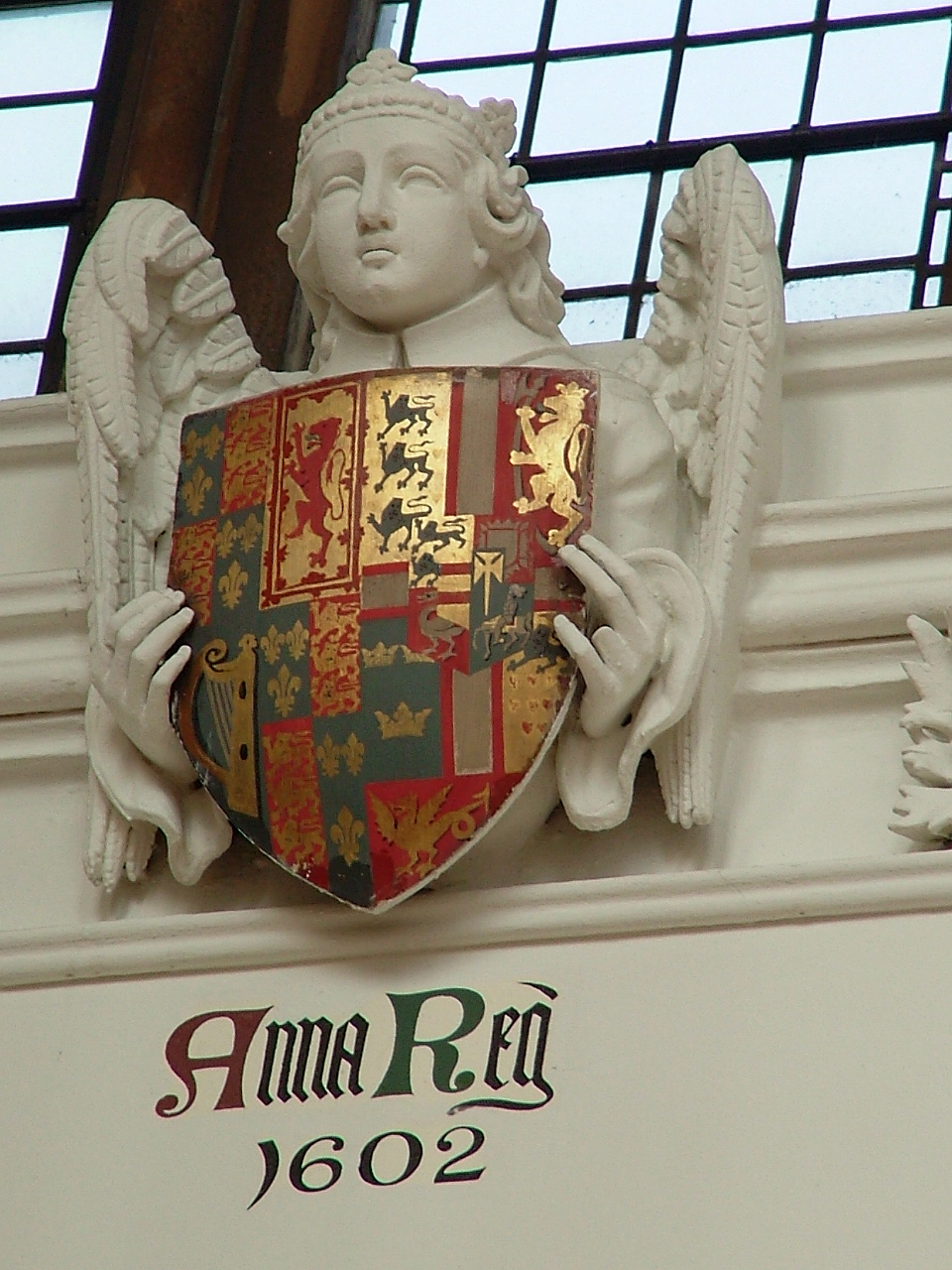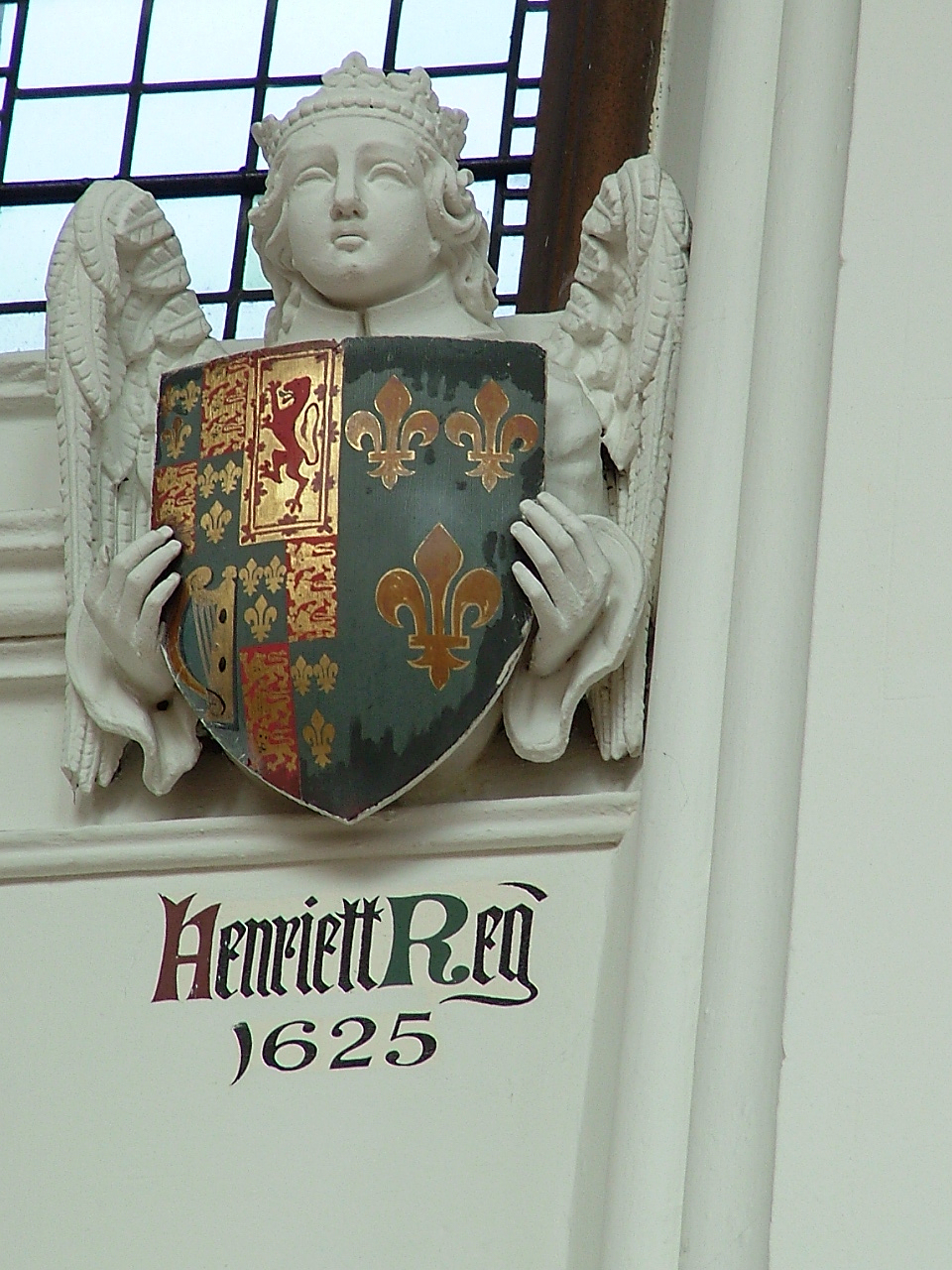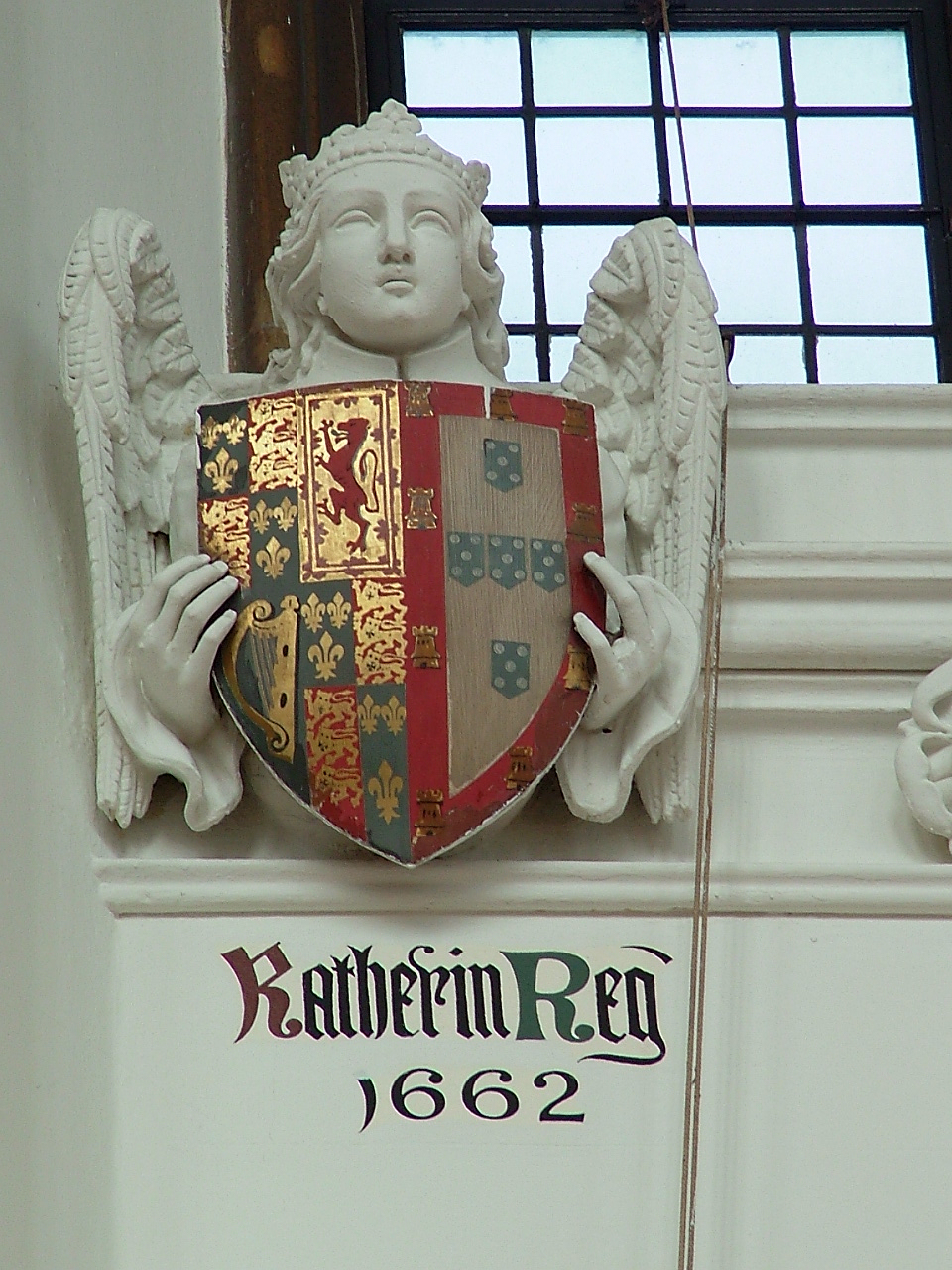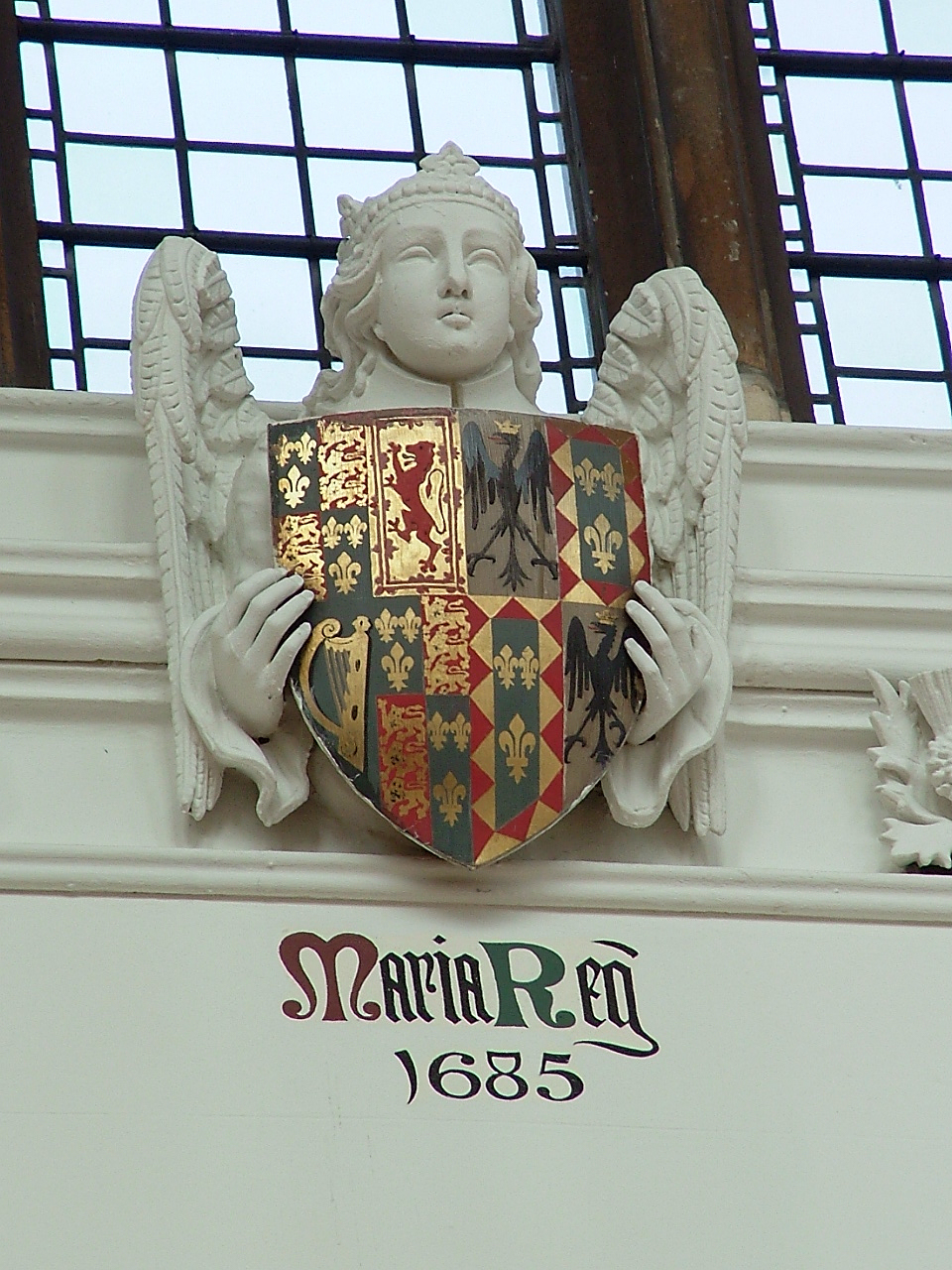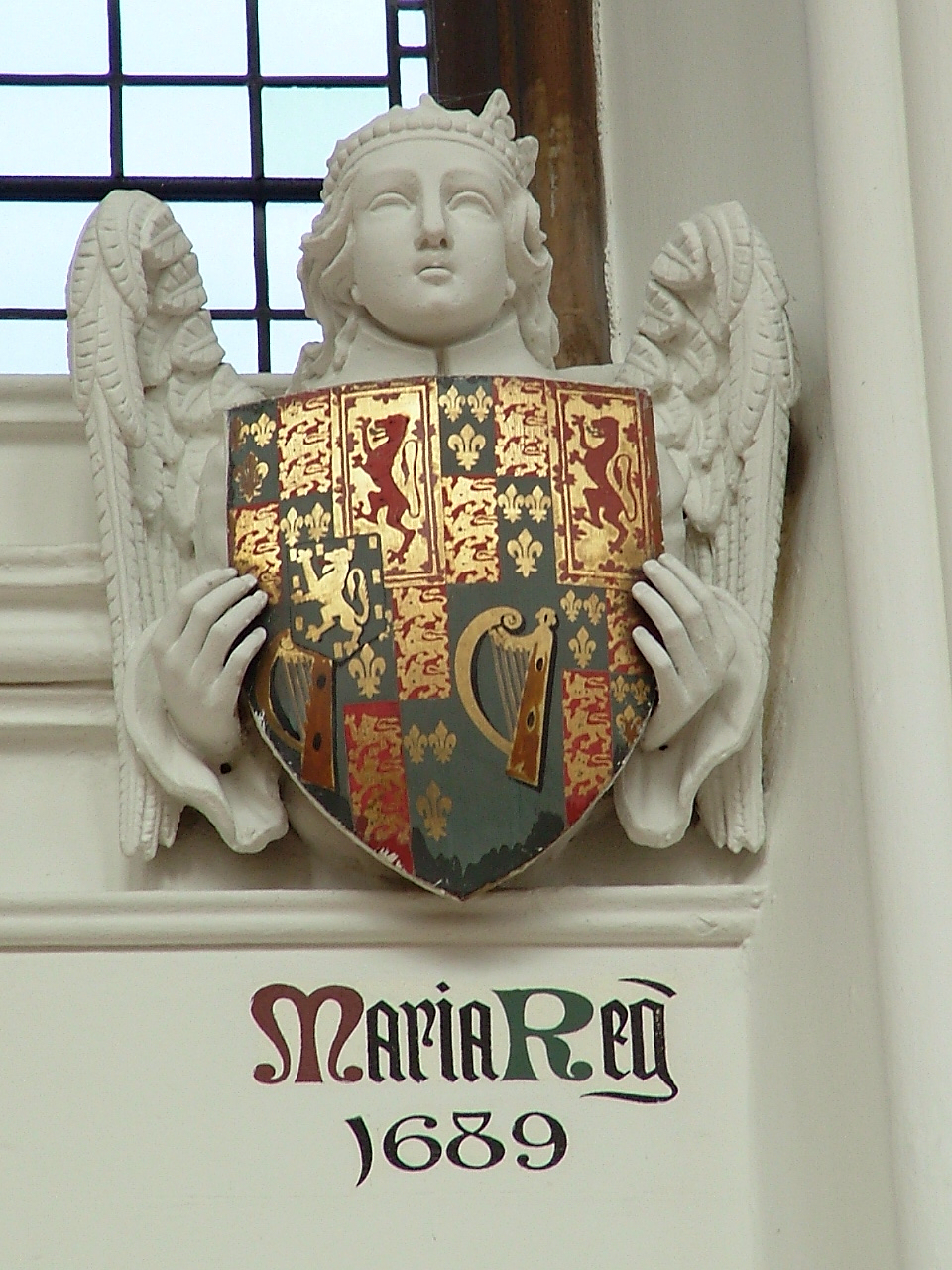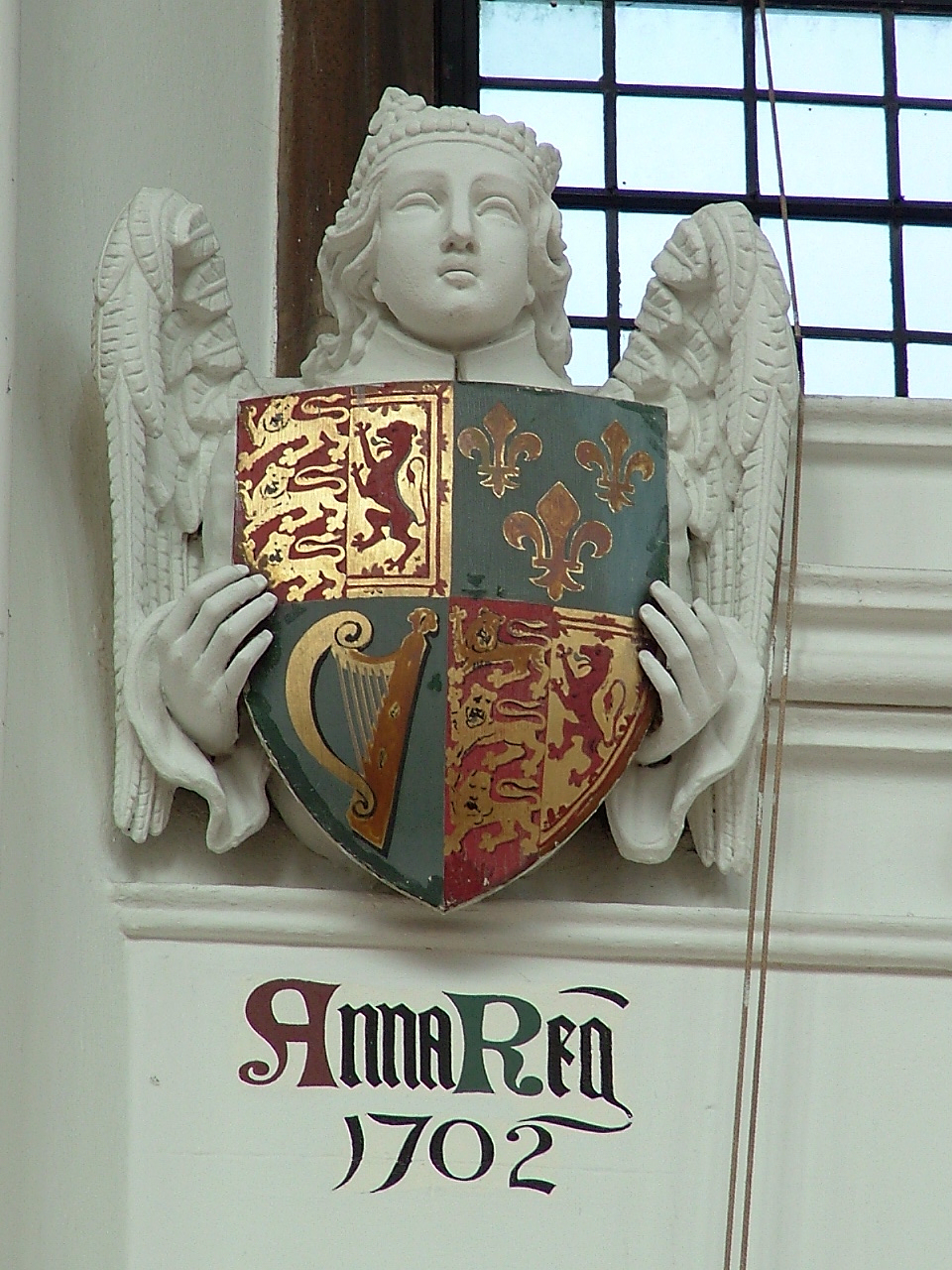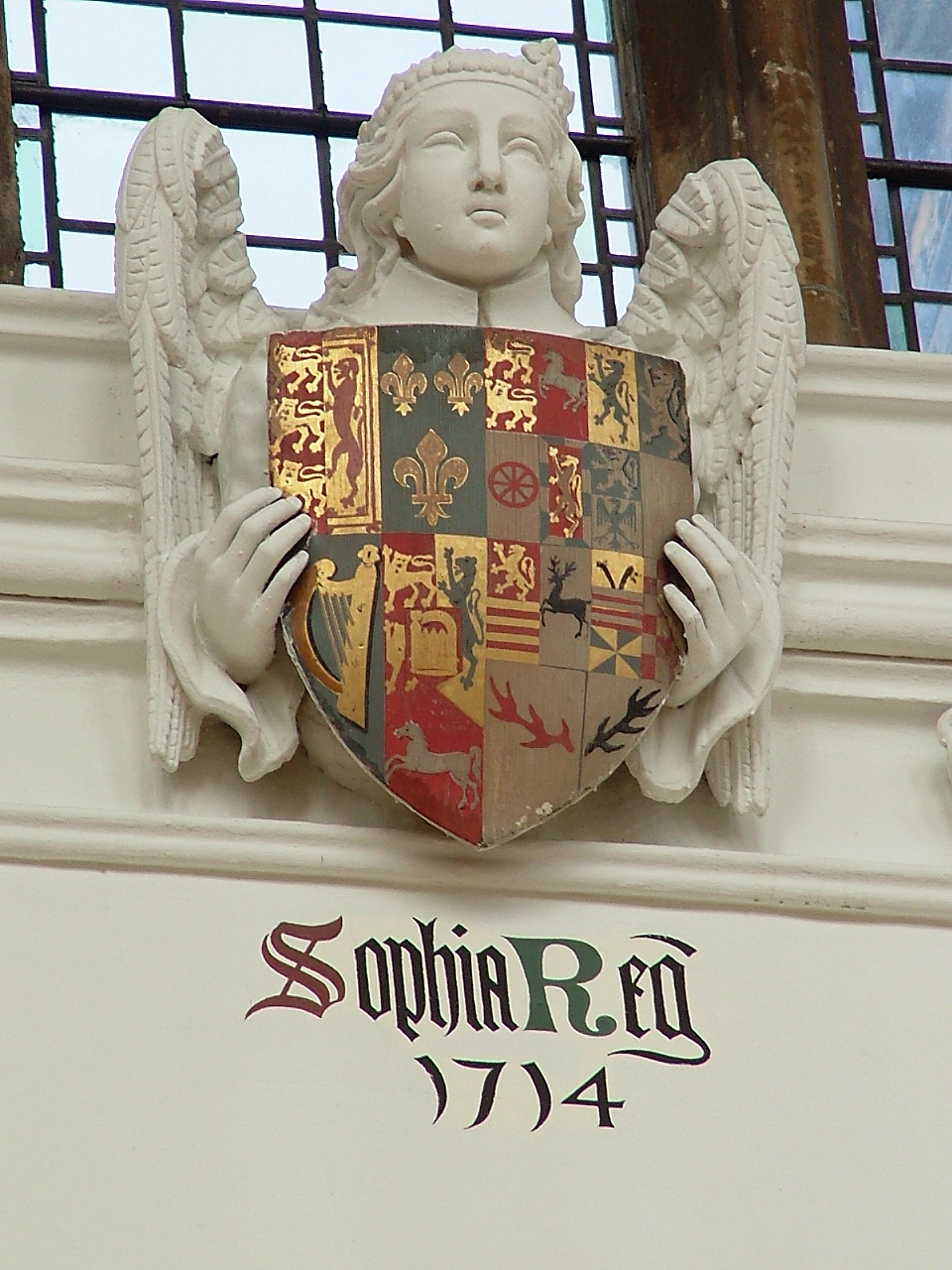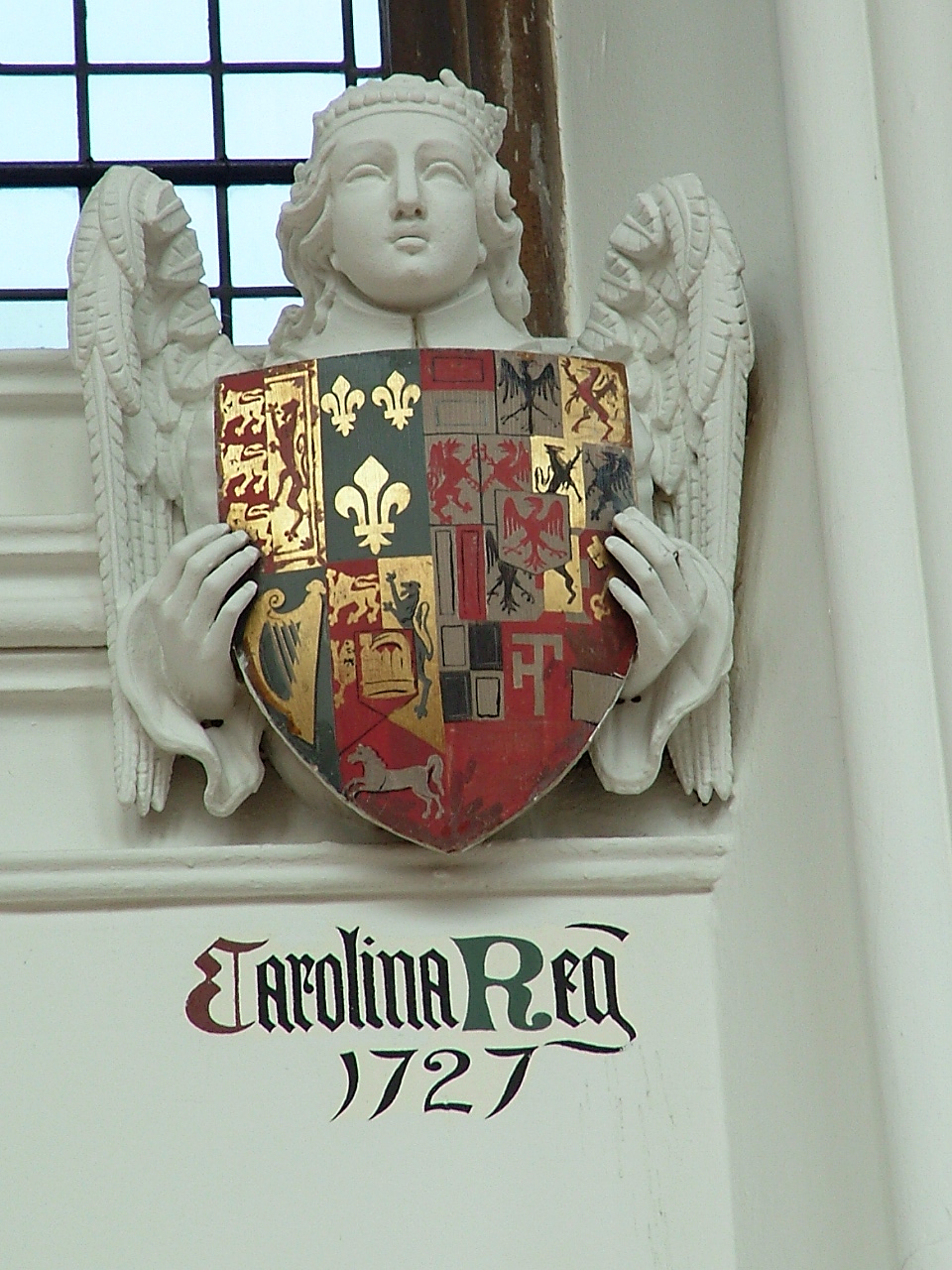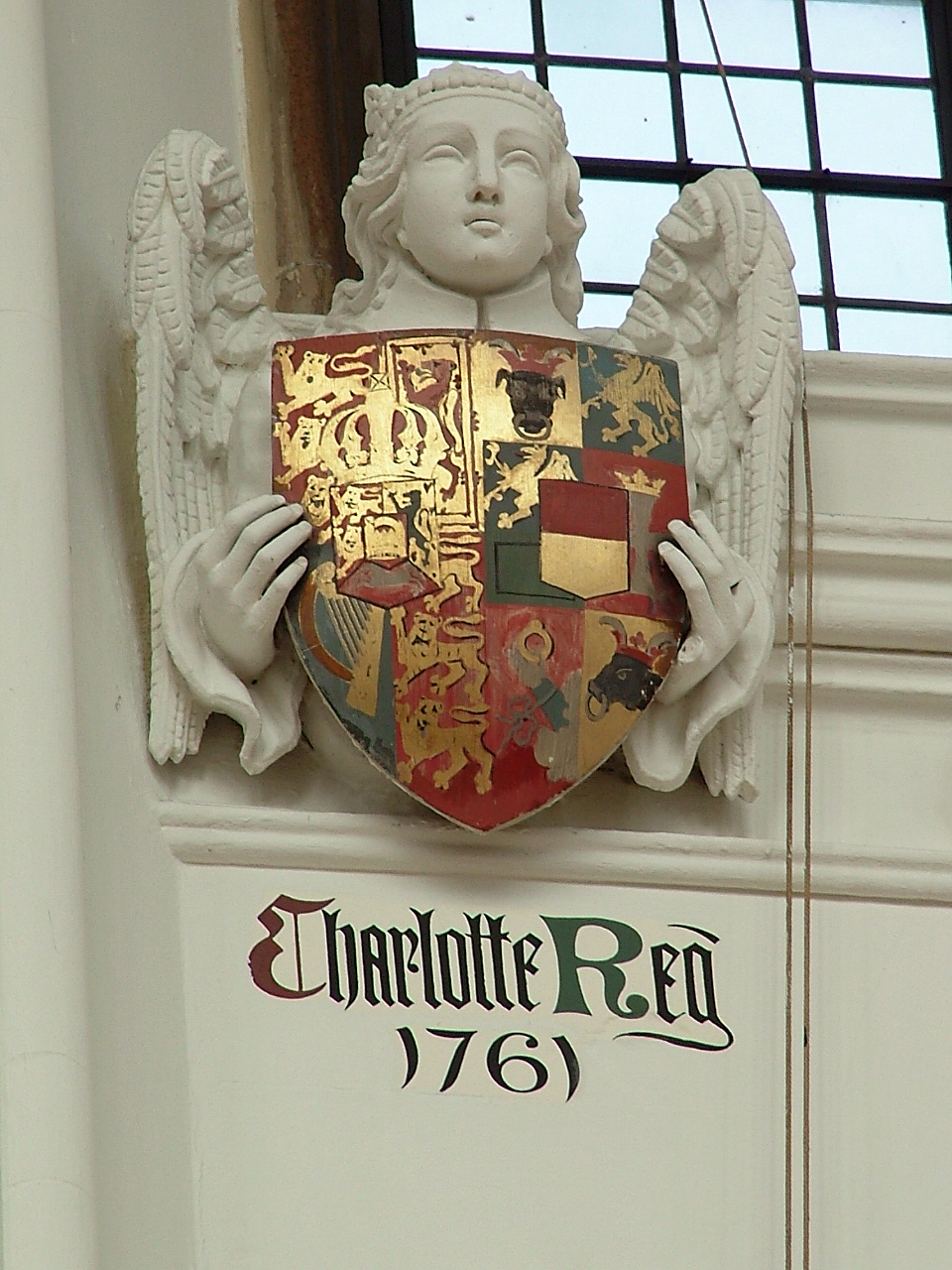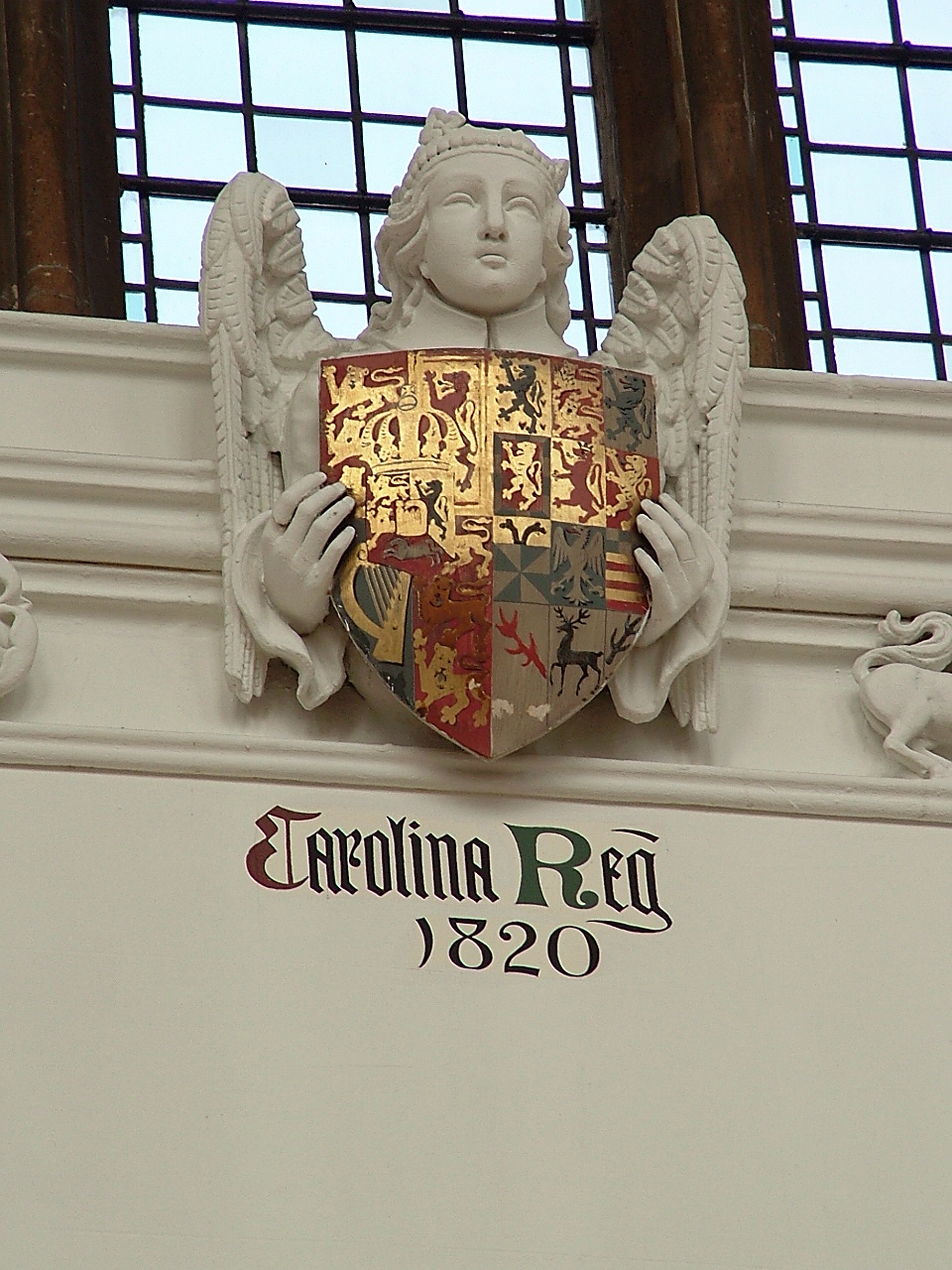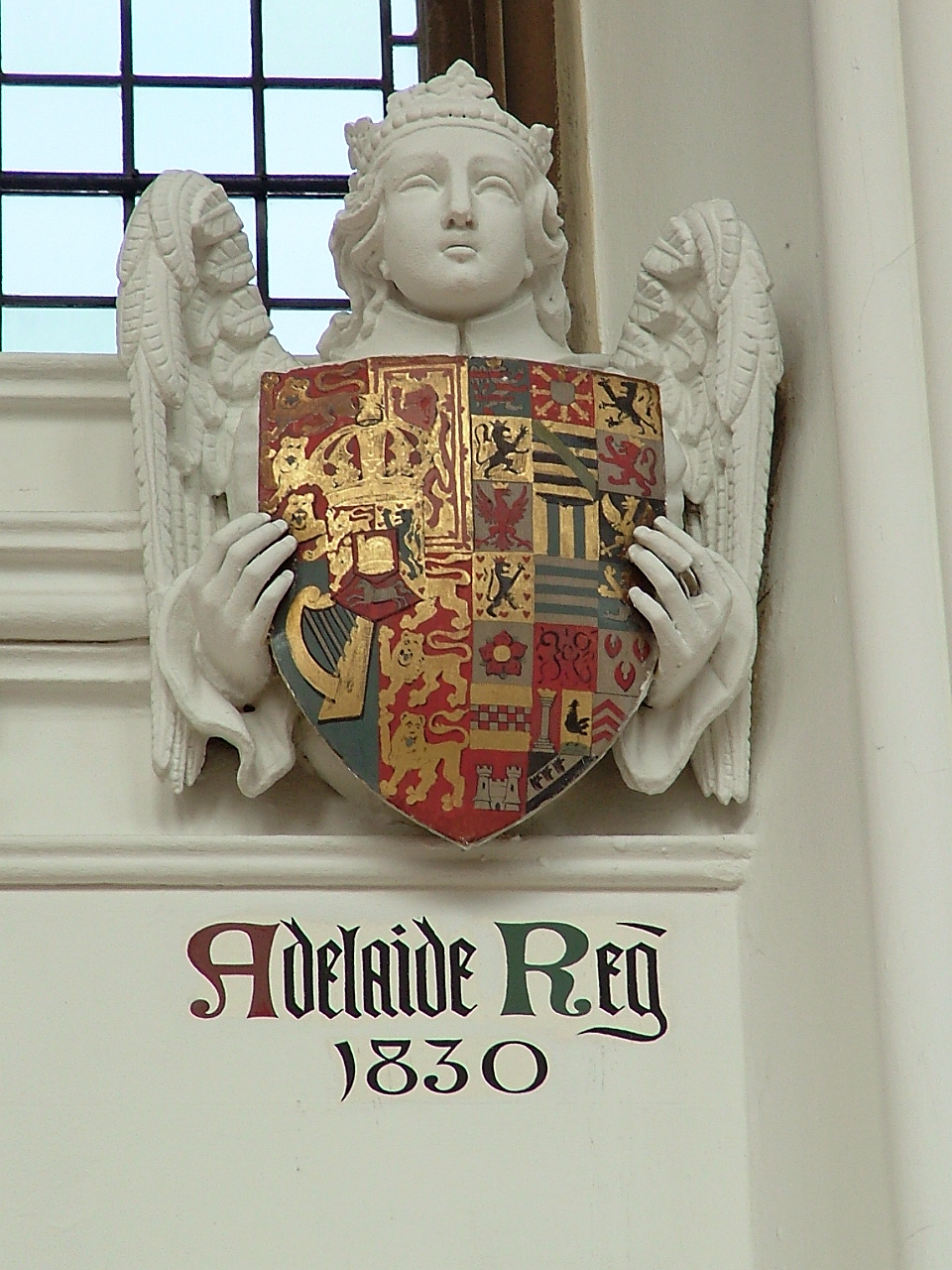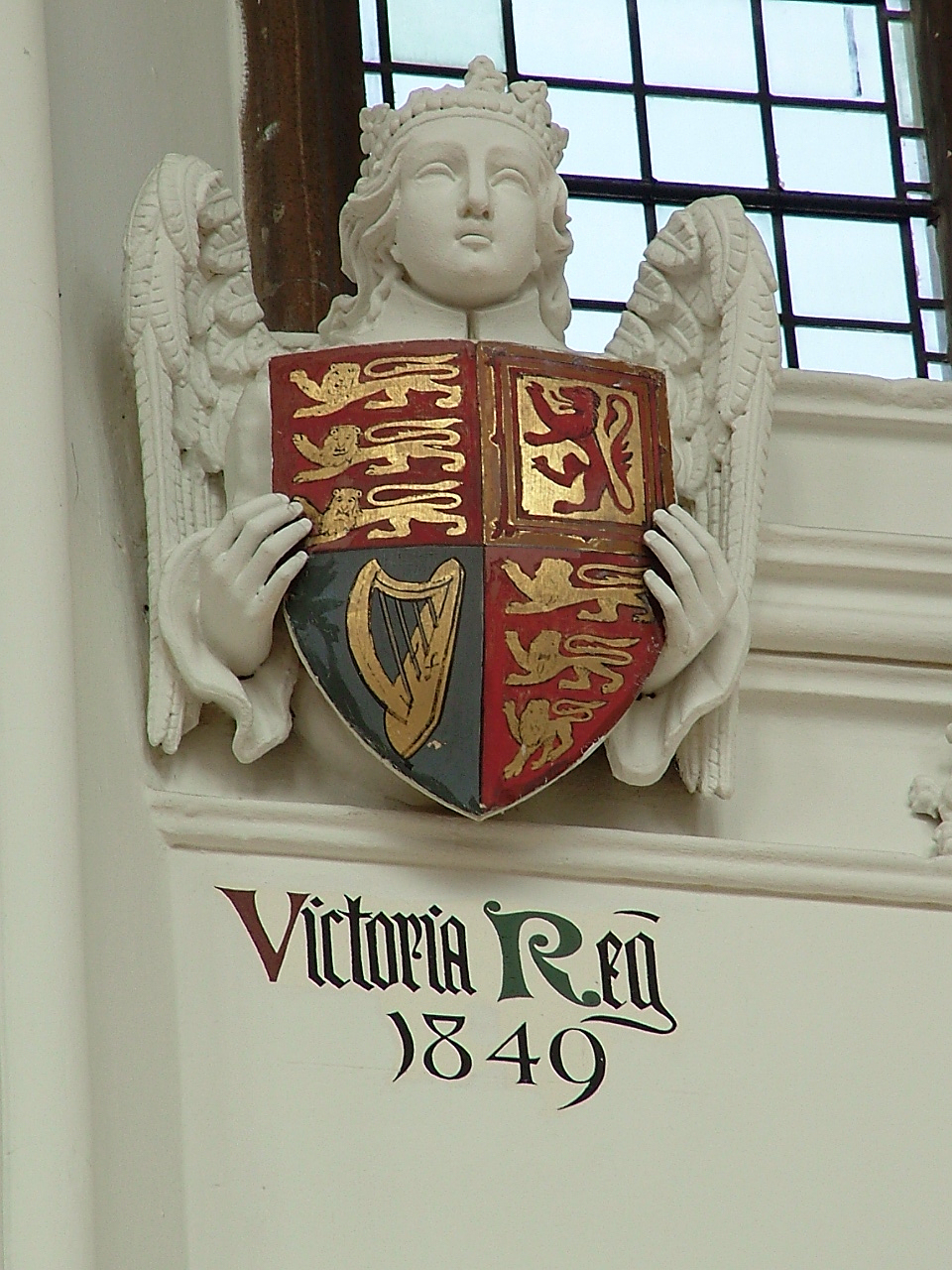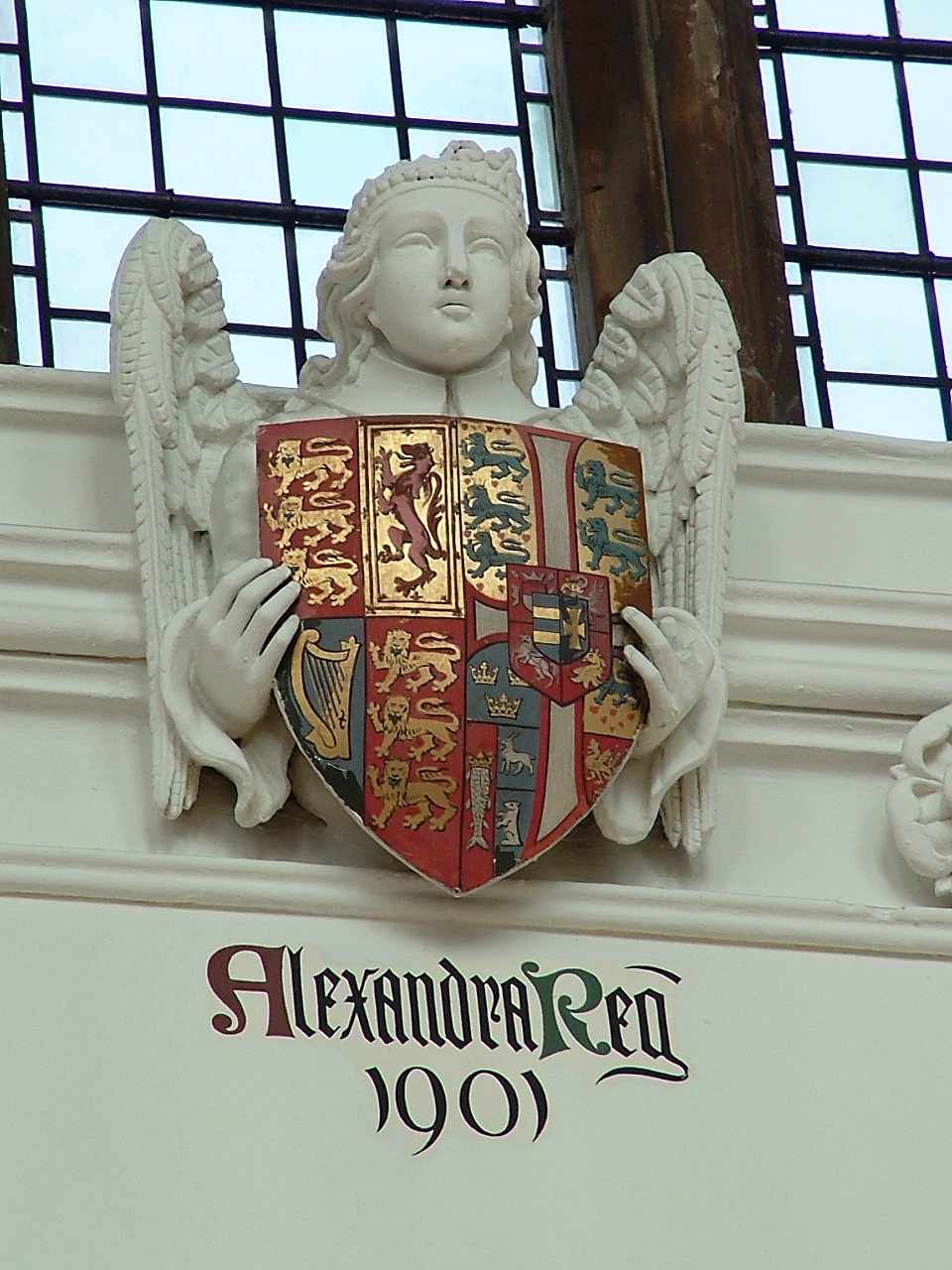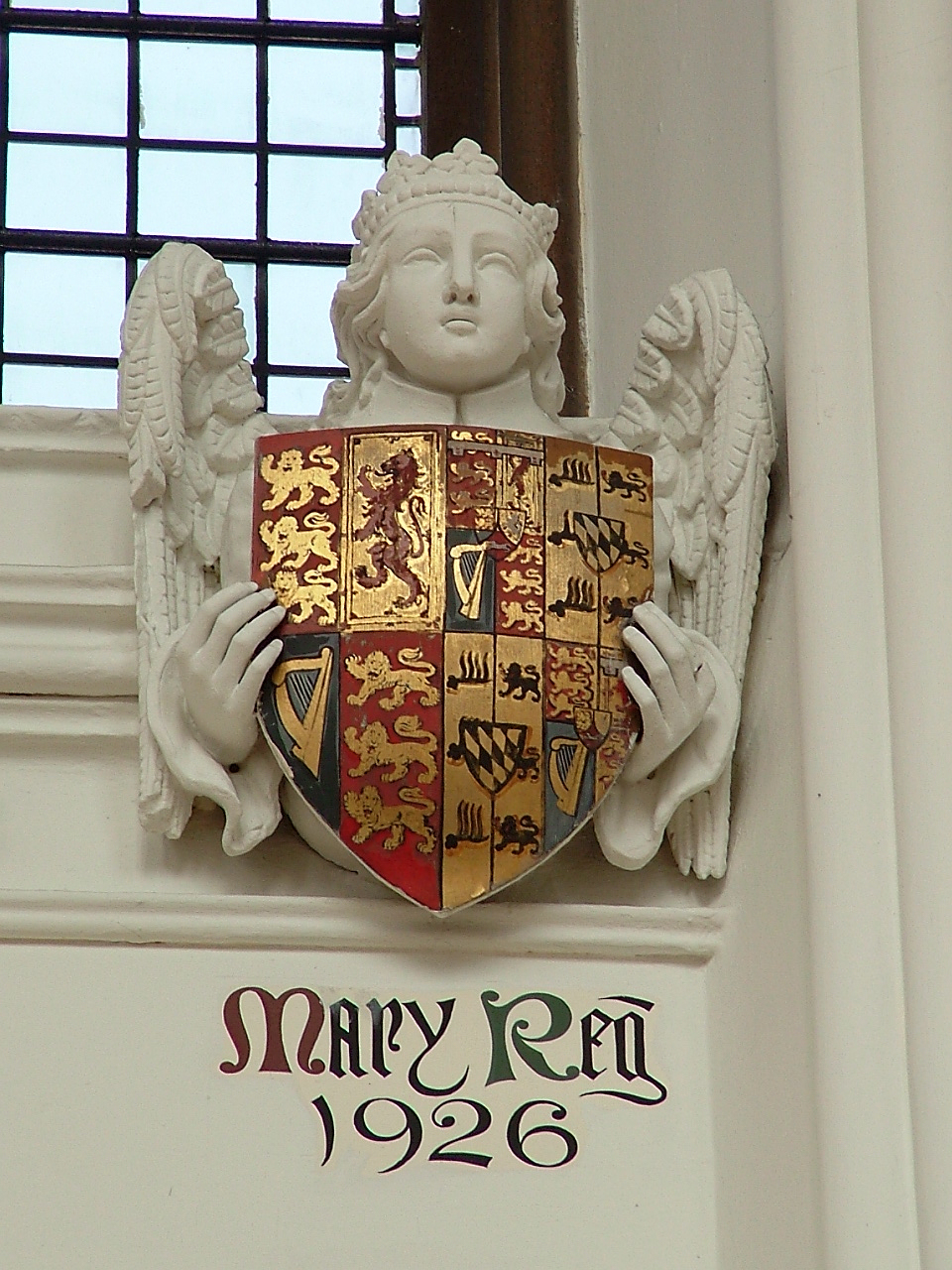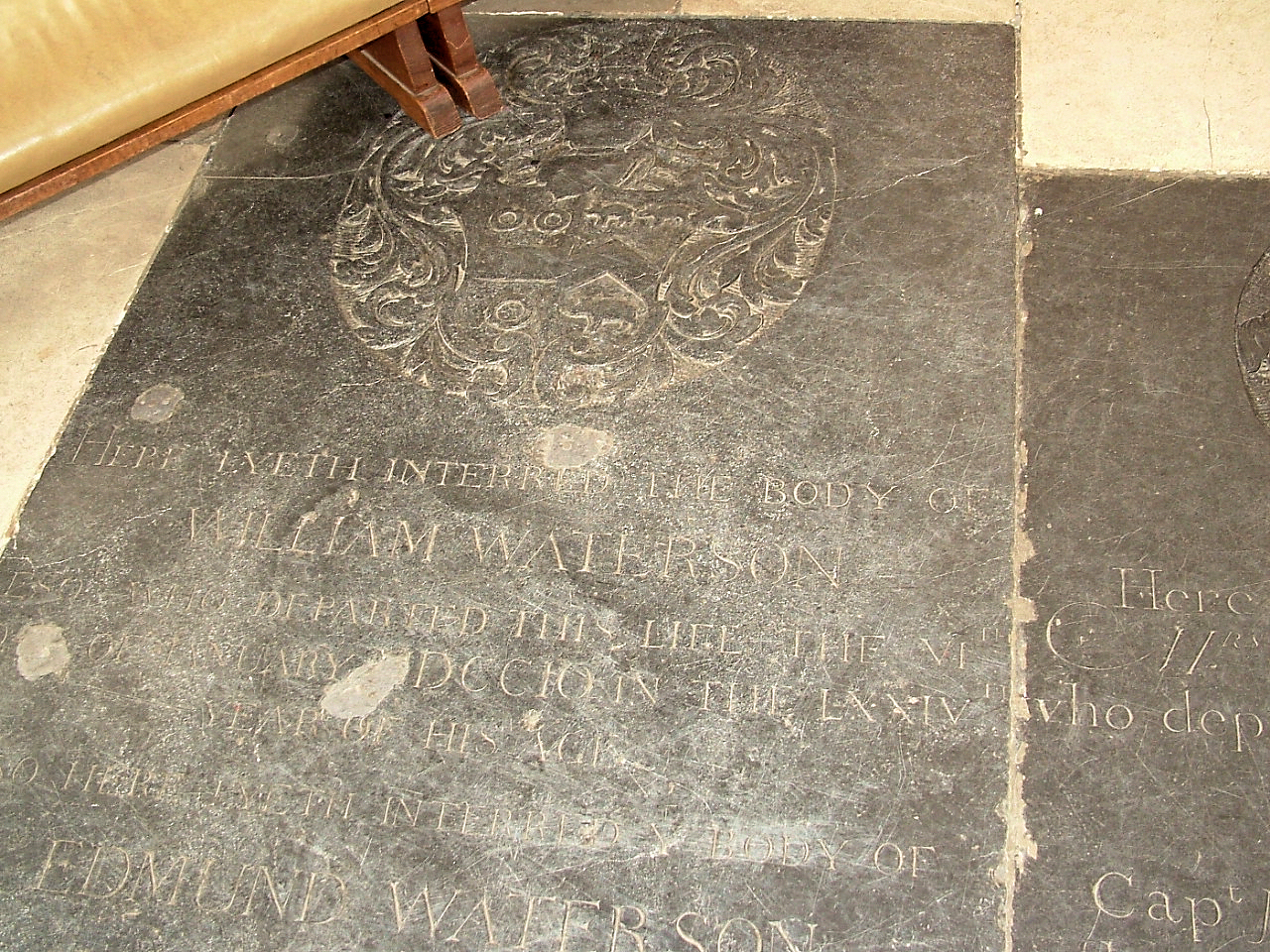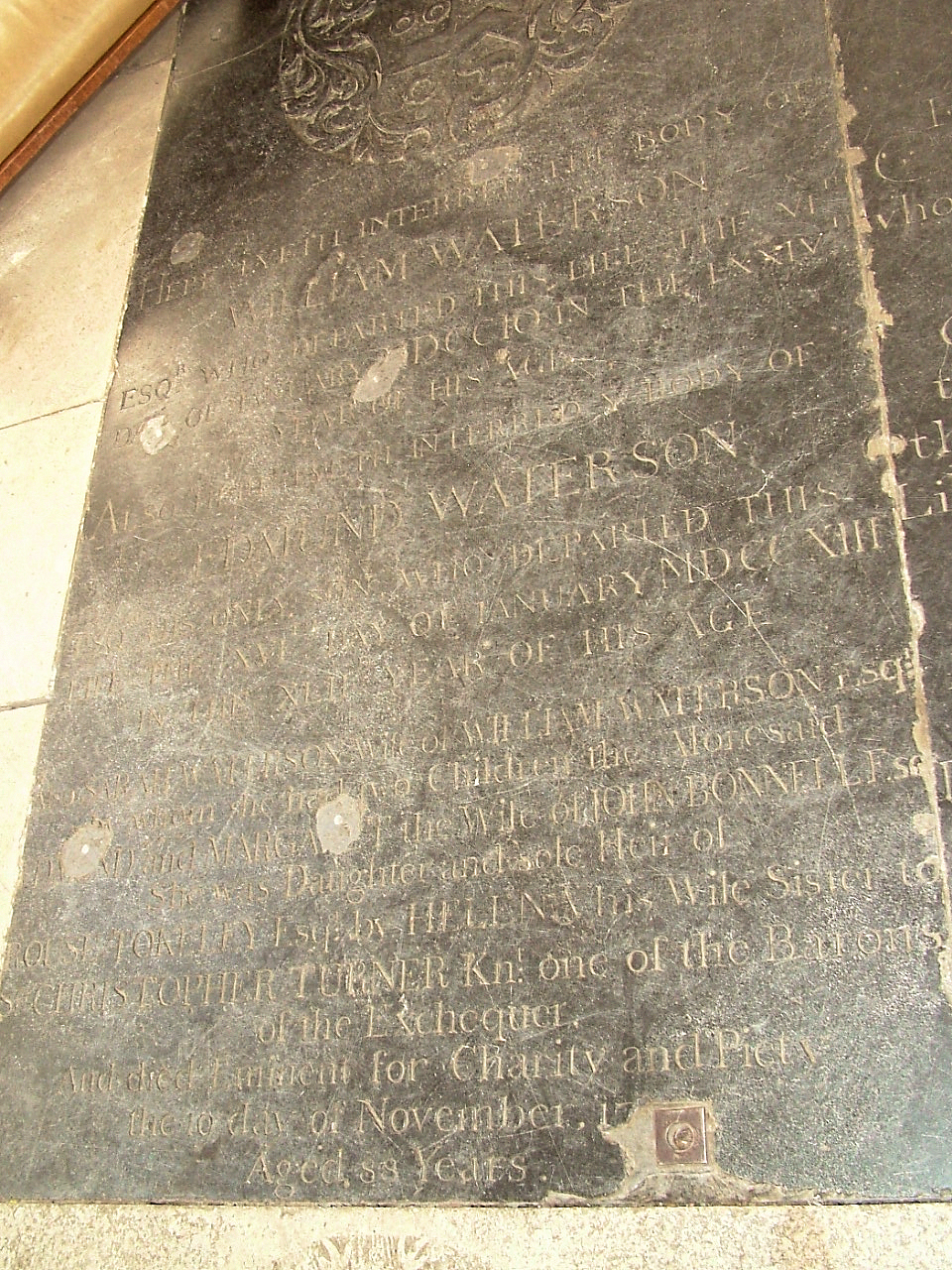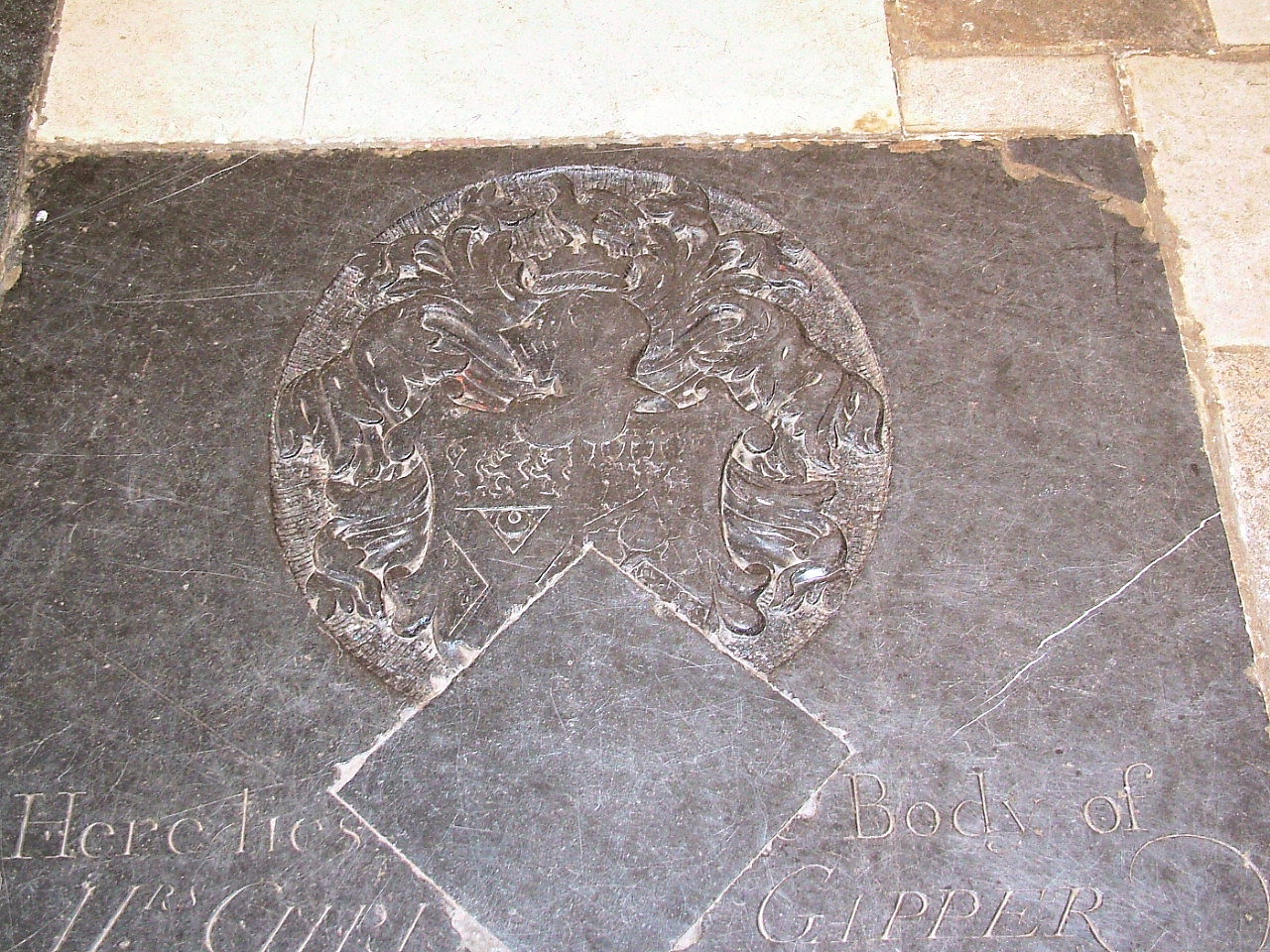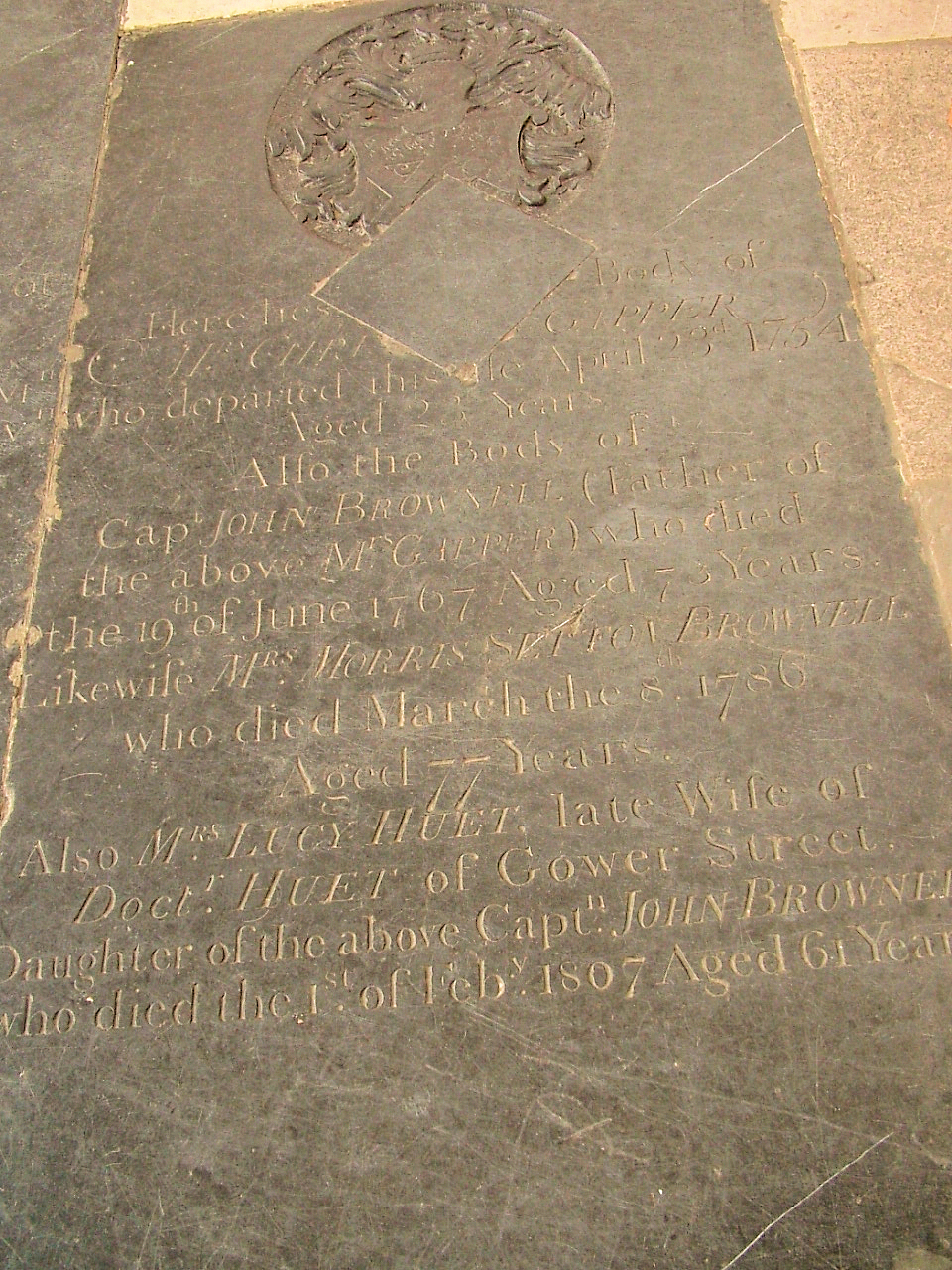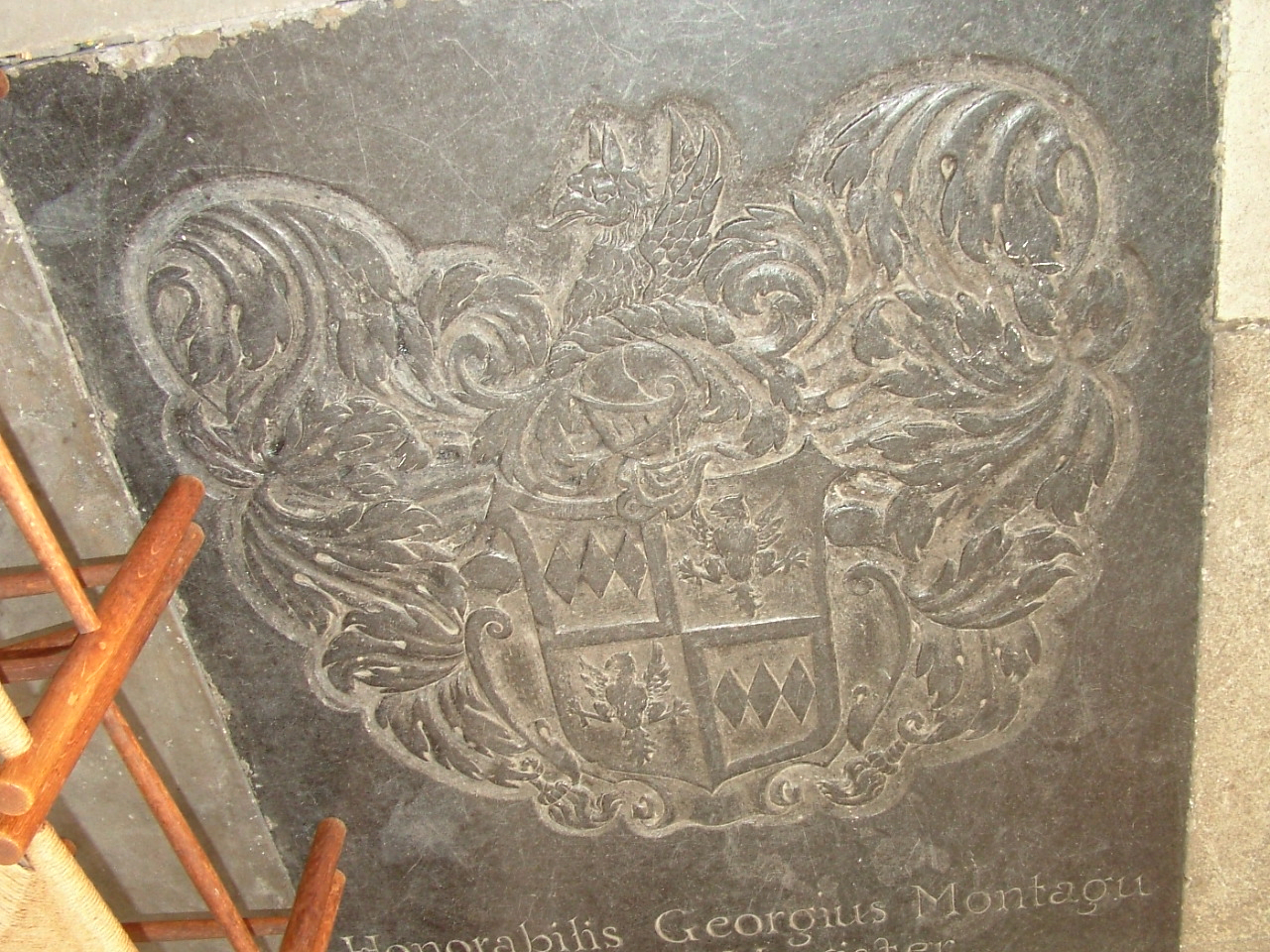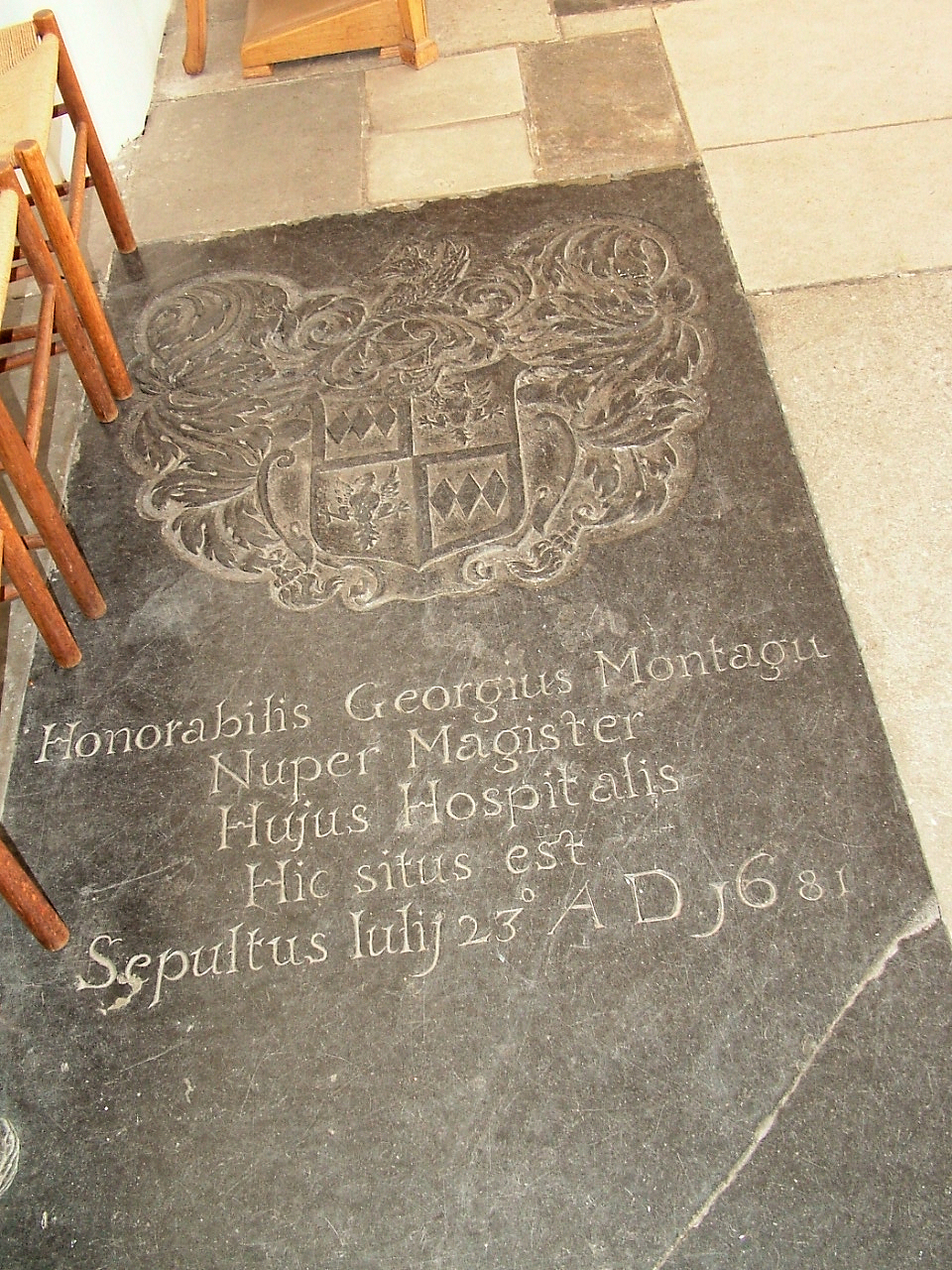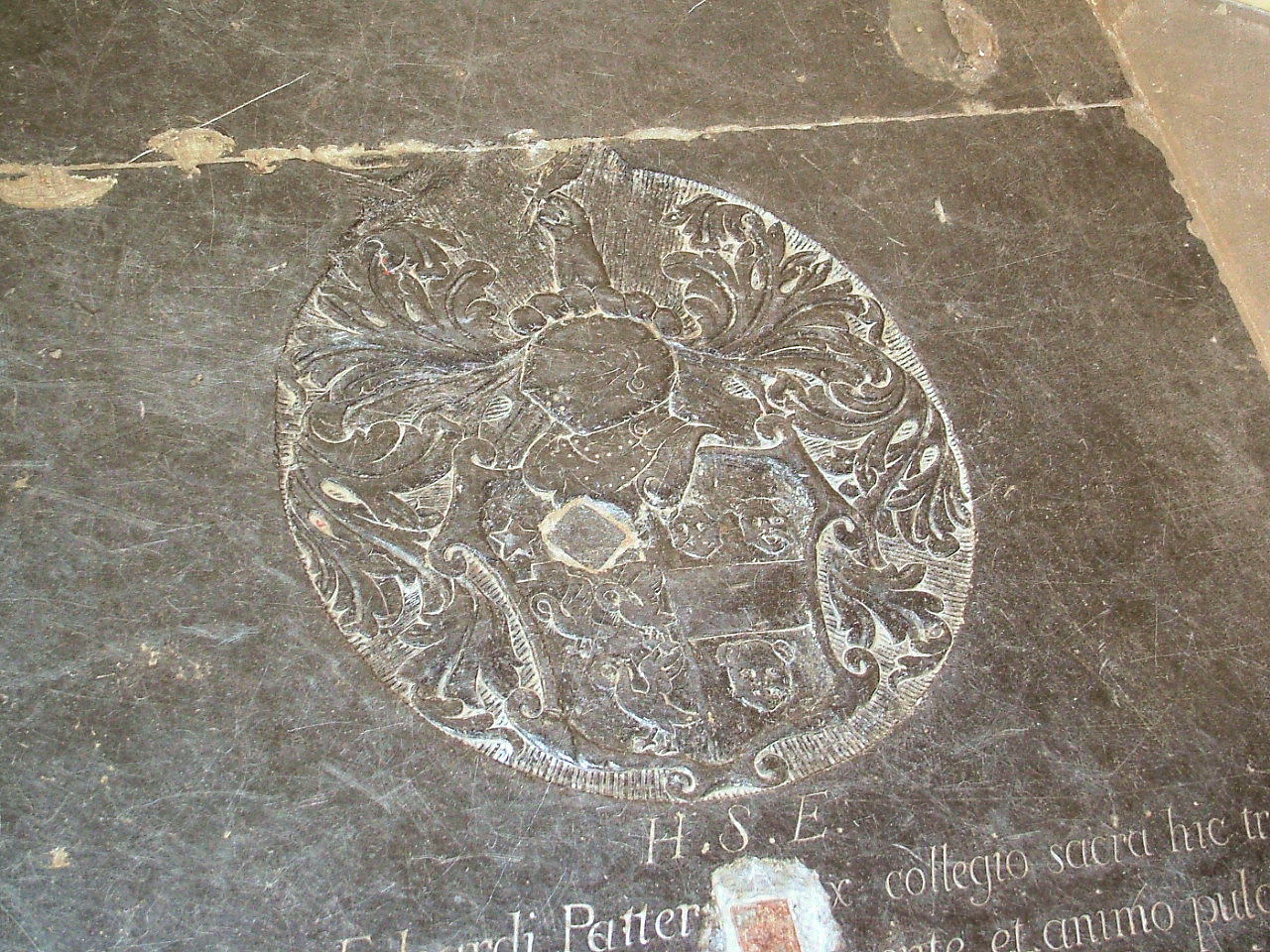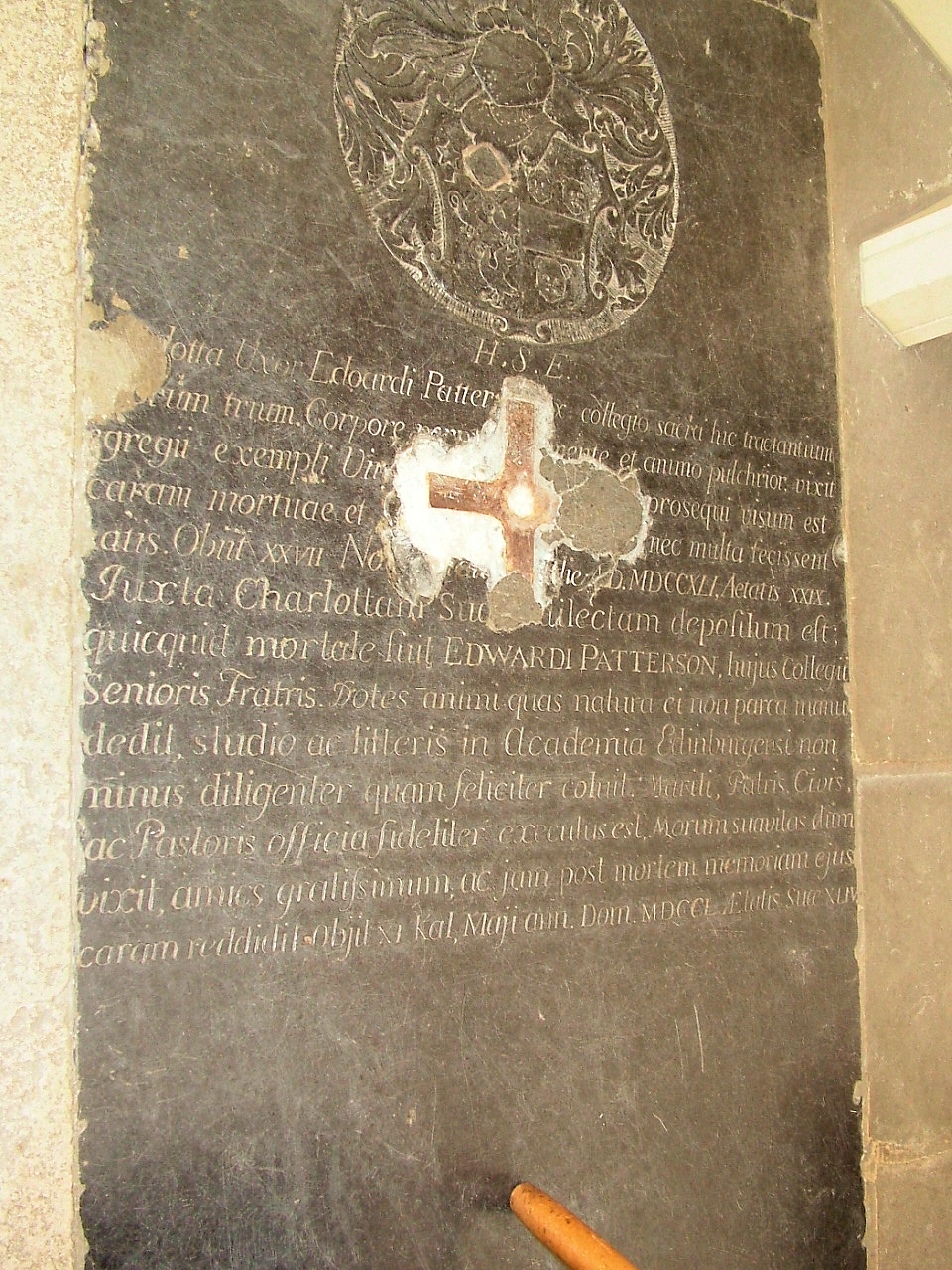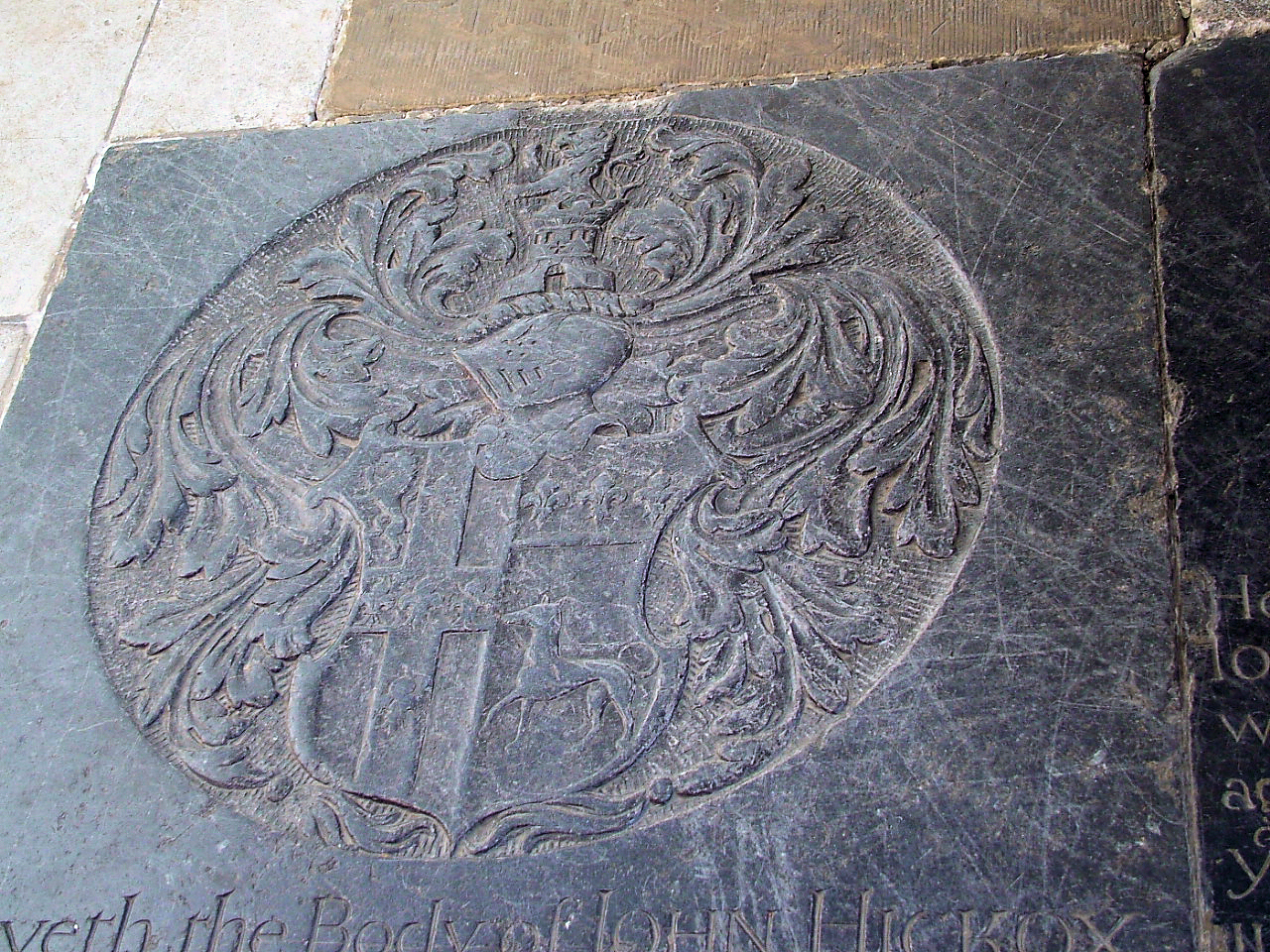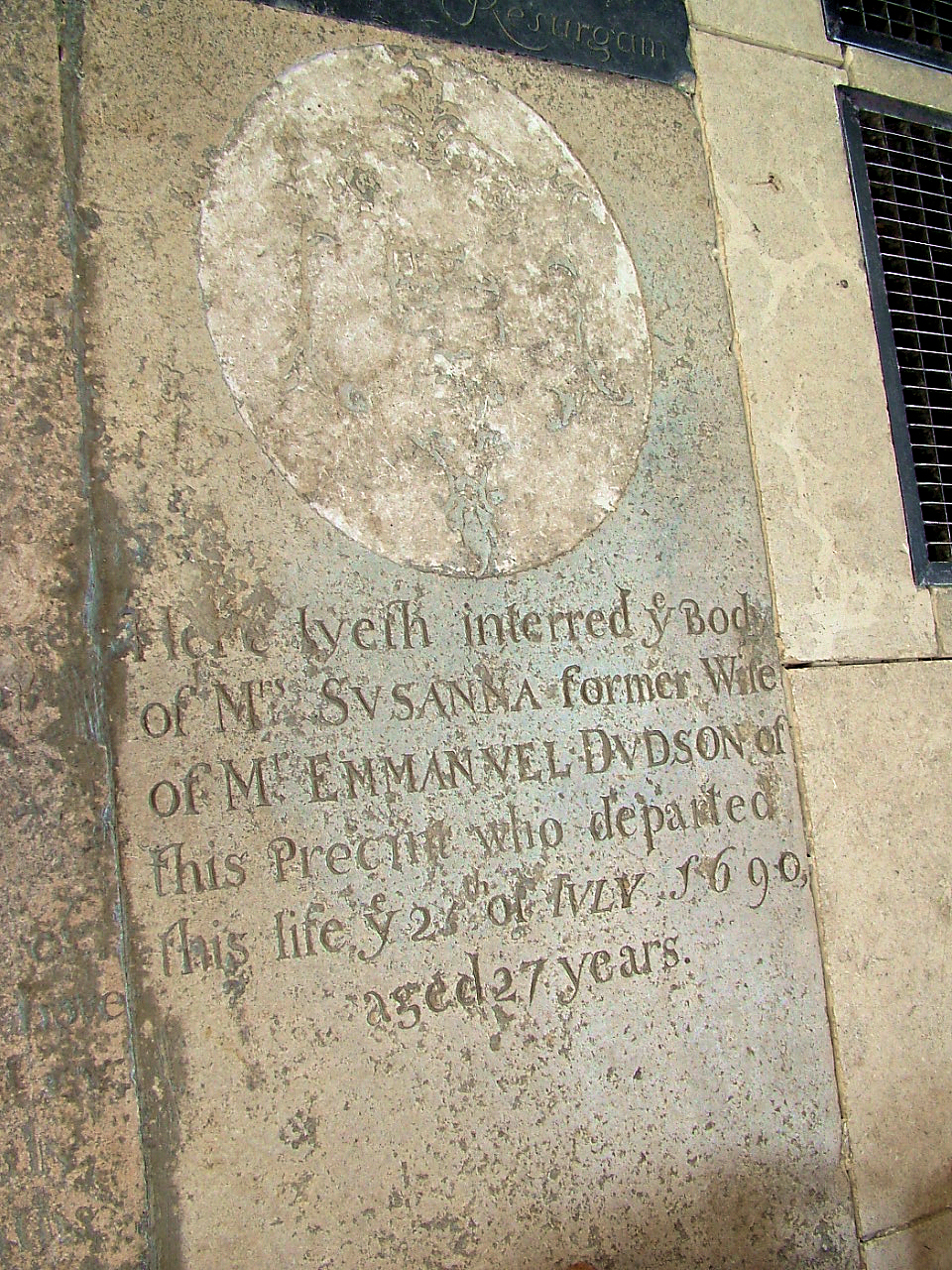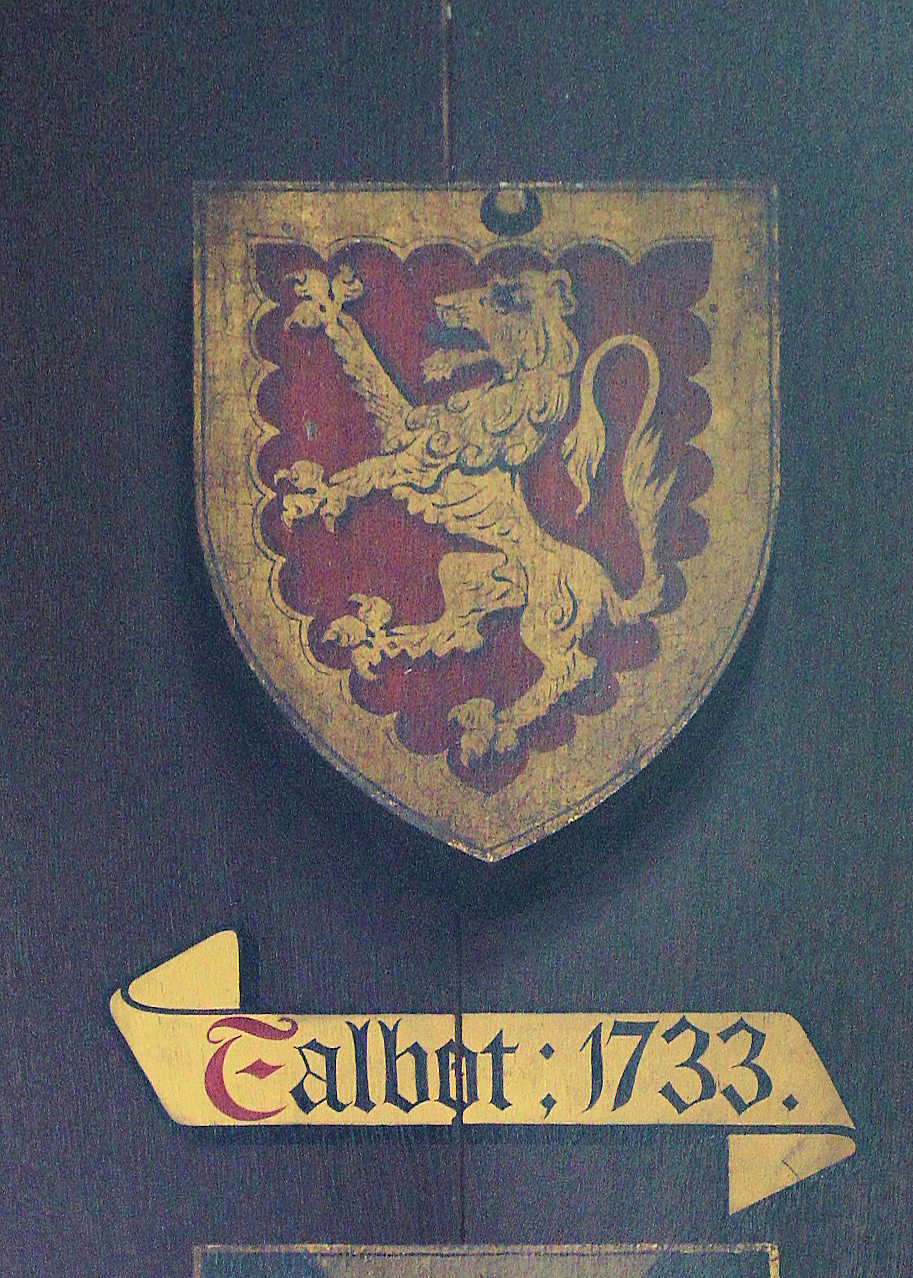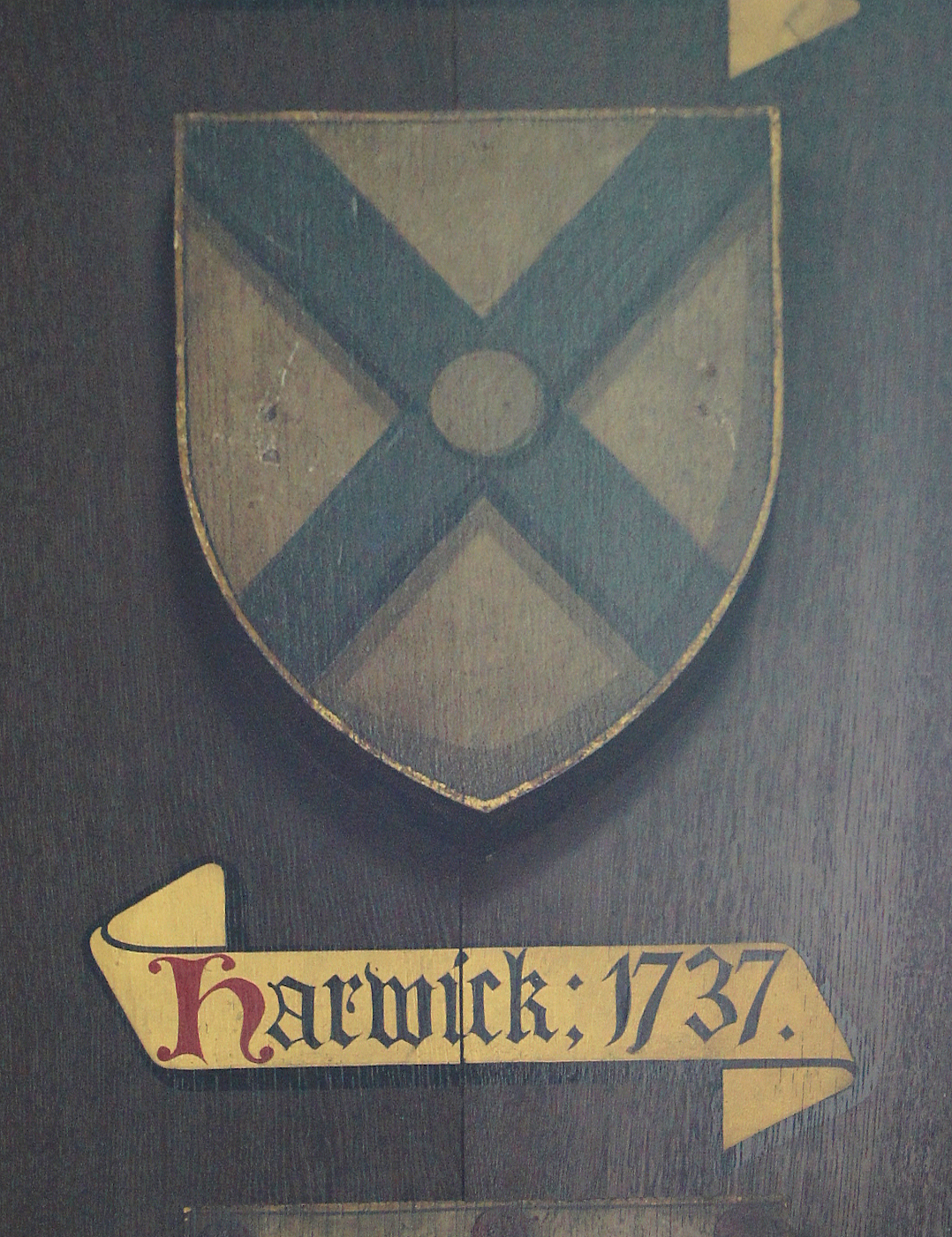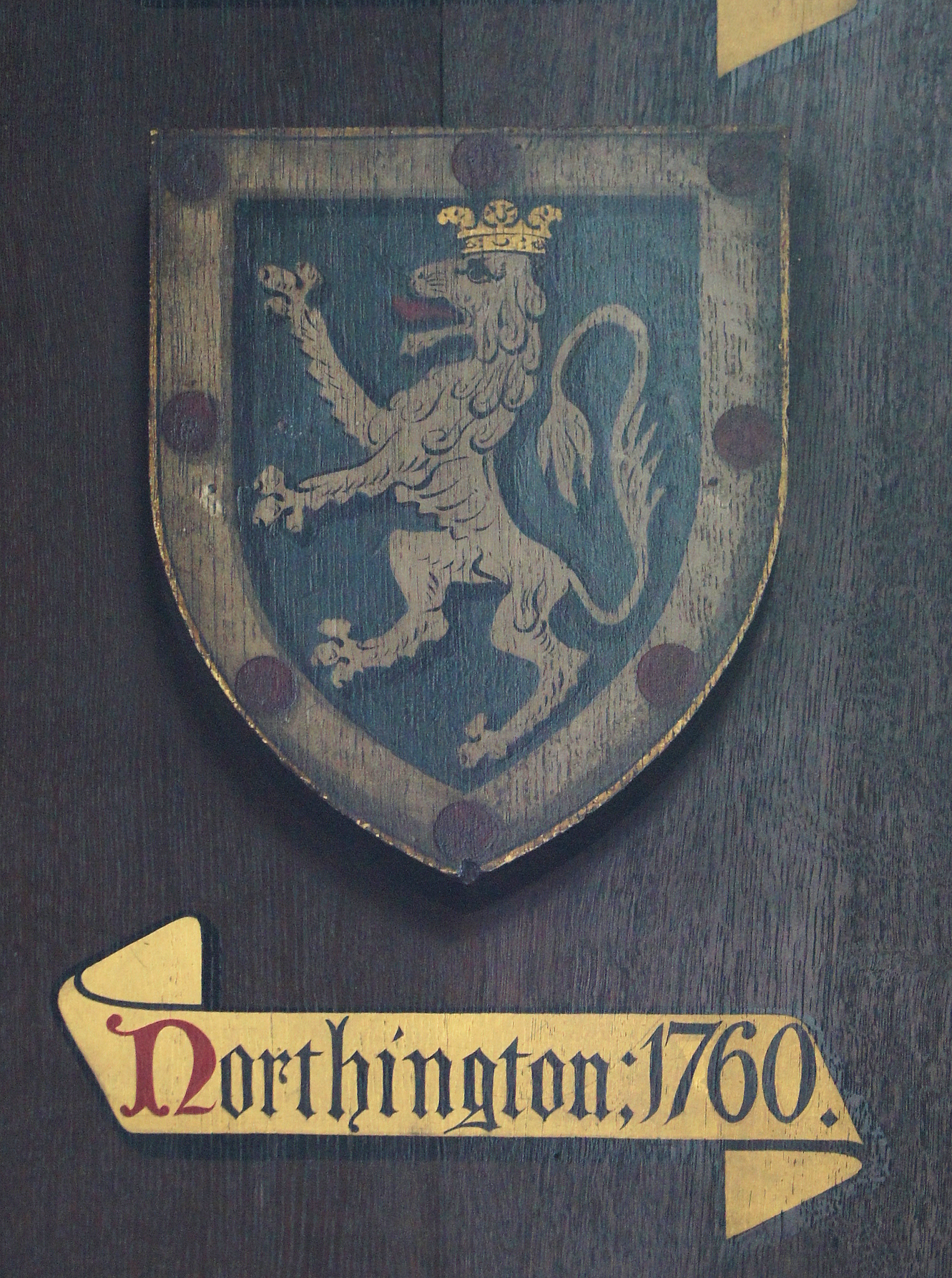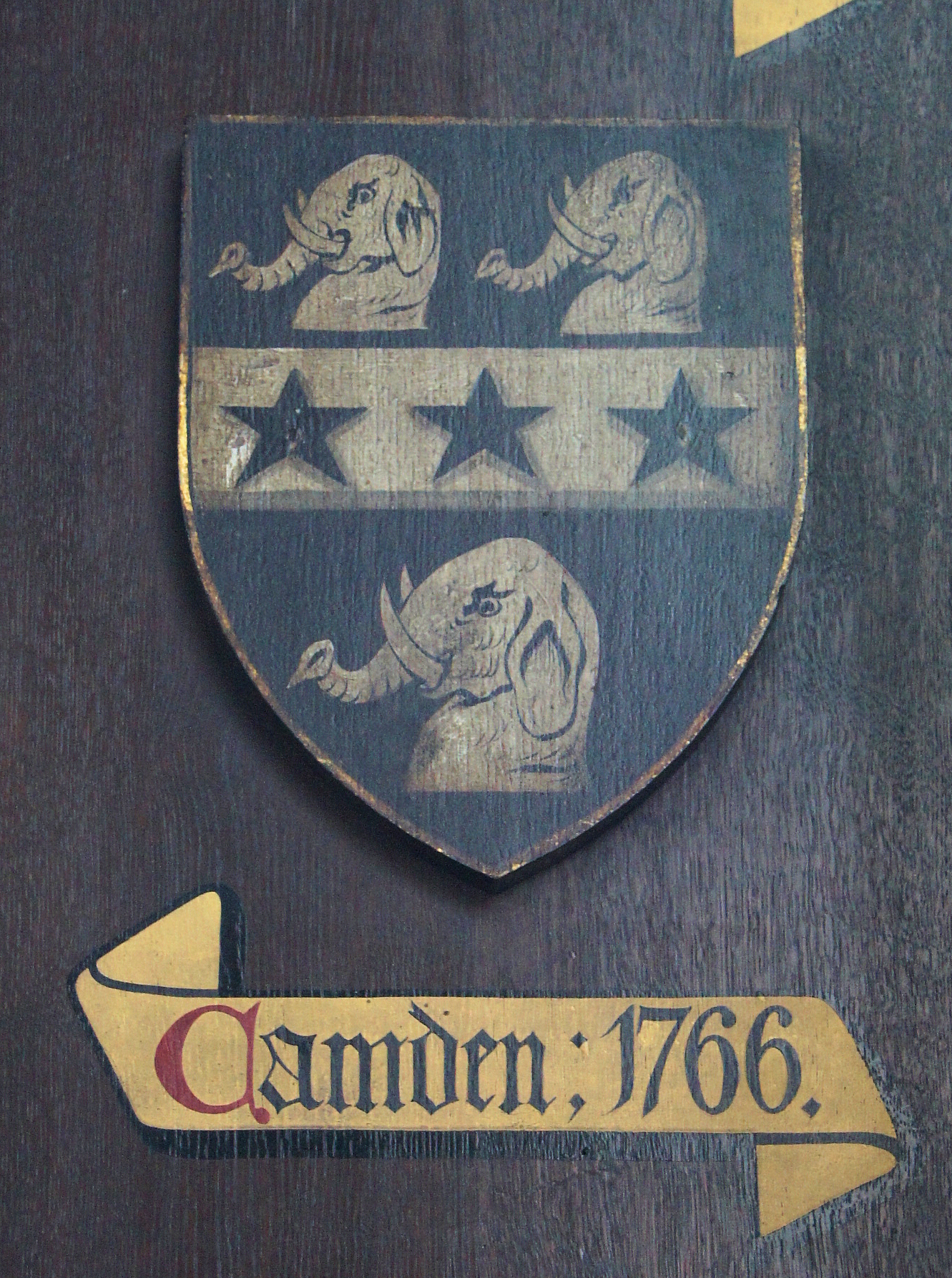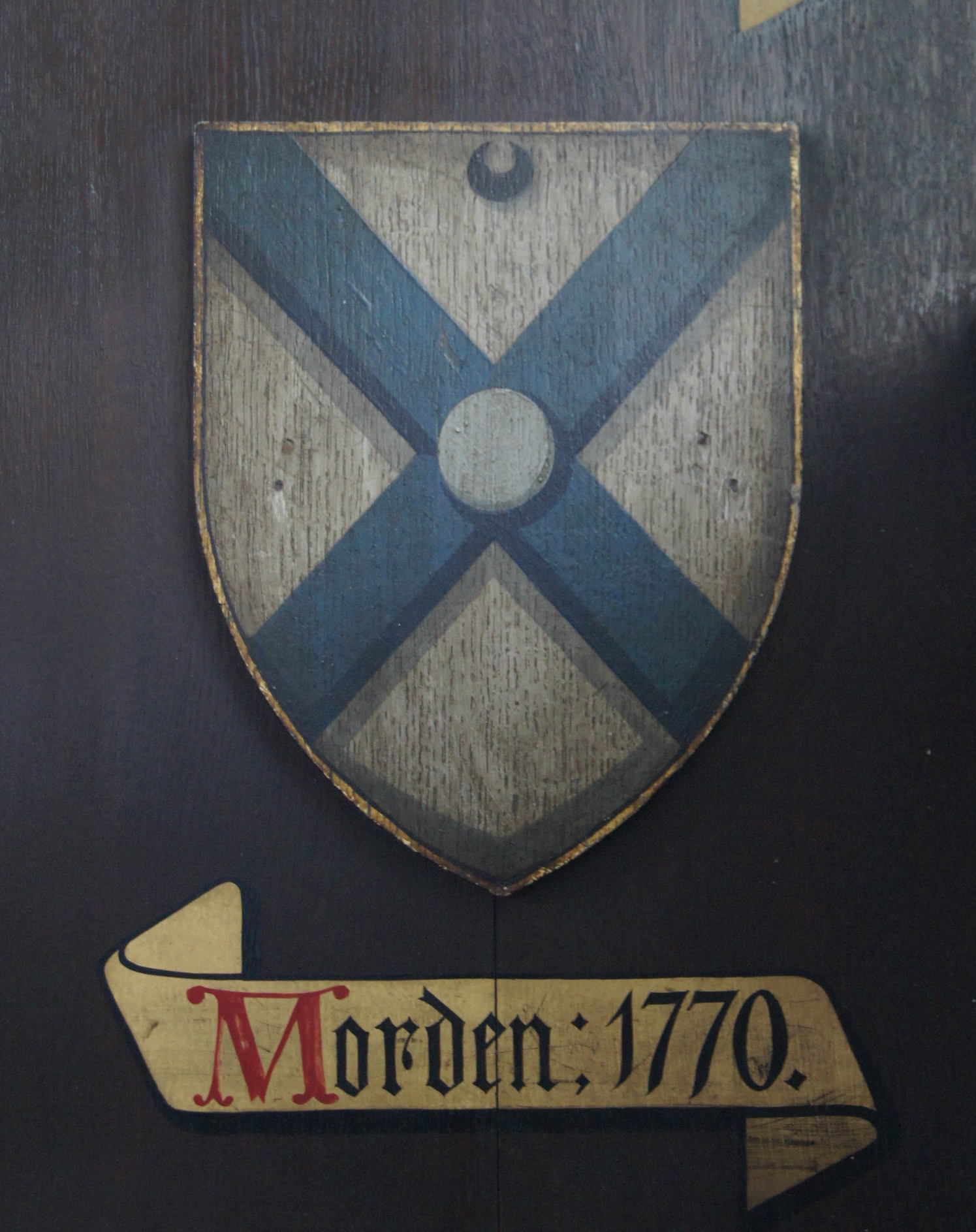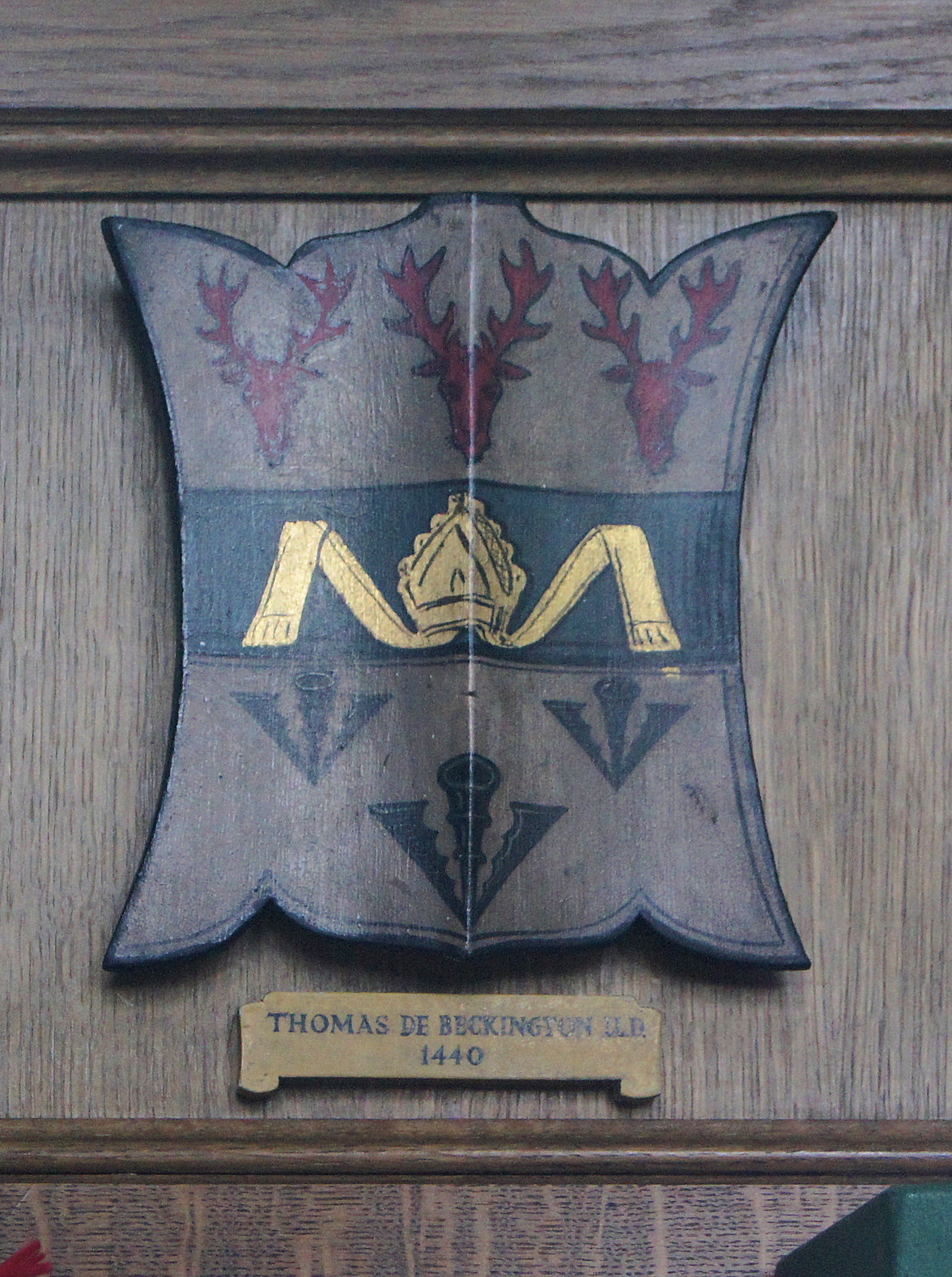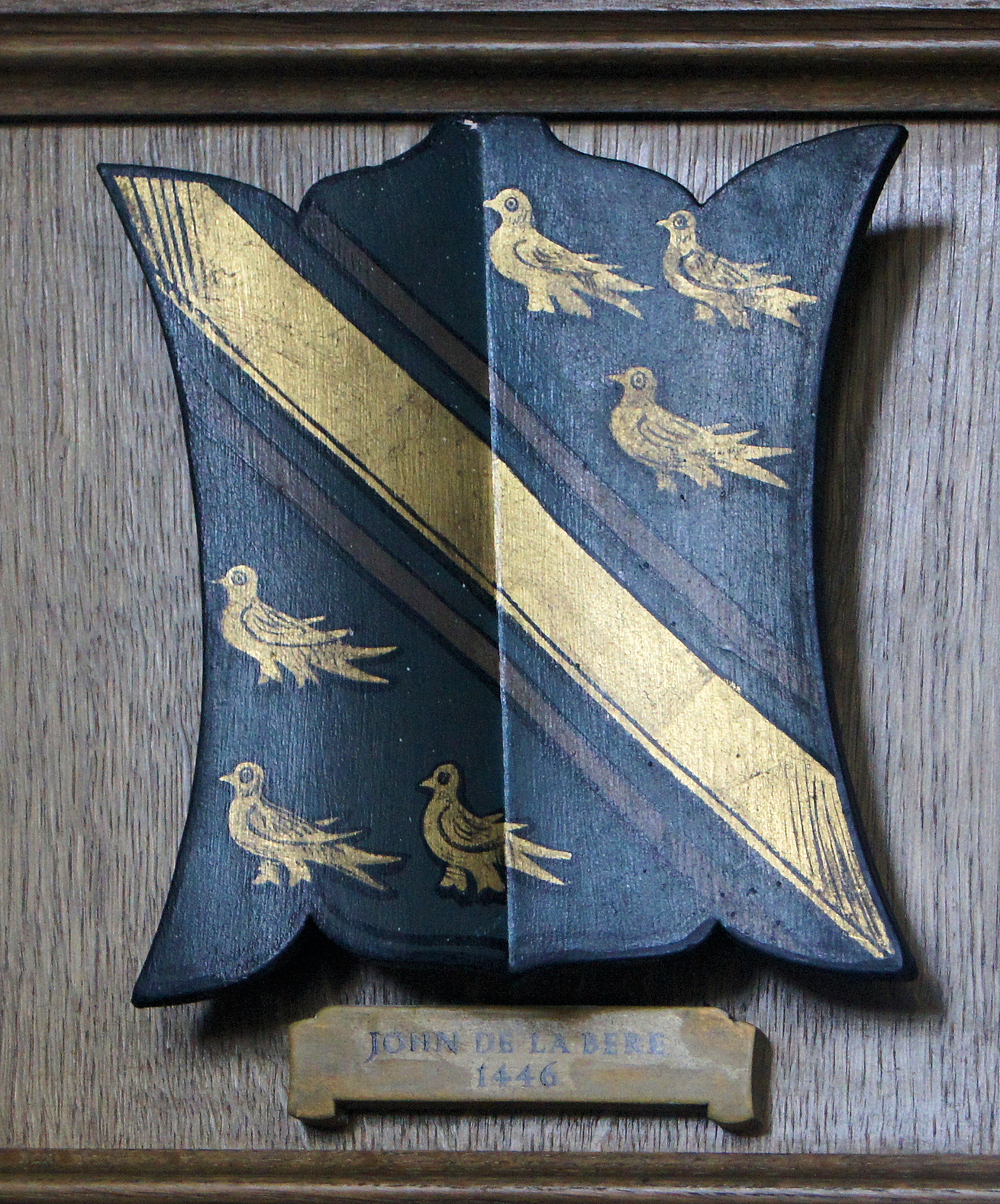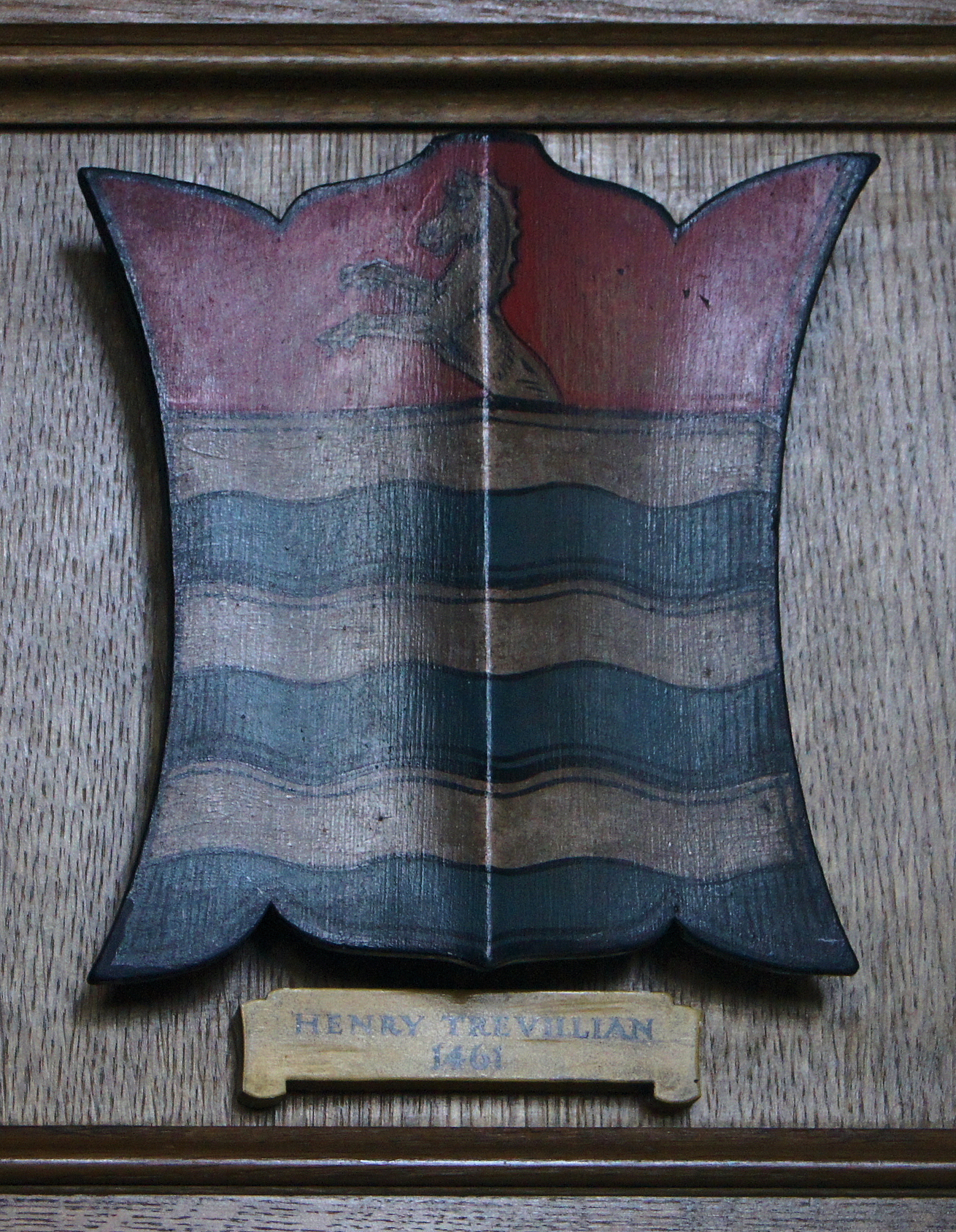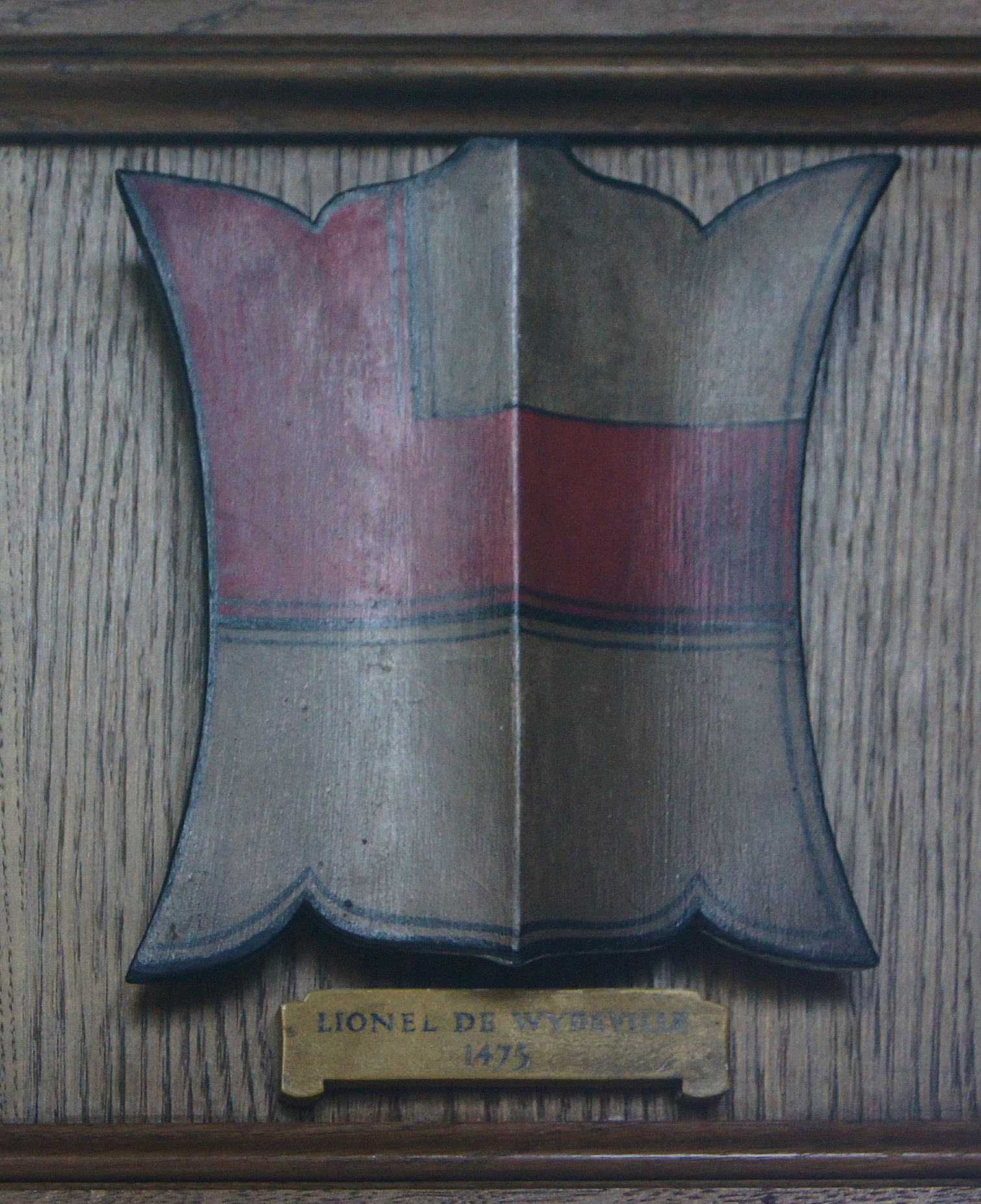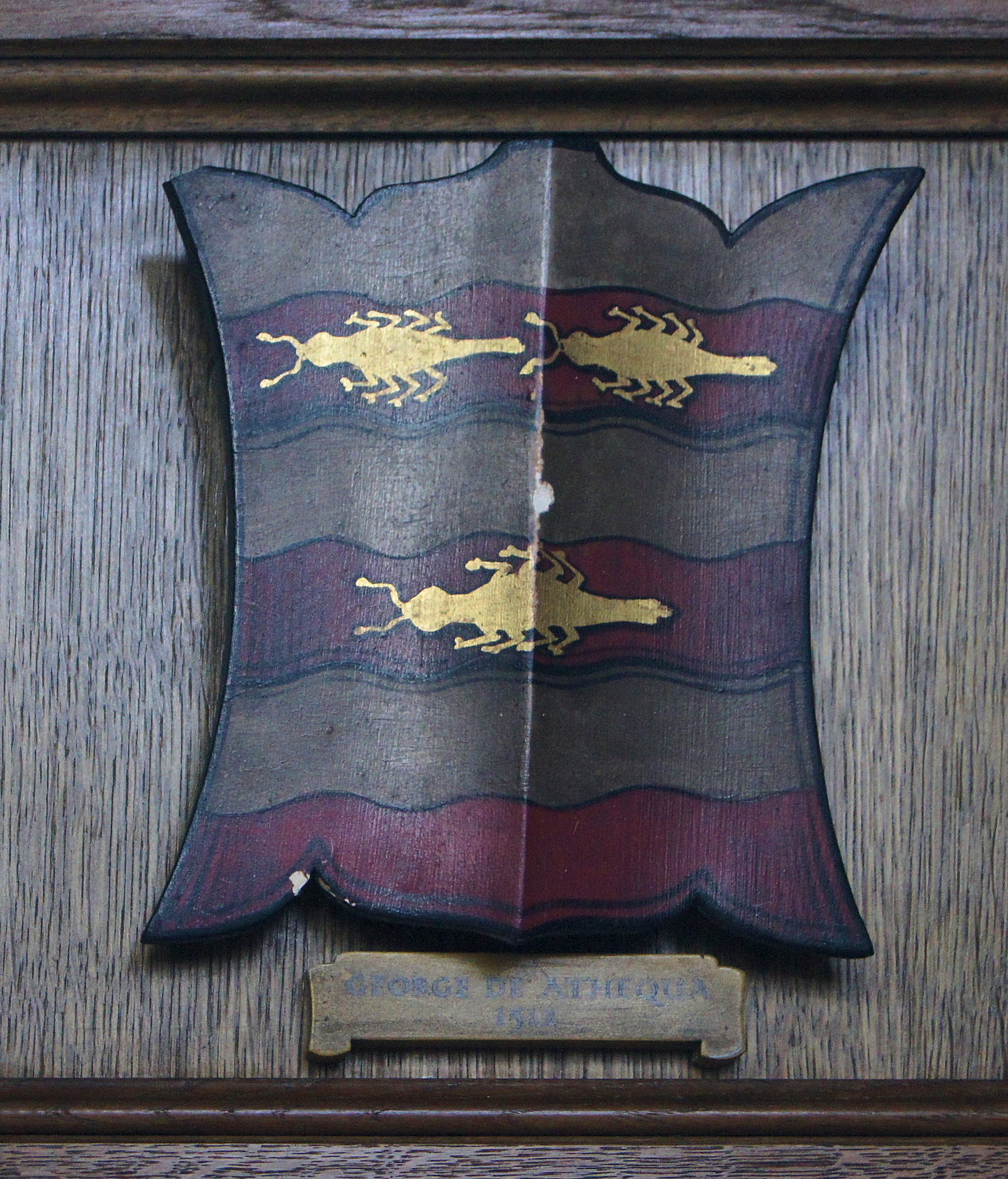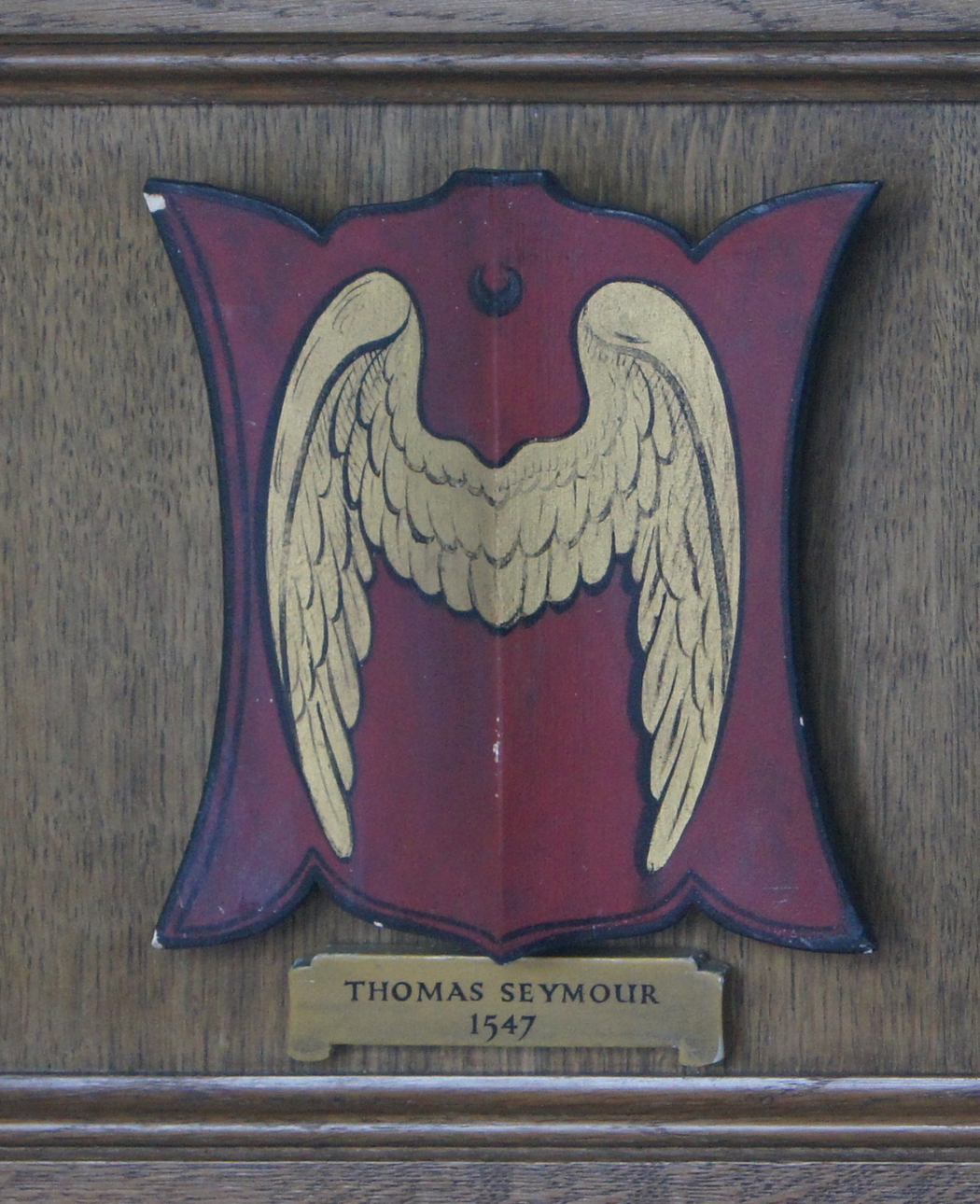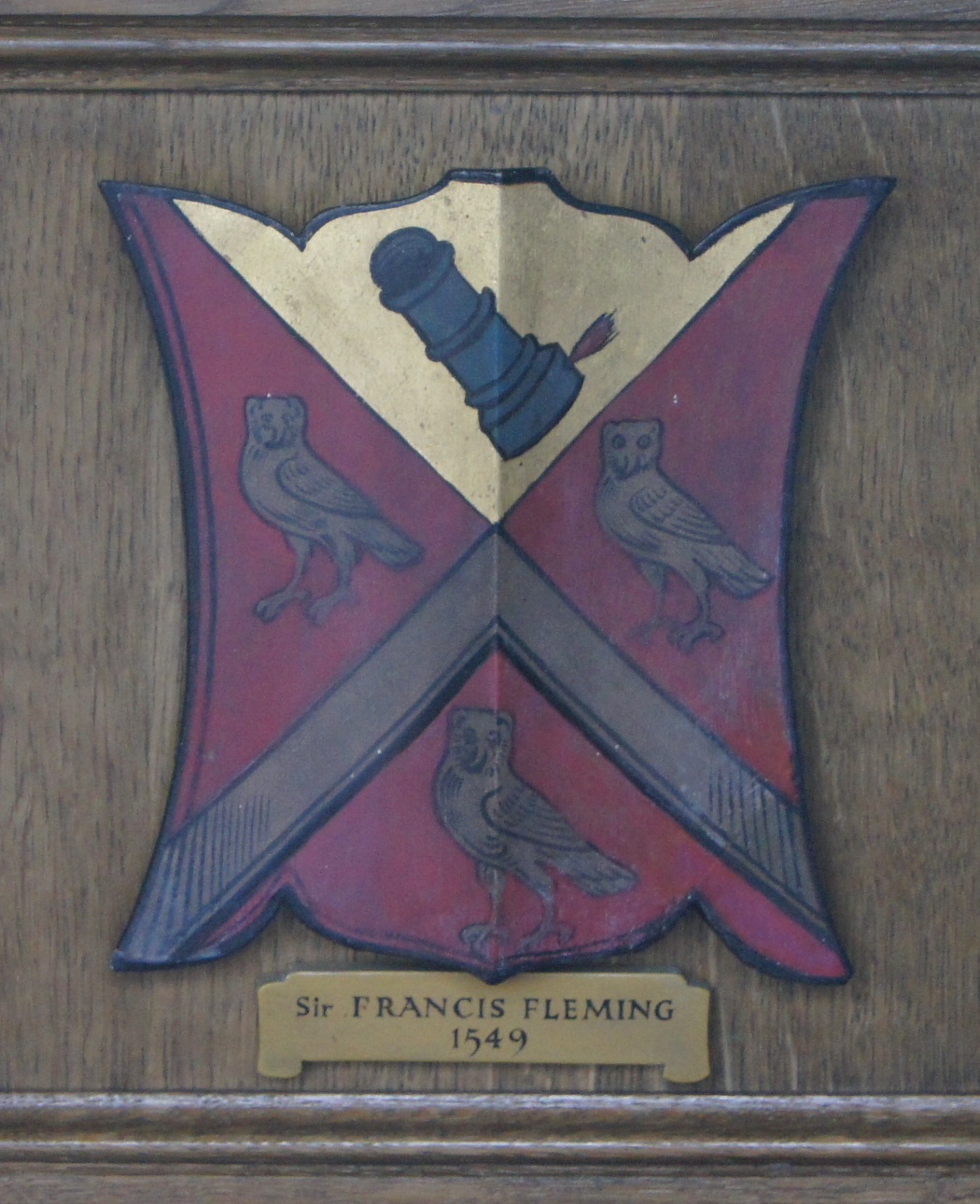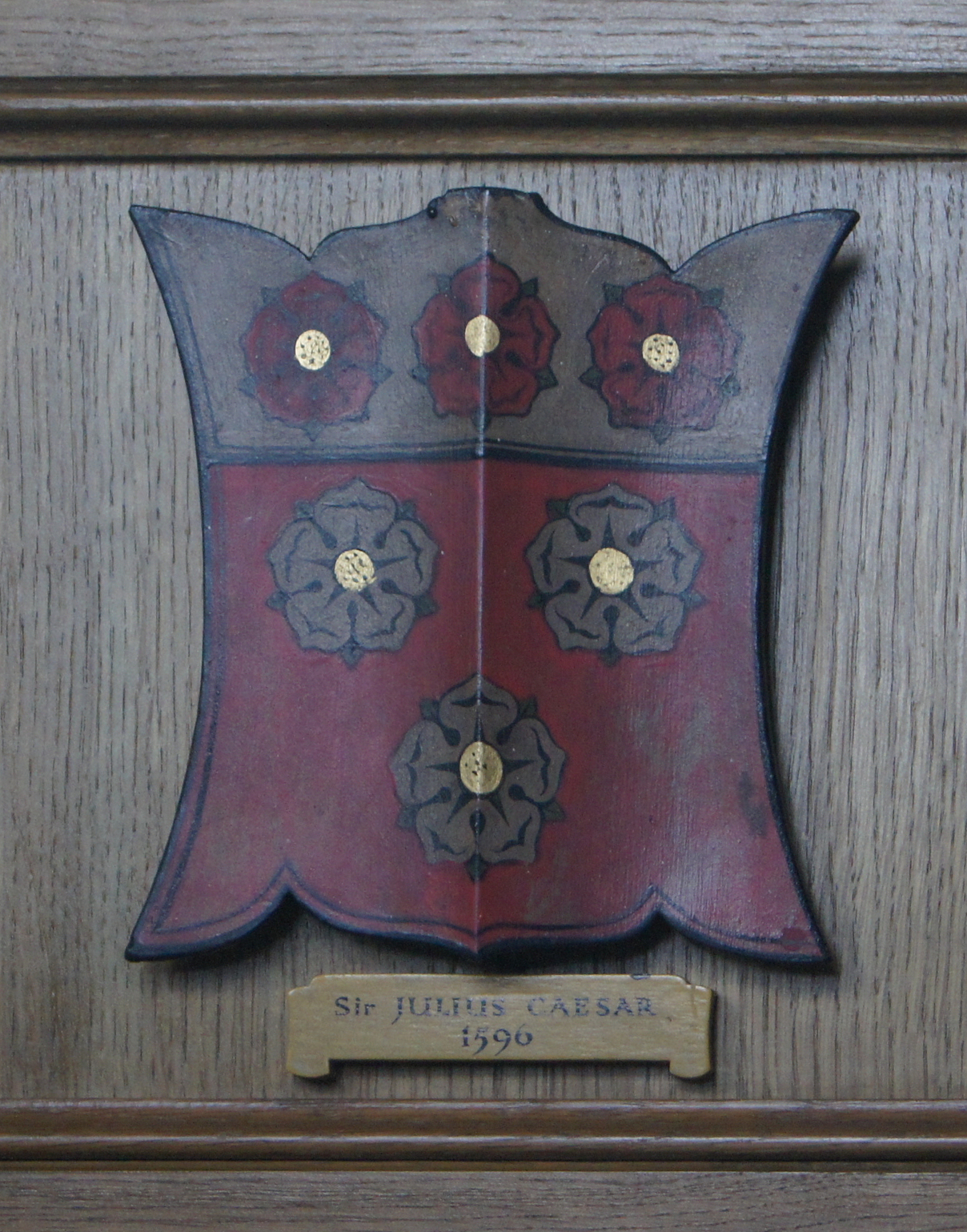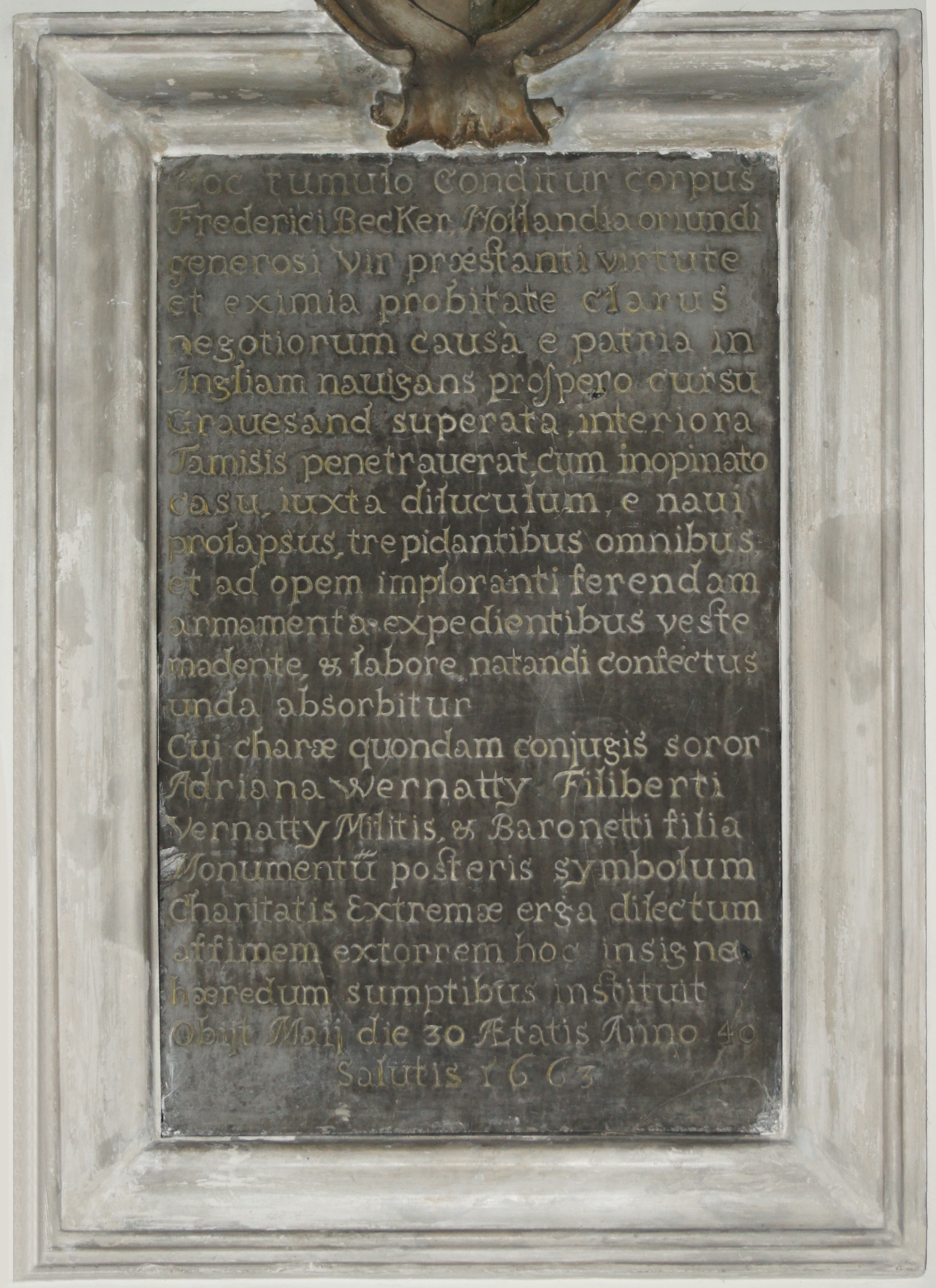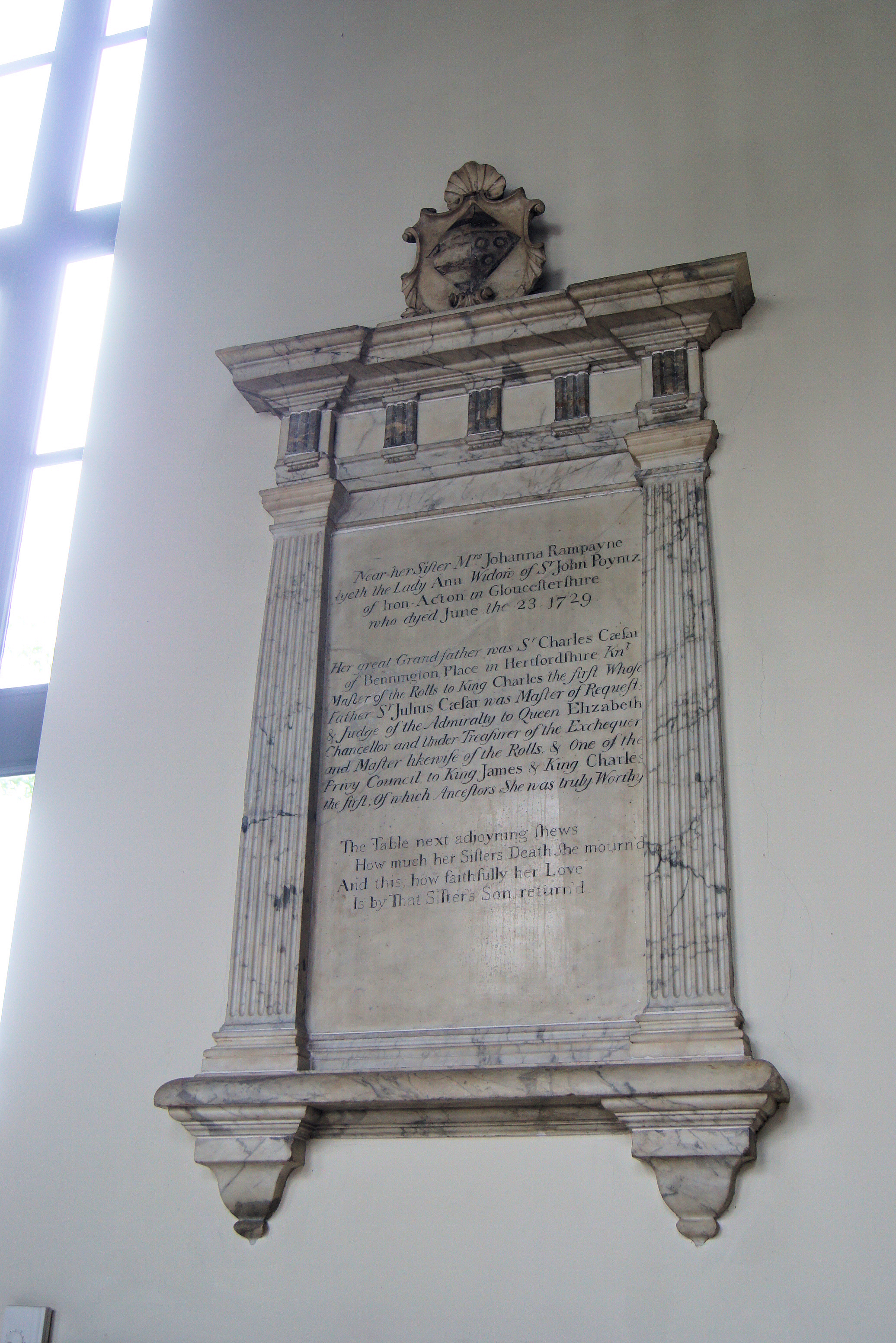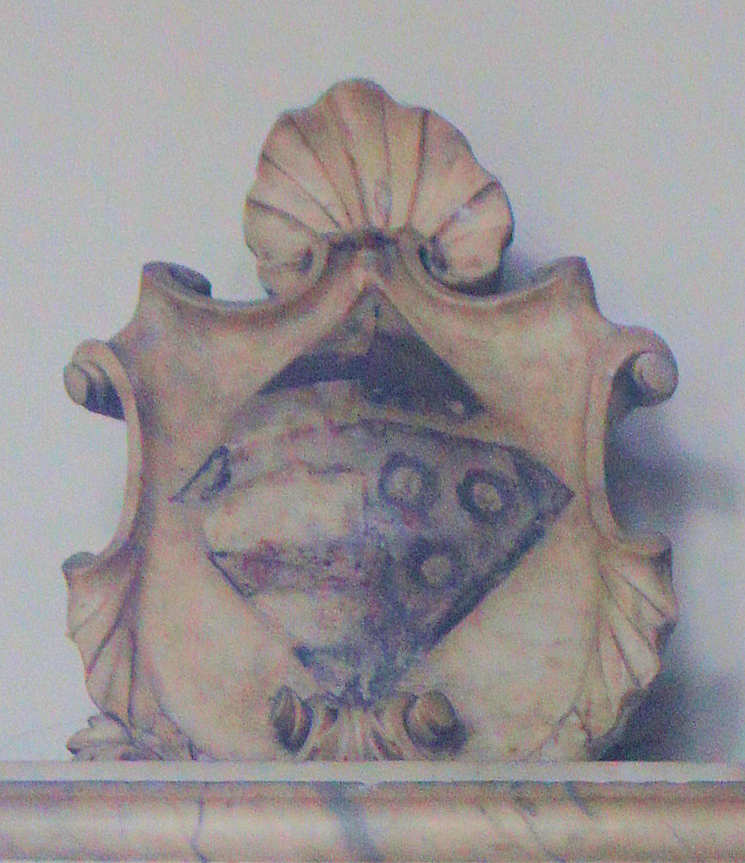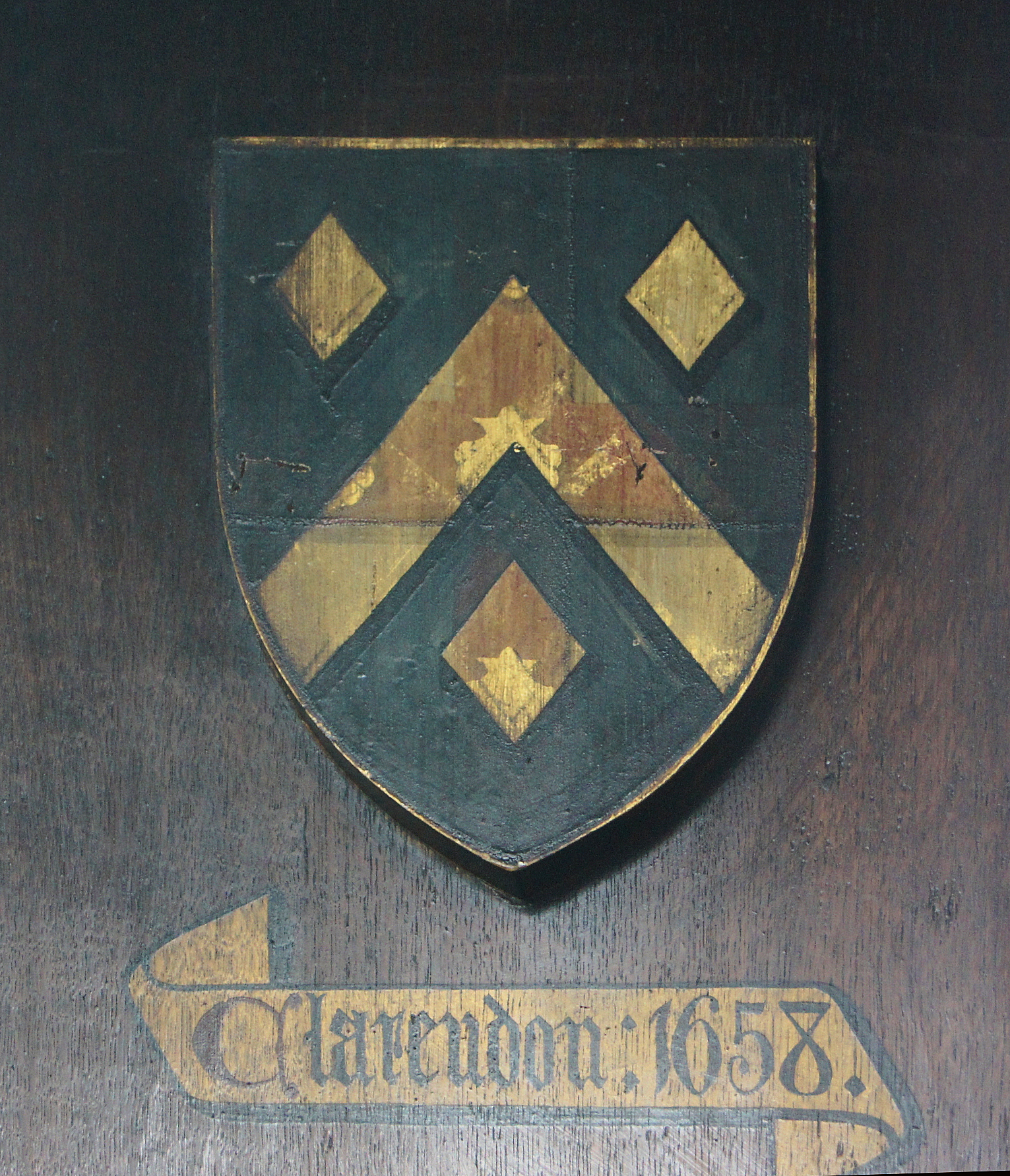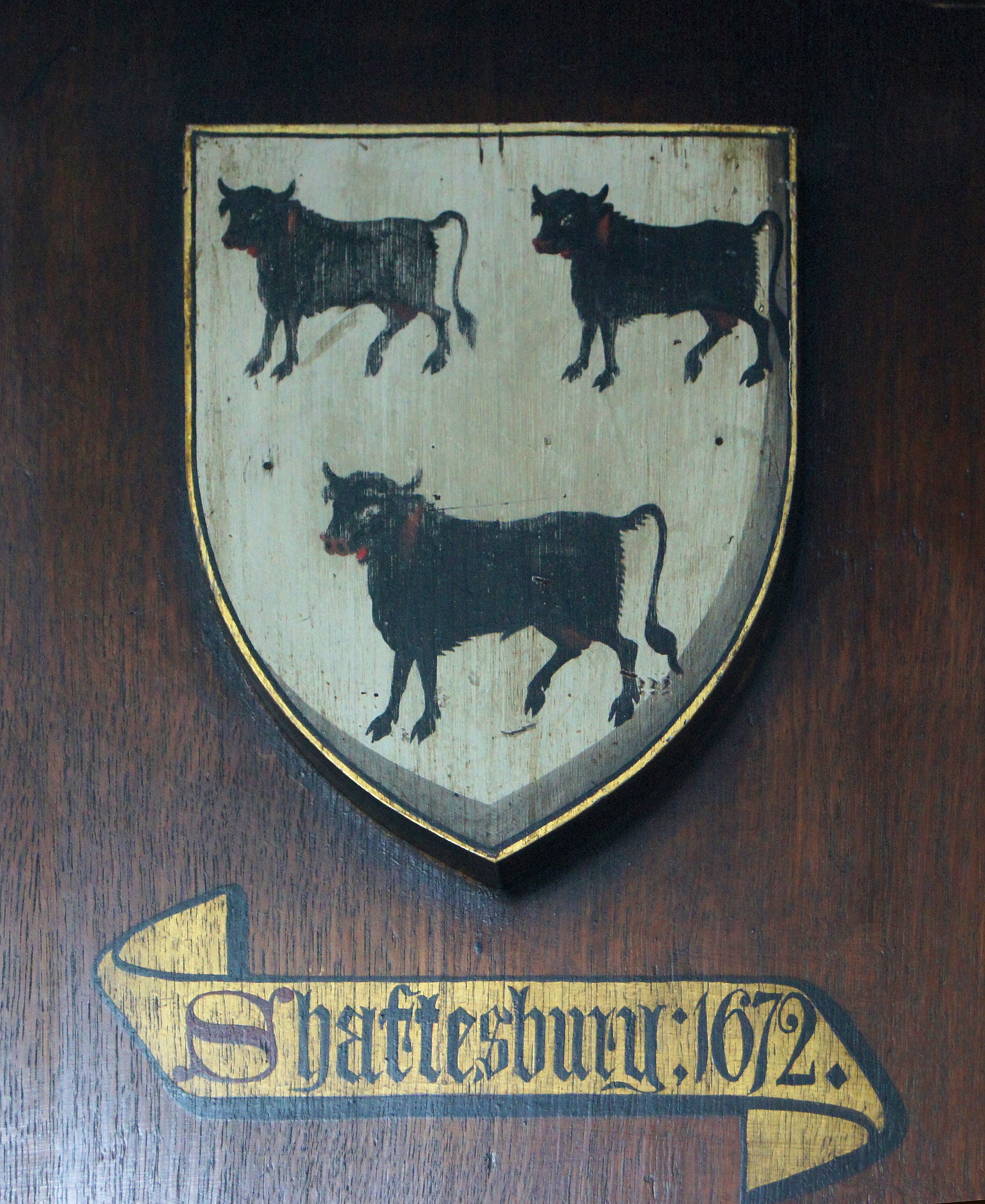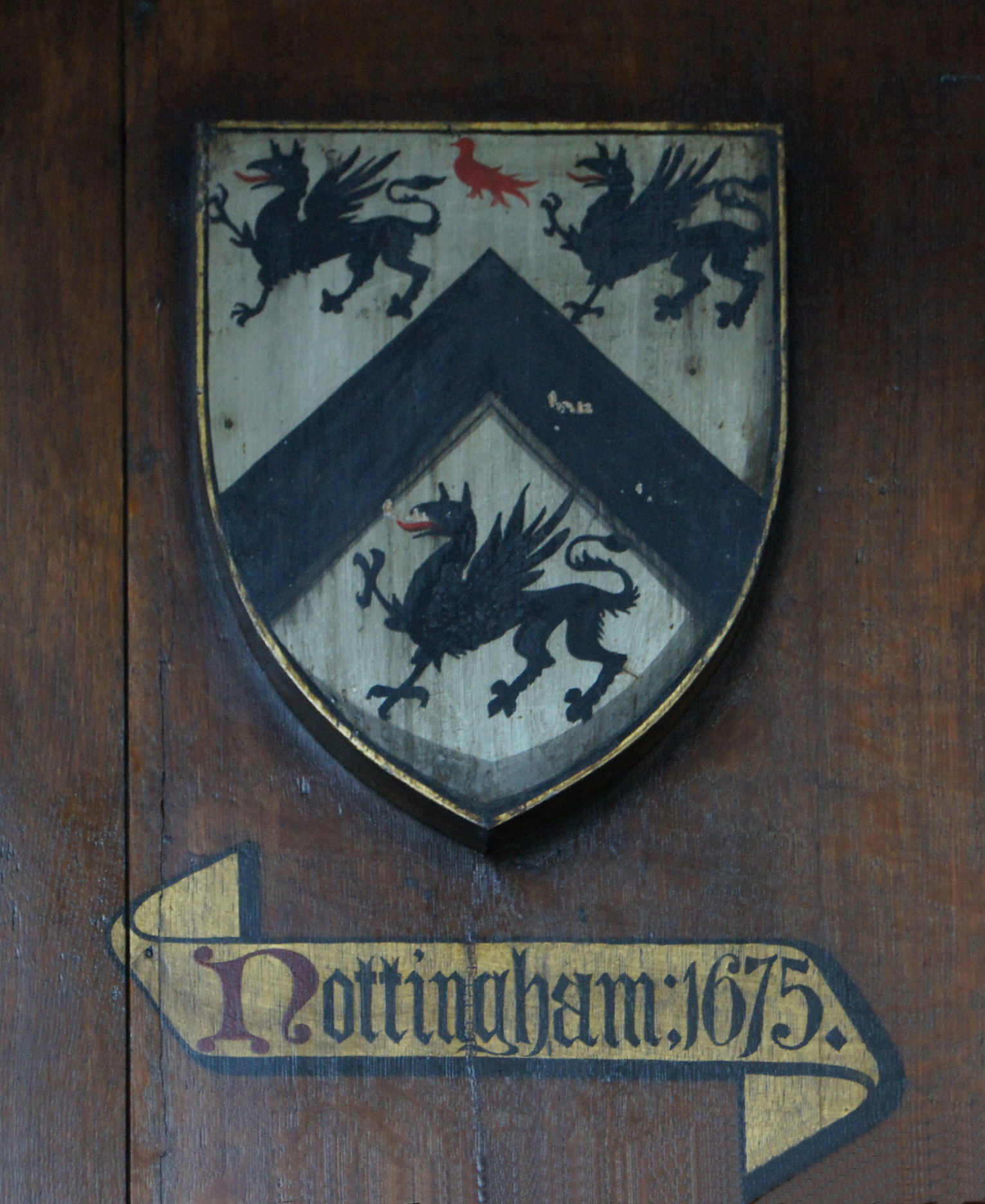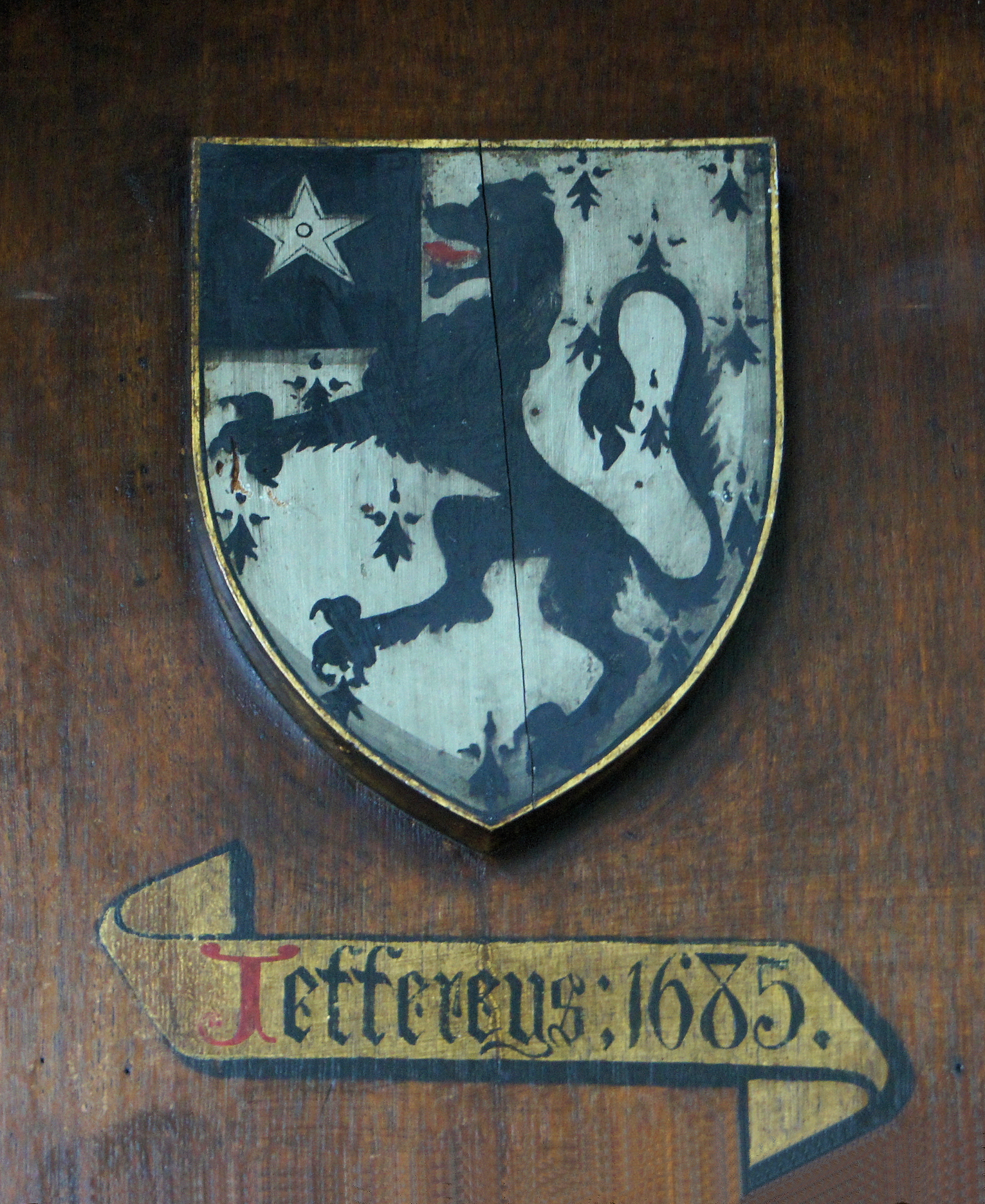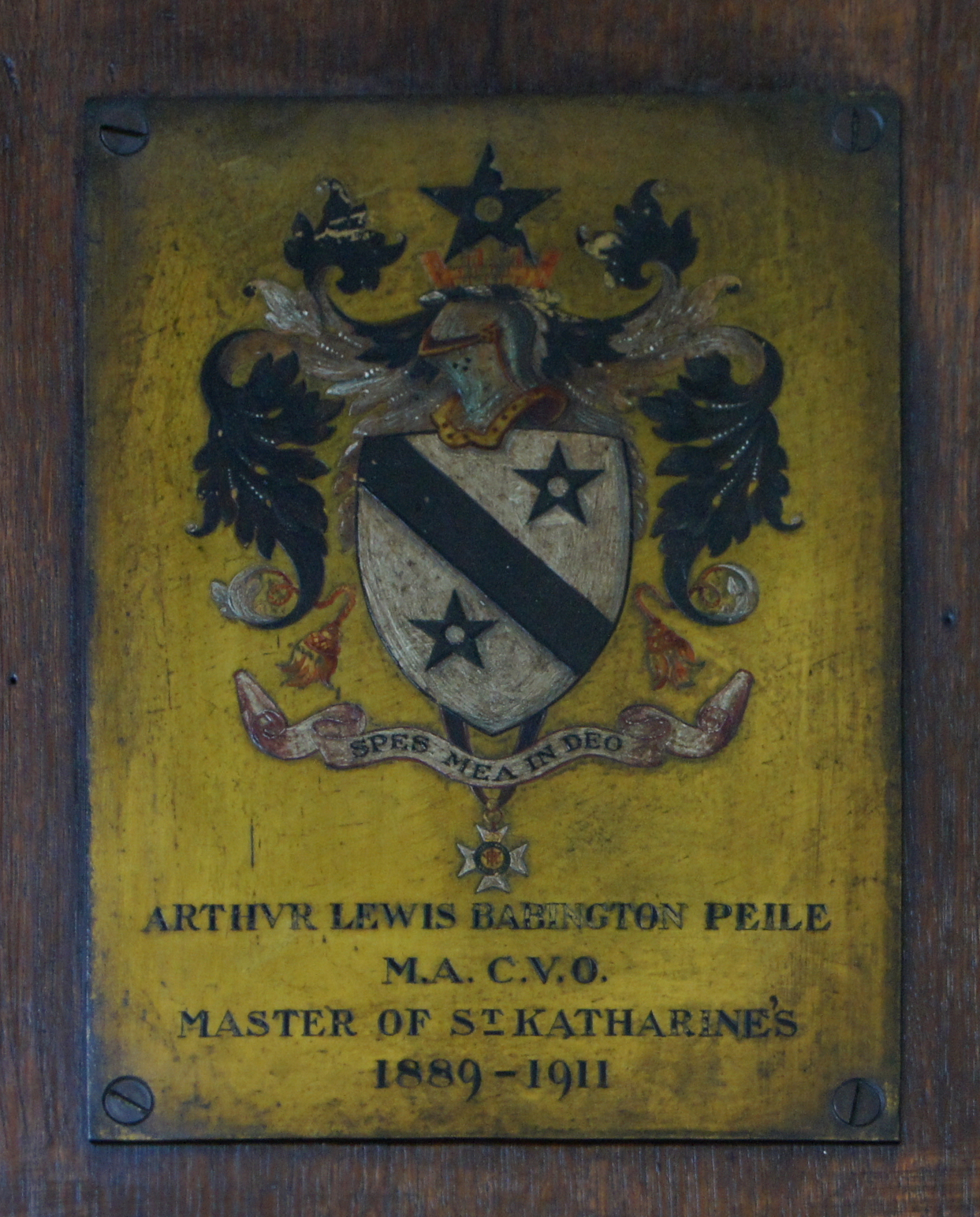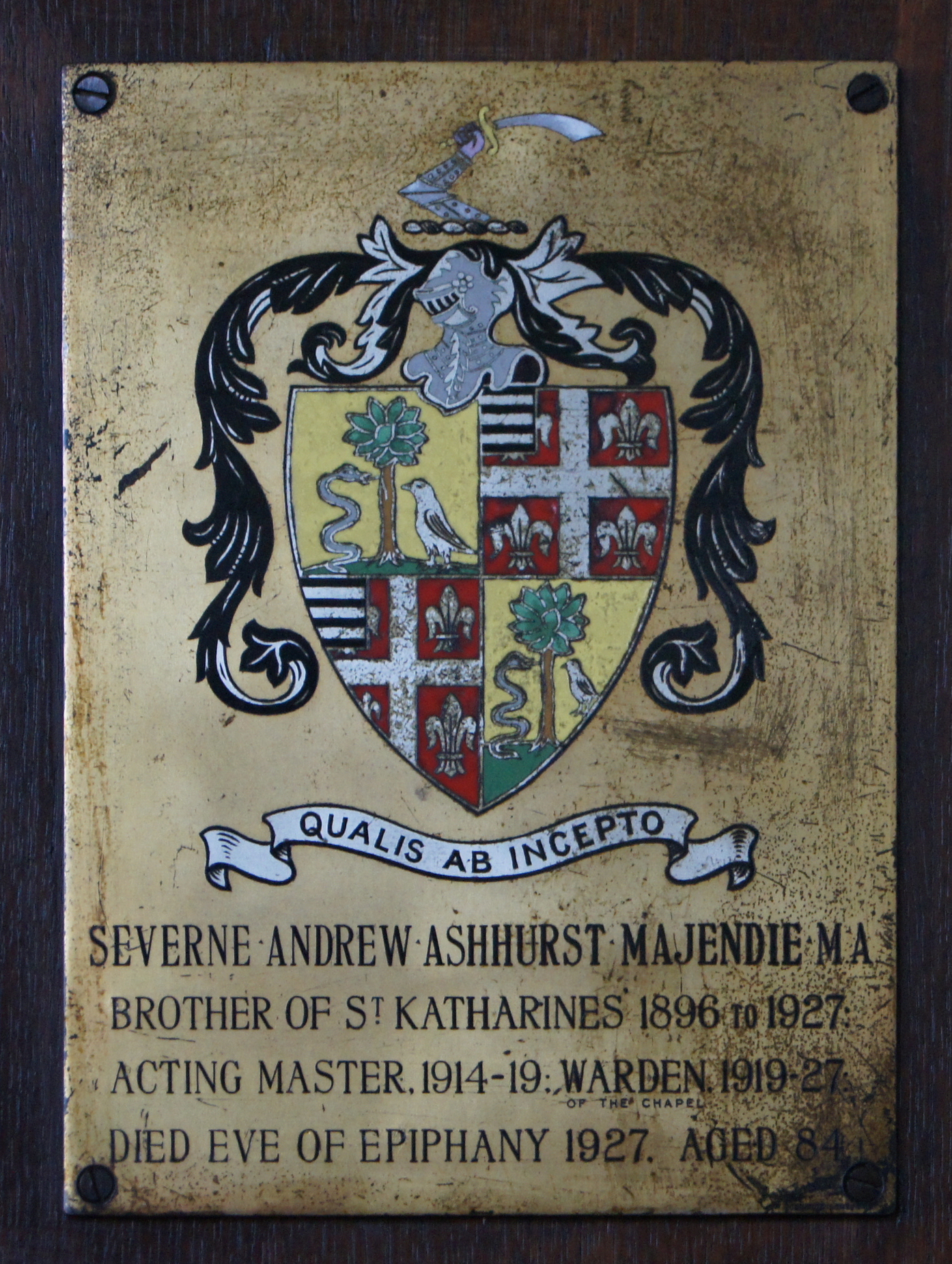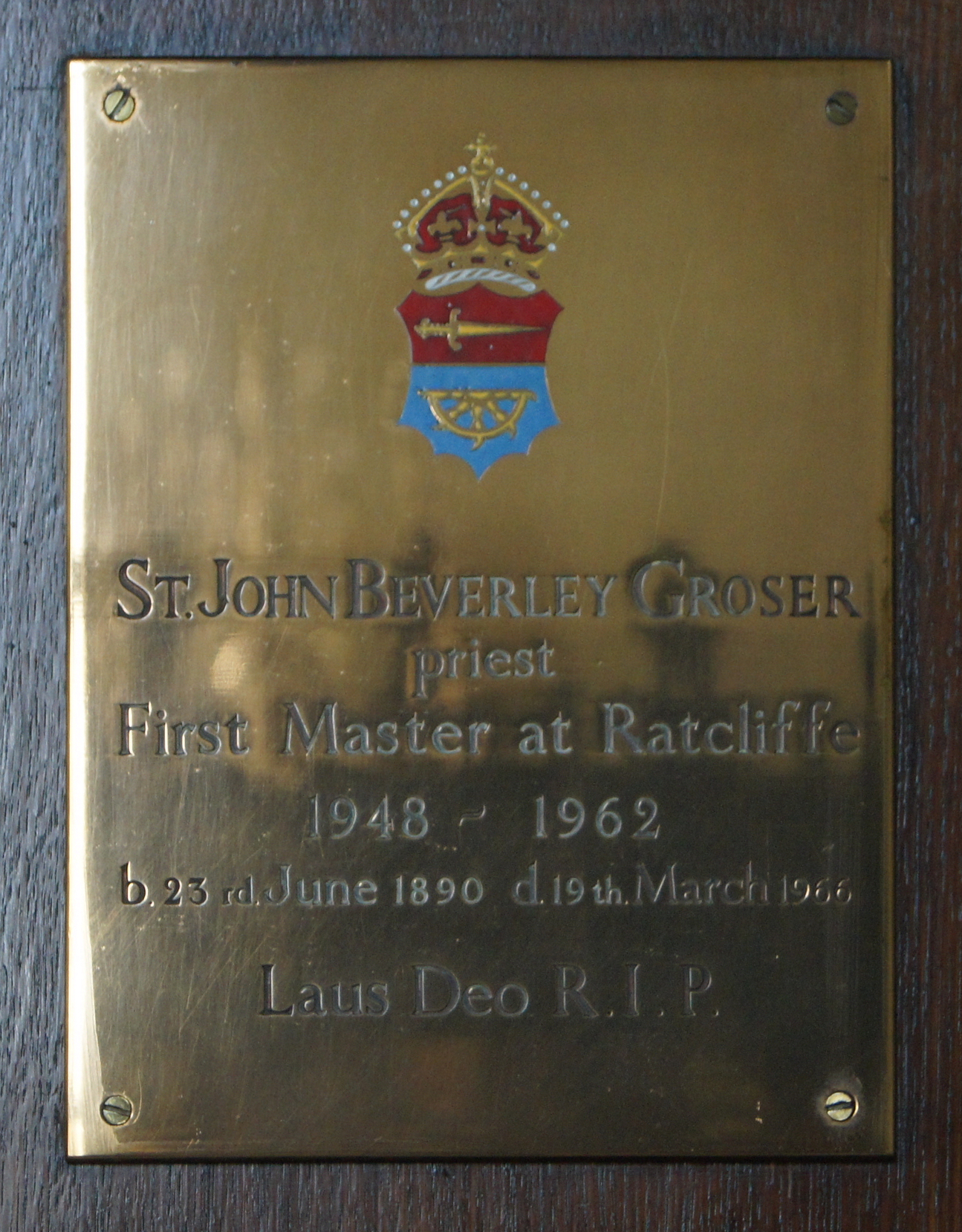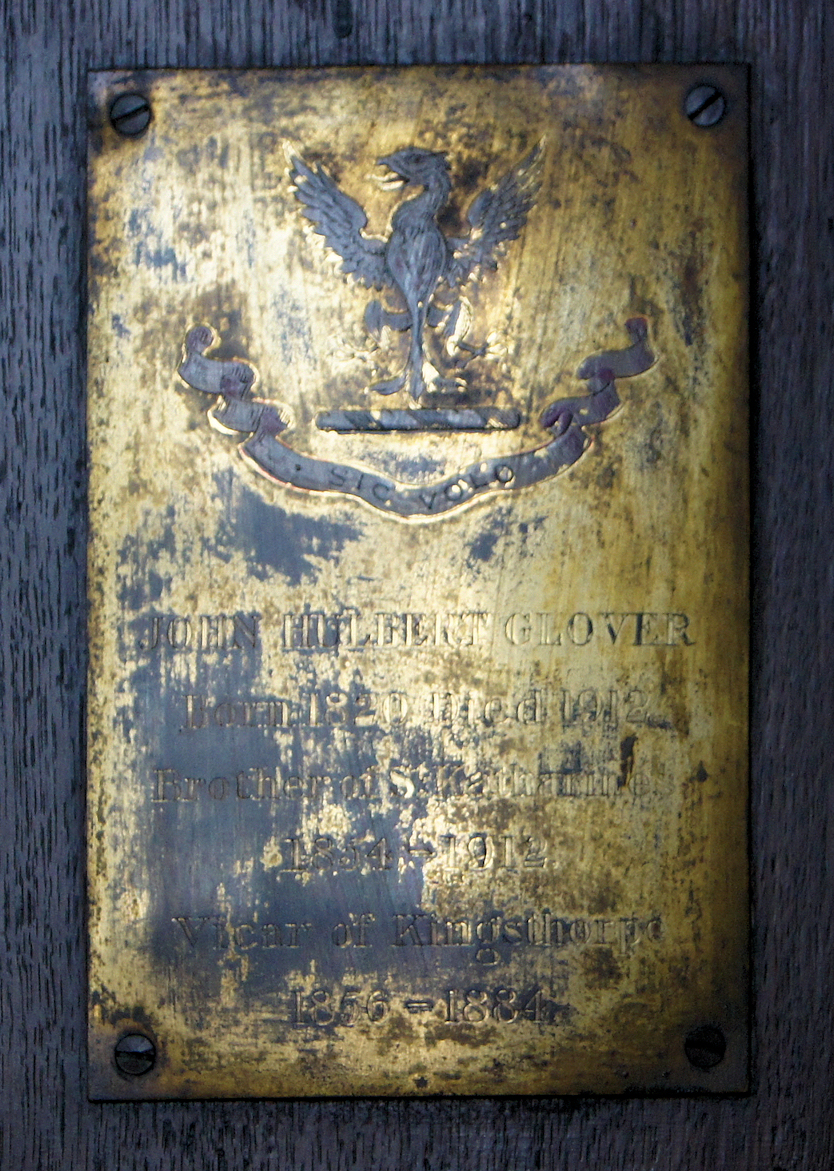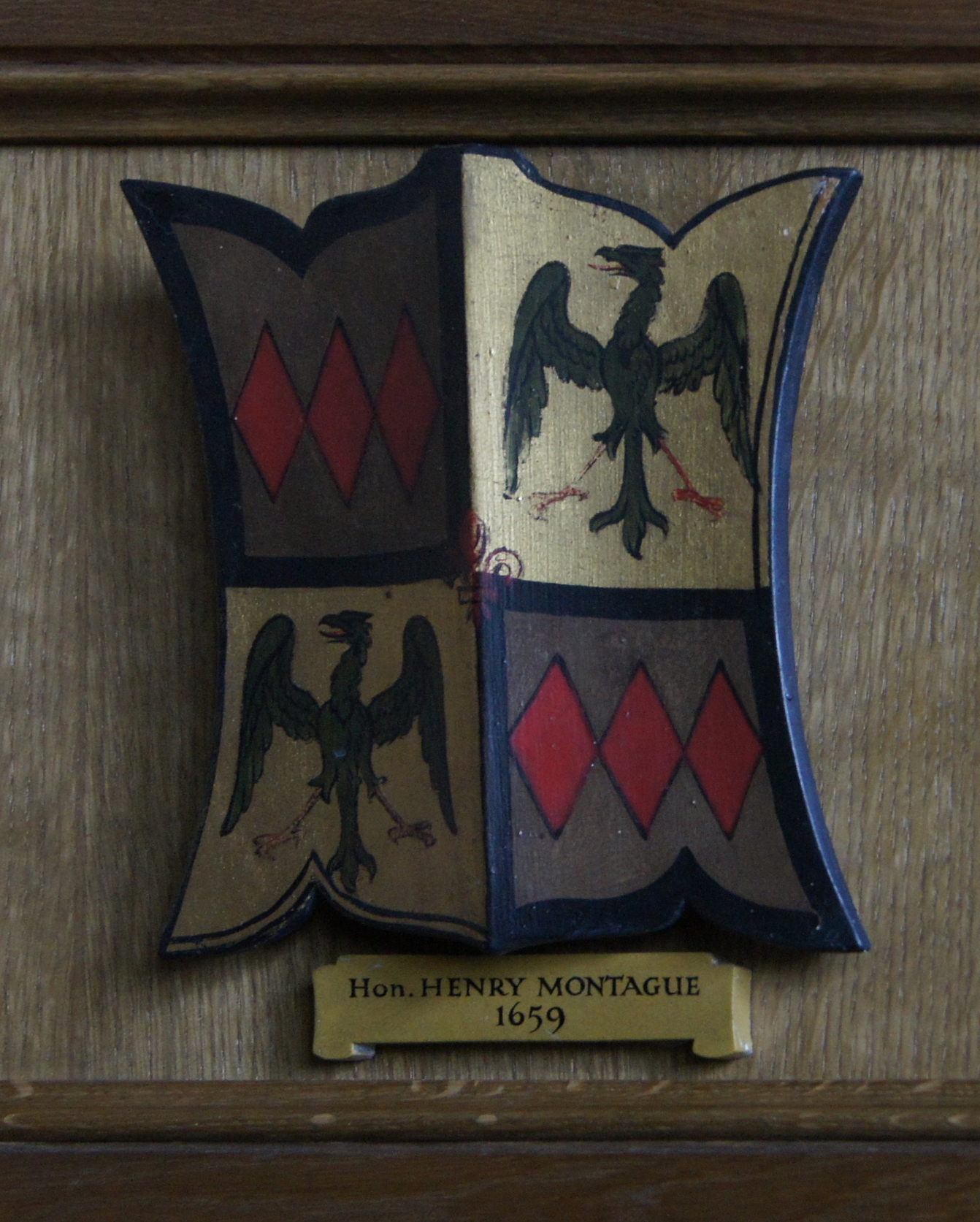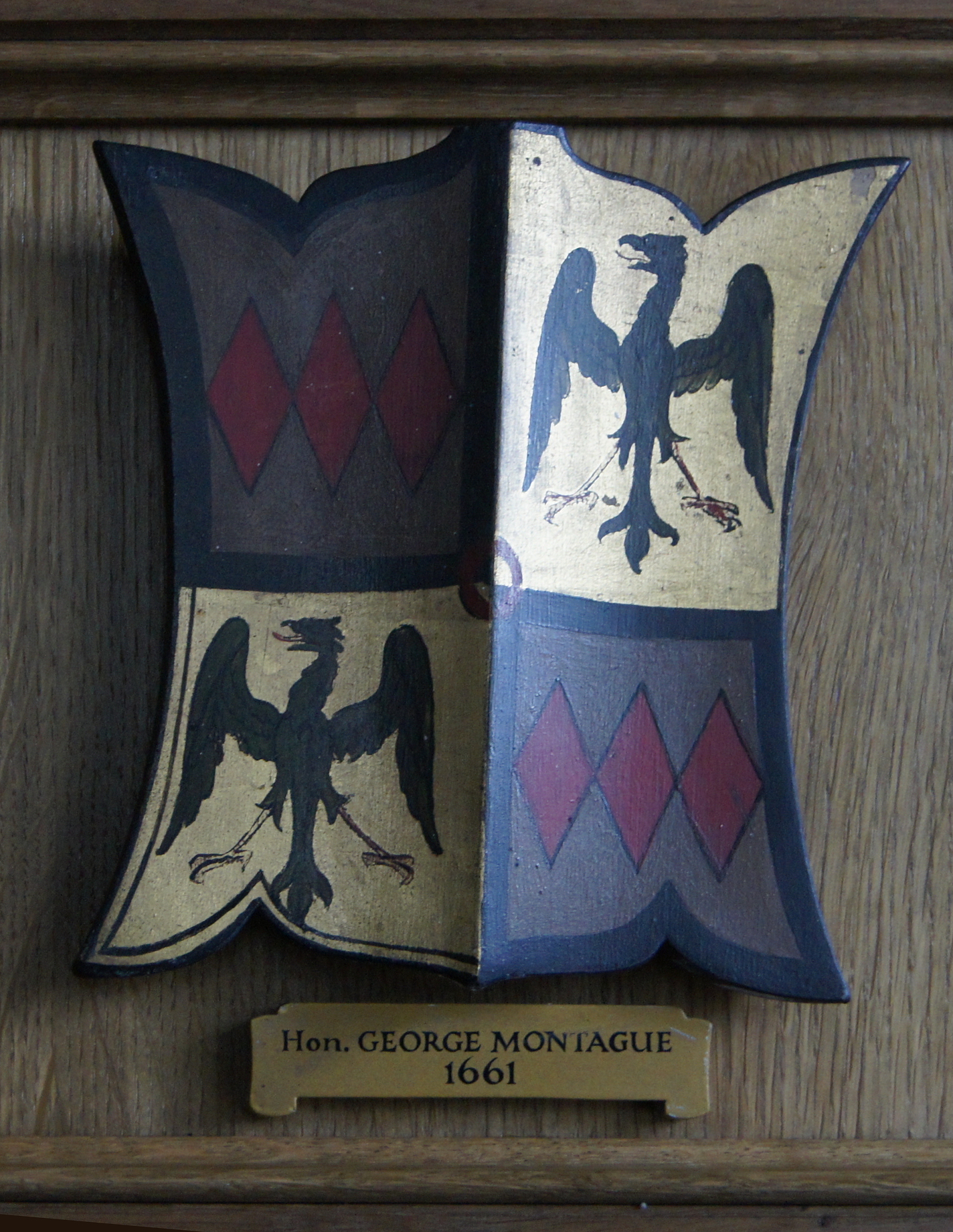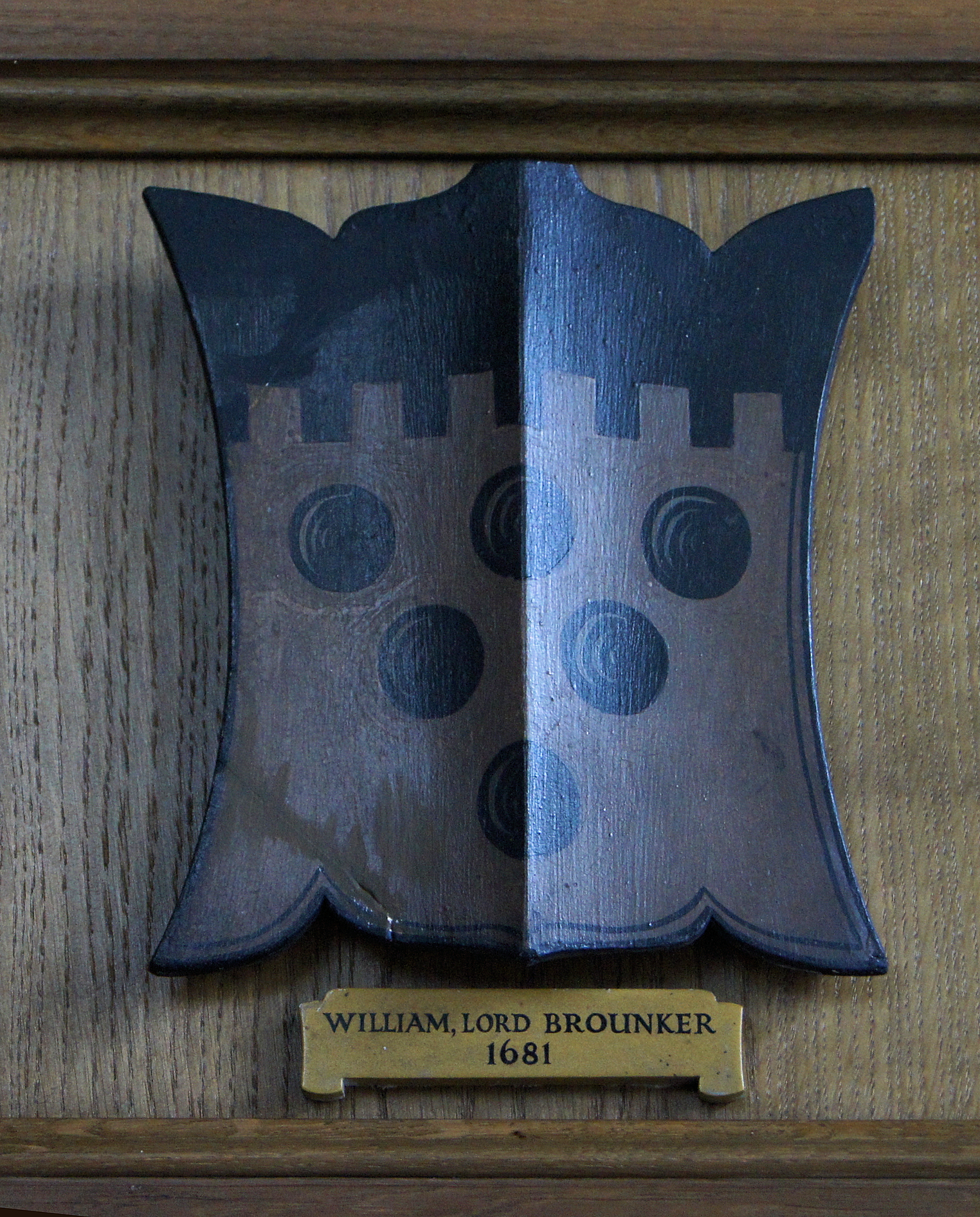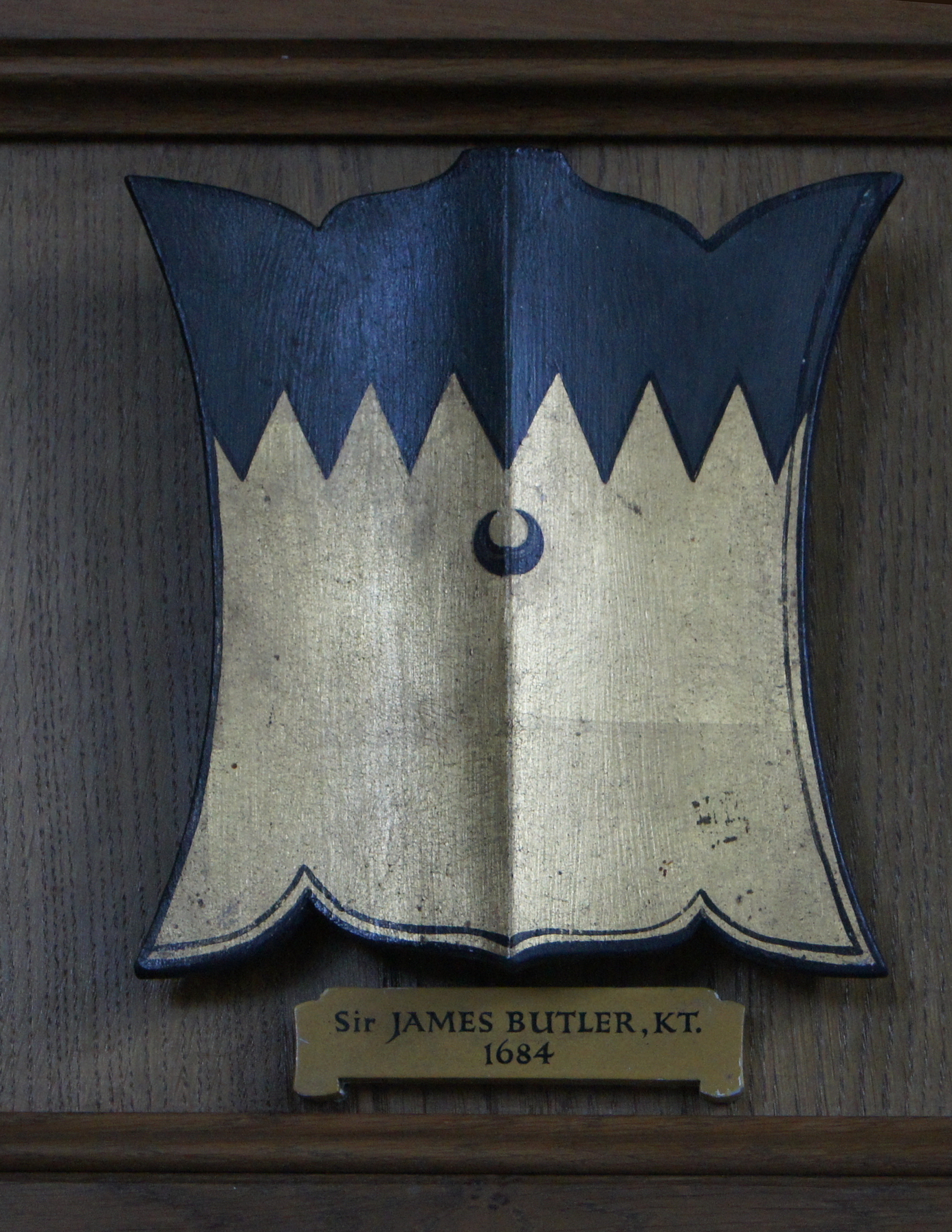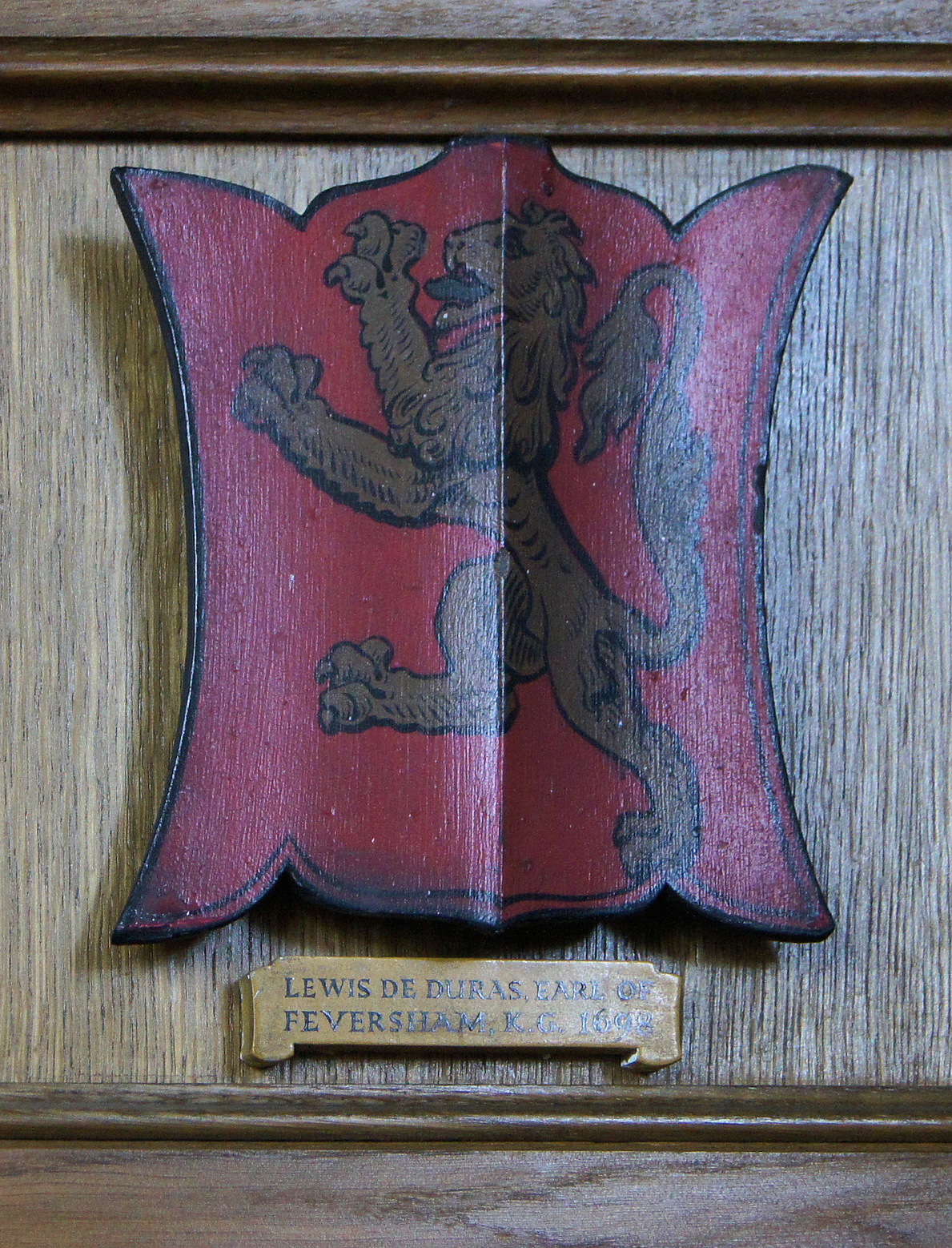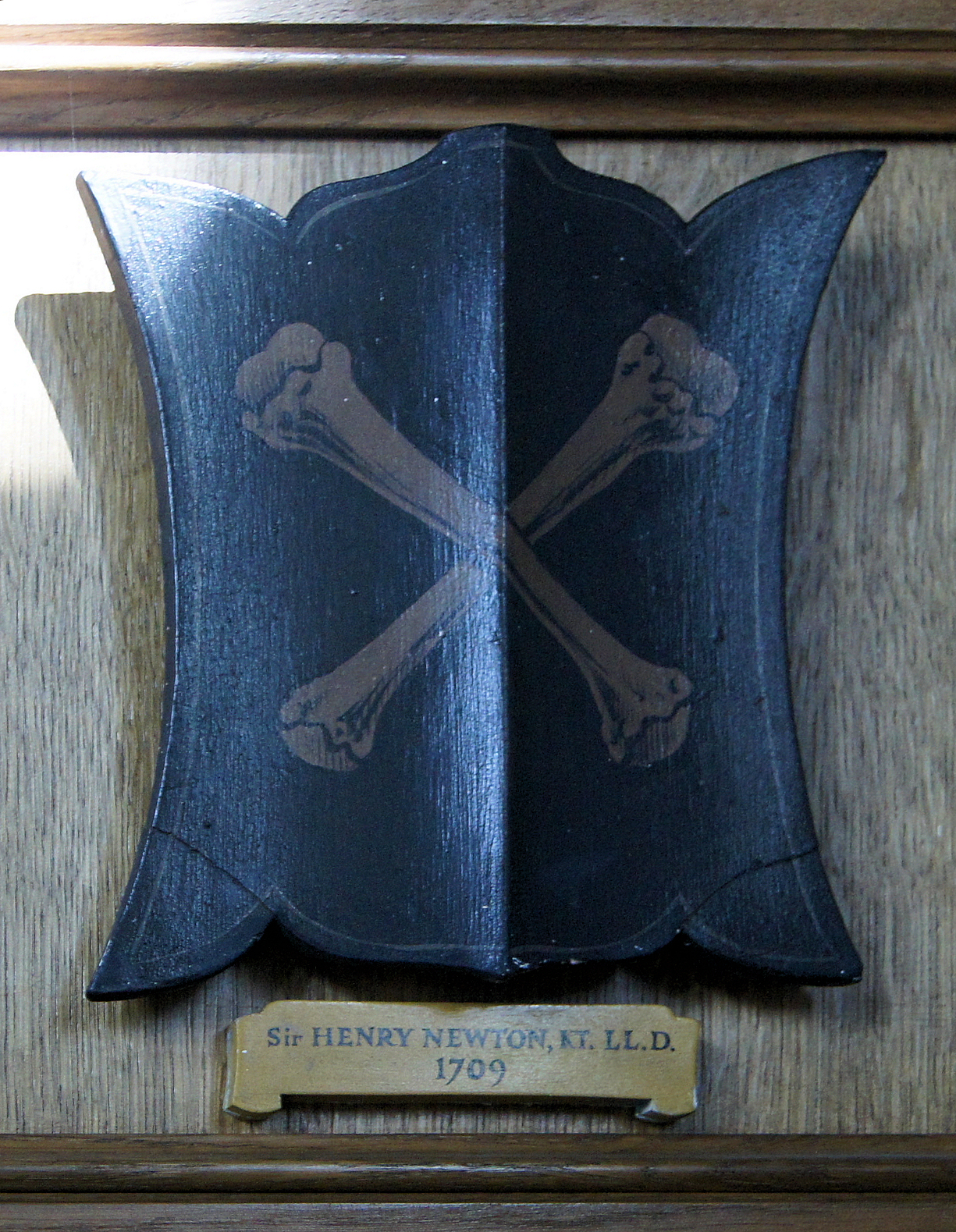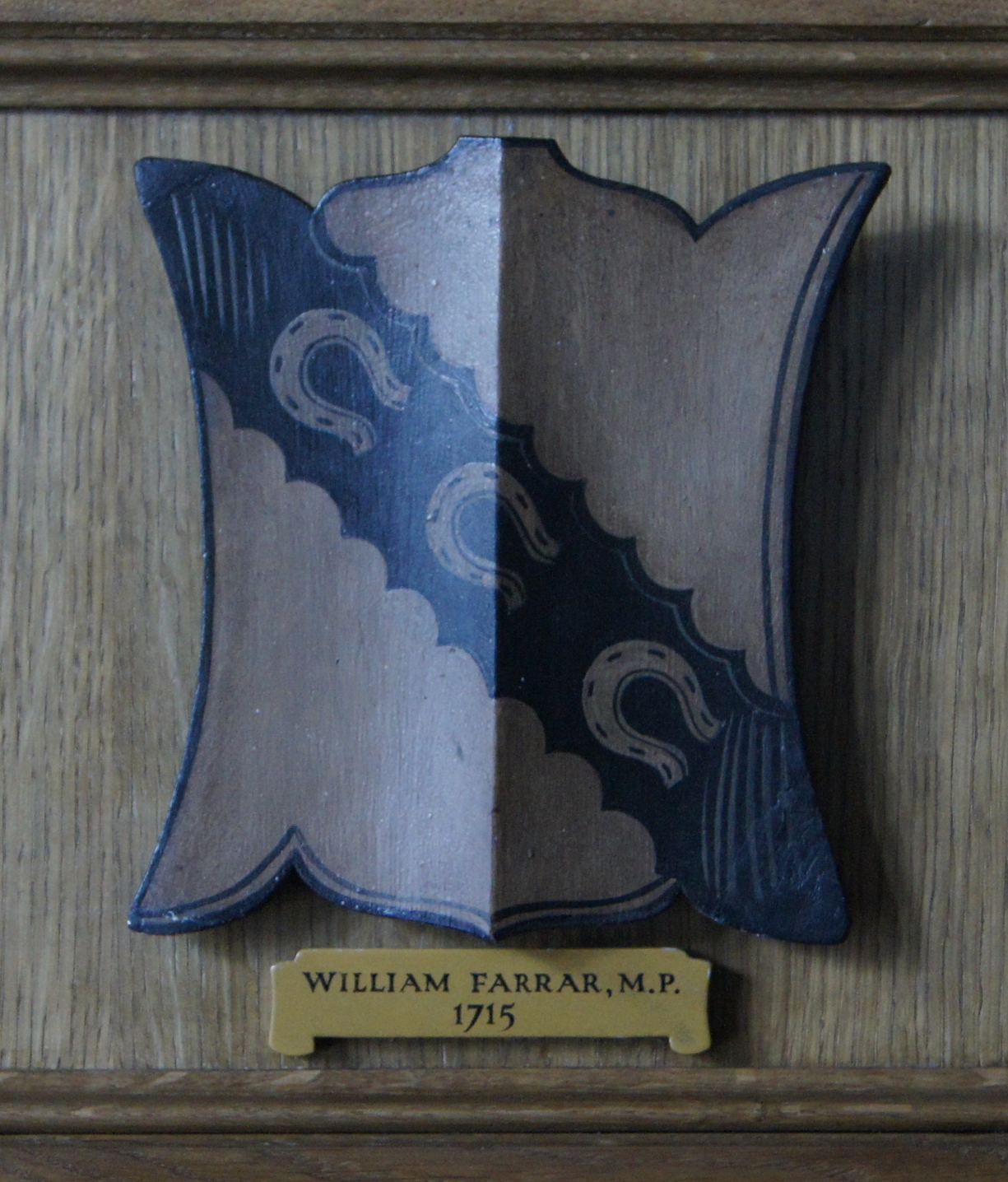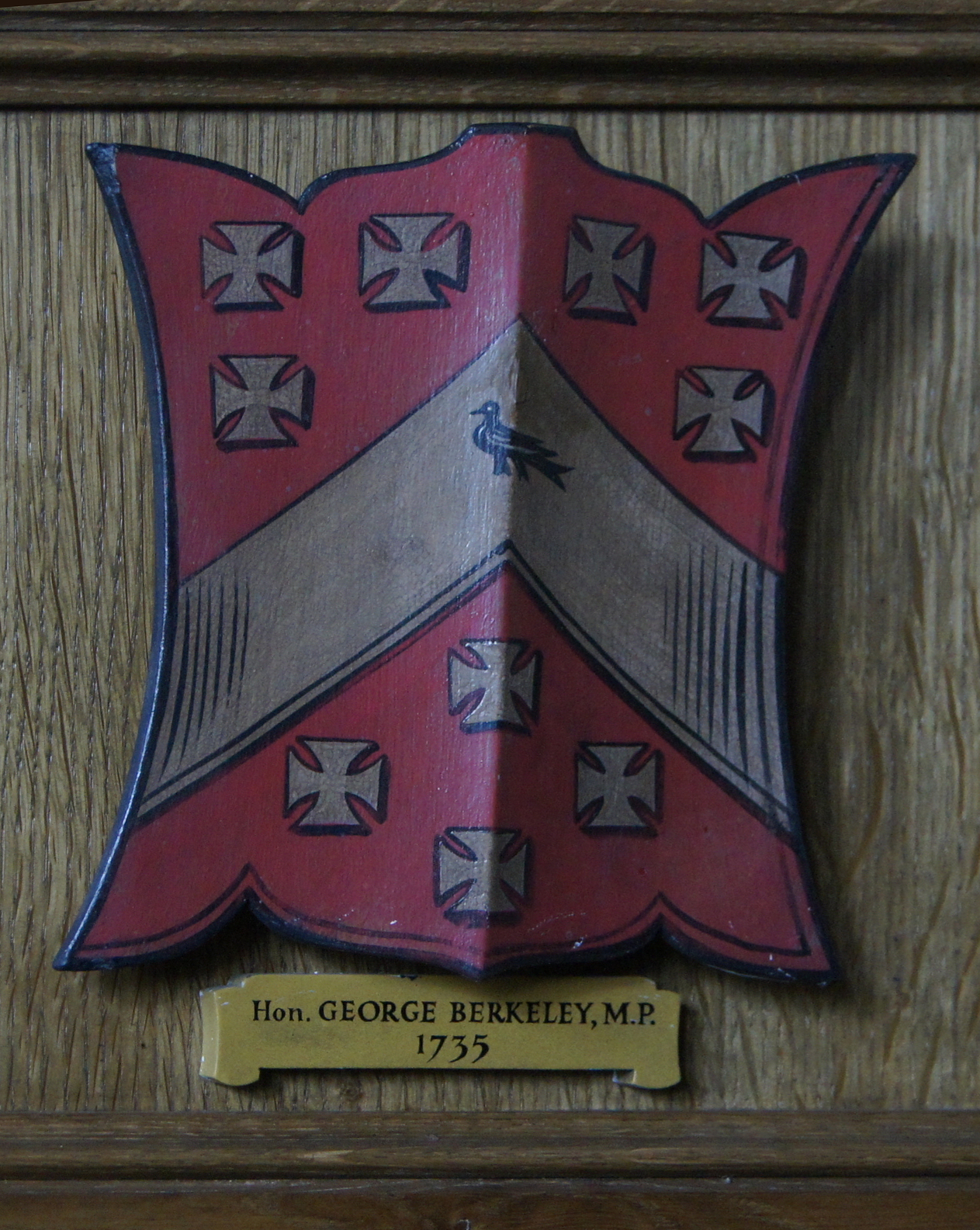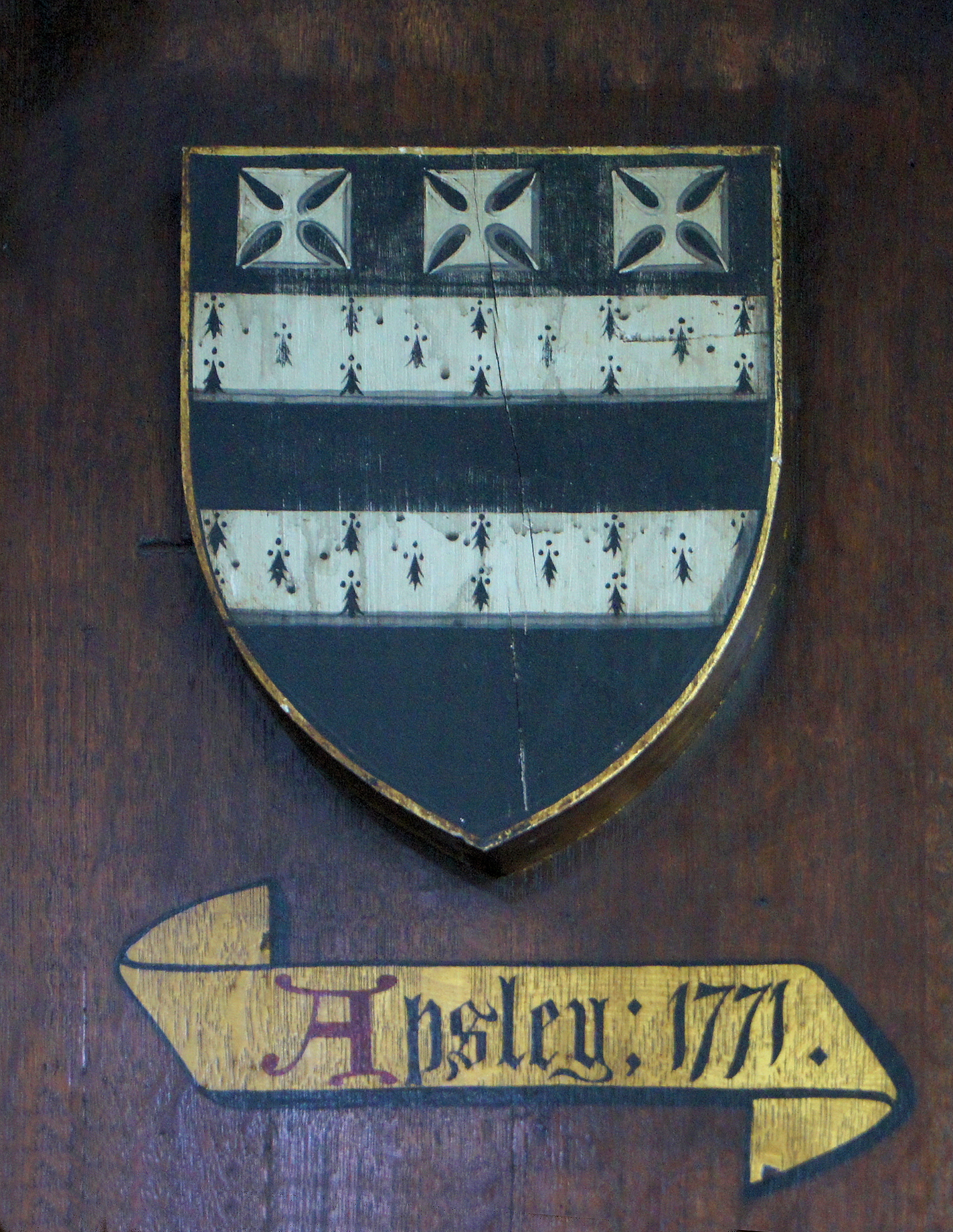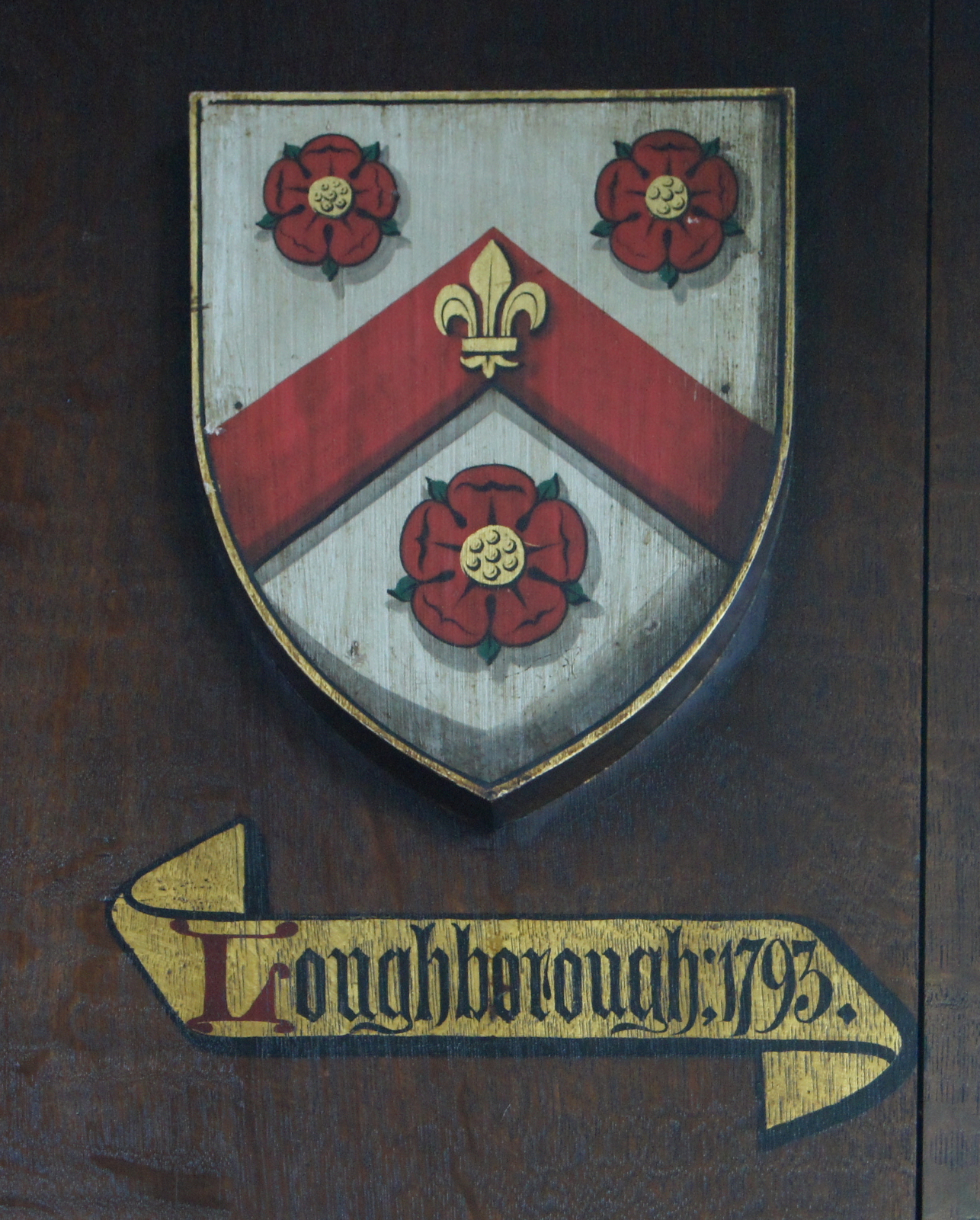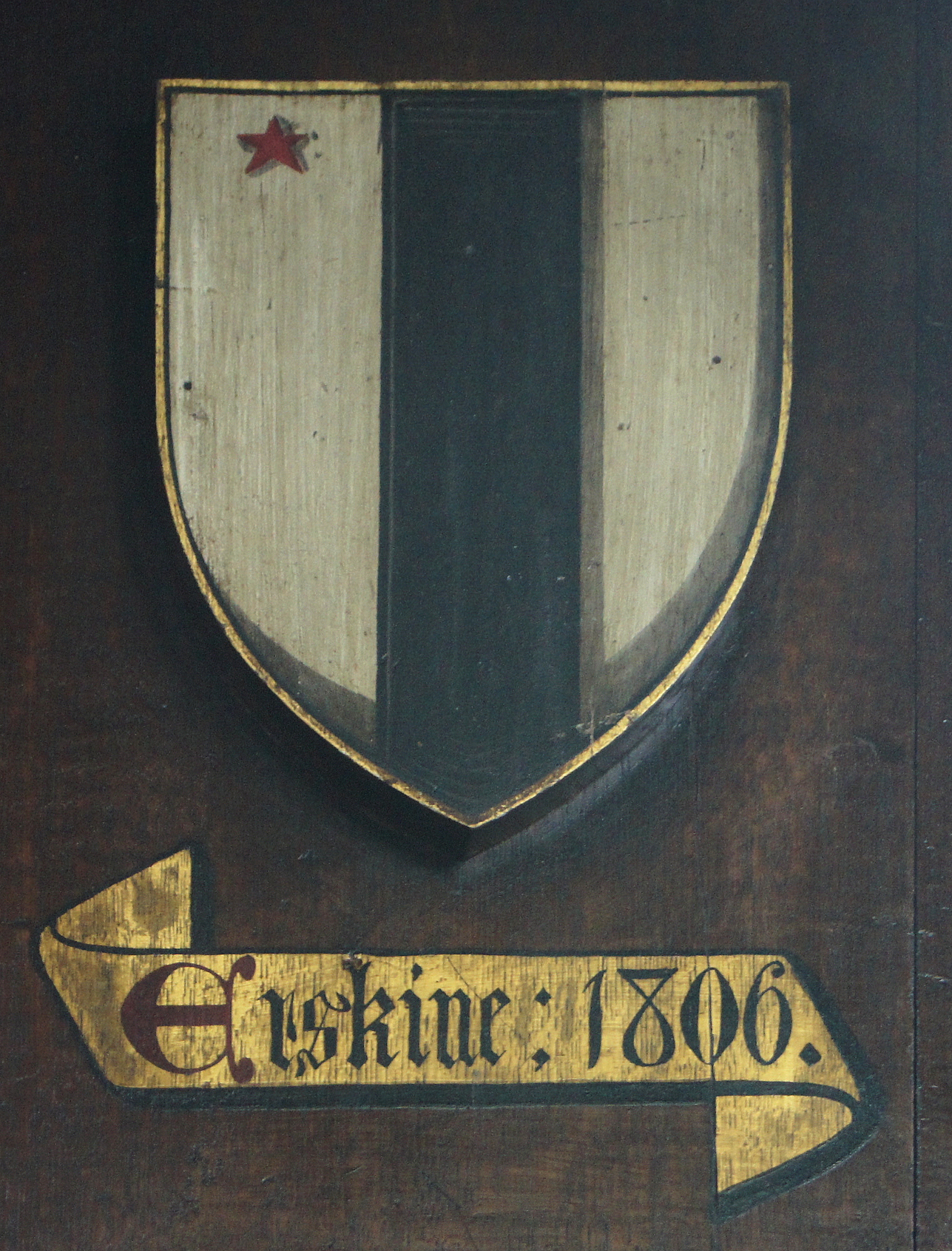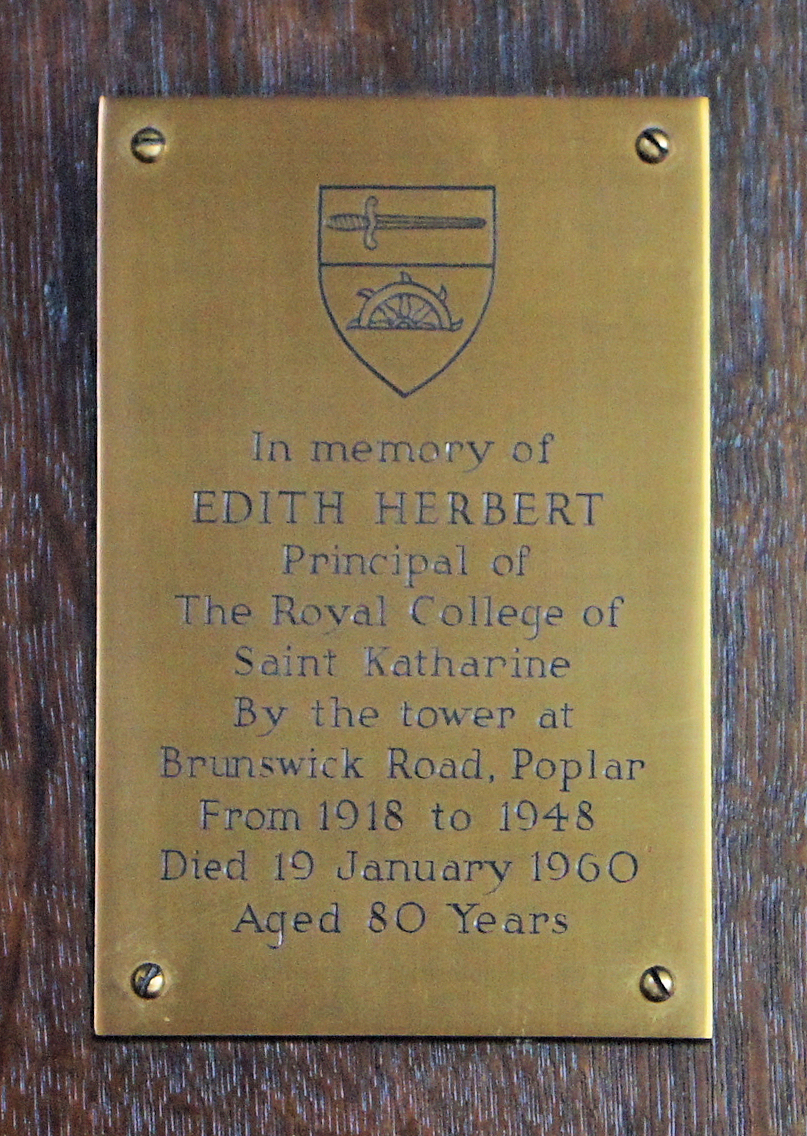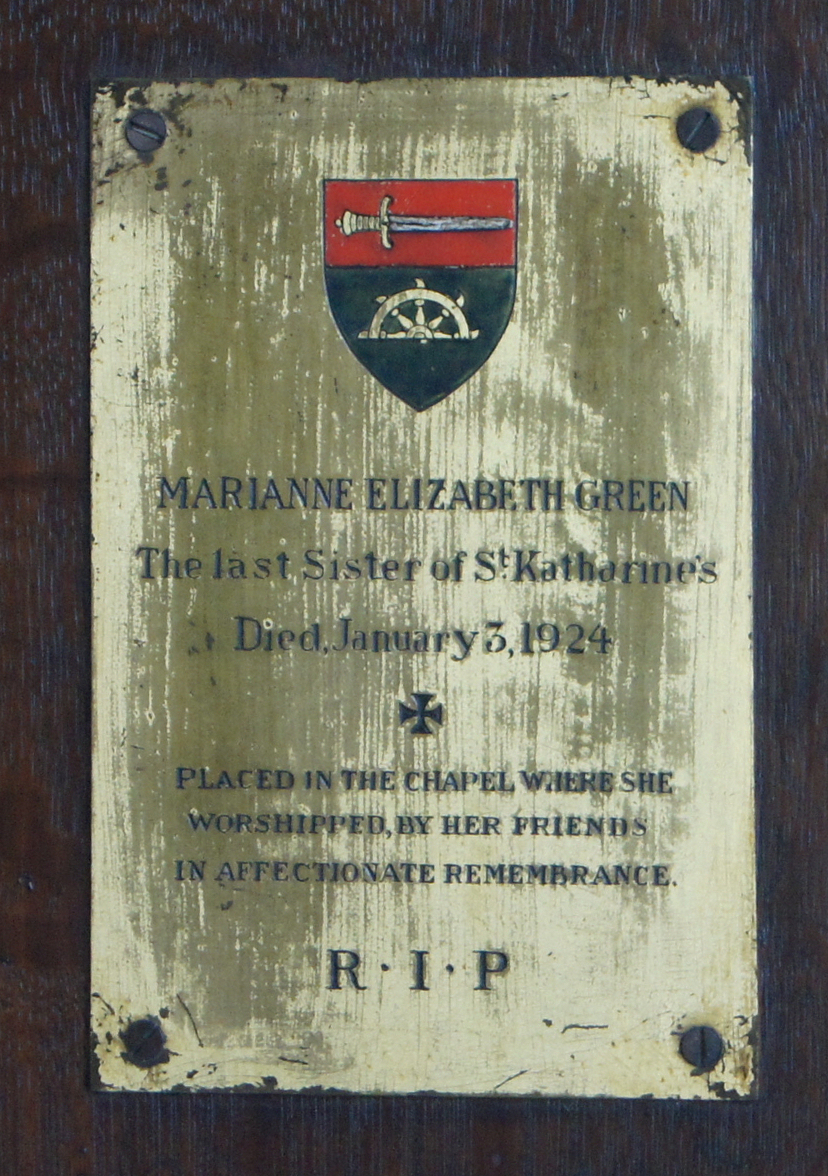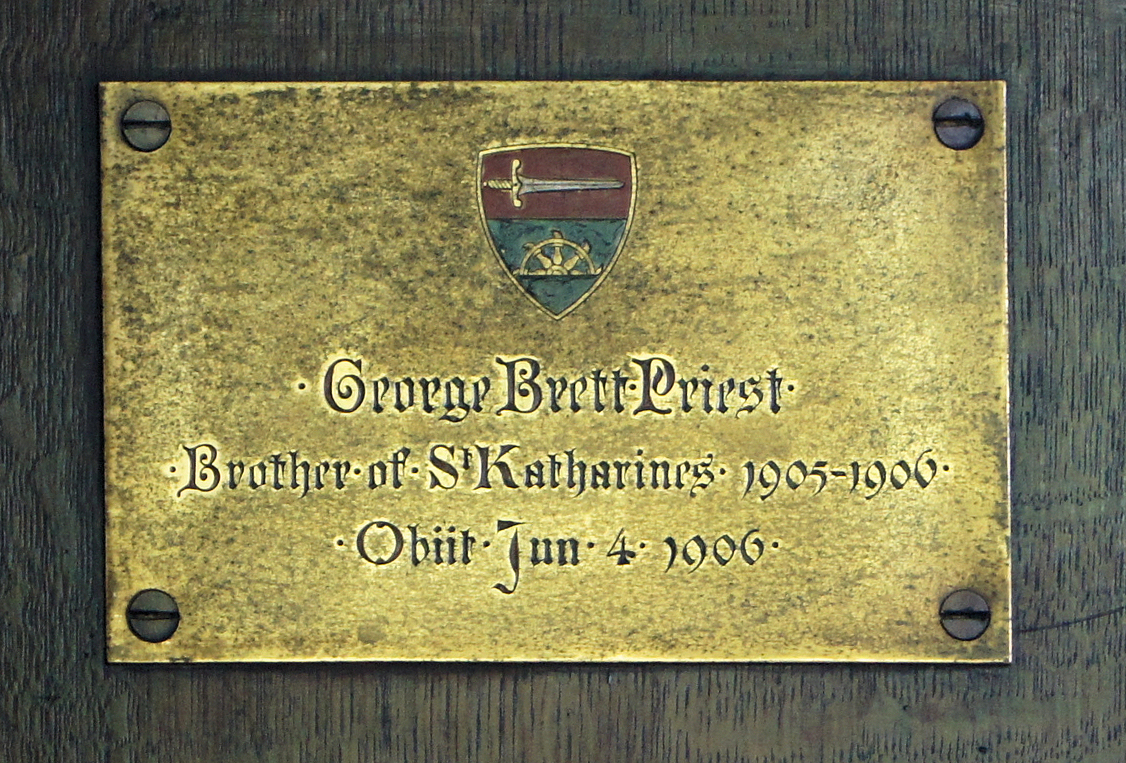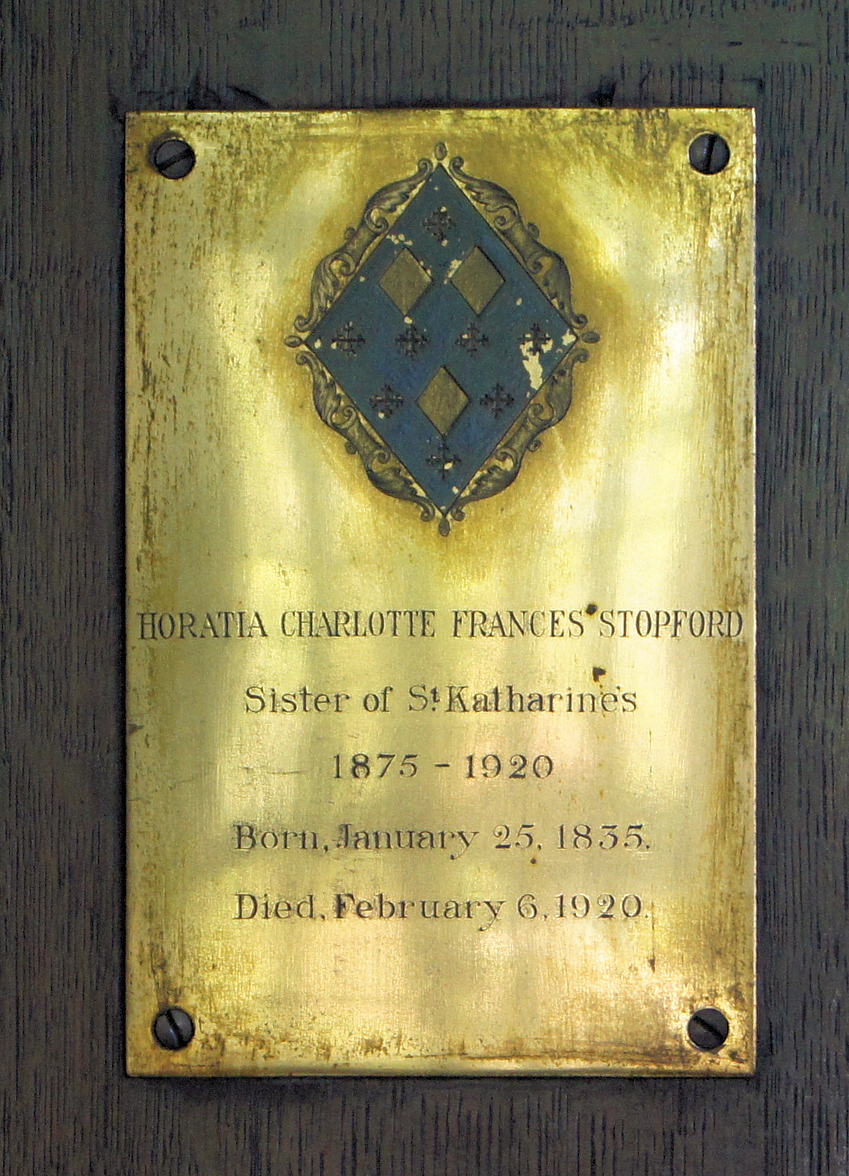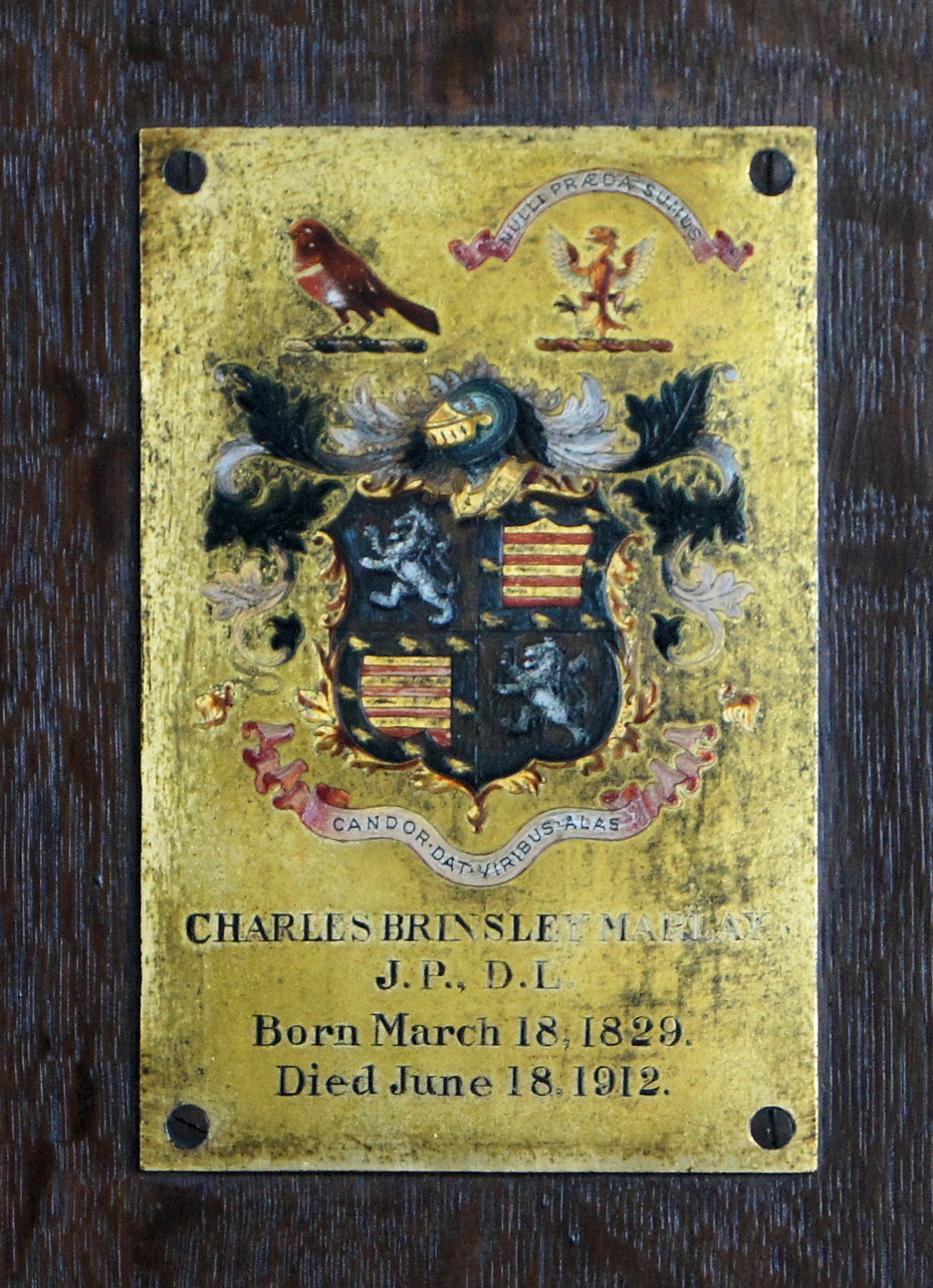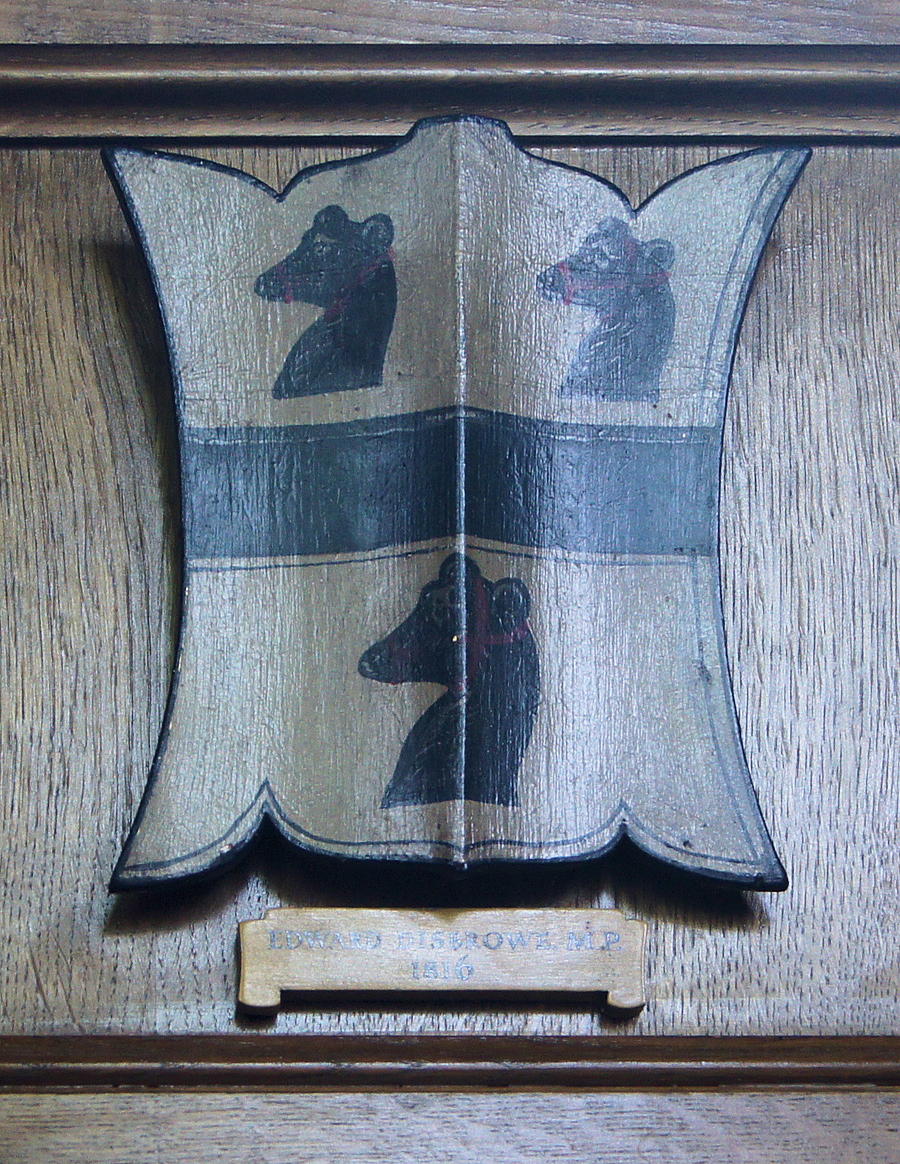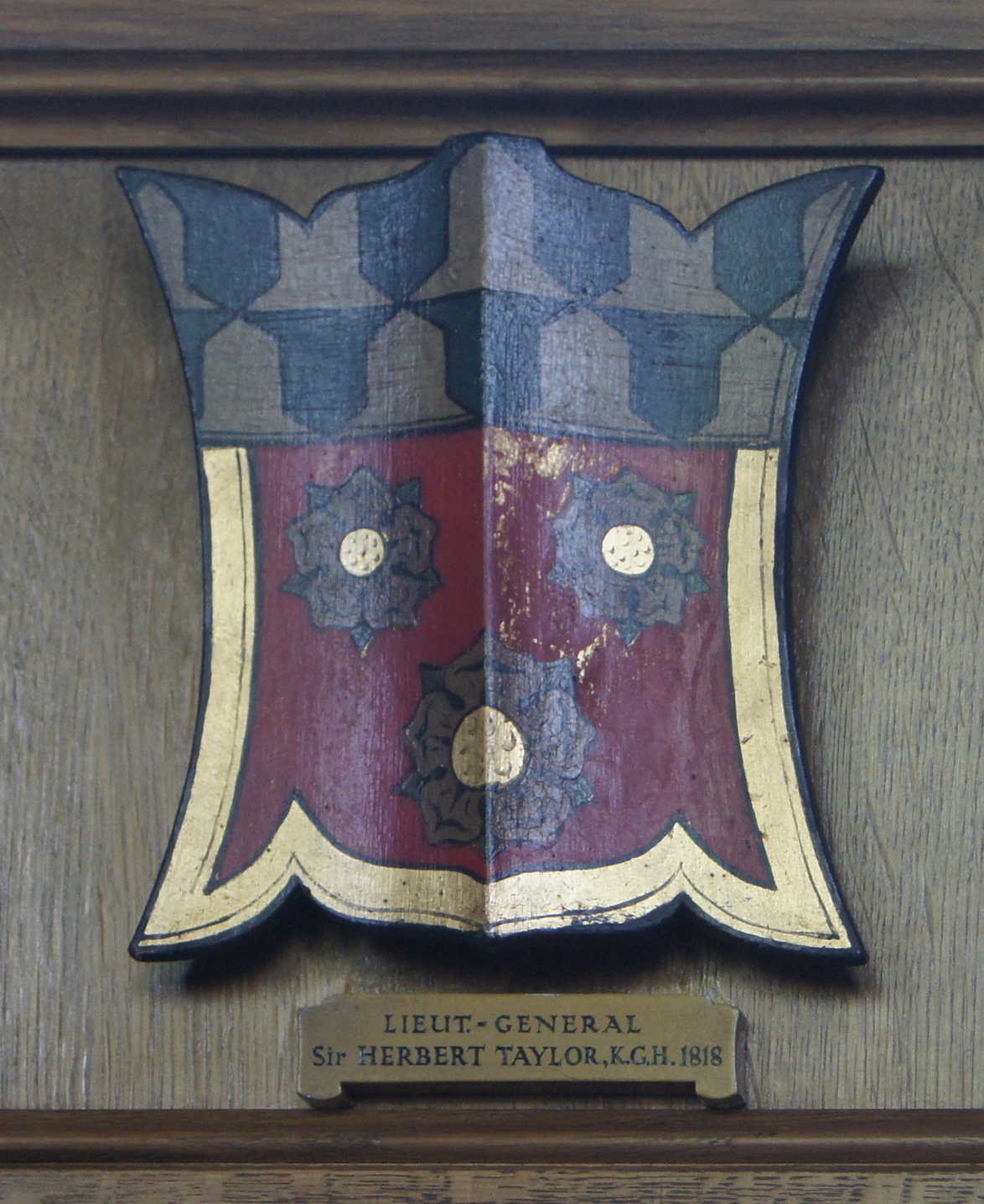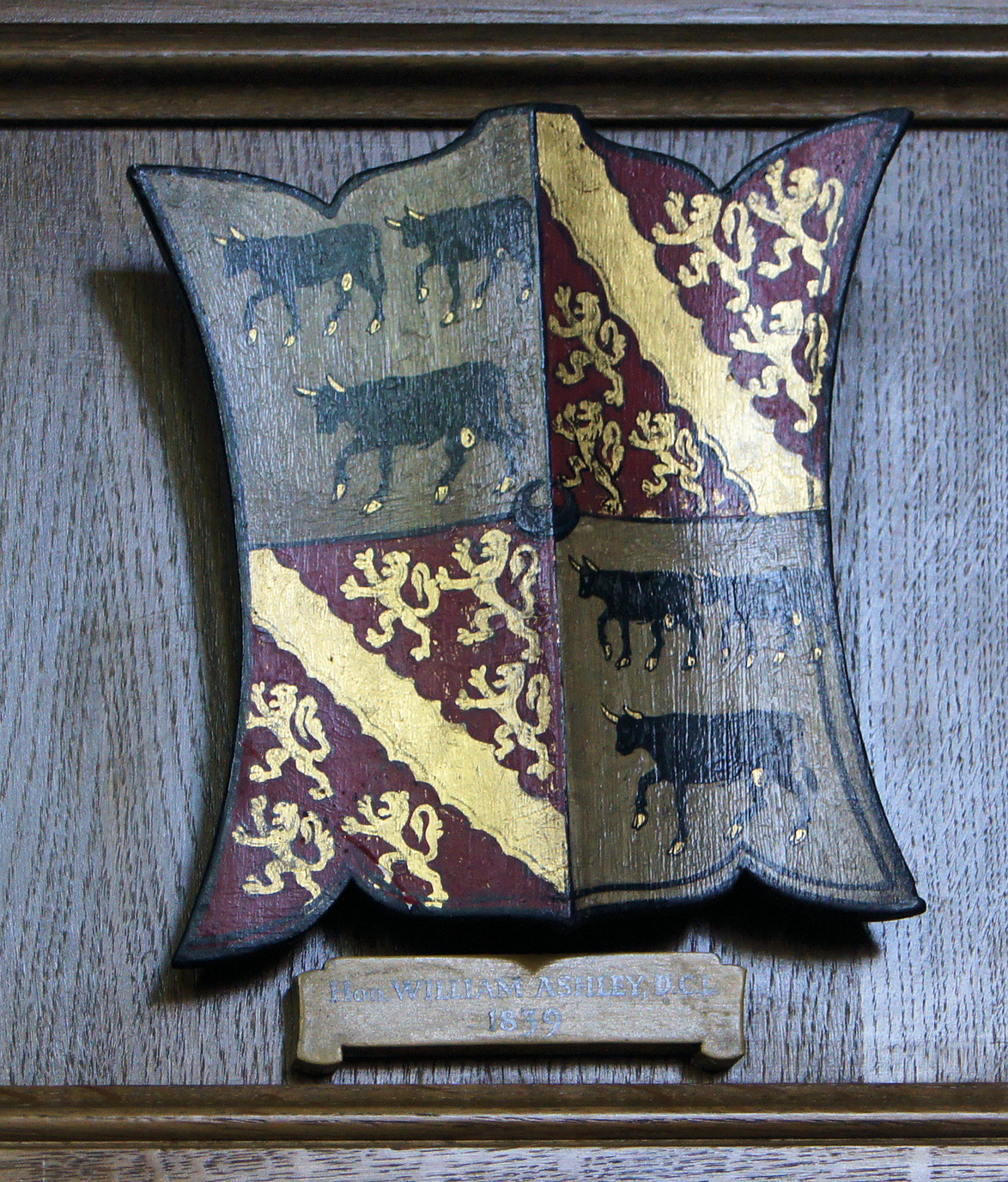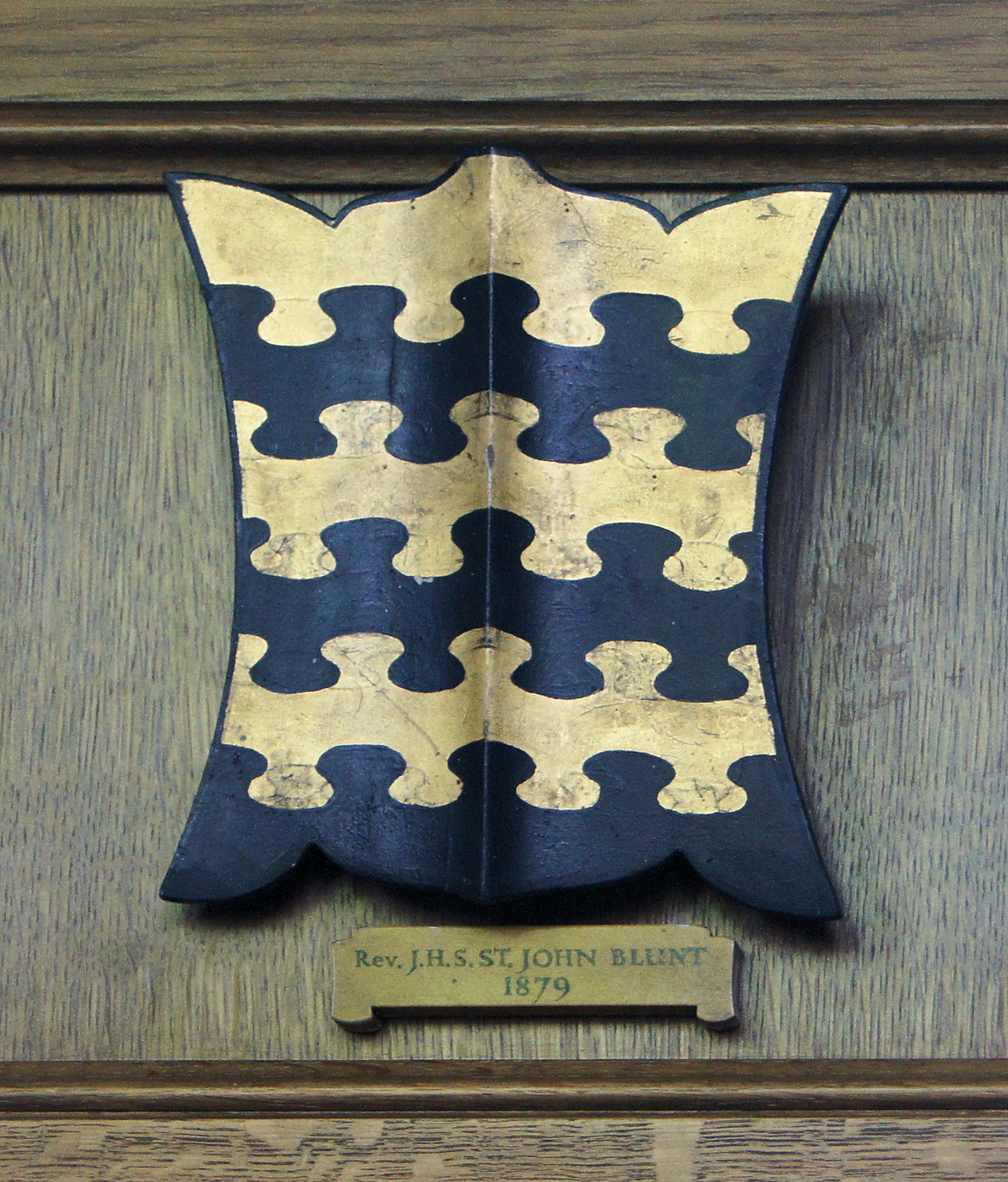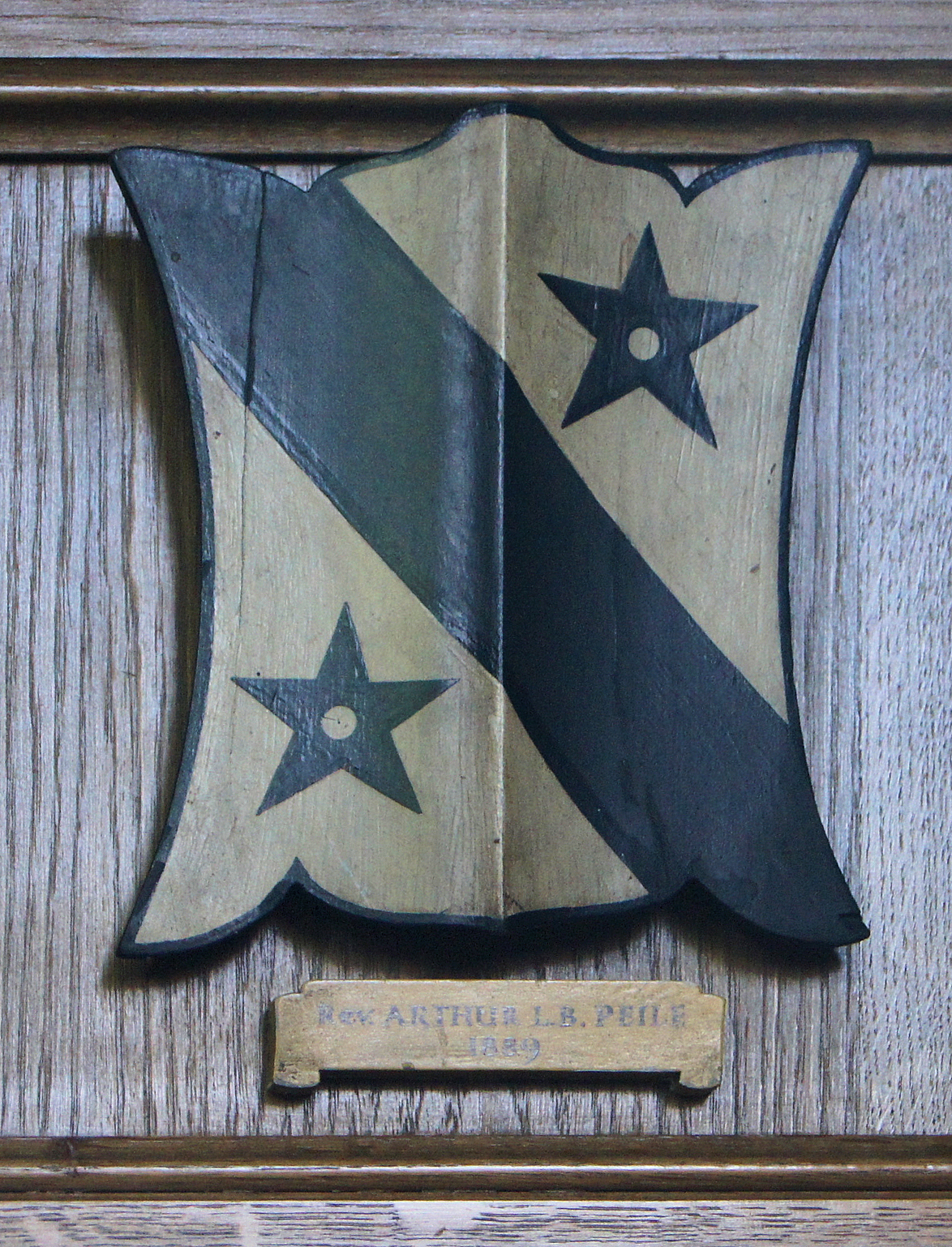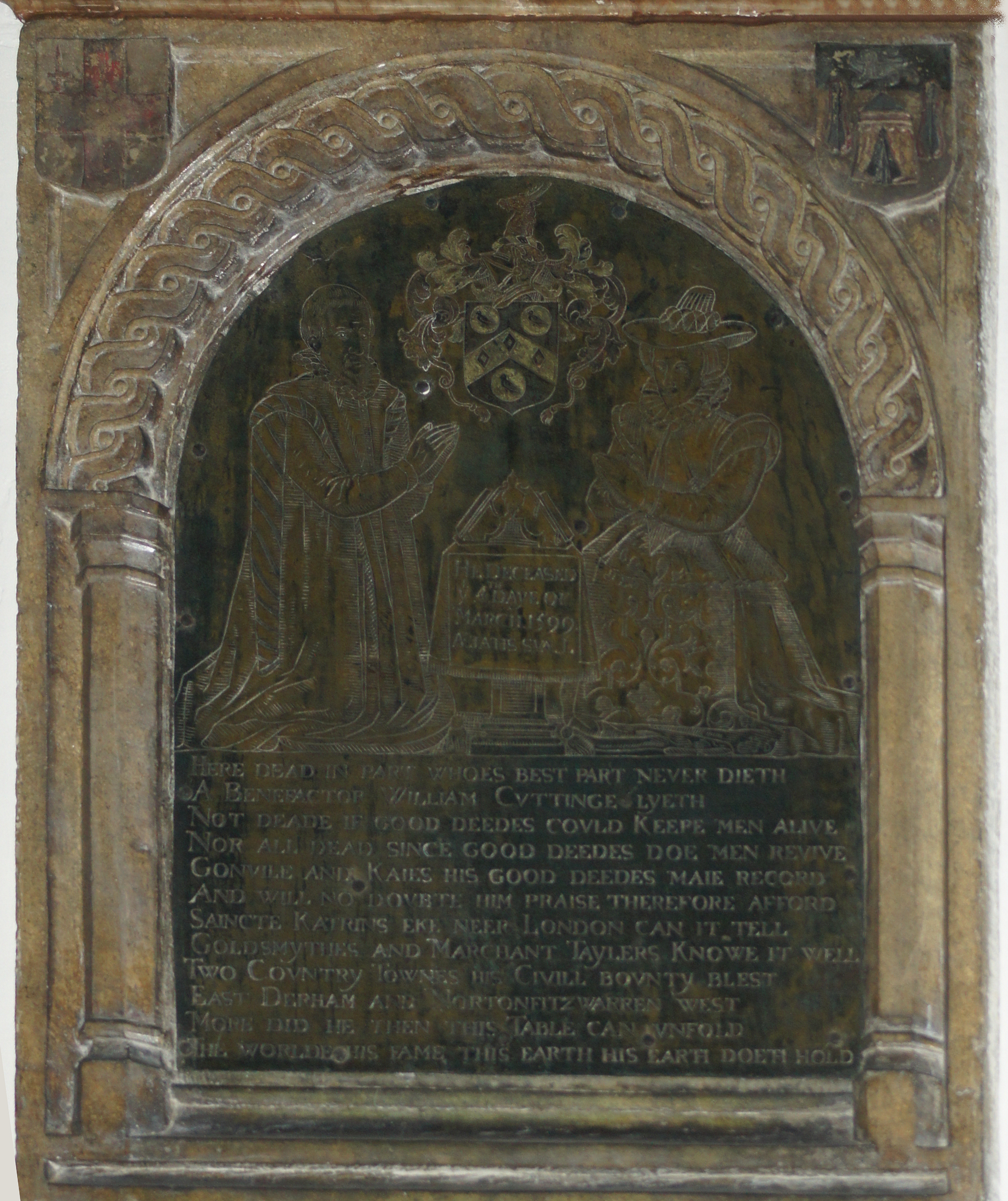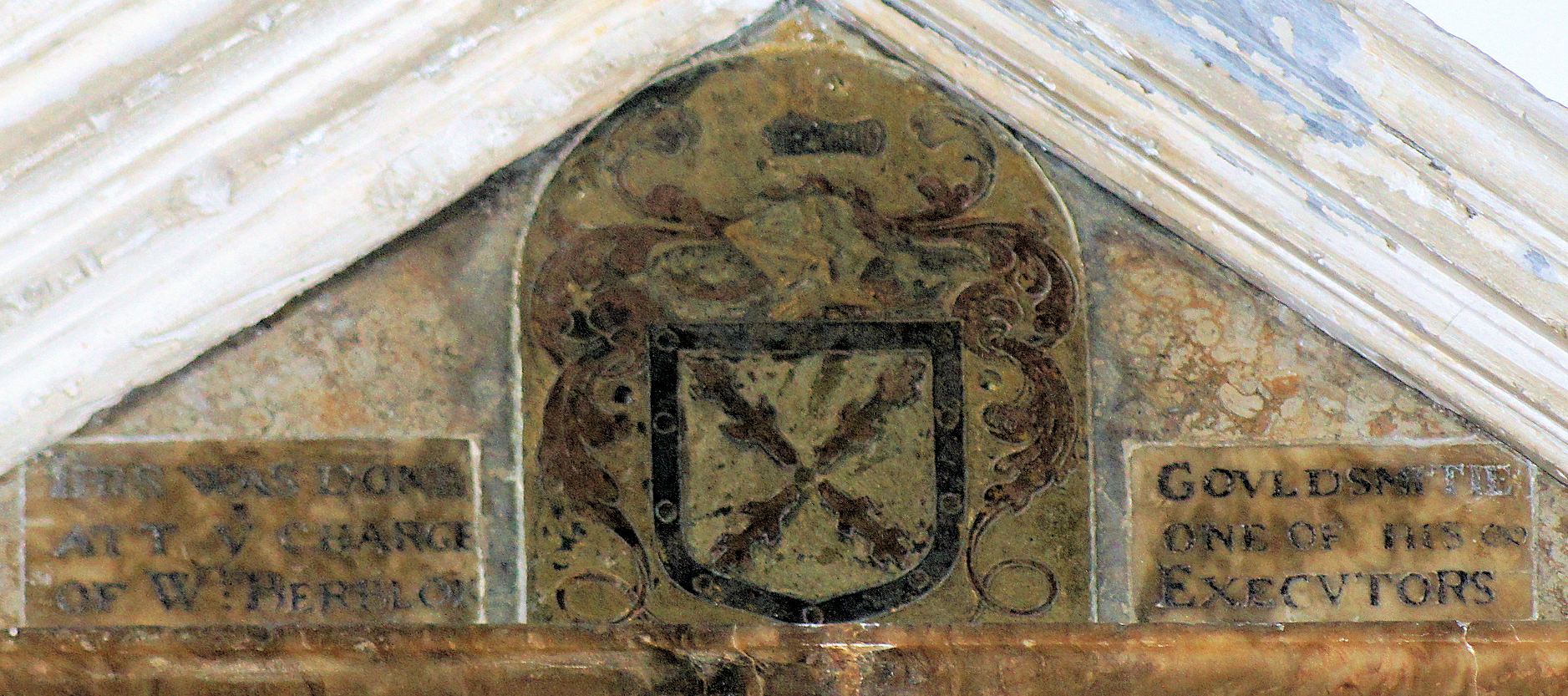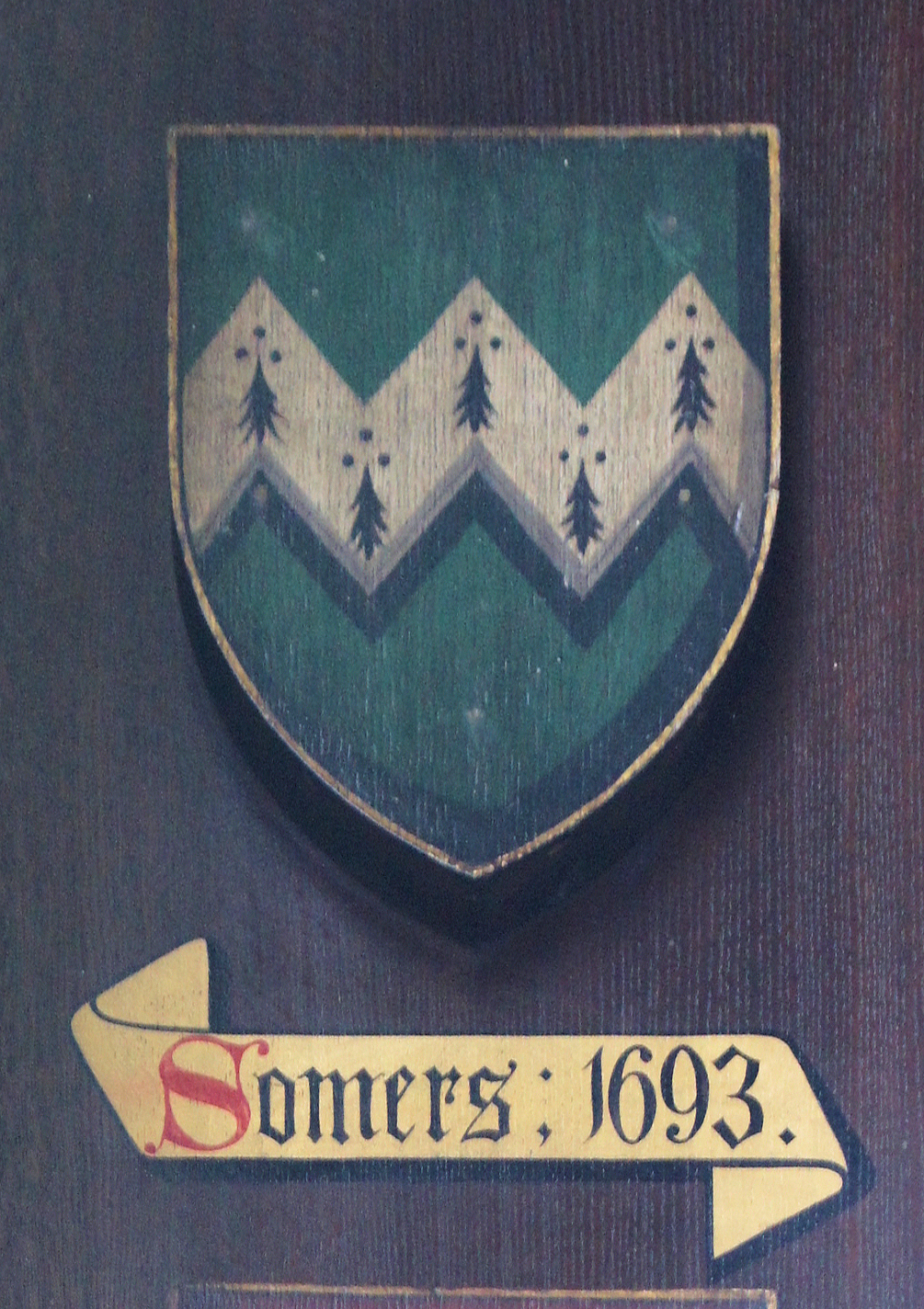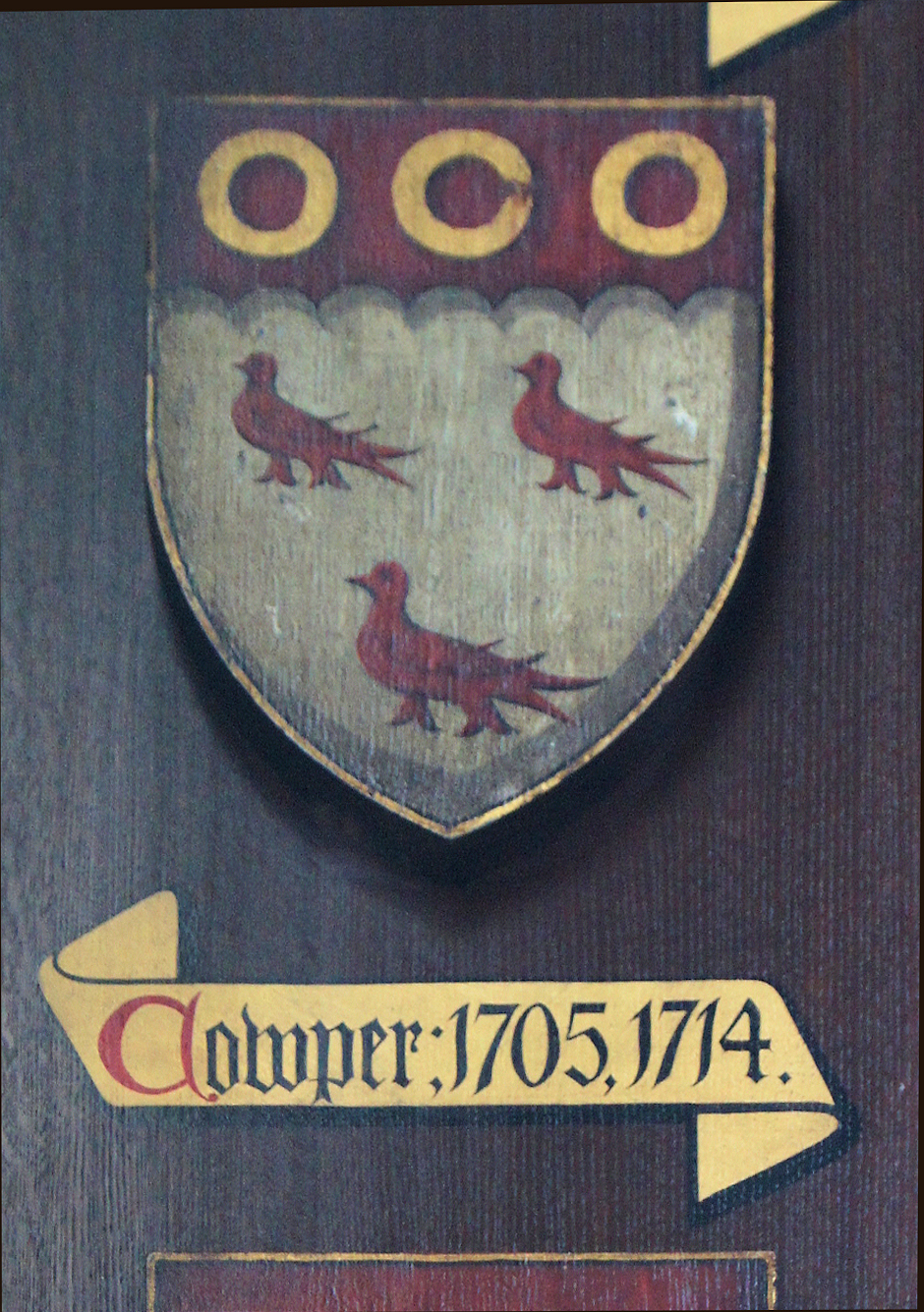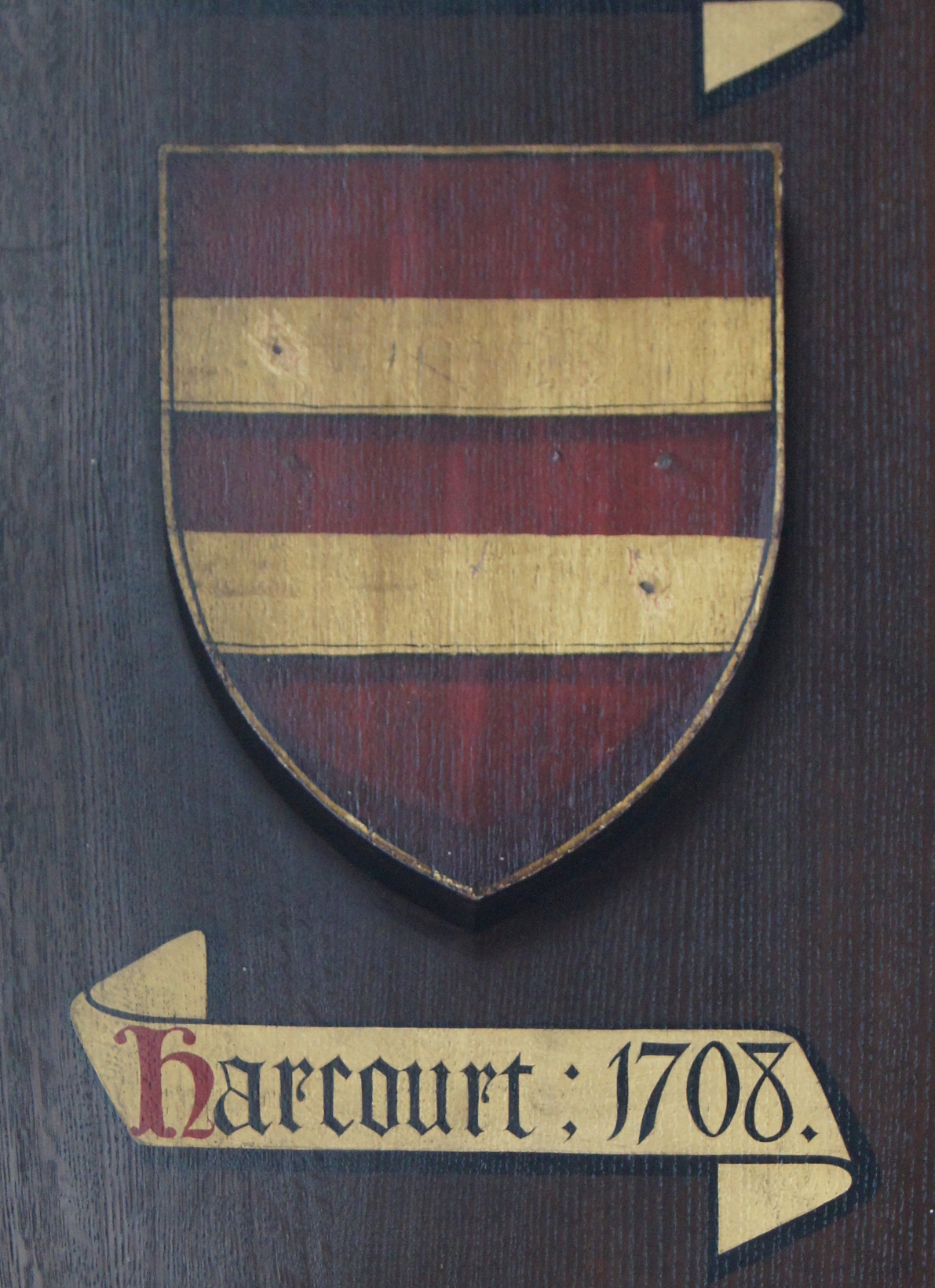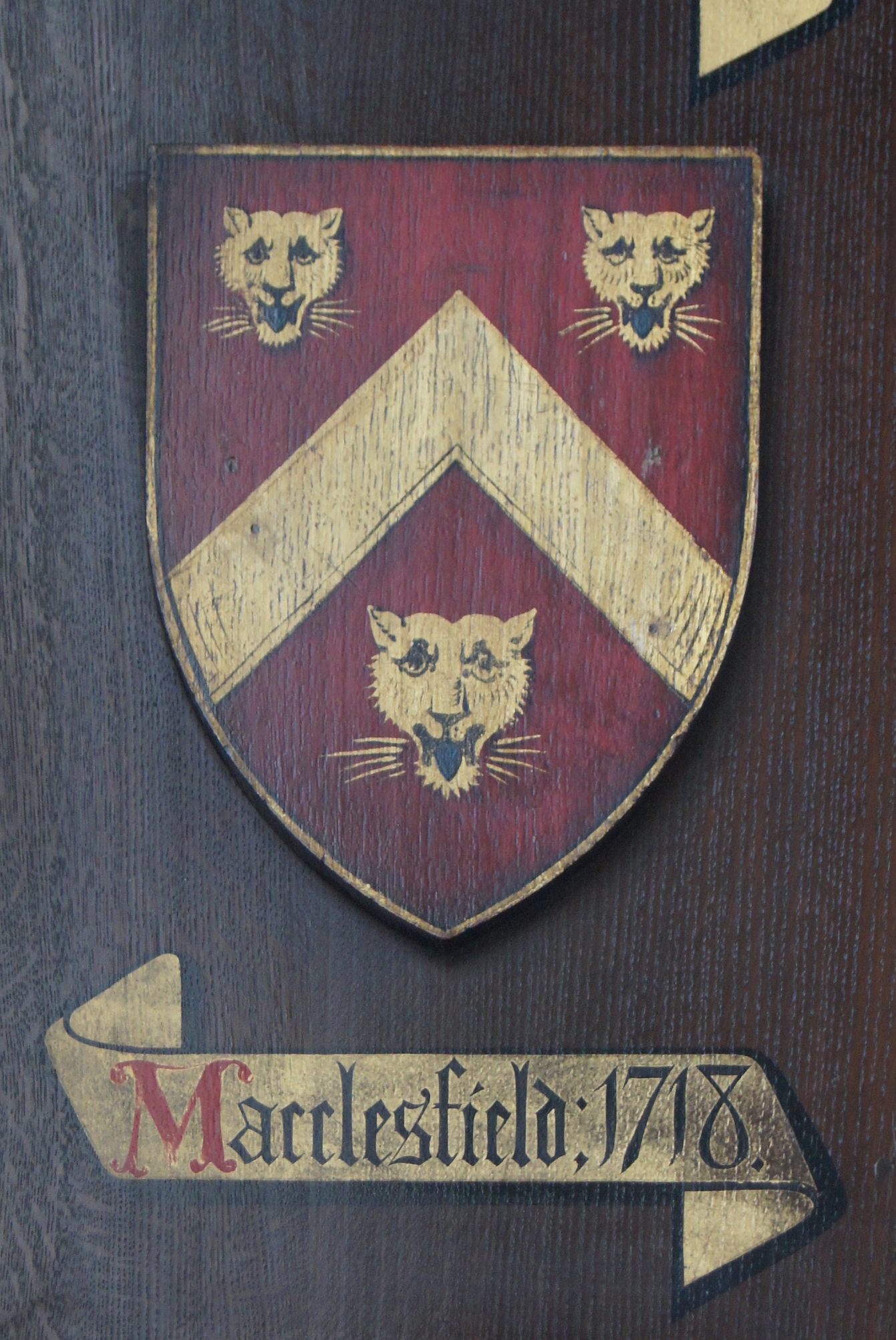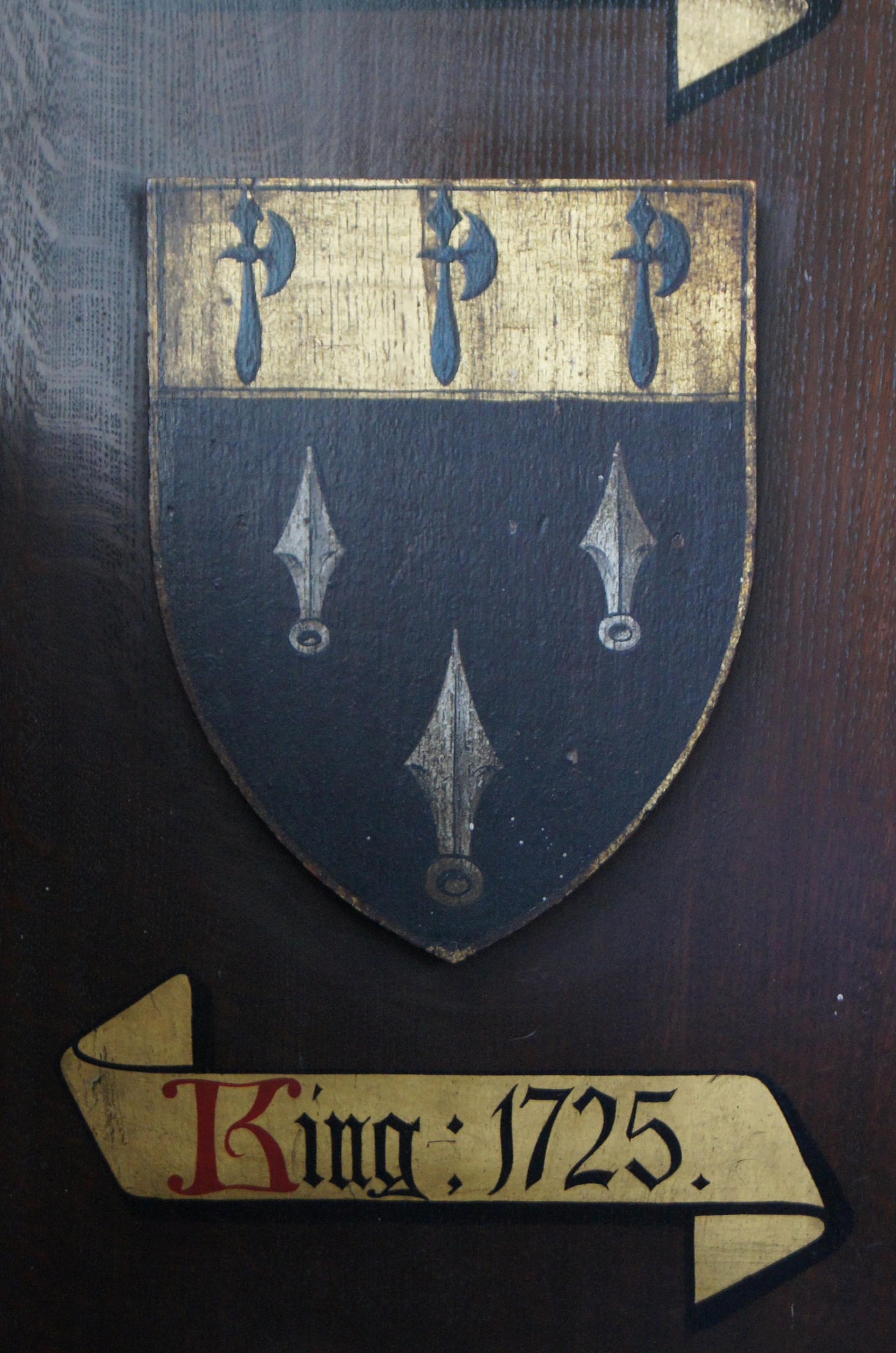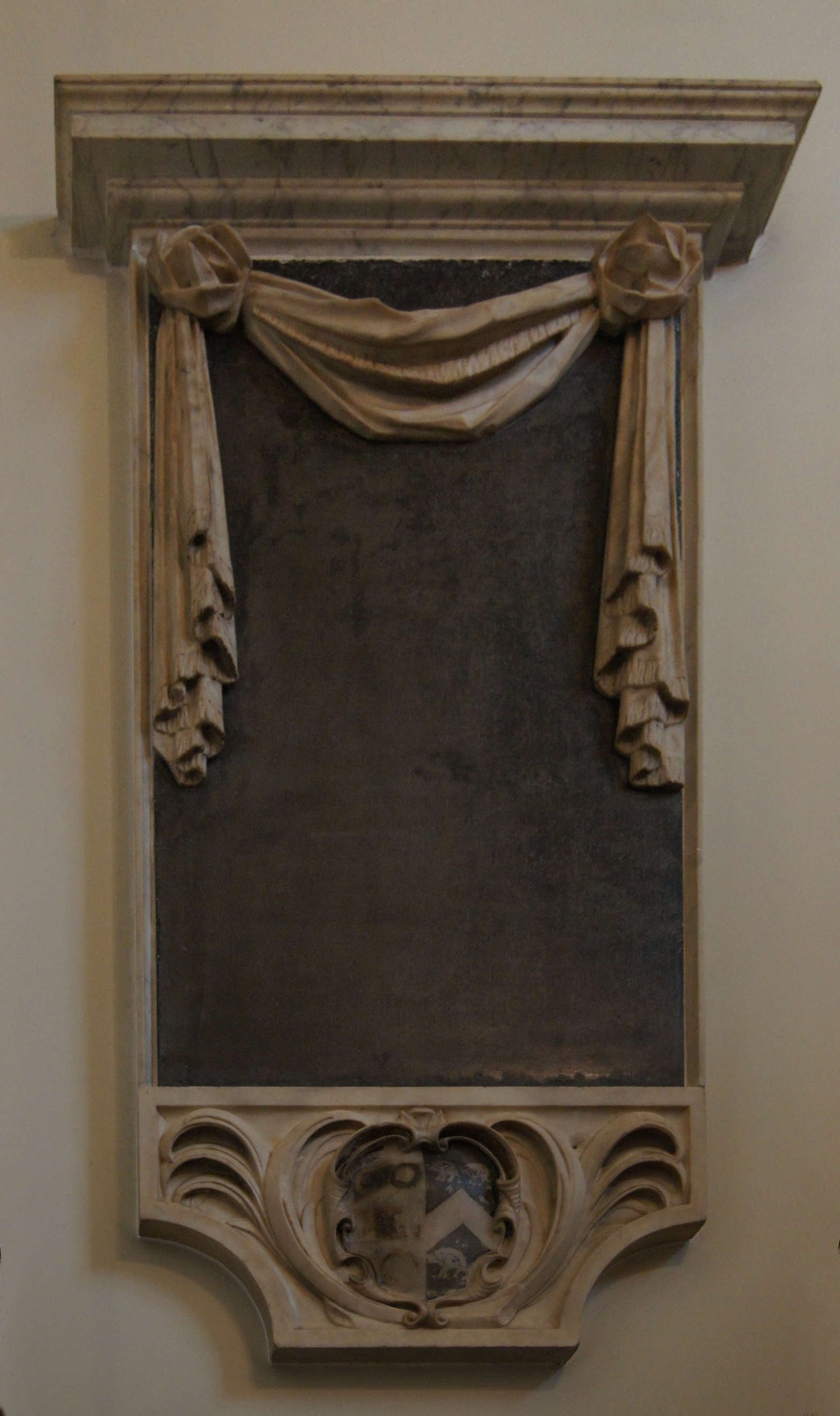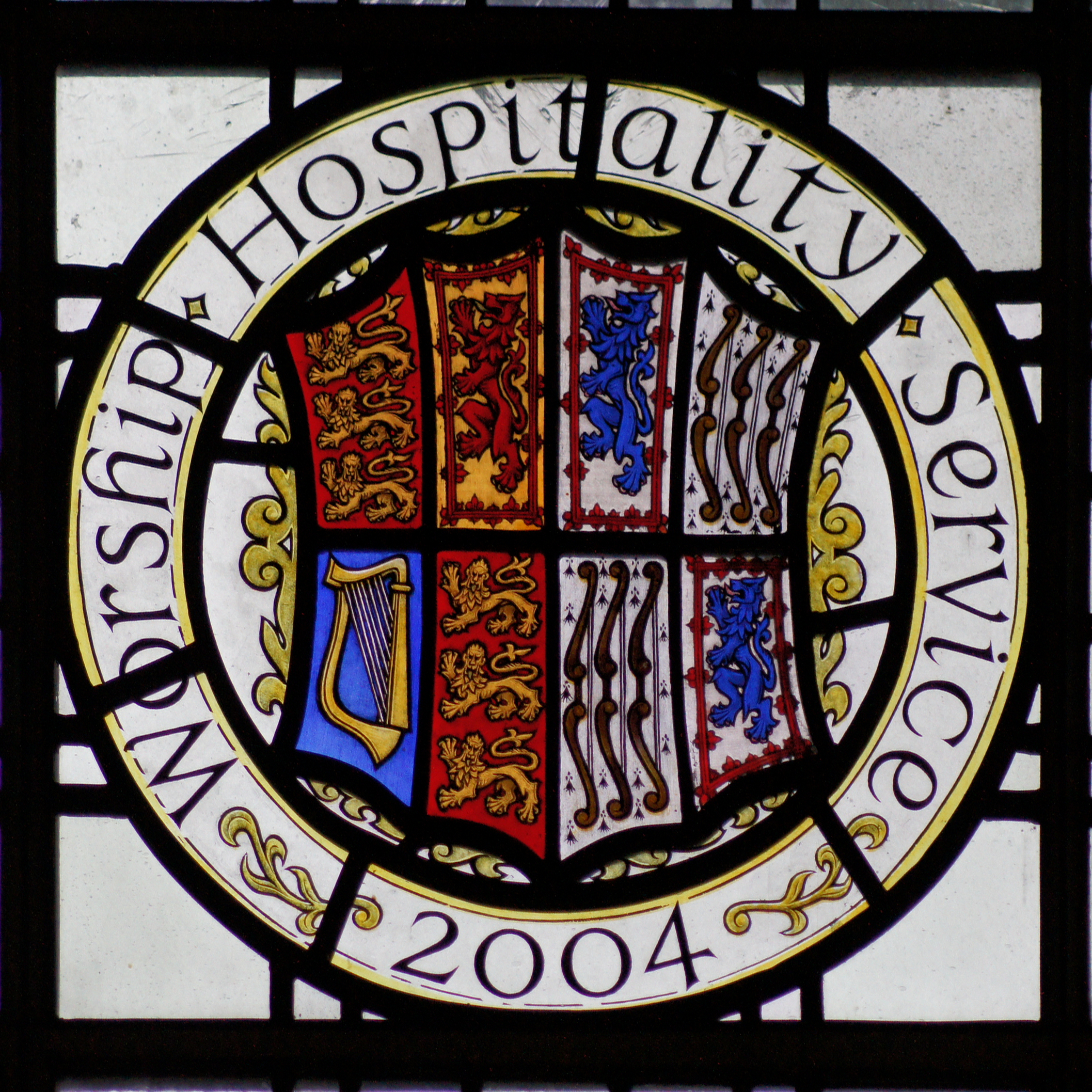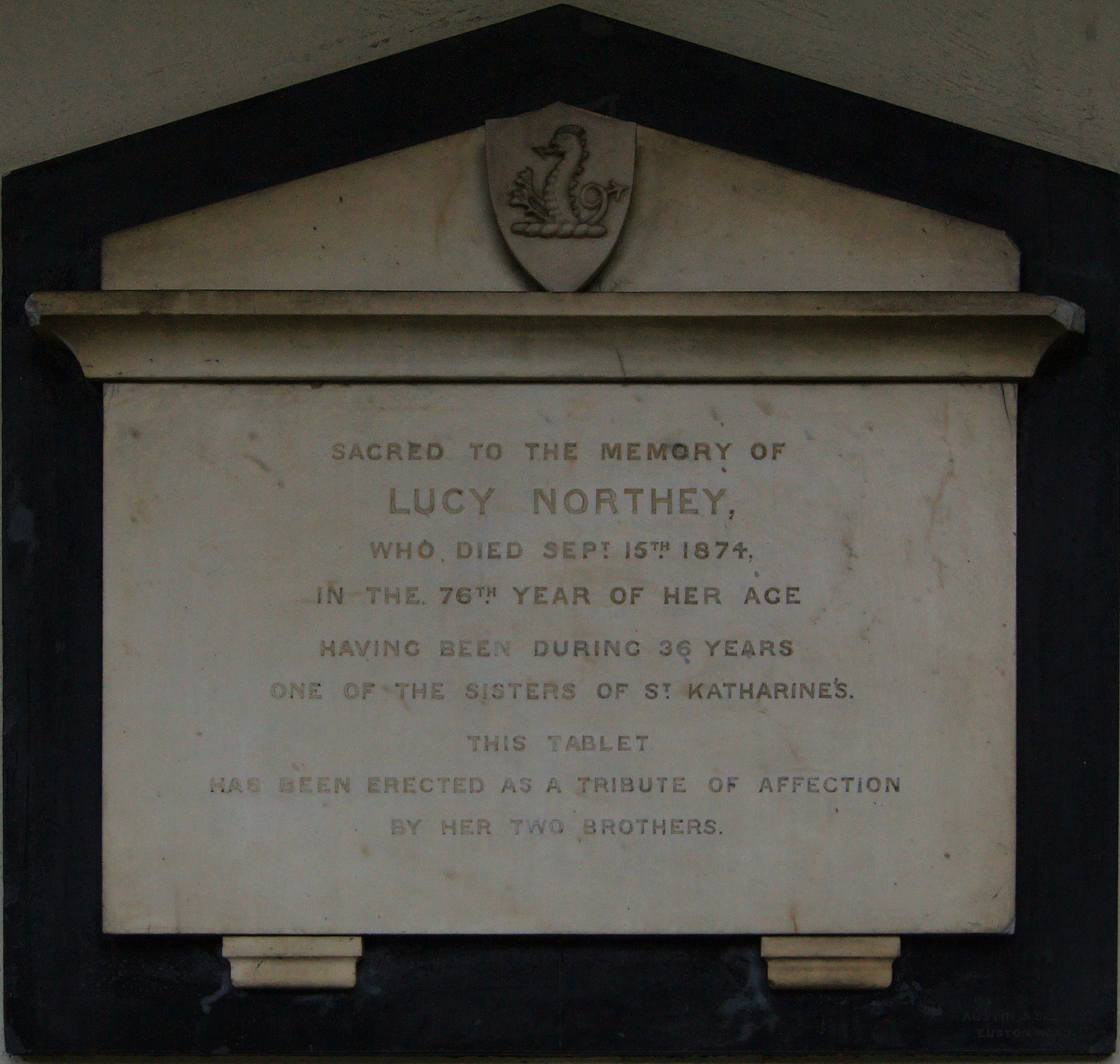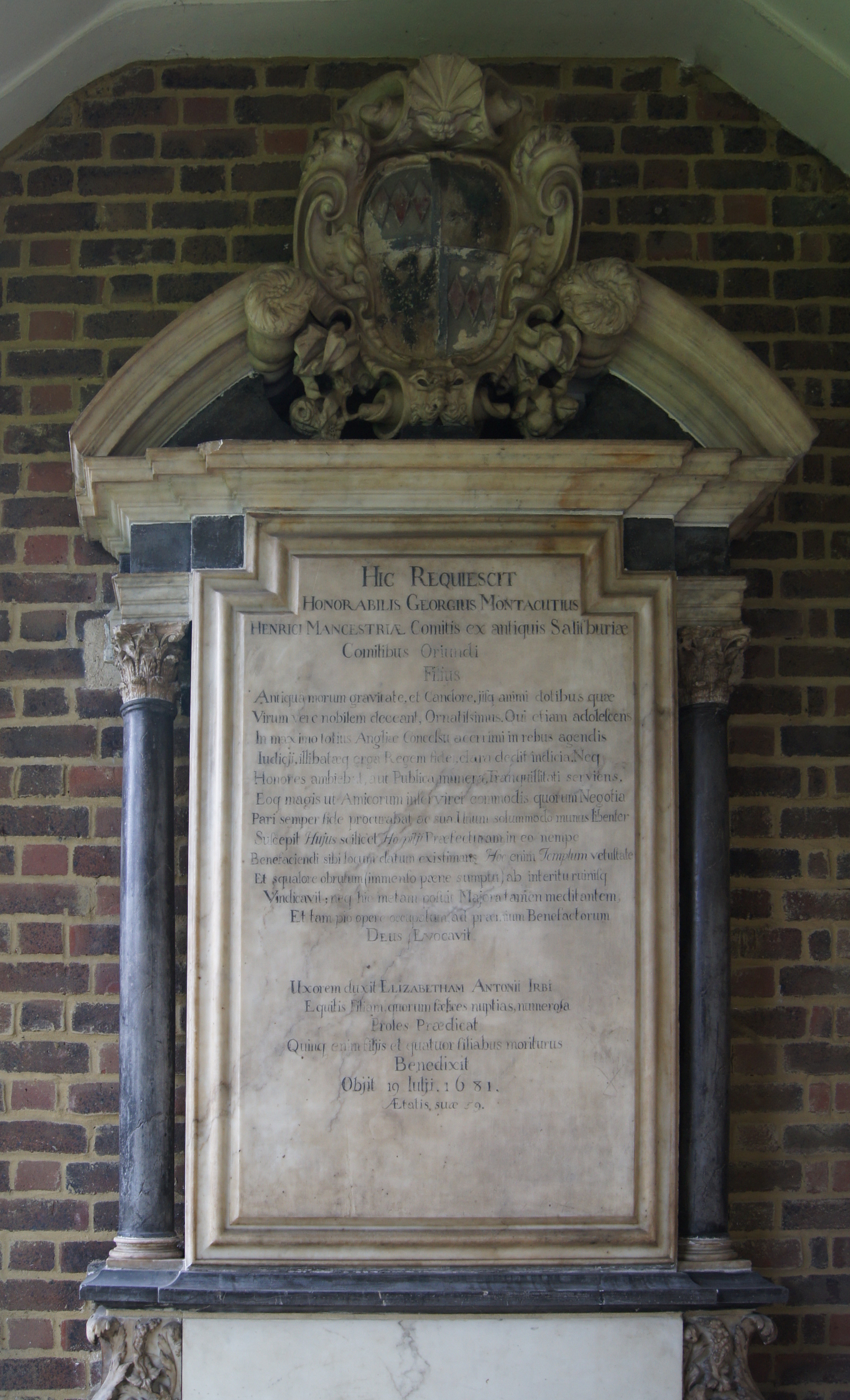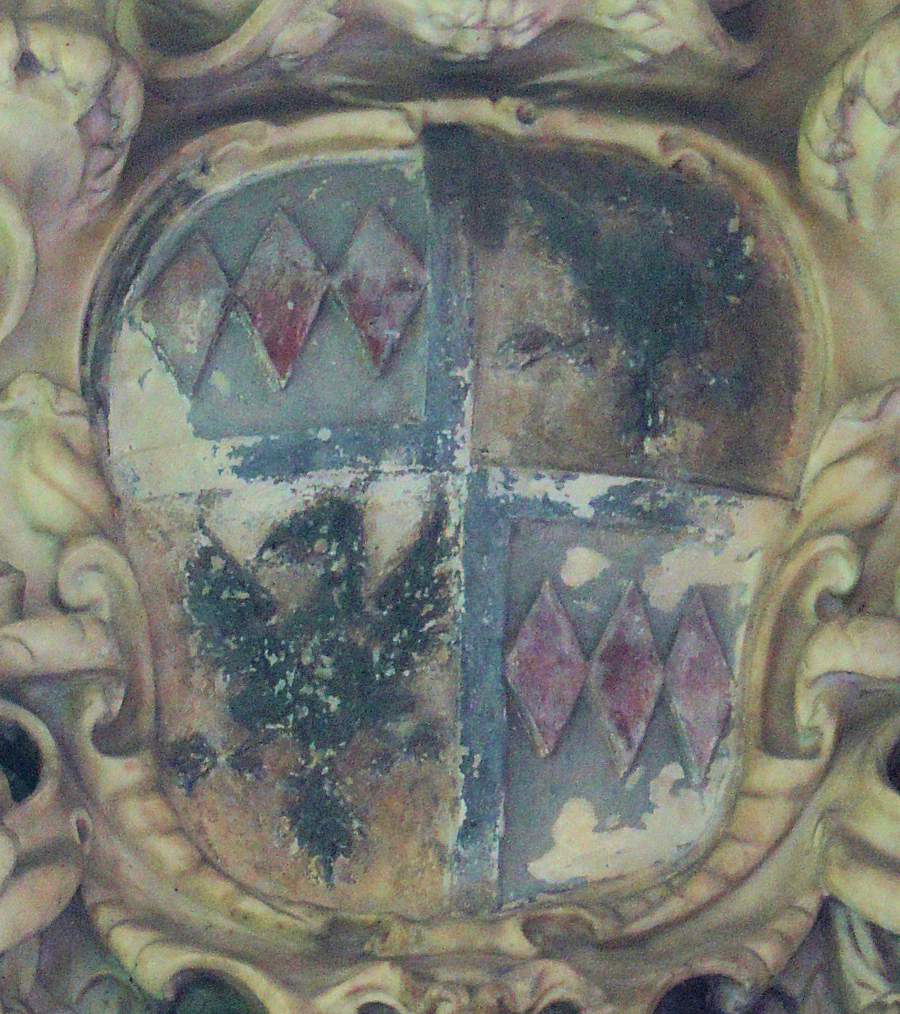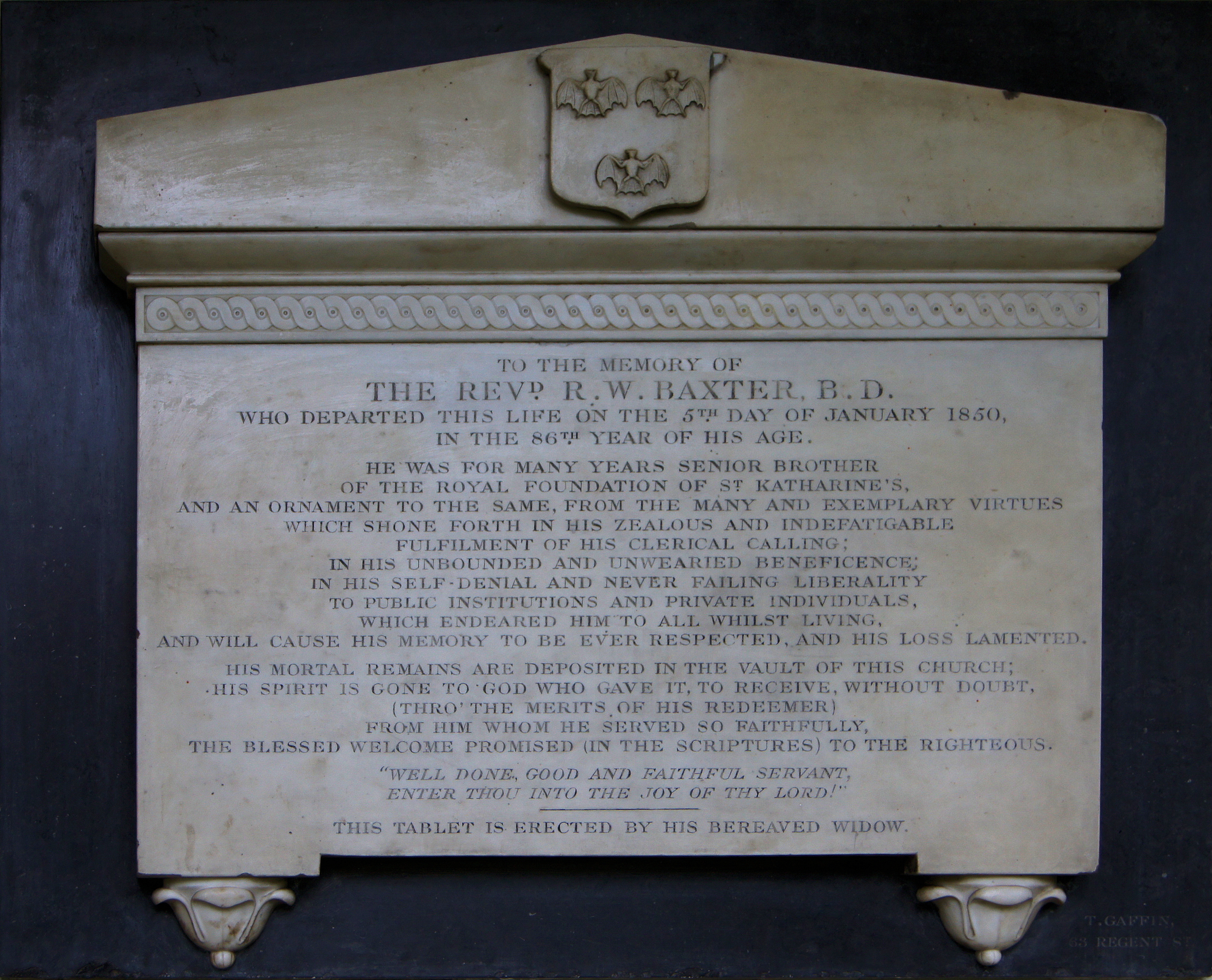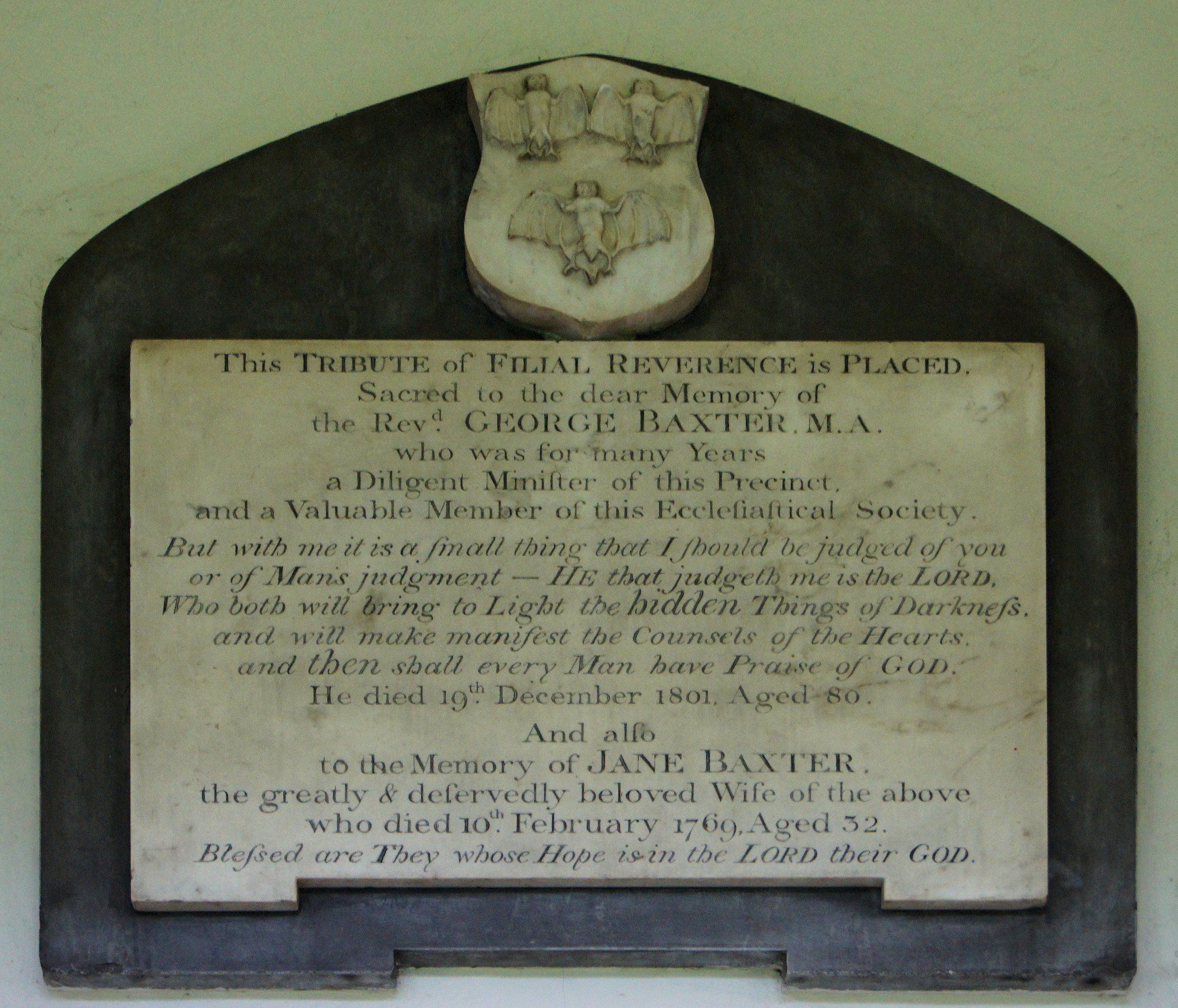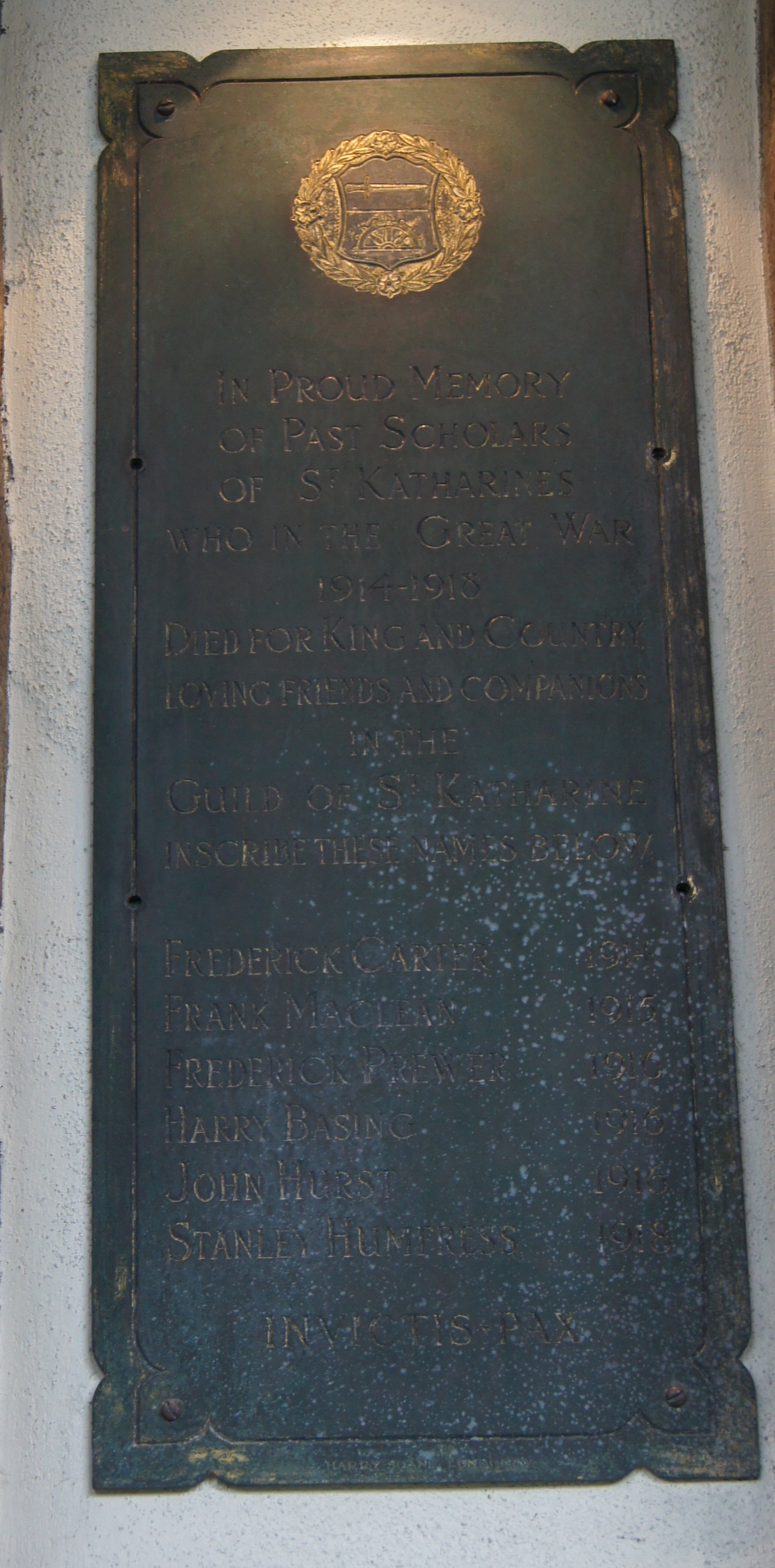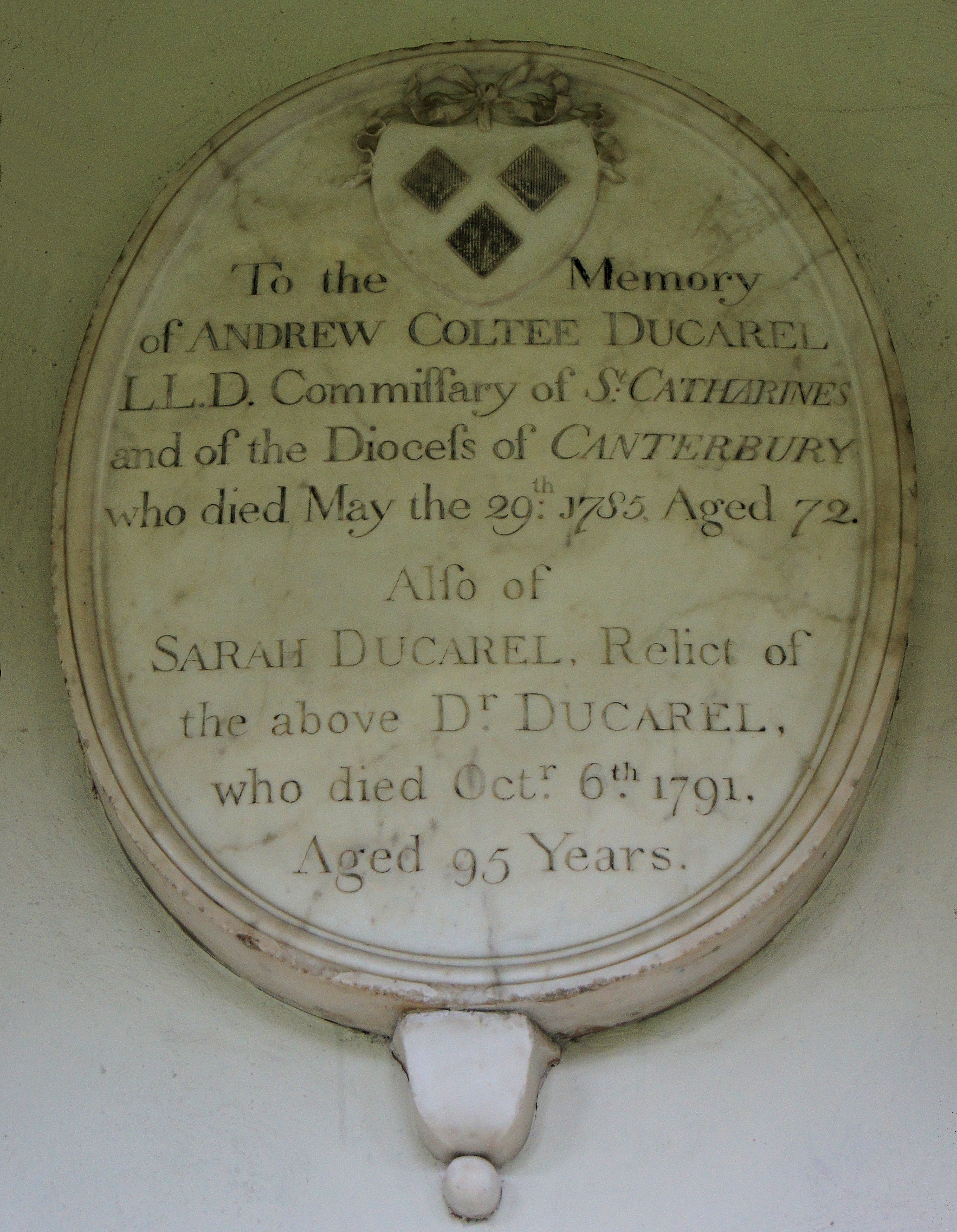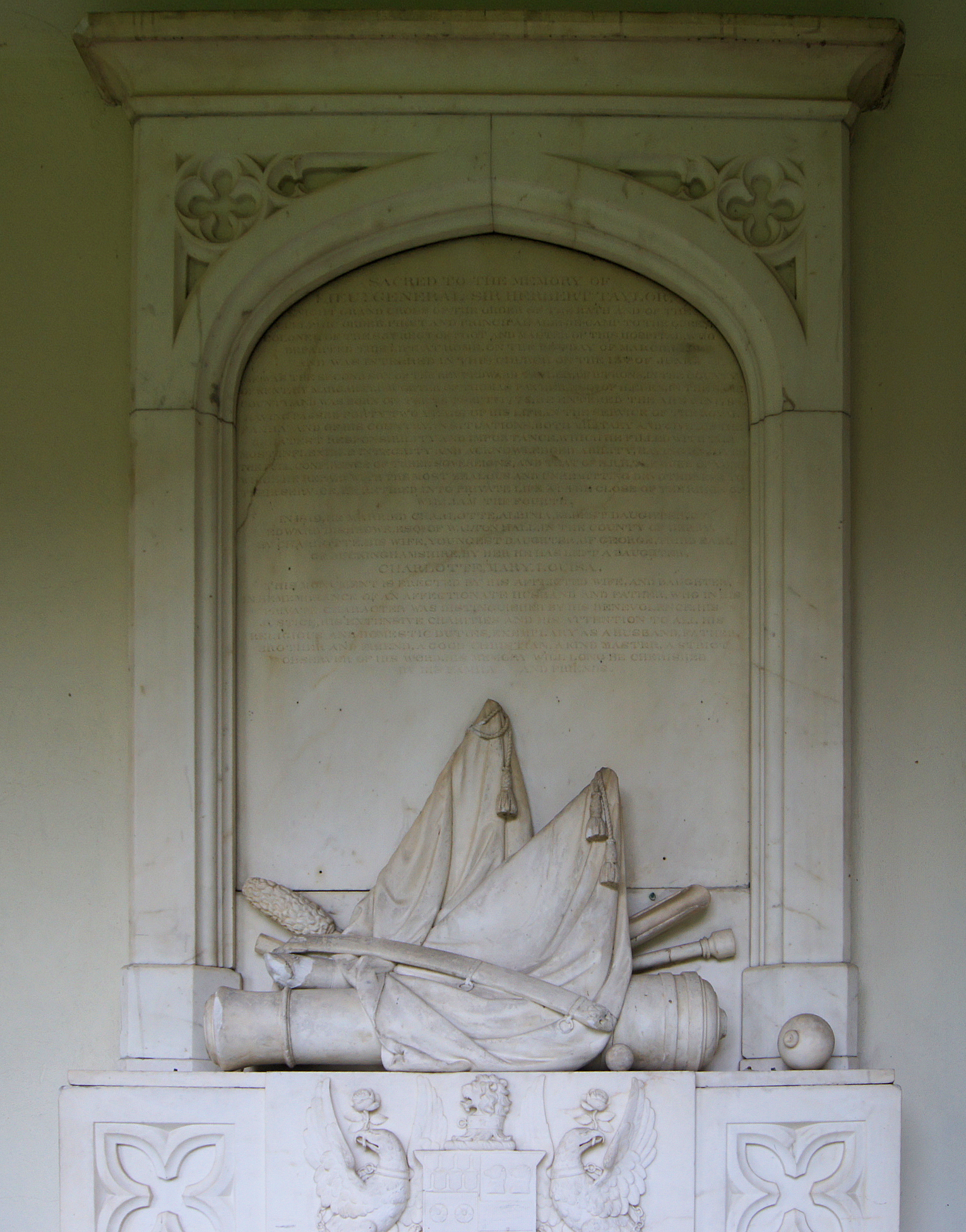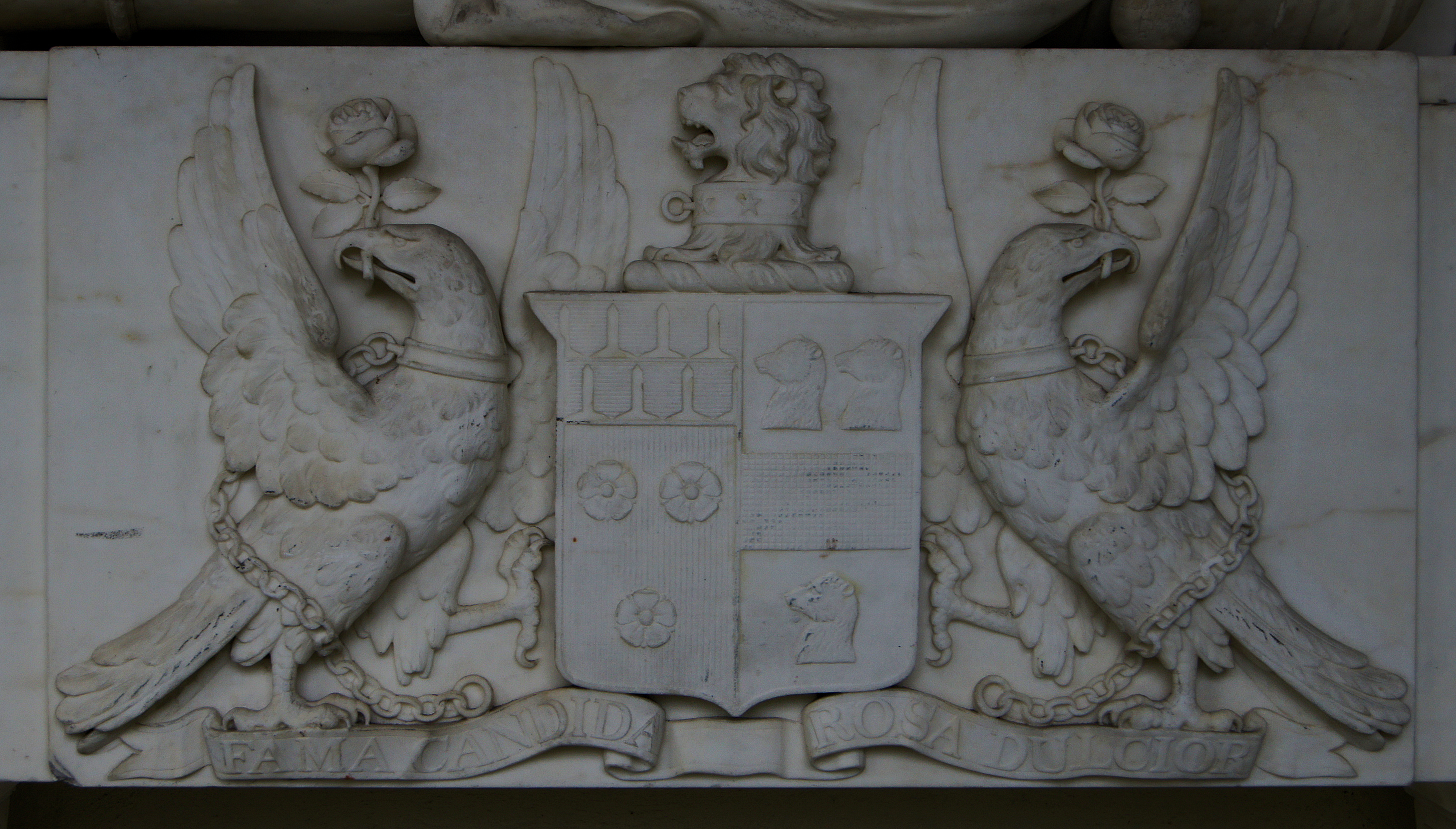|
|||||||||||||||
St Katherine by the Tower was founded in 1148 by Matilda of Boulogne, Queen Consort of King Stephen, as a Hospital for Master, bretheren, sisters and thirteen poor people, and was a dependency of the Augustinian Priory of Holy Trinity Aldgate. It was reconstituted in 1273 by Eleanor of Castile for master, three bretheren, priests, sisters, twenty-four paupers including six poor scholars (Knowles & Hadcock). It survived the Dissolution of the Monasteries in 1537 by virtue of royal protection, having been from its foundation to the present day under the patronage of the Queens (Regnant, Consort or Dowager) of England. It thus carried out its original function, albeit with a lay master, until 1825, when its site was requisitioned for the St Katherine's Docks (VCH London; Clapham; Nichols) The Foundation was relocated to a new precinct by Regent's Park, now with a clergyman for master. Fixtures and fittings were moved from the Thames-side site to the new Chapel, but all other traces there were swept away (Ditchfield; Druce; Jamison). An account of the monuments then extant at Regent's Park can be found in Lovell and Marcham. During the First World War, the Foundation's patron Queen Alexandra offered the Regent's Park Chapel to the Danish community, who use it to this day; St Katherine's activities, now entirely medical, relocated to Bromley-by-Bow, and after the Second World War the institution was refounded yet again, at a site on Butcher Row in Limehouse. Here a new chapel and semi-cloister now house the stalls from the original chapel and some monuments from Regent's Park, and the Foundation operates as a retreat and conference centre (About the House) This account combines the visible heraldry at Regents Park with that at Limehouse. |
|||||||||||||||
|
|||||||||||||||
| REGENT'S PARK Outer Circle TQ286833 | |||||||||||||||
| Exterior rear wall (Albany Street) | |||||||||||||||
| 1. | Carved shield: A Catherine wheel. | ||||||||||||||
| 2. | Carved shield: A Catherine wheel, broken at the top, enfiled of a sword in pale (a variation on the arms of the Foundation). | ||||||||||||||
|
|||||||||||||||
| Exterior frontage (Outer Circle) | |||||||||||||||
| 1. | Carved crowned shield: King George IV, with lion and unicorn supporters. The crowned Hanover inescutcheon is blank. | ||||||||||||||
| 2. | Carved crowned shield: Queen Eleanor (of Provence), with angel supporters, motto: ELIANORA FUNDAT; see Chapel interior. | ||||||||||||||
|
|||||||||||||||
| 3. | Eroded carved shield: A demi-Catherine Wheel, in chief a sword fessewise
(Foundation of St Katherine) Inscribed on surrounding belt: [probably] IN HAC SITU RESTITUTUM MDCCCXXVII |
||||||||||||||
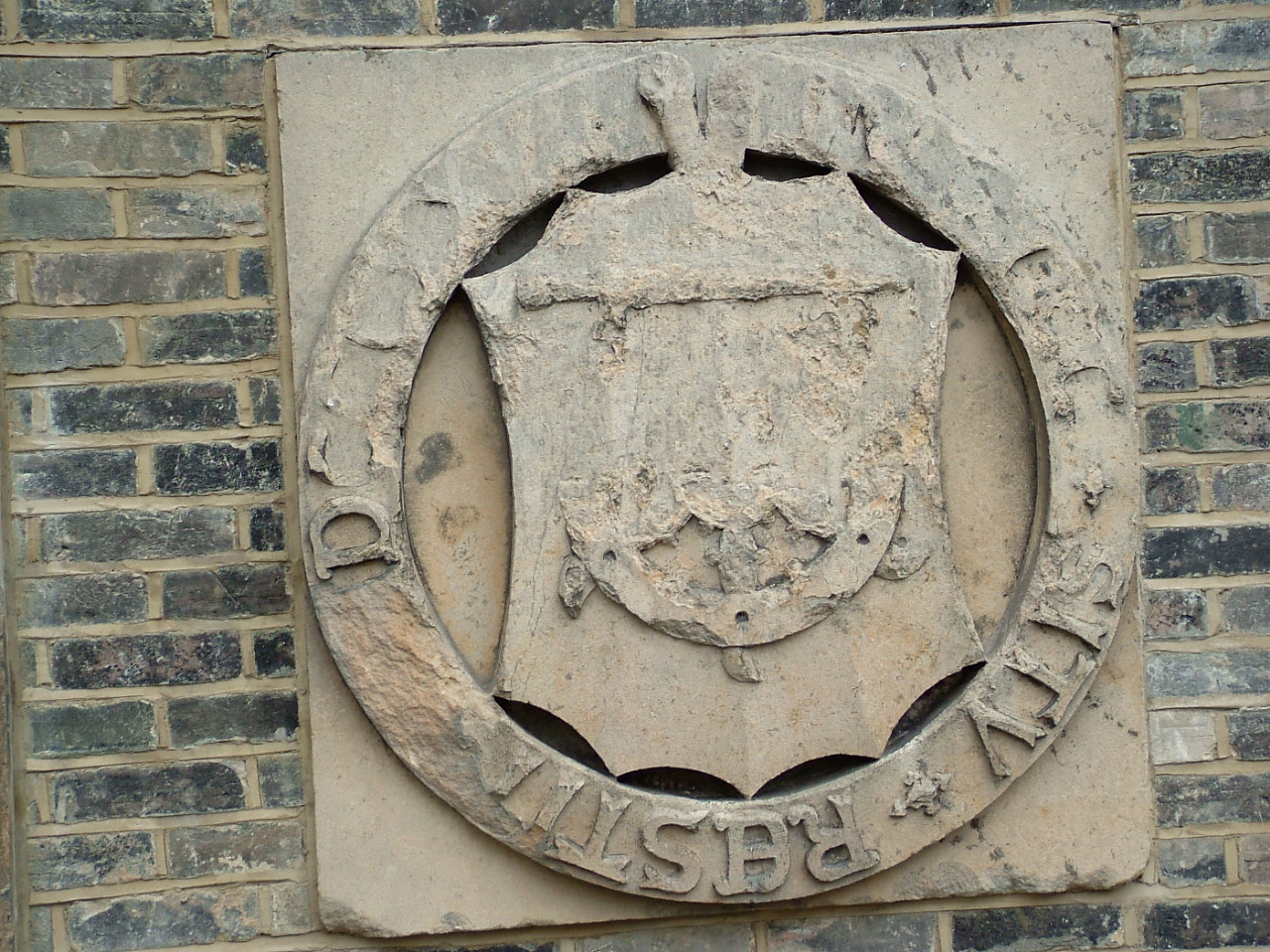 |
|||||||||||||||
| Chapel | |||||||||||||||
| Exterior: Western gable | |||||||||||||||
| 1. | Carved crowned shield: Queen Charlotte (of Meckelenburg-Strelitz). Pre-1805 version; George III's arms are: Quarterly, 1: England impaling Scotland; 2: France; 3: Ireland; 4: Hanover. Compare the version inside the Chapel (below). | ||||||||||||||
| 2. | Carved crowned shield: Queen Philippa (of Hainault); see Chapel interior. | ||||||||||||||
|
|||||||||||||||
| Interior: Frieze | |||||||||||||||
| Clockwise from east end: angels supporting shields of Queens of England C12- C20 | |||||||||||||||
| 1. | Queen Matilda (of Boulogne) consort of King Stephen from 1136; fundatrix
1148 Gules three sagittarii or (Stephen of Blois); dimidiating: Or three torteaux (Boulogne) |
||||||||||||||
| 2. | Queen Eleanor (of Acquitaine) consort of King Henry II from 1154 Gules two lions passant guardant or (Normandy); dimidiating: Gules a lion passant guardant or (Aquitaine) |
||||||||||||||
|
|||||||||||||||
| 3. | Queen Berengaria [Berragar] (of Navarre) consort of King Richard I
from 1191 Gules three lions passant guardant or (England); dimidiating: Azure a cross pometty or (Navarre ancient) |
||||||||||||||
| 4. | Queen Isabel (of Angoulême) consort of King John from 1200 England; dimidiating: Lozengy gules and or (Angoulême) |
||||||||||||||
|
|||||||||||||||
| 5. | Queen Eleanor (of Provence) consort of King Henry III from 1236 England; dimidiating: Or four pallets gules (Provence) |
||||||||||||||
| 6. | Queen Eleanor (of Castille) consort to King Edward I from 1272 England; dimidiating: Quarterly, 1 & 4: Gules a castle triple-towered or (Castille); 2 & 3: Or a lion rampant gules (Leon) |
||||||||||||||
|
|||||||||||||||
| 7. | Queen Margaret (of France) consort of King Edward I from 1299 England; dimidiating: Azure semy-de-lys or (France ancient) |
||||||||||||||
| 8. | Queen Isabel (of France) consort of King Edward II from 1307 England; dimidiating: France ancient |
||||||||||||||
|
|||||||||||||||
| 9. | Queen Philippa (of Hainault, House of Avesnes) consort of King Edward I from 1327 France ancient quartering England; impaling: Quarterly, 1 & 4: Or a lion rampant sable; 2 & 3: Or a lion rampant gules |
||||||||||||||
| 10. | Queen Anne (of Bohemia, House of Luxemburg) consort of King Richard II from 1382 England quartering France ancient; impaling: Quarterly, 1 & 4: Argent an eagle displayed sable armed and membered gules (HR Empire); 2 & 3: Gules a lion rampant double-queued argent crowned or (Bohemia) |
||||||||||||||
|
|||||||||||||||
| 11. | Queen Isabel (of France, House of Valois) consort of King Richard II from 1396 France ancient quartering England; impaling: Azure three fleurs-de-lys or(France modern) |
||||||||||||||
| 12. | Queen Joan (of Navarre, House of Evreux) consort of King Henry IV from 1402/03 France modern quartering England; impaling: Quarterly, 1 & 4: France ancient debuised of a bendlet compony argent and gules (Evreux); 2 & 3: Gules a cross saltire and orle of chains conjoined and linked at the fess point with an annulet or (Navarre) |
||||||||||||||
|
|||||||||||||||
| 13. | Queen Katherine (of France, House of Valois) consort of King Henry V from 1420 France modern quartering England; impaling: Azure three fleurs-de-lys or(France modern) |
||||||||||||||
| 14. | Queen Margaret (of Anjou) consort of King Henry VI from 1445 France modern quartering England; impaling: Quarterly of six, 1: Barry argent and gules (Hungary); 2: France ancient and a label gules (County of Anjou, for Naples); 3: Argent a cross potent between four plain crosses or (Jerusalem); 4: France ancient and a bordure gules (Duchy of Anjou); 5: Azure crusilly and two barbels hauriant addorsed or (Bar); 6: Or on a bend gules three alerions argent (Lorraine) |
||||||||||||||
|
|||||||||||||||
| 15. | Queen Elizabeth (Widville) consort of King Edward IV from 1464 France modern quartering England; impaling: Quarterly of 6, 1: Argent a lion rampant doubletailed gules crowned or (Luxemburg); 2: Quarterly: i and iv, Gules a sun rayonny argent; ii and iii, France ancient (Baux); 3: Barully argent and azure a lion rampant gules (Cyprus); 4: Gules three bends argent and on a chief per fess argent and or a rose gules seeded or (Ursins); 5: Gules three pales vair and on a chief or a label of five points azure (St. Pol); 6: Argent a fess and a quarter gules (Widville). |
||||||||||||||
| 16. | Queen Anne (Neville) consort of King Richard III from 1483 France modern quartering England; impaling: Quarterly of eight, 1: Checky or and azure a chevron ermine (Newburgh); 2: Gules a fess between six crosscrosslets or (Beuachamp); 3: Argent three fusils conjoined in fess gules (Montague); 4: Or an eagle displayed vert (Monthermer); 5: Gules a saltire argent and a label of five points or (Neville) [label should be compony argent and azure]; 7: Or three chevronels gules (Clare); 8: Quarterly argent and gules a fret or a bendlet sable (Despenser) |
||||||||||||||
|
|||||||||||||||
| 17. | Queen Elizabeth (Plantagenet, House of York) consort of King Henry VII from 1486 France modern quartering England; impaling: Quarterly, 1: France modern quartering England; 2 & 3: Or a cross gules (Burgh, Earl of Ulster); 4: Barry or and azure, in chief two pales between two gyrons azure and over all a scutcheon argent (Mortimer Earl of March) |
||||||||||||||
| 18. | Queen Katherine (of Spain, House of Aragon) consort of King
HenryVIII from 1509 France modern quartering England; impaling: Quarterly with a point in base: Argent a pomegranate proper (Granada); 1 & 4: Quarterly, i & iv: Gules a castle triple-towered or (Castille); ii & iii: Or a lion rampant gules (Leon); 2 & 3: Two coats impaled, Dexter: Or four pales gules (Aragon); Sinister: Per saltire in chief and base or four pales gules and in flanks argent an eagle displayed sable (Sicily) |
||||||||||||||
|
|||||||||||||||
| 19. | Queen Anne (Boleyn) consort of King Henry VII from 1532 France modern quartering England; impaling: Quarterly of six, 1: England and a label of France (Duchy of Lancaster); 2: France ancient and a label gules (Anjou-Naples); 3: Gules a lion passant gardant or (Acquitaine); 4: Quarterly, i and iv: Or, a chief indented azure (Butler); ii and iii: Argent a lion rampant sable crowned gules (Rochford); 5: England and a label argent (Thomas of Brotherton, Earl of Norfolk); 6: Chequy or and azure (Warenne). |
||||||||||||||
| 20. | Queen Jane (Seymour) consort of King Henry VIII from 1533 France modern quartering England; impaling: Quarterly of six, 1: Or on a pile gules between six fleurs-de-lys azure three lions of England (Seymour augmentation); 2: Gules two wings in lure or (Seymour); 3: Vair (Beauchamp of Hache); 4: Argent three demi-lions rampant couped gules (Sturmy); 5: Per bend argent and gules three roses in bend counterchanged (Mackwilliam); 6: Argent on a bend gules three leopard's faces or (Coker). |
||||||||||||||
|
|||||||||||||||
| 21. | Queen Anne (of Cleves) consort of King Henry VIII from 1539 France modern quartering England; impaling: Gules, an escarboucle or and a scutcheon argent (Cleves) |
||||||||||||||
| 22. | Queen Katherine (Howard) consort of King Henry VIII from 1540 France modern quartering England; impaling: Quarterly, 1: Azure three fleurs-de-lys in pale or between two flanches ermine each charged with a rose gules (augmentation); 2: England and a label argent (Thomas of Brotherton, Earl of Norfolk); 3: Gules a bend between six crosses-crosslet fitchy argent and on the bend an escutcheon or charged with a demi-lion rampant shot through the mouth with an arrow all within a double tressure flory counter-flory gules (Howard with the augmentation for Flodden); 4: Azure two lions passant gardant between four demi-fleurs-de-lys issuant from the edges of the shield gold (augmentation) |
||||||||||||||
|
|||||||||||||||
| 23. | Queen Katherine (Parr) consort of King Henry VIII from 1543 France modern quartering England; impaling: Quarterly of six, 1: Or on a pile between six roses gules three roses argent (augmentation); 2: Argent two bars azure and a bordure engrailed sable (Parr); 3: Or three waterbudgets sable (Ros of Kendal); 4: Vair, a fess gules (Marmion); 5: Azure three chevrons interlaced and a chief or (FitzHugh); 6: Vert, three stags at gaze or (Green) |
||||||||||||||
| 24. | Queen Mary (Tudor) Queen Regnant from 1553 Quarterly with a point in base: Argent a pomegranate proper (Granada); 1 & 4: Quarterly, i & iv: Gules a castle triple-towered or (Castille); ii & iii: Or a lion rampant gules (Leon); 2 & 3: Two coats impaled, Dexter: Or four pales gules (Aragon); Sinister: Per saltire in chief and base or four pales gules and in flanks argent an eagle displayed sable (Sicily) (for King Philip II of Spain); impaling: France modern quartering England |
||||||||||||||
|
|||||||||||||||
| 25. | Queen Elizabeth, Queen Regnant from 1558 France modern quartering England |
||||||||||||||
| 26. | Queen Anne (of Denmark, House of Oldenburg) consort of King James I from 1602 Quarterly, 1 & 4: France modern quartering England; 2: Or a lion rampant within a double tressure flory counterflory gules (Scotland); 3: Azure a harp or (Ireland); impaling: Quarterly, 1: Or semy of hearts gules three lions passant crowned or (Denmark); 2: Gules a lion rampant crowned or holding a battle-axe argent handled gold (Norway); 3: Azure, three crowns or (Sweden); 4: Or in chief a lion passant gardant azure and in base semy of hearts gules (the Kingdom of the Goths); the quarters separated by a cross gules fimbriated argent (Dannebrog, the Banner of the Danes); in a champagne Gules a wyvern or (the Kingdom of the Vandals); on an escutcheon: Quarterly, 1: Or two lions passant gardant azure (Slesvig); 2: Gules an escutcheon per fess gules and argent surrounded by three nettle-leaves between three passion nails argent (Holstein); 3: Gules a swan argent gorged with a coronet or (Stormarn); 4: Azure a knight on horseback argent (Ditmarschen); and over all on a heartshield: Or two bars gules (Oldenburg); impaling: Azure a cross formy fitchy or (Delmenhorst) |
||||||||||||||
|
|||||||||||||||
| 27. | Queen Henrietta Maria (of France, House of Bourbon) consort of King
Charles I from 1625 Quarterly, 1 & 4: France modern quartering England; 2: Scotland; 3: Ireland; impaling: France modern |
||||||||||||||
| 28. | Queen Katherine (of Portugal, House of Braganza) consort of King
Charles II from 1662 Quarterly, 1 & 4: France modern quartering England; 2: Scotland; 3: Ireland; impaling: Argent, five scutcheons in cross azure each charged with as many plates within a bordure gules charged with castles or (Portugal) |
||||||||||||||
|
|||||||||||||||
| 29. | Queen Mary (of Modena, House of d'Este) consort of King
James II from 1685 Quarterly, 1 & 4: France modern quartering England; 2: Scotland; 3: Ireland; impaling: Quarterly, 1 & 4: Or an eagle displayed sable crowned gold (Imperial augmentation); 2 and 3: Azure three fleurs-de-lys or and a bordure emanchy gules and argent (French augmentation) (d'Este) |
||||||||||||||
| 30. | Queen Mary II (Stuart) Queen Regnant and consort of King William III from 1689 to 1694 Quarterly, 1 & 4: France modern quartering England; 2: Scotland; 3: Ireland; an escutcheon: Azure billetty a lion rampant or (Nassau); impaling: Quarterly, 1 & 4: France modern quartering England; 2: Scotland; 3: Ireland |
||||||||||||||
|
|||||||||||||||
| 31. | Queen Anne (Stuart) Queen Regnant from 1702 Quarterly, 1 & 4: England impaling Scotland; 2: France modern; 3: Ireland |
||||||||||||||
| 32. | Queen Sophia Dorothea (of Zelle, House of D'Este-Guelph) consort of King George I from 1714 Quarterly, 1: England impaling Scotland; 2: France modern; 3: Ireland; 4: Tierced in pall reversed, i: Gules two lions passant gardant or (Brunswick); ii: Or semy of hearts gules a lion rampant azure (Lüneburg); iii: Gules a horse courant argent (Hanover); on an escutcheon gules the crown of Charlemagne proper (Archtreasurership of the Empire) (Hanover); impaling: Quarterly of thirteen: 1: Gules two lions passant gardant or (Brunswick); 2: Gules a horse courant argent (Hanover); 3: Or semy of hearts gules a lion rampant azure (Lüneburg); 4: Azure a lion rampant argent crowned or (Eberstein); 5: Argent a Catherine wheel gules ( ); 6: Gules a lion rampant or within a bordure gobony gules and argent (Homburg); 7: Per fess azure and argent in chief a lion rampant argent in base an eagle displayed azure ( ); 8: blank; 9: Two coats per fess: in chief, Gules a lion rampant or (Lauterberg); in base, Or three bars wavy gules ( ); 10: Argent a stag trippant sable (Klettenberg); 11: Three coats per fess: in chief, Or two bears' paws erect sable (Hoya); in fess, Barry of six argent and gules ( ); in base, Gyronny argent and azure (Bruckhausen); 12: Chequy argent and gules (Honstein?); 13 (in base): Argent two stag's attires the dexter in bend gules and the sinister in bend sinister sable (Regenstein and Blankenburg) |
||||||||||||||
|
|||||||||||||||
| 33. | Queen Caroline (of Brandenburg-Ansbach, House of Hohenzollern) consort of King George II from 1727 Quarterly, 1: England impaling Scotland; 2: France modern; 3: Ireland; 4: Hanover; impaling: Quarterly of fourteen: 1 & 14: Per fess gules and argent (Magdeburg); 2: Argent an eagle displayed sable crowned or (Prussia?); 3: Or a griffin segreant gules (Stettin?); 4: Argent a griffin segreant gules (Pomerania?); 5: Argent a griffin segreant gules (Wenden?); 6: Or a lion rampant sable ( ); 7: Argent a griffin segreant sable (Cassuben?); 8: Per pale argent and gules (Halberstadt); 9: Argent an eagle displayed sable (Crossen or Jägerndorf?); 10: Or a lion rampant sable within a bordure gobony argent and gules (Nuremberg?); 11: Gules, two keys in saltire argent (Minden); 12: Quarterly argent and sable (Hohenzollern); 13: Gules, a cross potent argent (Cammin?); 14: Gules plain (an indication of the enjoyment of sovereign rights); on an escutcheon: Argent, an eagle displayed gules (Brandenburg) |
||||||||||||||
| 34. | Queen Charlotte (of Mecklenburg-Strelitz, House of the Obotrites)
consort of King George III from 1761 Quarterly, 1 & 4: England; 2: Scotland; 3: Ireland; a crowned escutcheon: Tierced in pall reversed, i: Brunswick; ii: Lüneburg; iii: Hanover; on an escutcheon: Archtreasurership of the Empire (Kingdom of Hanover); impaling: Quarterly of six, 1: Or a bull's head cabossed sable armed and ringed argent crowned gules (Mecklenburg); 2: Azure a griffin segreant or (Rostock); 3: Per fess in chief azure a griffin segreant or and in base vert a bordure argent (Principality of Schwerin); 4: Gules a cross paty argent crowned or (Ratzeburg); 5: Gules a dexter arm in armour issuant from clouds in sinister flank and holding a finger-ring all proper (Stargard); 6: Or a buffalo's head sable armed argent crowned gules (Werle); an escutcheon: Per fess gules and or (County of Schwerin) |
||||||||||||||
|
|||||||||||||||
| 35. | Queen Caroline (of Brunswick-Wolfenbüttel, House of D'Este-Guelph) consort of King George IV from 1820 Quarterly, 1 & 4: England; 2: Scotland; 3: Ireland; a crowned escutcheon: Tierced in pall reversed, i: Brunswick; ii: Lüneburg; iii: Hanover; on an escutcheon: Archtreasurership of the Empire (Kingdom of Hanover); impaling: Quarterly of twelve, 1: Or semy of hearts gules a lion rampant azure (Lüneburg); 2: Gules two lions passant gardant or (Brunswick); 3: Argent a lion rampant azure (Eberstein?); 4: Gules, a lion rampant or within a bordure gobony gules and argent (Homburg); 5: Or a lion rampant gules crowned sable(Diepholz); 6: Gules, a lion rampant or (Lauterberg); 7: Per fess, in chief: Or two bears' paws erect sable (Hoya) and in base: Gyronny argent and azure (Bruckhausen); 8: Azure an eagle displayed argent (Diepholz); 9: Per fess in chief chequy argent and gules and in base barry or and gules (Honstein); 10: Argent a stag's attire in bend gules (Regenstein); 11: Argent a stag trippant sable (Klettenberg); 12: Argent a stag's attire in bend sinister sable (Blankenburg) |
||||||||||||||
| 36. | Queen Adelaide (of Saxe-Meiningen, House of Wettin) consort of King William IV from 1830; patron until 1849 Quarterly, 1 & 4: England; 2: Scotland; 3: Ireland; a crowned escutcheon: Tierced in pall reversed, i: Brunswick; ii: Lüneburg; iii: Hanover; on an escutcheon: Archtreasurership of the Empire (Kingdom of Hanover); impaling: Quarterly of 19, 1: Azure a lion barry argent and gules (Landgraviate of Thuringia); 2: Gules an escarboucle or and an escutcheon argent (Cleves); 3: Or a lion rampant sable (Meissen); 4: Or a lion rampant sable crowned argent (Jülich); 5: Argent a lion rampant gules crowned or (Berg?); 6: Argent an eagle displayed gules crowned or ( ); 7: Or two pales azure (Landsberg); 8: Sable an eagle displayed or (Palatinate of Thuringia); 9: Or semy of hearts gules a lion rampant sable crowned gules (Orlamünde); 10: Argent three bars azure (Eisenberg); 11: Azure, a lion rampant per fess or and argent (Pleissen?); 12: Argent a rose gules seeded or (Altenburg); 13: Gules plain (for the enjoyment of sovereign rights); 14: Argent three beetle's pincers gules (Engern); 15: Or a fess chequy argent and gules (Mark); 16: two coats impaled, dexter: Gules a column argent crowned gold (Römhild); sinister: Or on a mount vert a cock sable (Henneberg); 17: Argent three chevrons gules (Ravensberg); 18: Gules a castle twin-towered argent ( ); 19: Sable on a bend sinister three boars' heads erased of the first ( ); on an escutcheon: Barry or and sable a Rautenkranz vert (Saxony) |
||||||||||||||
|
|||||||||||||||
| 37. | Queen Victoria, Queen Regnant from 1837; patron from 1849 Quarterly, 1 & 4: England; 2: Scotland; 3: Ireland |
||||||||||||||
| 38. | Queen Alexandra (of Denmark, House of Oldenburg) consort of King Edward VII from 1901; patron until 1926 Quarterly, 1 & 4: England; 2: Scotland; 3: Ireland; impaling: Quarterly: 1: Or semy of hearts gules three lions passant crowned or (Denmark); 2: Or two lions passant gardant azure (Slesvig); 3: Per fess, in chief: Azure three crowns or (Sweden); and in base per pale, dexter: Gules , a stockfish argent crowned or (Iceland), sinister per fess, in chief: Azure a ram statant argent (the Faeroes) and in base: Azure a Polar bear sejant erect argent (Greenland); 4: Per fess, in chief: Or in chief a lion passant gardant azure and in base semy of hearts gules (the Kingdom of the Goths); and in base: Gules a wyvern or (the Kingdom of the Vandals); the quarters separated by the cross of Dannebrog; on a scutcheon, Quarterly: 1: Gules an escutcheon per fess gules and argent surrounded by three nettle-leaves between three passion nails argent (Holstein); 2: Gules a swan argent gorged with a coronet or (Stormarn); 3: Azure a knight on horseback argent (Ditmarschen); 4: Gules a horse's head couped or (Lauenburg); and over all on a heartshield, Or two bars gules (Oldenburg); impaling: Azure a cross formy fitchy or (Delmenhorst) |
||||||||||||||
|
|||||||||||||||
| 39. | Queen Mary (of Teck, House of Württemberg) consort of King George V from 1910; patron from 1926 until 1953 Quarterly, 1 & 4: England; 2: Scotland; 3: Ireland; impaling: Quarterly, 1 & 4: Quarterly, i & iv: England; ii: Scotland; iii: Ireland; an uncrowned escutcheon: Tierced in pall reversed, i: Brunswick; ii: Lüneburg; iii: Hanover; on an escutcheon: Archtreasurership of the Empire (Hanover); differenced by a label of three points argent, the centre point charged with a cross and each of the others with two hearts gules (Adolphus Duke of Cambridge); 2 & 3: two coats impaled and over all an escutcheon: Paly bendy sinister sable and or (Teck); dexter: Or three stag's attires fessways in pale sable (Württemberg); sinister: Or three lions passant in pale sable their dexter fore-paws gules (Swabia) |
||||||||||||||
|
|||||||||||||||
| For the next Queen Consort, Elizabth Bowes-Lyon, see Limehouse Ante-chapel | |||||||||||||||
| Ledger slabs from St Katherine's by the Tower | |||||||||||||||
| 1. | A fess between three annulets; impaling: A chevron between three
boars statant Crest: A greyhound's head gorged For William Waterson, who died 6 Jan 1710 aged 73, Edmund his only son, who died 16 Jan 1713 aged 41 and his wife Sarah daughter of Rouse Tonnley, who died 10 Nov 17[erased] The standard reference works offer no authority for these arms A corresponding wall monument has been relocated at Limehouse |
||||||||||||||
|
|||||||||||||||
| 2. | [Azure] a saltire [or] on a chief [or] three lions rampant [azure]
(Cooper of Gloucester for Gipper); impaling: Ermine on a
chevron coticed [sable] three scallops [argent] (Brownell) Crest: Out of a mural crown a falcon rising [Cooper of Gloucester has: on a mural coronet argent a pelican vulning herself proper] [Tinctures for Cooper/Gipper are conjectural, based on best fit in Burke GA, Papworth and Fairbairn] For Mrs Chri[erased] Gipper, who died 23 Apr 1754 aged 23, her father Capt John Brownell, who died 19 Jun 1767 aged 73, [his wife?] Mrs Morris Setton Brownell, who died 8 Mar 1786 aged 77 |
||||||||||||||
|
|||||||||||||||
| 3. | Quarterly, 1 & 4: [Argent] Three fusils conjoined in fess [gules]
within a bordure [sable] (Montagu); 2 & 3: [Or] An eagle displayed
[vert] (Monthermer) Crest: A griffin's head couped [or] wings endorsed [sable] For the Hon George Montagu, Master of St Katherine's 1660/61-1681, who died 19 July and was buried 23 Jul 1681 (Jamison) |
||||||||||||||
|
|||||||||||||||
| 4. | [Argent] Three pelicans vulning themselves [or? vulned gules] on a
chief emabattled [azure] [three?] molets [argent] (Paterson of
Bannockburn); impaling: A fess between three leopard's faces (?) Crest: A dexter cubit arm holding a quill [all proper] (Paterson of Bannockburn) For Edward Patterson, Elder Brother of St Katherine's, who died 11 Kal May [21 Apr] 1750 aged 44, and for Charlotte his wife who died 27 Nov 1741 aged 29 |
||||||||||||||
|
|||||||||||||||
| 5. | Shield blank For John Williams of St Katherine's parish brewer, died 3 Mar 1661/62 aged 55 and his wife Alice who died 29 Jan 1660/61; and for Jeremiah Horsnaile brewer, died 3 Mar 1692/93 aged 63 and his wife Alice, died 6 Feb 1691/92; and other members of the family |
||||||||||||||
|
|||||||||||||||
| 6. | [Argent] On a cross [azure] five fleurs-de-lys [or] in dexter chief
a lion rampant [gules] (Hitchcock of Preshute WIL); impaling: [Argent] A
greyhound [sable] passant on a chief [azure] three fleurs-de-lys [or]
(Halford of Wistow and of Welham) (Burke EB) Crest: a tower issuant therefrom a lion rampant [Hichcoke has: In a tower gules embattled or a lion's head gules (Burke GA, Fairbairn)] For John Hickox citizen of London who died 27 Nov 1706 aged 41 and his wife Elizabeth 2nd daughter of Sir William Holford of Welham LEI |
||||||||||||||
|
|||||||||||||||
| 7. | Arms eroded and illegible For Susanna widow of Emmanuel Dudson, died 2 Jul 1690 aged 27 |
||||||||||||||
|
|||||||||||||||
| Danish Heraldry | |||||||||||||||
| 1. | Royal arms of Denmark; As for Queen Alexandra,
above, except for the omission of Iceland in the third quarter Supporters: Savage men proper, girded and wreathed in foliage vert, holding clubs proper in the outer hands Mantle: Ermine and gules The royal crown Chains of two orders: The Elephant and the Dannebrog |
||||||||||||||
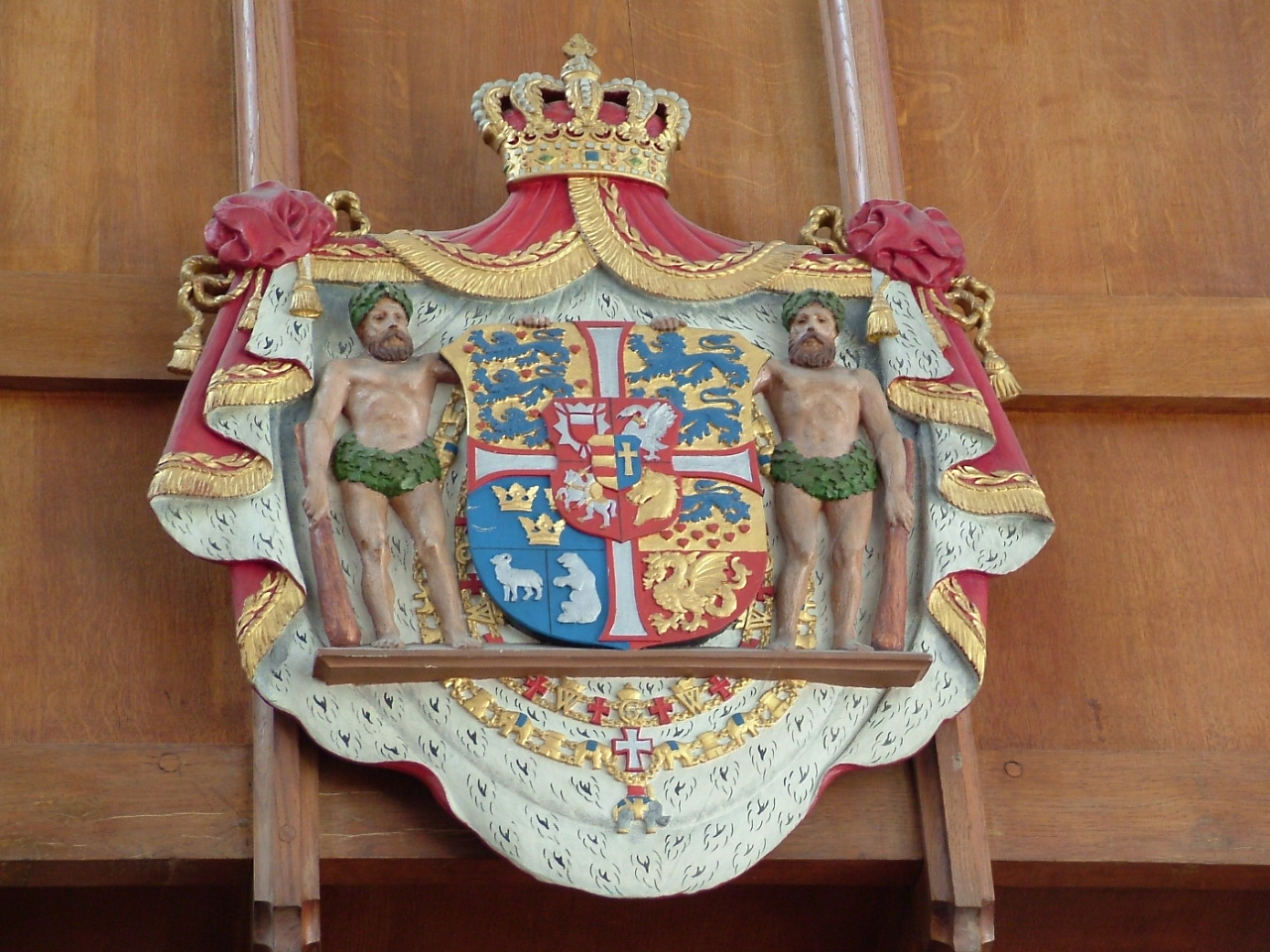 |
|||||||||||||||
| 2. | Gules a fess checky argent and gules On a wall plaque commemorating Kai Gabriel Cibber 1630-1700 and Lt-Gen Albert Borgaard 1659-1751, leaders of the Danish church in London |
||||||||||||||
 |
|||||||||||||||
| LIMEHOUSE Junction of Butcher Row and Radcliffe Lane TQ360810 | |||||||||||||||
| Exterior (Butcher Row) | |||||||||||||||
| Sculpted stone achievement: Stuart Royal arms: Quarterly, 1 & 4: France quartering England; 2: Scotland; 4: Ireland; impaling: Portugal Ensigned with Royal crown Supporters, dexter: Lion guardant royally crowned (England); sinister: Dragon (Portugal) Motto: unreadable For Queen Katherine (of Portugal, House of Braganza) consort of King Charles II from 1662 |
|||||||||||||||
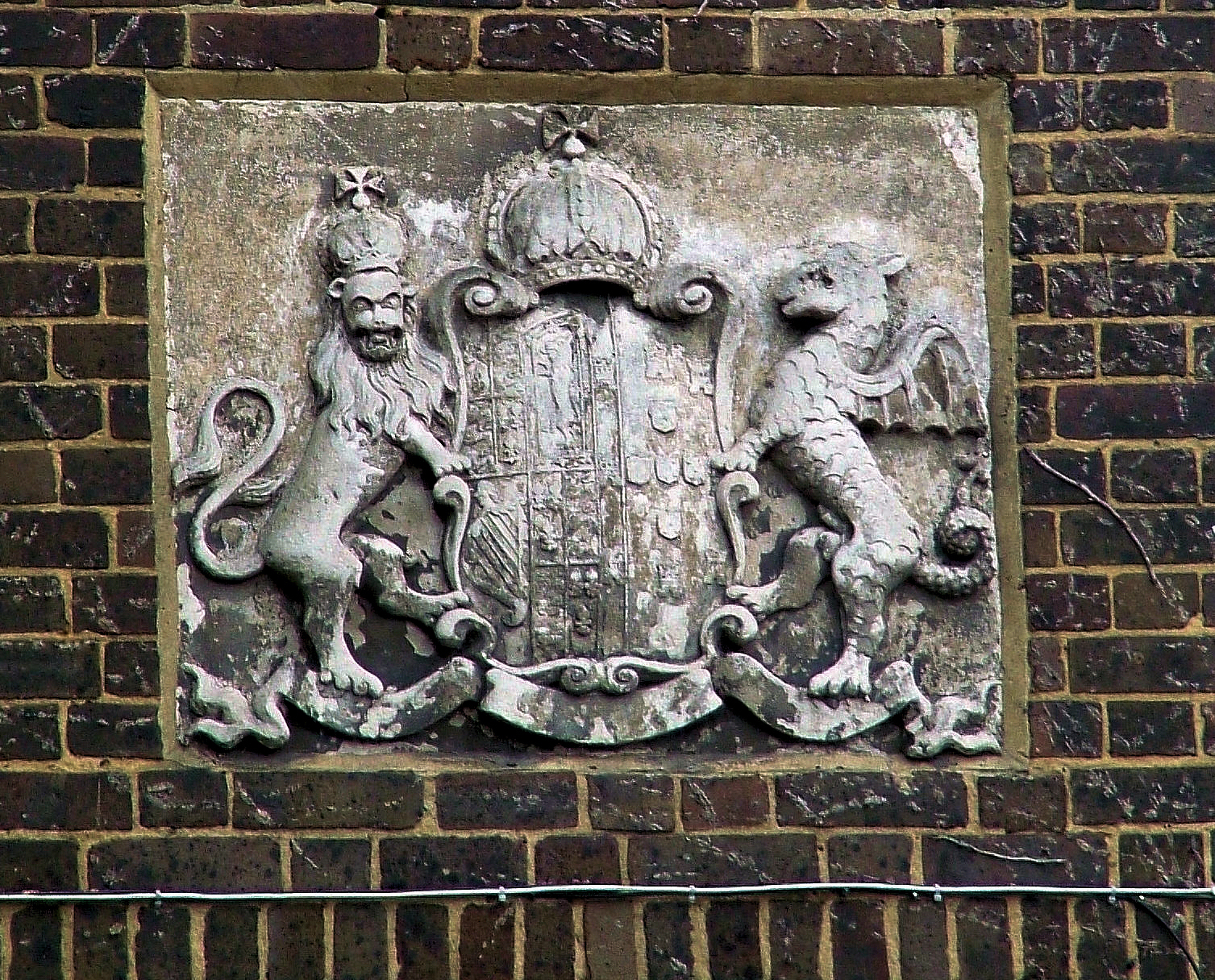 |
|||||||||||||||
| CHAPEL | |||||||||||||||
| The majority of the coats of arms are shields of Masters affixed to the panelling, and of Lords Chancellor, affixed to the stalls. The latter had rights of visitation to the Hospital, established under Lord Somers in the 1690s (Jamison). Here they are all listed clockwise from the entrance, so the order is not chronological. | |||||||||||||||
| West end stalls north side | |||||||||||||||
| 1. | Talbot 1733 (Charles Baron Talbot, Lord Chancellor 1733-37): Gules a lion rampant in a bordure engrailed or a crescent sable in centre chief for difference (Talbot) | ||||||||||||||
| 2. | Harwick [sic] 1737 (Philip Yorke Earl of Hardwicke, Lord Chancellor 1737-56): Argent on a saltire azure a plate (Yorke) | ||||||||||||||
| 3. | Northington 1760 (Robert Henley Earl of Northington, Lord Chancellor 1757-66): Azure a lion rampant argent crowned or within a bordure argent charged with eight torteaux (Henley) | ||||||||||||||
|
|||||||||||||||
| 4. | Camden 1766 (Charles Pratt Earl Camden, Lord High Chncellor 1766-70): Sable on a fess between three elephants' heads couped argent three molets sable (Pratt) | ||||||||||||||
| 5. | Morden 1770 (Charles Yorke, Lord Chancellor 1770; designated but never created Baron Morden): Argent on a saltire azure a plate a crescent sable in centre chief for difference (Yorke) | ||||||||||||||
|
|||||||||||||||
| Panelling below windows, north side | |||||||||||||||
| 1. | Thomas de Beckington LLD 1440 (Master before de la Bere, King's Secretary, Bishop of Bath & Wells): Argent on a fess vert between in chief three stags' heads caboshed gules and in base three pheons sable a mitre with infulae or | ||||||||||||||
| 2. | John de la Bere 1446 (Master until about 1449, Bishop of St David's): Azure a bend or coticed argent between six martlets or | ||||||||||||||
| 3. | Henry Trevillian 1461 (Master before Wydeville): Barry wavy of six argent and azure on a chief gules a demi-horse forcene argent | ||||||||||||||
|
|||||||||||||||
| 4. | Lionel de Wydeville 1475 (Master to 1483, Bishop of Salisbury): Argent a fess and canton conjoined gules | ||||||||||||||
| 5. | George de Athiqua 1512 (Master 1512-1536/37, Bishop of Llandaff):
Barry wavy of six argent and gules three scorpions? or However, in Bedford's Blazon of Episcopacy, 1897, citing Thomas Wriothesley's MS at Clumber, George Athequa Bishop of Llandaff is given as: Argent on a chevron gules between three storks azure beaks and legs gules a holy dove between two garbs or |
||||||||||||||
| 6. | Thomas Seymour 1547 (Lord Seymour of Sudeley, Master until attainted 1549): Gules two wings conjoined in lure or in chief a crescent argent for difference | ||||||||||||||
|
|||||||||||||||
| 7. | Sir Francis Fleming 1549 (Lieutenant of Ordnance at the Tower, Master 1549-54): Gules a chevron between three owls close guardant argent on a pile in chief or a cannon bendwise azure | ||||||||||||||
| 8. | Sir Julius Caesar 1596 (MP, Master of Requests, Master of the Rolls, Master of St Katherine's 1596-1636): Per chief argent and gules six roses 3,2 1 and 1 counterchanged seeded or | ||||||||||||||
|
|||||||||||||||
| Wall monuments north side | |||||||||||||||
| 1. | For Frederick Becker, a Dutchman, who married Adriana Wernatty
daughter of Sir Filibert Wernatty Bt and drowned overboard from his ship in the Thames 30 May 1663 aged 39 Argent a chevron azure between two trefoils slipped in chief vert and a chaplet in base proper (Becker), impaling: Or on a mount vert three trees proper on a chief azure a molet of six points or (Vernatty; according to Burke GA, three molets; GECBt gives no arms for Vernate or Vernatti, Bt cr.1634; QFVF in Her & Gen, 1870, 5, 146 gives: Or on a mound three elm trees proper on a chief azure an estoile or) |
||||||||||||||
|
|||||||||||||||
| 2. | For Ann née Caesar widow of Sir John Poyntz of Iron Acton GLS, died 23
Jun 1729 On a lozenge: Barry of eight or and gules [now argent and sable] (Pointz); impaling: Per chief argent and gules six roses 3,2 1 and 1 counterchanged [detail and tinctures obscured] (Caesar) |
||||||||||||||
|
|||||||||||||||
| East end stalls north side | |||||||||||||||
| 1. | Clarendon 1658 (Sir Edward Hyde Earl of Clarendon, Lord Chancellor 1658-67): Azure a chevron between three lozenges or (Hyde) | ||||||||||||||
| 2. | Shaftesbury 1672 (Sir Anthony Ashley Cooper Earl of Shaftesbury, Lord Chancellor 1672-73): Argent three bulls statant sable (Ashley) | ||||||||||||||
| 3. | Nottingham (Heneage Finch Earl of Nottingham, Lord Chancellor 1673-1682): Argent a chevron between thee griffins passant sable in chief a martlet gules for difference (Finch) | ||||||||||||||
|
|||||||||||||||
| 4. | Jeffereys 1685 (George Baron Jeffreys, Lord Chancellor 1685-88): Ermine a lion rampant and on a canton sable a molet argent (Jeffreys) | ||||||||||||||
| 5. | Brass plate: Arthur Lewis Babington Peile MA CVO, Master
1889-1911 Argent a bend between two mollets pierced sable Crest: Out of a mural crown or a molet pierced sable Mantling: Sable and argent Motto: Spes mea in Deo Royal Victorian Order pendant from shield |
||||||||||||||
| 6. | Brass plate: Severne Andrew Ashhurst Majendie, Brother from 1896,
Acting Master 1914-19, Chapel Warden from 1919, died 1927 Quarterly, 1 & 4: Or on a mound vert a palm tree between in dexter a serpent nowed erect and in sinister a dove close; 2 & 3: Gules a cross between fours fleurs-de-lys argent on a canton sable three bars argent Crest: An arm embowed armoured proper holding a falchion argent hilted or Mantling: Sable and argent Motto:Qualis ab incepto |
||||||||||||||
|
|||||||||||||||
| 7. | Brass plate: Rev. St John Beverley Groser, first Master at Ratcliffe
(i.e. Limehouse) 1948-62 Per fess gules and azure in chief a sword fesswise and in base a demi-Catherine Wheel or [lower half of wheel], ensigned with a Royal crown proper (Royal Foundation of St Katherine) |
||||||||||||||
| 8. | Brass plate: Rev. John Hulbert Glover 1820-1912, Brother from 1854,
Vicar of Kingsthorpe 1856-1884 Crest only: An eagle displayed Motto: Sic volo |
||||||||||||||
|
|||||||||||||||
| Panelling east end, left of altar | |||||||||||||||
| 1. | Hon. Henry Montagu 1659 [sic] (Master 1637/38-53): Quarterly, 1 & 4:Argent three fusils conjoined in fess a bordure azure (Montagu); 2 & 3: Or an eagle displayed sable [for vert] membered gules (Monthermer) in fess point a fleur-de-lys for difference | ||||||||||||||
| 2. | Hon George Montagu 1661 (Master 1660/61-81): Quarterly, 1 & 4:Argent three fusils conjoined in fess a bordure azure (Montagu); 2 & 3: Or an eagle displayed sable [for vert] membered gules (Monthermer) in fess point an annulet gules for difference | ||||||||||||||
|
|||||||||||||||
| 3. | William Lord Brouncker 1681 (Viscount Browncker, Chancellor and Keeper of the Great Seal to Queen Catherine of Braganza, Master 1681-84: Argent six pellets 3, 2 and 1 a chief embattled sable | ||||||||||||||
| 4. | Sir James Butler Kt 1684 (Master 1684-98): Or a chief indented azure a crescent for difference | ||||||||||||||
|
|||||||||||||||
| Panelling east end, right of altar | |||||||||||||||
| 1. | Lewis de Duras Earl of Feversham KG 1698 (Chamberlain to Queen Catherine of Braganza, Master 1698-1709): Gules a lion rampant argent | ||||||||||||||
| 2. | Sir Henry Newton Kt LLD 1709 (Judge of the Admiralty Court, Master 1709-15): Sable two shinbones in saltire argent | ||||||||||||||
|
|||||||||||||||
| 3. | William Farrar MP 1715 (Master 1715-27): Argent on a bend engrailed sable three horseshoes argent | ||||||||||||||
| 4. | Hon George Berkeley MP 1735 (Master 1727-46): Gules a chevron between in chief six and in base four crosses paty argent a martlet sable for difference | ||||||||||||||
|
|||||||||||||||
| East end stalls south side | |||||||||||||||
| 1. | Apsley 1771 (Henry Bathurst Baron Apsley, later Earl Bathurst, Lord Chancellor 1771-78): Sable two bars ermine in chief three crosses paty argent [for or] (Bathurst) | ||||||||||||||
| 2. | Thurlow 1778 (Edward Baron Thurlow, Lord Chancellor 1778-83): Argent on a chevron coticed sable three portcullises argent (Thurlow) | ||||||||||||||
| 3. | Loughborough 1793 (Alexander Wedderburn Baron Loughborough, later Earl of Rosslyn, Lord Chancellor 1793-1801): Argent a chevron between three roses gules seeded or a fleur-de-lys or for difference (Wedderburn) | ||||||||||||||
|
|||||||||||||||
| 4. | Erskine 1806 (Thomas Baron Erskine, Lord Chancellor 1806-07): Argent a pale sable a molet gules for difference (Erskine) | ||||||||||||||
| 5. | Brass plate: For Edith Herbert, Principal of the Royal College of St Katherine by the Tower at Brunswick Road Poplar 1918-48: Per fess in chief a sword fesswise in base a demi-Catherine Wheel [upper half of wheel] [no tinctures] (Royal Foundation of St Katherine) | ||||||||||||||
| 6. | Brass plate: For Marianne Elizabeth Green, last Sister of St Katherine's, died 1929: Per fess gules and sable in chief a sword fesswise in base a demi-Catherine wheel [all probably meant to be or, but the brass is very pale] (Royal Foundation of St Katherine) | ||||||||||||||
|
|||||||||||||||
| 7. | Brass plate: For George Brett Priest, Brother of St Katherine's from 1906, died 1907: Per fess gules and azure in chief a sword fesswise and in base a demi-Catherine Wheel or [upper half of wheel] (Royal Foundation of St Katherine) | ||||||||||||||
| 8. | Brass plate: For Horatia Charlotte Frances Stopford 1835-1920, Sister of St Katherine's from 1875: On a lozenge; Azure semy of crosscrosslets three lozenges or (Stopford) | ||||||||||||||
| 9. | Brass plate: For Charles Brinsley Marlay JP DL 1829-1912: Quarterly, 1 & 4: Azure a lion rampant argent; 2 & 3: Barry of six or and gules on a bordure azure eight martlets or (Marlay) Crests: Dexter, a robin close proper; sinister, an eagle displayed or Motto (over the sinister crest): Nulli praeda sumus Motto (below achievement): Candor dat viribus alas Mantling: Sable and argent |
||||||||||||||
|
|||||||||||||||
| Panelling below windows, south side | |||||||||||||||
| 1. | Edward Disbrowe MP 1816 (Vice-Chamberlain to Queen Charlotte, Master 1817-18): Argent a fess between three bears' heads couped sable muzzled gules [for or?] (Desbrow) | ||||||||||||||
| 2. | Lieut General Sir Herbert Taylor KGH 1818 (Private Secretary to
George III and Queen Charlotte, Master 1819-39 ): Gules three roses
argent seeded or barbed vert a bordure or a chief vair (Taylor) [The bordure or may be in error; see his monument in the Cloister] |
||||||||||||||
| 3. | Hon William Ashley DCL 1839 (Master 1839-77): Quarterly, 1 & 4: Argent three bulls passant sable armed and unguled or (Ashley); 2 & 3: Gules a bend engrailed between six lions rampant or(Cooper) in fess point a crescent sable for difference | ||||||||||||||
|
|||||||||||||||
| 4. | Rev J H S St John Blunt 1879 (Master 1879-89): Barry nebuly of six or and sable (Blunt) | ||||||||||||||
| 5. | Rev Arthur L B Peile 1889 (Master 1889-1912): Argent a bend between two mollets pierced sable (Peele) | ||||||||||||||
|
|||||||||||||||
| Wall monument south side | |||||||||||||||
| Brass set in marble frame On main tablet: On a chevron between three roundels each charged with a martlet three mascles [Does not correspond to Cutting(e); Pratt of London is: Argent on a chevron sable between three ogresses each charged with a martlet of the first as many mascles or] Crest: A beast's head [wolf?] Two shields on the lintel, right: [Argent] a royal tent between two parliament robes [gules] lined ermine the tent garnished [or] tentstaff and pennant [or] on a chief [azure] a lion passant guardant [or](Merchant Taylors' Company); left: City of London For William Cuttinge, Goldsmith and Merchant Taylor, died 4 Mar 1599/1600 aged 50 On gable: [Argent] four staves raguly in saltire [gules] a bordure [azure] bezanty (Berblock) For Cuttinge's executor William Berblox |
|||||||||||||||
|
|||||||||||||||
| West end stalls south side | |||||||||||||||
| 1. | Somers 1693 (John Baron Somers, Lord Chancellor 1693-1700): Vert a fess dancetty ermine (Somers) | ||||||||||||||
| 2. | Cowper 1705, 1714 (William Baron Cowper, Lord Chancellor 1705-10, 1714-18): Argent three martlets and on a chief engrailed gules three annulets or (Cowper) | ||||||||||||||
| 3. | Harcourt 1708 (Simon Baron Harcourt, Lord Chancellor 1710-14): Gules two bars or (Harcourt) | ||||||||||||||
|
|||||||||||||||
| 4. | Macclesfield 1718 (Thomas Parker Earl of Macclesfield, Lord Chancellor 1718-25): Gules a fess between three leopards' faces or (Parker) | ||||||||||||||
| 5. | King 1725 (Peter Baron King, Lord Chancellor 1725-33): Sable three spear points argent on a chief or three poleaxes sable (King) | ||||||||||||||
|
|||||||||||||||
| Ante-Chapel | |||||||||||||||
| 1. | Wall tablet For Joanna daughter of Robert Caesar and wife of John Rampayne, who died 15 Dec 1694 A lion Rampant; impaling: Per chief six roses 3, 2 and 1 (Caesar) Compare the monument of her sister Ann Poyntz inside the Chapel |
||||||||||||||
| 2. | Canopied memorial inscription unreadable A fess between three annulets; impaling: A chevron between three boars passant [A ledger stone at Regent's Park with matching arms is for William Waterson, who died 6 Jan 1710 aged 73, Edmund his only son, who died 16 Jan 1713 aged 41 and his wife Sarah daughter of Rouse Tonnley |
||||||||||||||
| 3. | West window Achievement in stained glass for HM Queen Elizabeth (Bowes-Lyon), consort of King George VI from 1936 and Queen Mother from 1952; patron from 1953; died 2002 Quarterly, 1 & 4: England; 2: Scotland; 4: Ireland; impaling: Quarterly, 1 & 4: Argent a lion rampant azure armed and langued gules within a double tressure flory counterflory gules [in error for gules] (Lyon); 2 & 3: Ermine three bows stringed palewise in fess proper (Bowes) In a ring inscribed: Worship Hospitality Service 2004 |
||||||||||||||
|
|||||||||||||||
| Wall monuments mostly from St Katherine's by the Tower and from Regent's Park | |||||||||||||||
| 1. | Wall tablet For Lucy Northey, for 36 years a Sister of St Katherine's, who died 15 Sep 1874 aged 75 Crest on a shield: A demi-cockatrice |
||||||||||||||
|
|||||||||||||||
| 2. | Pillared memorial For the Hon George Montagu, son of Henry Earl of Manchester, who died 19 Jul 1681 aged 59 (Master 1660/61-81): Quarterly, 1 & 4:Argent three fusils conjoined in fess a bordure azure (Montagu); 2 & 3: Or an eagle displayed vert (Monthermer) His ledger stone is in the Regent's Park Chapel (vide supra) |
||||||||||||||
|
|||||||||||||||
| 3. | Wall tablet For the Rev R W Baxter BD, Senior Brother of St Katherine's, who died 5 Jan 1850 aged 85 Three bats displayed |
||||||||||||||
| 4. | Wall tablet For the Rev George Baxter MA, Minister of St Katherine's, who died 19 Dec 1801 aged 80 Three bats displayed |
||||||||||||||
|
|||||||||||||||
| 5. | Iron tablet To the memory of scholars of St Katherine's who died in the Great War 1914-18 Per fess in chief a sword fesswise in abse a demi-Catherine wheel (Royal Foundation of St Katherine) |
||||||||||||||
| 6. | Wall tablet For Andrew Coltee Ducarel LLD, Commissary of St Katherine's and of the Diocese of Canterbury, died 29 May 1785 aged 72 Argent three lozenges gules (Ducarel) |
||||||||||||||
|
|||||||||||||||
| 7. | Marble memorial, now difficult to read For Lt-Gen Sir Herbert Taylor GCB, Master of St Katherine's 1819-39, who died [20] March [1839], buried in "this church" [St Katherine Regent's Park] 13 June. He married 1819 Charlotte Albinia eldest daughter of Edward Desbrowe of Walton Park [Derbys] [the previous master] Gules three roses [argent] a chief vair (Taylor of Bifrons); impaling: Argent a fess between three bears' heads couped sable (Desbrowe) Crest: A lion's head erased [argent] gorged [gules] charged with three molets [should be roses argent] Supporters: Eagles reguardant wings displayed collared and chained each holding in the beak a rose slipped Motto: Fama candida rosa dulcior |
||||||||||||||
|
|||||||||||||||
| Further reading: | |||||||||||||||
| Knowles D. & Hadcock R N, Medieval Religious Houses England and Wales, 1953 | |||||||||||||||
| Victoria County History, London, 525 | |||||||||||||||
| Nichols J B, Royal Hospital and Collegiate Church of St Katherine. 1834 | |||||||||||||||
| Clapham A W, St Paul's Eccles. Soc., 1911-1915, 7, 159 | |||||||||||||||
| Ditchfield P H, Berks Bucks & Oxon Archaeol. J., 1910-1911, 16, 16 | |||||||||||||||
| Druce G C, Trans. Lon. Middx Archaeol. Soc., 1917, NS3, 3 | |||||||||||||||
| Lovell P and Marcham W M (eds), The Royal Chapel of St Katharine in Survey of London, 1938, volume 19, 100-115; online at http://www.british-history.ac.uk/report.aspx?compid=64870 | |||||||||||||||
| Jamison C, The History of the Royal Hospital of St Katherine, 1952 | |||||||||||||||
| The Royal Foundation of St Katherine - About the House; guide leaflet, Limehouse, 2007 | |||||||||||||||
|
|||||||||||||||
